The Graphische Sammlung has been presenting exhibitions since 1891. All our exhibitions are listed here.
The Graphische Sammlung has been presenting exhibitions since 1891. All our exhibitions are listed here.
Constant movement and ever-changing form are of the essence of clouds. Their mobility and variety make them impossible to pin down—yet by the same token, clouds can be anything: from the sublime embodiment of longing and an ominous portent, to the dwelling of the gods, to a mere accumulation of condensed water. But if the essence of clouds consists in their perpetual motion and formal metamorphosis, how can they be captured in an image? Is a cloud on paper or canvas inherently a trapped or even dead cloud? The works in the exhibition show how clouds can survive this change of location from sky to paper, and even flourish—if the cloud-catcher understands his craft. For each of the many techniques of printmaking is uniquely suited to pay homage to a different aspect of clouds and thus invites intentional use.
The power of clouds to inspire enthusiasm for science in the realm of the arts has been celebrated ever since Johann Wolfgang von Goethe composed poetry in response to the categorization of clouds by meteorologist Luke Howard. And isn’t Howard’s own poetic sense reflected in the names he chose to describe the clouds—cirrus, cumulus, and stratus, which in Latin mean “lock of hair,” “heap,” and “outspread blanket”? Clouds and their inspiring potential for synthesis are the focus of the exhibition. The perspective of artists from seven centuries—including Lucas van Leyden, Lorenzo Tiepolo, and Meret Oppenheim—is complemented by works from the inexhaustible holdings of the Image Archive of the ETH Library, here represented above all by the
photography of the scientists and expeditioners Arnold Heim and Walter Mittelholzer.
Curated by Susanne Pollack (Graphische Sammlung ETH Zürich) and Nicole Graf
(Image Archive, ETH Library)
Flyer
Press release
Figures and Captions

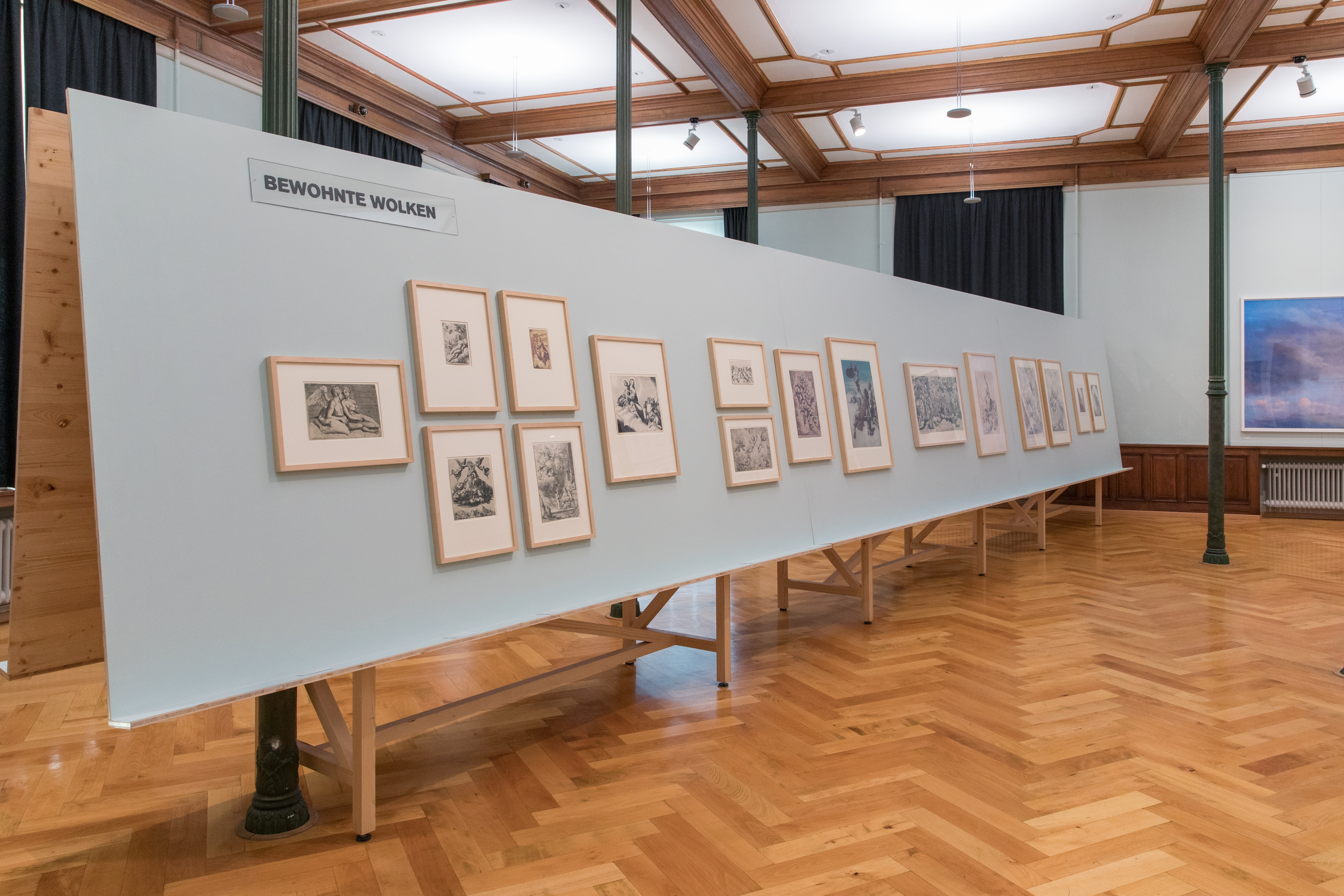

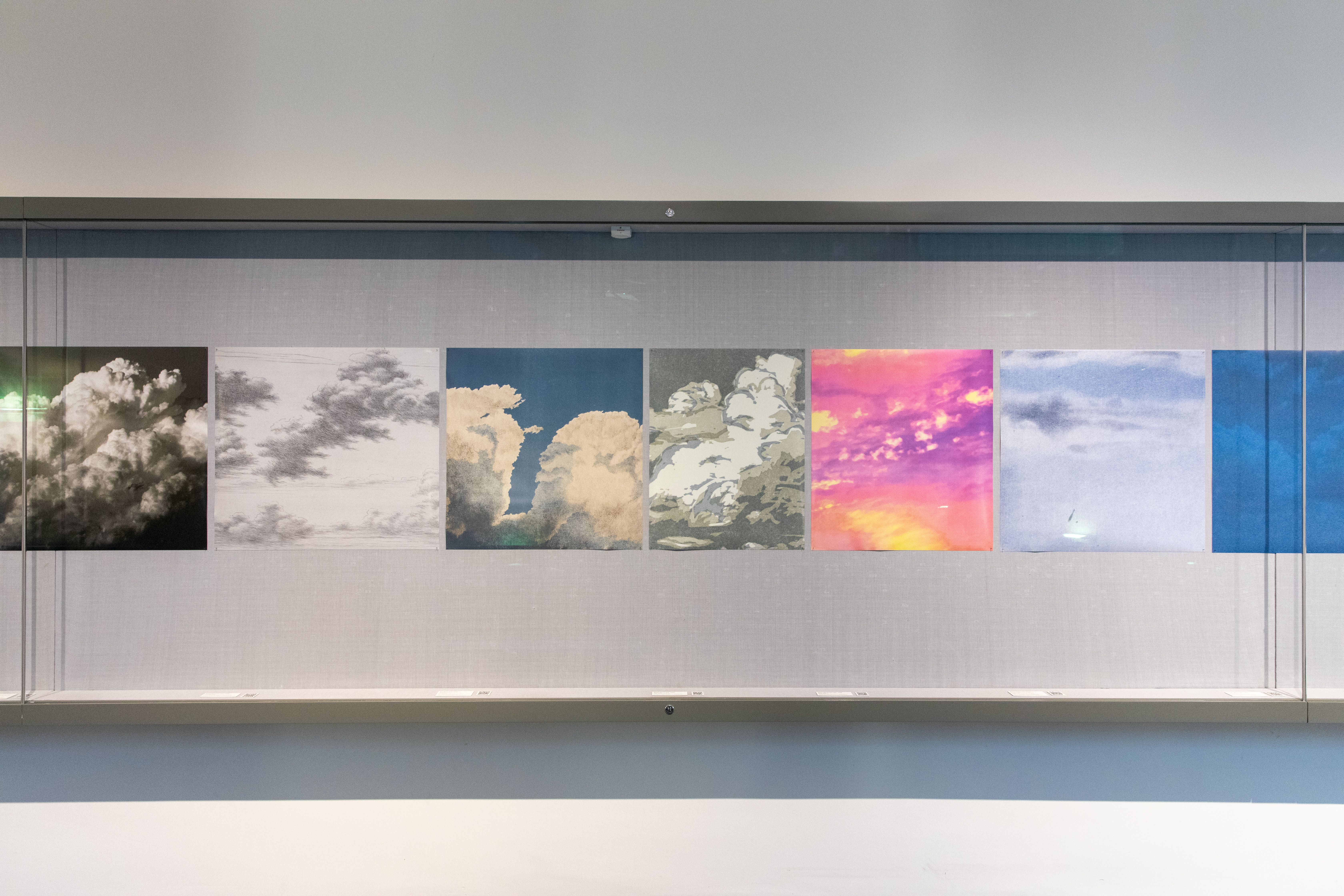
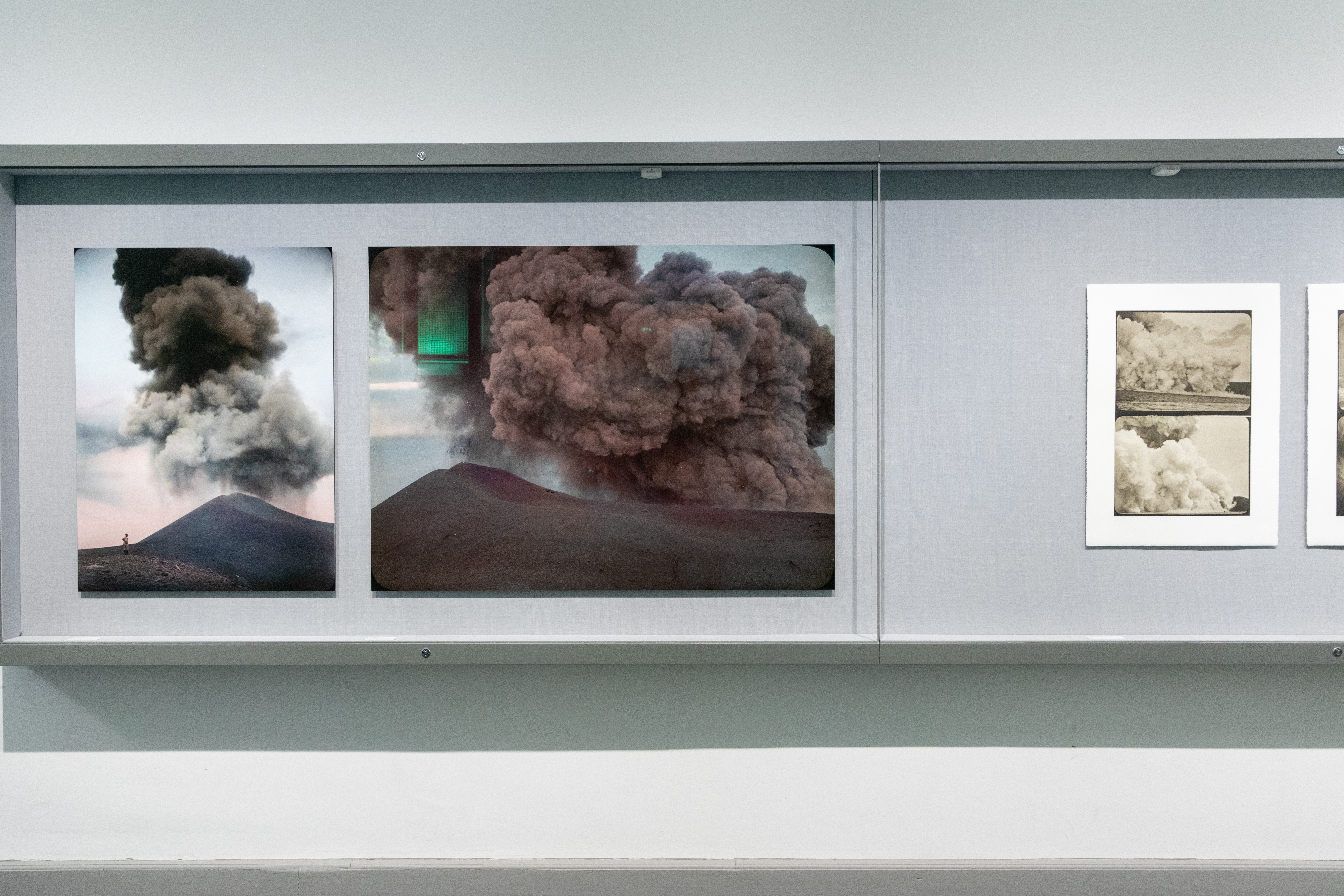
The exhibition “Lill Tschudi. The Excitement of the Modern Linocut” at Graphische Sammlung ETH Zürich in the winter of 2021/2022 can now be seen in slightly amended form at the Universitätsgalerie in Vienna during the autumn of 2023.
This collaborative effort is particularly apt for two reasons: Lill Tschudi (1911-2004), who was born in the Swiss canton of Glarus, went to London in 1929 to attend the Grosvenor School of Art, where she studied linocut printmaking. Her teacher Claude Flight (1881–1955) had been inspired to pursue linocut as an innovative and creative means of expression thanks to the influence of the Austrian painter and art educator Franz Čižek (1865–1946) who taught at the School of Applied Arts, or so-called “Angewandte”, in Vienna. In what became known as the Čižek School, he encouraged his students to experiment with simply cut forms in order to hone their sense of movement. In 1919, after the two had met in person, Flight not only began working with linocut himself, but also incorporated aspects of Čižek’s methods into his own teaching.
Moreover, Lill Tschudi’s lifelong fascination with this technique can also be traced back to her great admiration for the Austrian printmaker, book illustrator and painter of animal life Norbertine Bresslern-Roth (1891–1978), whose colourful linocut prints she had first discovered as a young girl.
In order to bring these parallels to the fore, iconic examples of this artist’s work of ETH’s collection of prints and drawings are complemented in this exhibition by originals from the holdings of the Art Collection and Archives of the University of Applied Arts, Vienna.
An Exhibition by the Art Collection and Archive of the University of Applied Arts, Vienna in cooperation with Graphische Sammlung ETH Zürich
Curatorial team: Stefanie Kitzberger and Robert Müller in cooperation with Alexandra Barcal (Graphische Sammlung ETH Zürich)
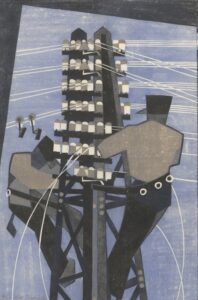
Lill Tschudi
Fixing the Wires, 1932
Colour linoleum cut on Japanese paper
30.2 × 20.2 cm
Graphische Sammlung ETH Zürich
Inv.-Nr. 1933.87
The collection of the Graphische Sammlung ETH Zürich is a unique treasure trove. Founded in 1867 as a classic collection for the purposes of study and teaching, it has since developed into an institution that actively promotes the understanding and awareness of art on paper – far beyond the academic confines of the ETH itself. Today, the Graphische Sammlung ETH Zürich is one of the most wide-ranging art and internationally renowned collections in the whole of Switzerland. It represents the work of major national and international artists – from Albrecht Dürer to Louise Bourgeois, from Rembrandt to Miriam Cahn and from Francisco de Goya to Andy Warhol – alongside the works of young and emerging artists. With some 160,000 works, it offers a unique insight into the history of art from the fifteenth century to the present day.
Until now, external exhibitions tended to focus on individual aspects of the Graphische Sammlung ETH Zürich. Now, for the first time, the Museo d’arte della Svizzera italiana (MASI) in Lugano presents a broader cross-section of this high-calibre collection.
Some 200 works by such well-known artists as Rembrandt, Goya, Picasso, Warhol and Bourgeois can be found in the exhibition. These highlights are a veritable feast for the eyes of any visitor. What is more, they convey a wealth of background information on the context of how art has been produced, used and appreciated down the centuries.
A lavishly illustrated catalogue in German, English and Italian has been published to accompany the exhibition.
Curator: Dr. Linda Schädler, Head Graphische Sammlung ETH Zürich

Albrecht Dürer
Rhinocerus
(The Rhinoceros)
1515
Woodcut and letterpress
24.3 × 30.8 cm
Inv.-Nr. D 13000
Graphische Sammlung ETH Zürich
Countless tales entwine the cultural landscape of Ticino. For centuries, romantic notions of its natural beauty, its Mediterranean climate and its “Italianità” have not only drawn visitors to this canton but also enthralled artists. A constant stream of rich and diverse artistic approaches flow through and shape the cultural landscape of Ticino. Such diversity is due in large part to its unique geographical setting. Situated entirely to the south of the Alps, it has, over the course of centuries, developed a close cultural proximity to Italy, where many artists from Ticino have studied and worked. The rise in tourism to Switzerland during the 18th and 19th centuries has also left its mark on Ticino, making it an increasingly iconic subject of picturesque landscape portrayals. The opening of the Gotthard Tunnel in 1882 provided, for the first time, a rapid and direct link between the regions north and south of the Alps, which led to increasing travel and connections between artists. As a result of this newfound mobility between north and south, the region became a of centre of creative activity and a meeting point for a wide range of personalities and positions, as evidenced by the foundation of such diverse artistic groups as “Der Grosse Bär” and “I Solidali”, or the activities relating to the artists’ colony of Monte Verità.
Now, the Graphische Sammlung ETH Zürich presents a selection from its own holdings showcasing the highlights of creative activity in and around the canton of Ticino from the 17th century to the present day. On the one hand, the exhibition references Ticino as a motif: in landscape portrayal, as a hub of artistic production and as an important element in the lives of artists. On the other hand, Ticino is referenced as a cultural space that has provided a base for artists, forming a meeting place for encounters between a wide range of different attitudes and approaches. The exhibition presents works by Ticino artists and by others with an affinity to the region. The works shown range from the ink drawings of Pier Francesco Mola (1612–1666) and the landscapes of Ludwig Hess (1760–1800) to works by Hans Arp (1889–1966), Imre Reiner (1900–1987), or Anita Spinelli (1908–2010), as well as prints by Mark Tobey (1890–1976) and Flavio Paolucci (*1934) produced by the Lafranca workshop, and even architectural designs by Mario Botta (*1934).
Curated by Saskia Goldschmid, Graphische Sammlung ETH Zürich
Flyer
Press release
Figures and Captions
Brochure

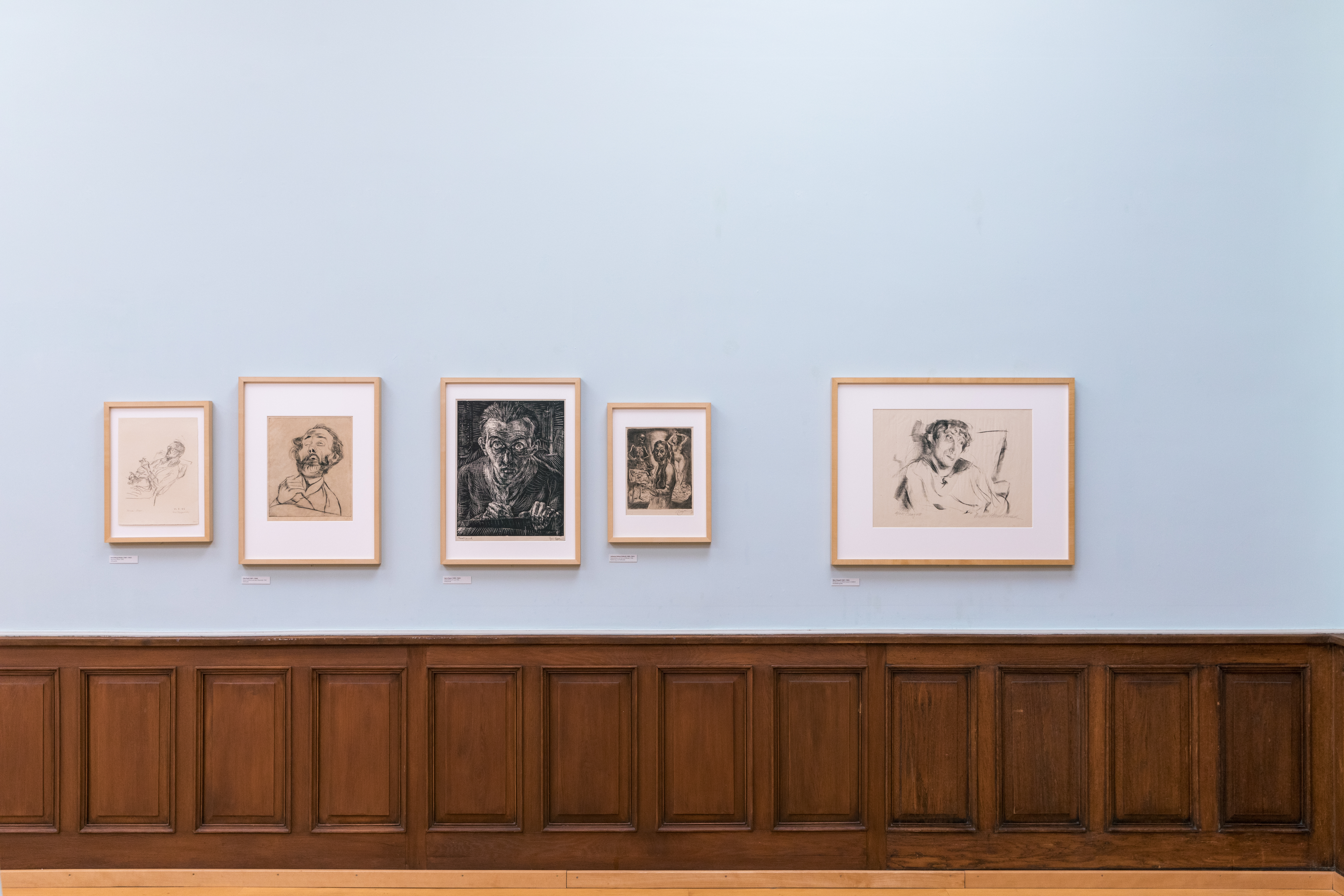


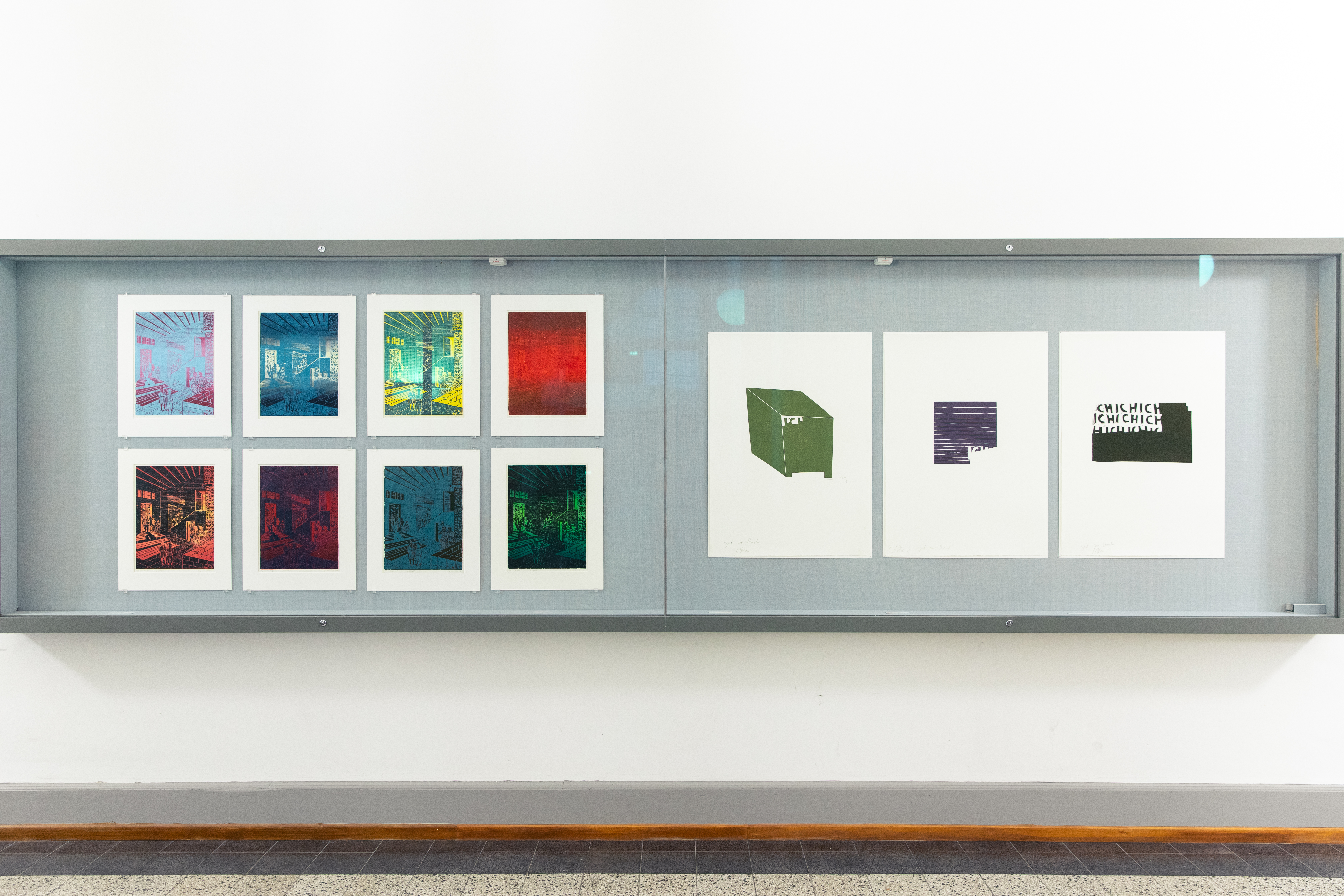
These days, everyone is talking about such topics as globalisation, climate change and the anthropocene. These are issues that also have a fundamental impact on how the relationship between humankind and the plant world is perceived or even reinterpreted. The intervention in Vaduz examines that relationship in terms of a “Politics of Plants”, presented in the form of an exhibition within the exhibition. The focus is on drawing boundaries, questioning the attributes of the self and the other, asking whether nature or culture is the dominant force, while taking into consideration economic interests, speculation and the geopolitical dimensions of natural resources.
From the holdings of Graphische Sammlung ETH Zürich, a fascinating pot-pourri of artistic positions have been put together – most of them contemporary – that address these topical issues. From the critical commentary of Melanie Smith (b. 1965), whose series “Finlandia” sheds light on Henry Ford’s failed attempt to build a western-style rubber factory in Brazil’s Amazonian rainforest, to the enquiring approach of Sebastian Utzni (b. 1981), whose “Herbarium Turicum” puts an artistic slant on the notion of the neophyte, by asking when a non-native plant becomes established and accepted as a native species. And finally, there are also the “shifting topographies” collages by Monica Ursina Jäger (b. 1974) in which the artist lends expression to the dichotomy between natural and urban processes. All of these, and others, offer a richly faceted insight into the “Politics of Plants”.
Joint project in collaboration with Kunstmuseum Liechtenstein, Vaduz
Curator: Dr. Linda Schädler, Head Graphische Sammlung ETH Zürich
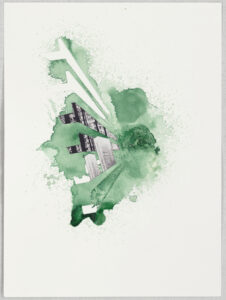
Monica Ursina Jäger
Shifting topographies. 10, 2018
Chlorophyllin, watercolour, gum arabica, graphite, papercut and collage (postcard, adhesive tape) on vellum.
28.1 × 20.8 cm
Graphische Sammlung ETH Zürich
Inv.-No. 2020.356
When it comes to the canon of art history, there are, to this very day, some artists who have fallen through the net. One of them is undoubtedly Friedl Dicker-Brandeis (1898 –1944). Even though she created an impressive and wide-ranging body of work in the first half of the twentieth century, comprising fine and applied arts as well as stage sets, architecture and design. Influenced by her studies at the Kunstgewerbeschule in Vienna, Johannes Itten’s private school and the Bauhaus in Weimar, Dicker-Brandeis worked in a variety of media and genres. Her work reflects her reform-oriented mindset as well as her interest in music and writing. What stands out, as ever, is her ability to straddle the formal aspects of these diverse media.
While Dicker-Brandeis’ work has been attracting increasing attention throughout Europe since the 1990s, it has never actually been presented in a solo exhibition in Switzerland. Now this gap can at last be bridged, thanks to the uniquely large holdings of her works in the Collection and Archive of the University of Applied Arts Vienna. The exhibition presents the full spectrum of Friedl Dicker-Brandeis’ art,
illuminating her sojourns in Vienna and Berlin, in exile and as a deportee. Like so many of her generation, Dicker-Brandeis was swept from the history of modern art for decades. This is due in part to the destruction of her architectural work and to her persecution and murder as a left-wing, Jewish artist. This first ever solo exhibition in Switzerland places the focus on the outstanding quality of her artistic oeuvre.
The exhibition is accompanied by a richly illustrated catalogue published by Verlag De Gruyter (DE / ENG). CHF 49.95 / EUR 49.95.
In collaboration with

Curated by Dr Linda Schädler, Head of the Graphische Sammlung ETH Zürich, in cooperation with Cosima Rainer and Stefanie Kitzberger, Collection and Archive of the University of Applied Arts Vienna, and Robert Müller, Artist
The exhibition is under the patronage of the Austrian Ambassador to Switzerland, Maria Rotheiser-Scotti.
With kind support of:
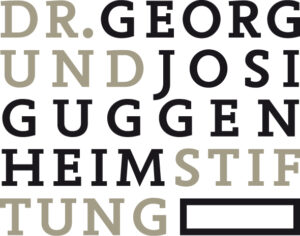
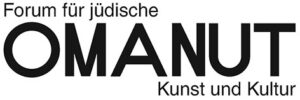


And to those funding bodies who wish to remain anonymous.
Flyer
Press release
Figures and Captions

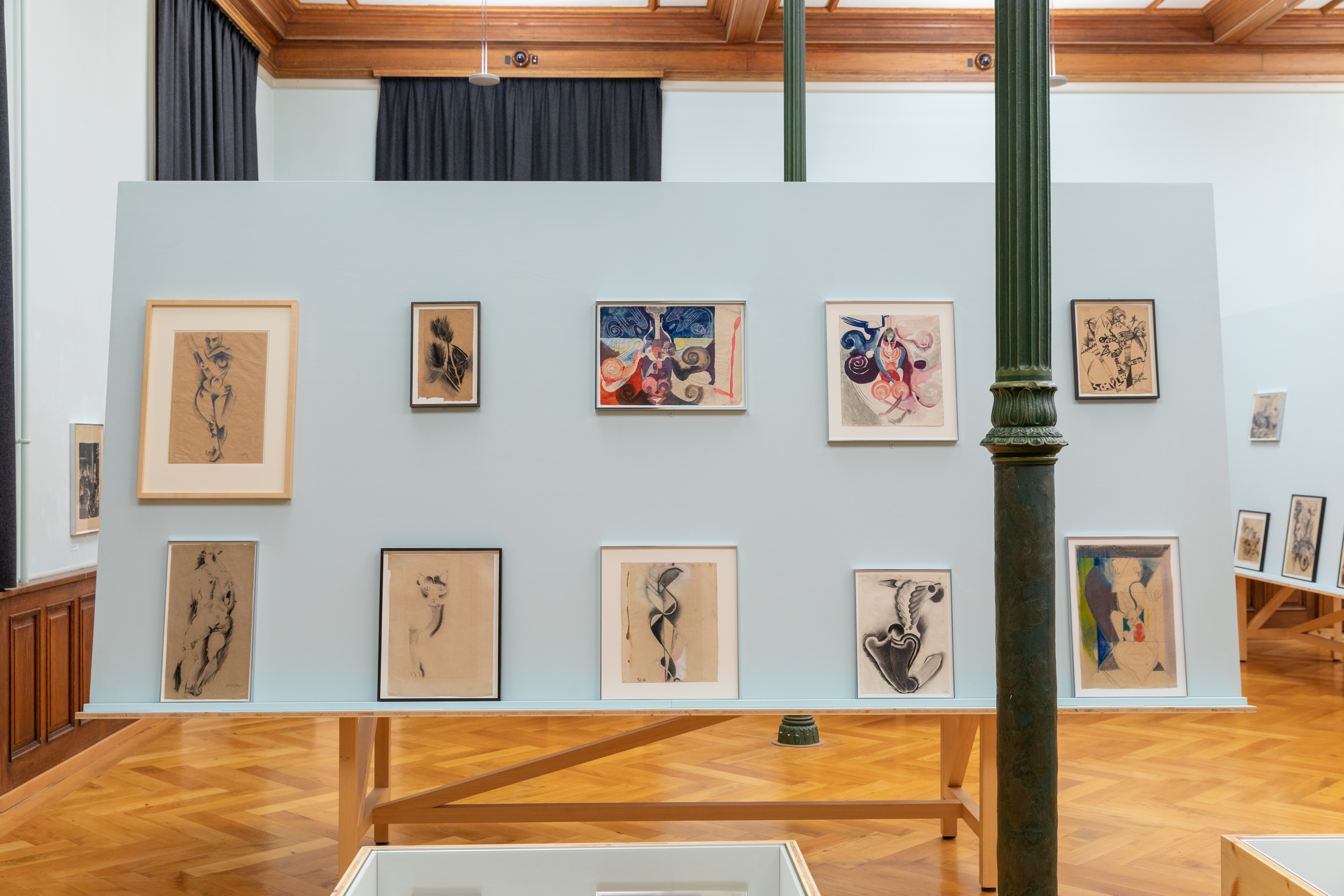

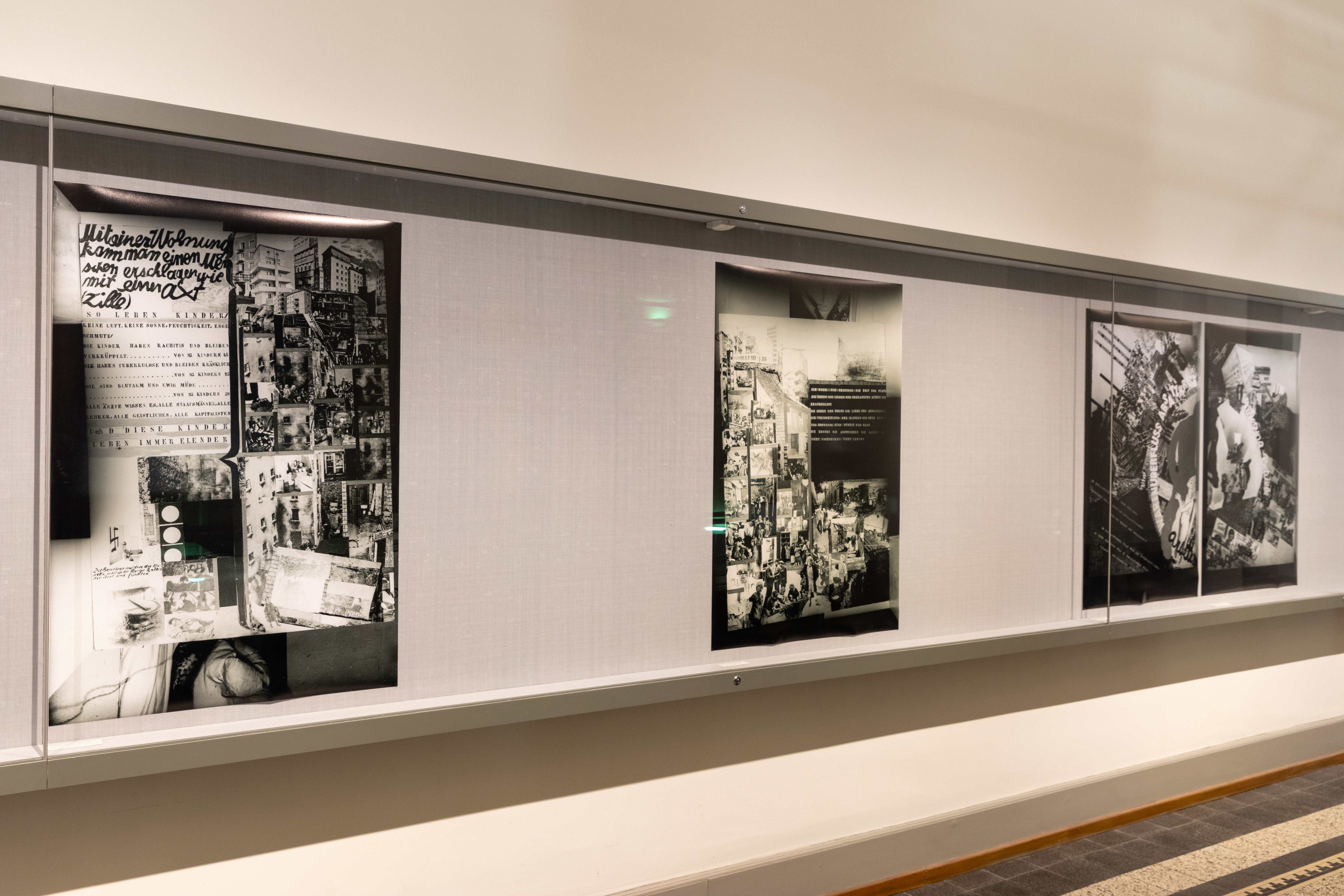

Thomi Wolfensberger’s printing workshop in Zurich is one of the leading addresses for lithography, renowned far beyond the country’s borders. What exactly happens when artists enter into a dialogue with the printer there? An interdisciplinary research team spent three years observing the learned as well as intuitive processes, working steps and manual techniques involved in the production of art prints, and documented these in a variety of ways. The study was conducted within the scope of the SNF project «Hands-on. Documentation of Artistic-technical Processes in Printing» (2018–2021) by Zurich University of the Arts (ZHdK)—conceived by Christoph Schenker, Mara Züst and Michael Günzburger. In this context, the dexterity of the three participating artists, Dominik Stauch, Sabine Schlatter and Michael Günzburger, came under the closest scrutiny.
The exhibition at the Graphische Sammlung now presents a selection of the wide resulting range of artefacts, from templates and pull-out sheets to stencils, colour tests and proofs as well as the edition prints. Everything has been inventoried and archived in great detail. Furthermore, the project made it possible to look at the entire printing process from many different perspectives. The research team has not only recorded the process by way of cameras and ethnographic notes, but has even developed a specific vocabulary to describe the individual processes involved. Finally, all the data collected has been fed into a user interface, providing the public with digital access to the entire inventory of the workshop with all its machinery, instruments and materials. And last but not least, visitors even have the opportunity of exploring some of the archived materials themselves and discussing their observations. A veritable School of Observation is intended to foster a fuller understanding and insights into key aspects of the technical and creative process. It might even reveal some of the secrets of printing!
Curatorial Team:
Alexandra Barcal, Graphische Sammlung ETH Zürich, Prof. Christoph Schenker, formerly head of the Institute for Contemporary Art Research, ZHdK
With kind support of:
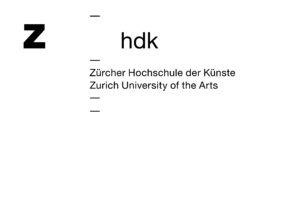
Flyer
Press release
Figures and Captions
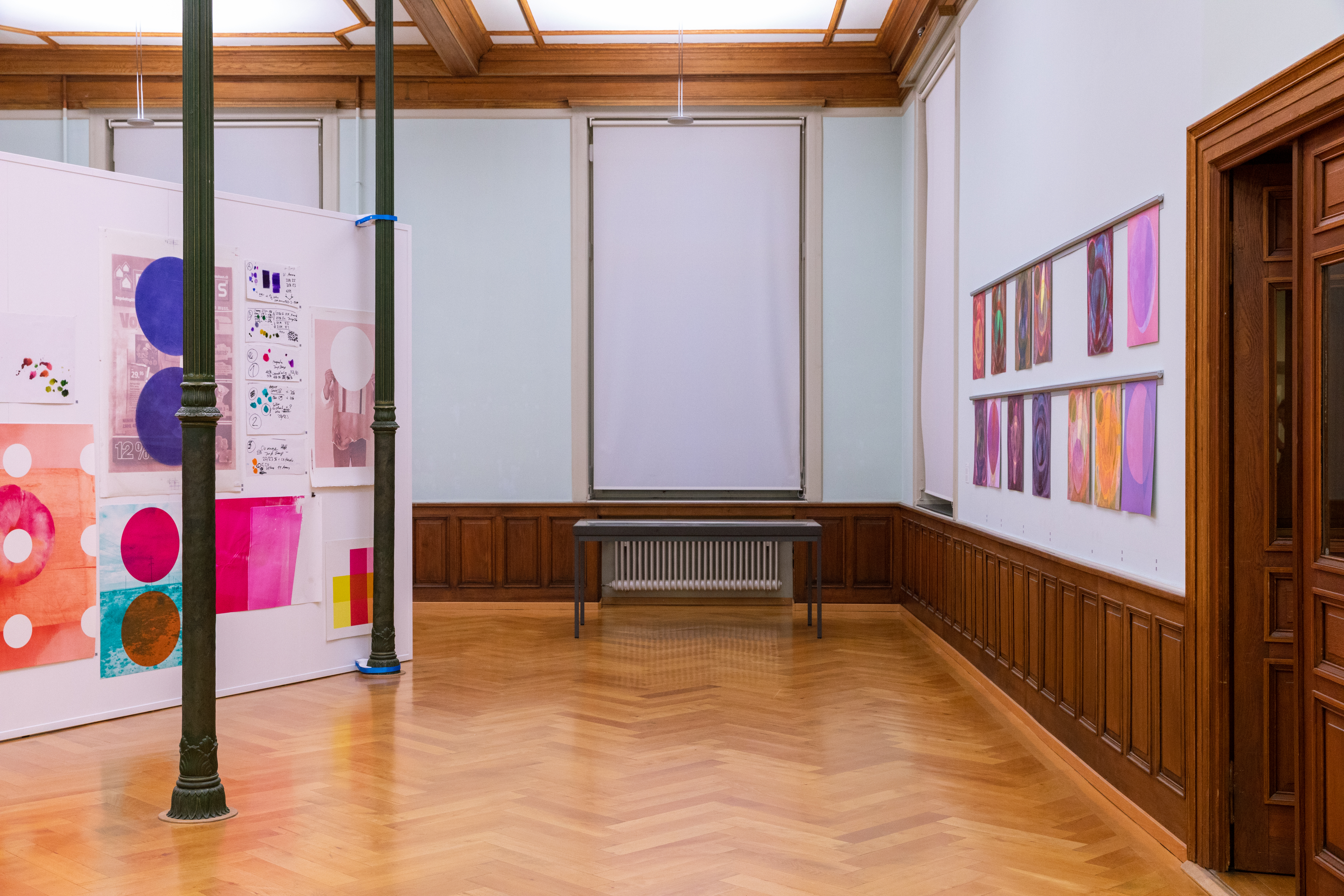
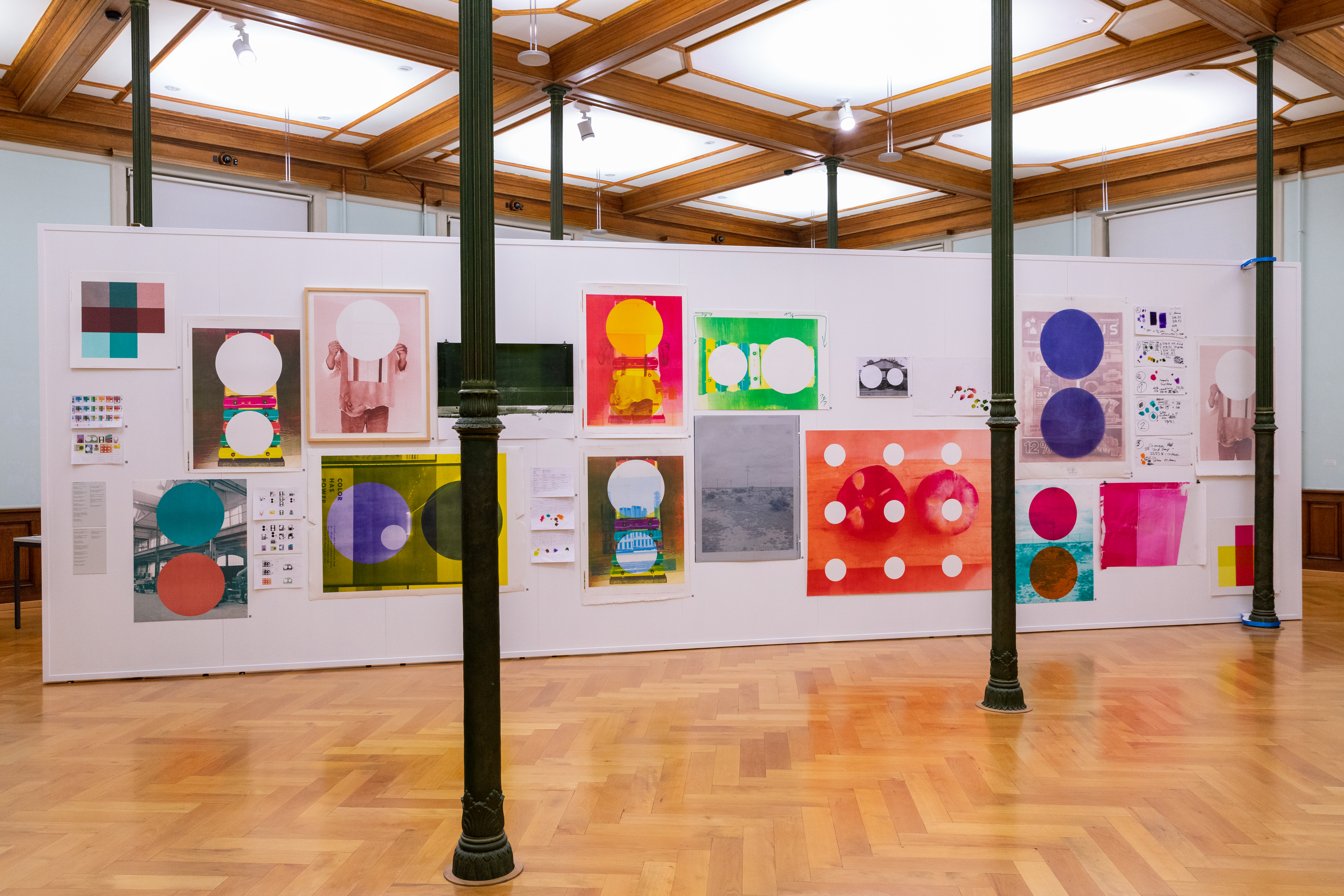
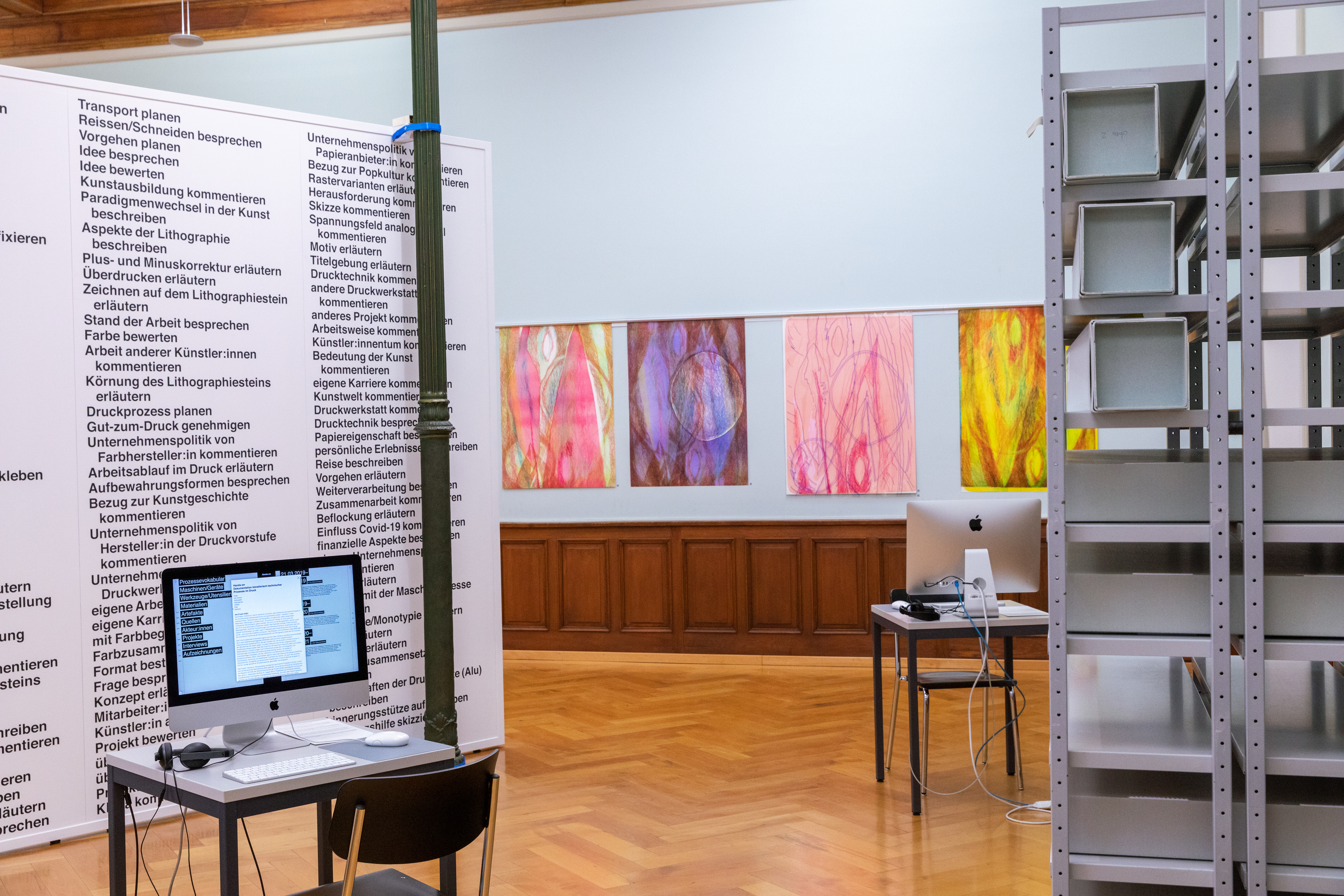

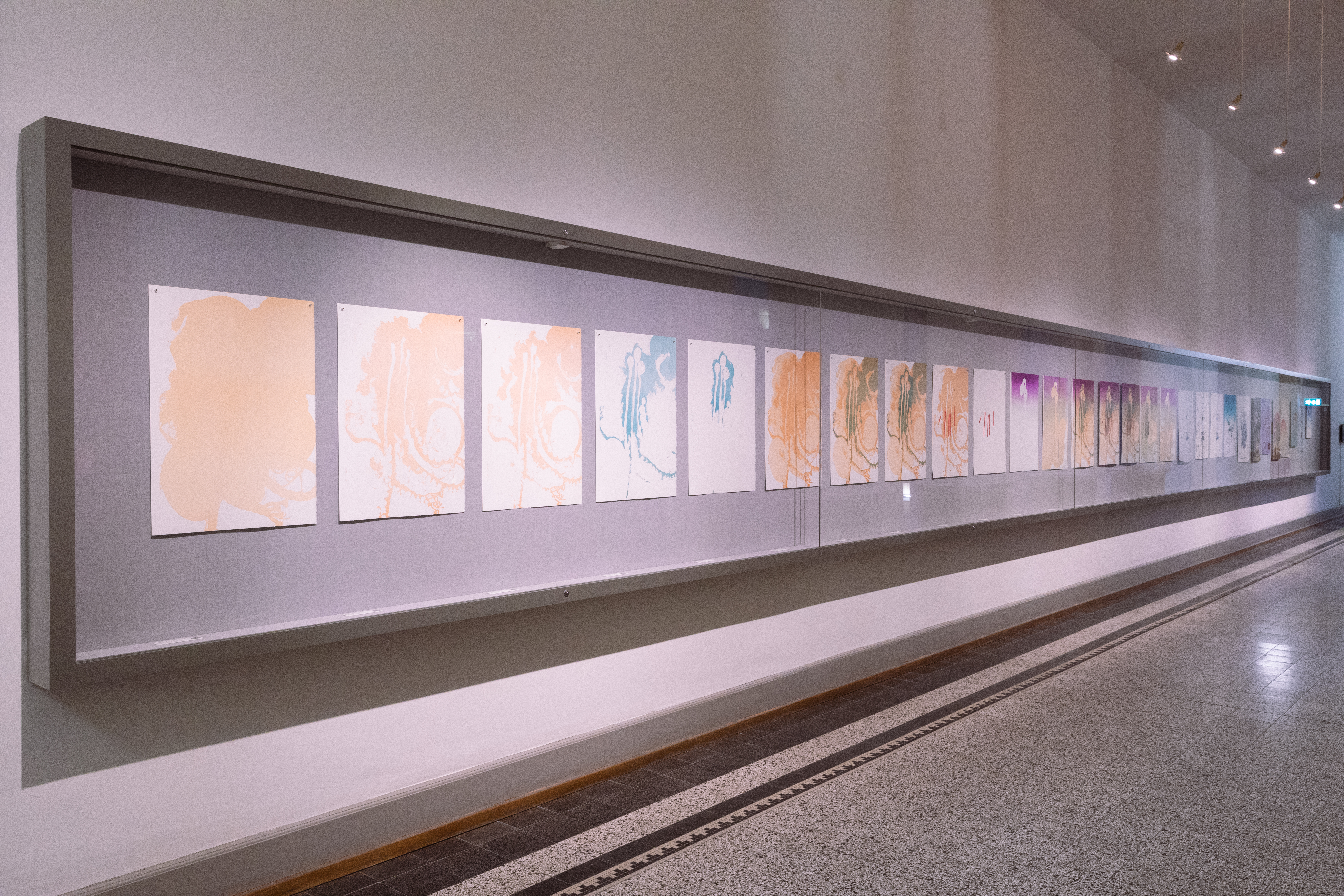
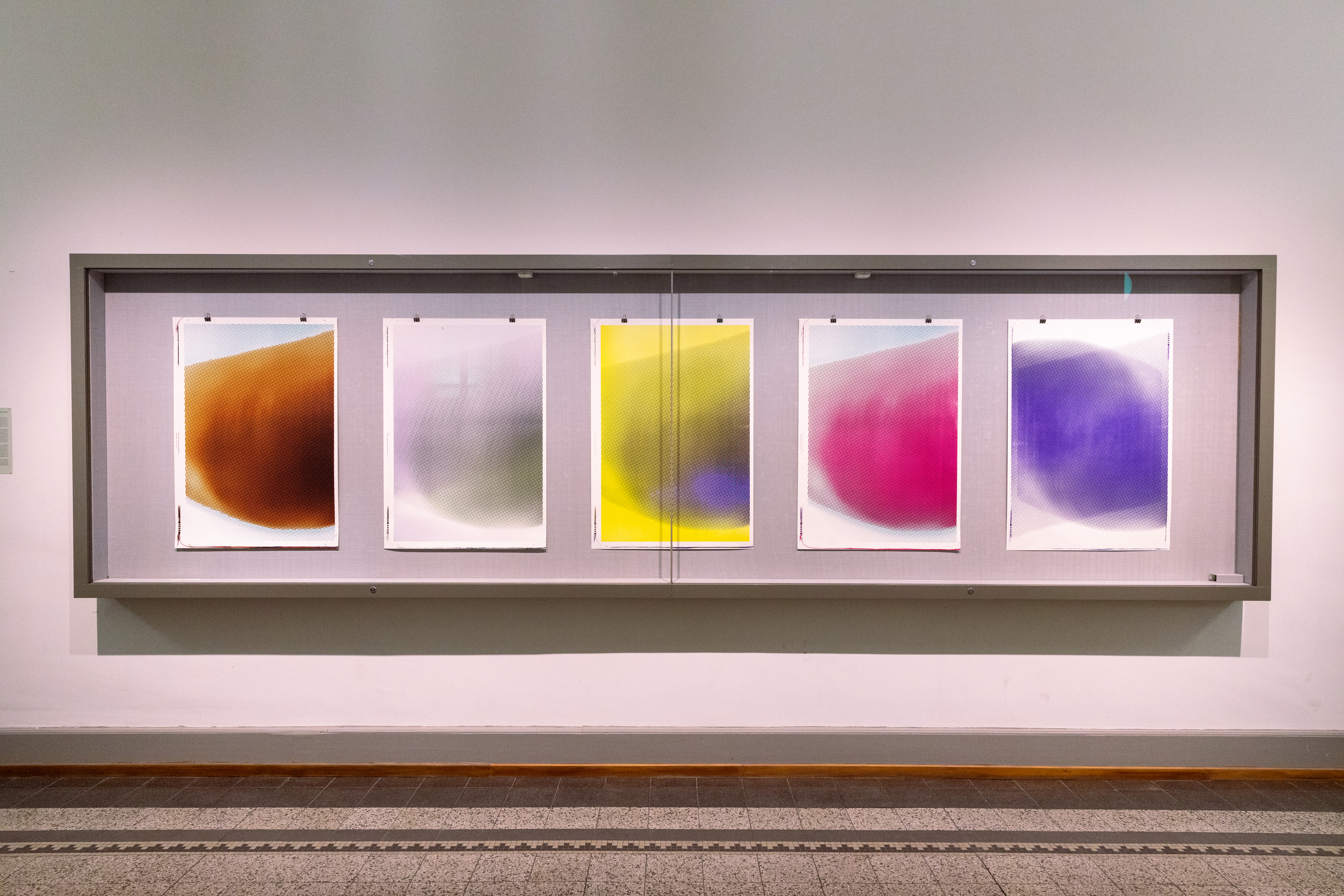
As an artistic medium, Japanese and Chinese coloured woodcuts are remarkable for their immediate aesthetic appeal. Their delicately curving lines, idiosyncratically juxtaposed areas of brilliant color, disarming clarity of form, and bold compositions exert a fascination that is undeniable.
The Graphische Sammlung ETH Zürich was one of the earliest collections in Switzerland and to acquire East Asian works on paper and thus pursues a global art historical vision. These holdings have been exhibited in the collection’s own spaces only once before: on that occasion, in 1904, woodcuts by Japanese masters were shown alongside works by the European heroes of this printmaking medium, above all Albrecht Dürer.
Now, 118 years later, the crucial significance of Japanese coloured woodcuts for the birth of modern art is widely recognised. The present exhibition thus shows East Asian works on paper together with late nineteenth – and early twentieth-century European master prints from the collection of the Graphische Sammlung, including works by Edouard Manet, Edgar Degas, Henri de Toulouse-Lautrec, Emil Orlik, and Martha Cunz.
The heterogeneity of the East Asian holdings of the Graphische Sammlung offers an opportunity to show very different facets of Japanese and Chinese printmaking: from the famous landscapes of Utagawa Hiroshige (1797–1858), to the beautiful women of Utamaro Kitagawa (1753–1806) and influential manga volumes of Katsushika Hokusai (1760–1849), to images of actors, detailed studies of plants and insects, and entertaining shunga prints with their often surprisingly explicit erotic content.
The exhibition is accompanied by a full-length catalogue published by Michael Imhof Verlag.
Curated by Susanne Pollack, Graphische Sammlung ETH Zürich, and Hans Bjarne Thomsen, Abteilung für Kunstgeschichte Ostasiens, University of Zurich
With friendly support:
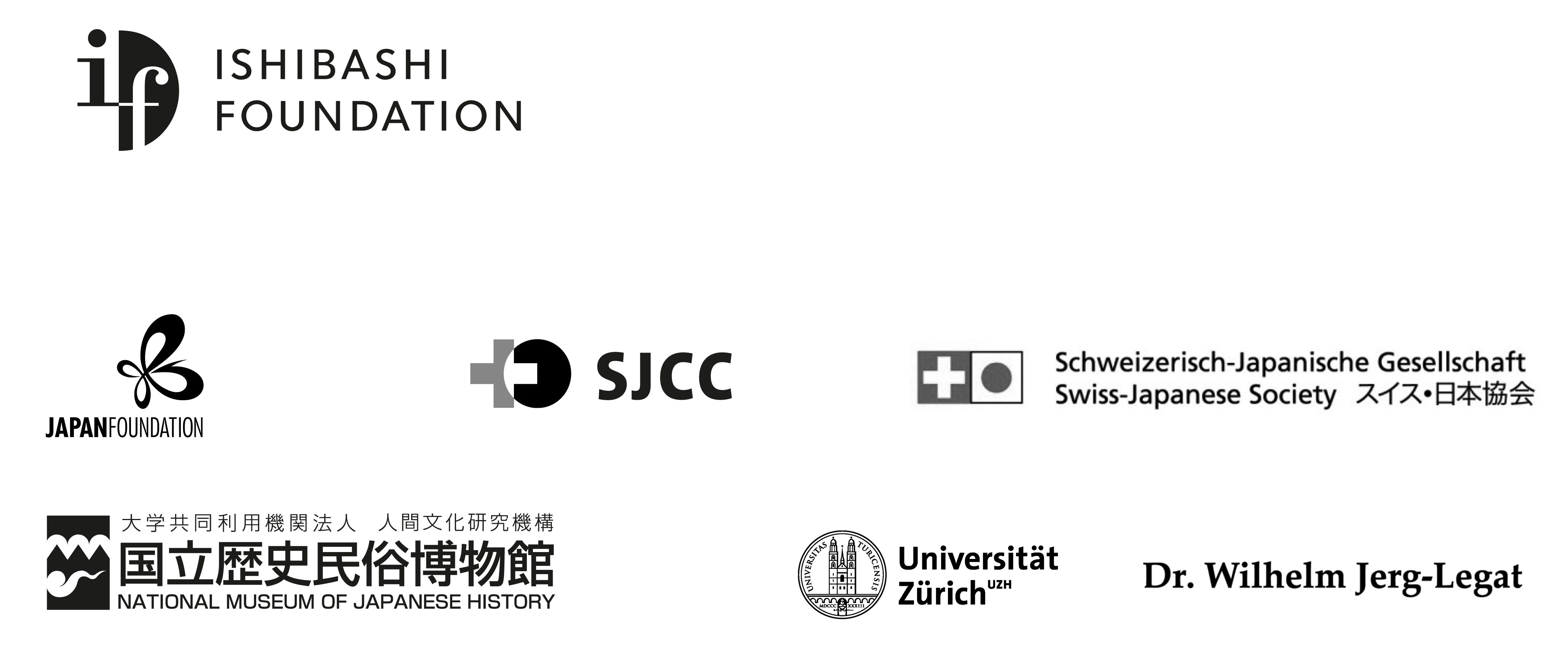

Installation view exhibition “Lines from East Asia. Japanese and Chinese Art on Paper”,
© Graphische Sammlung ETH Zürich, photo: Livio Baumgartner
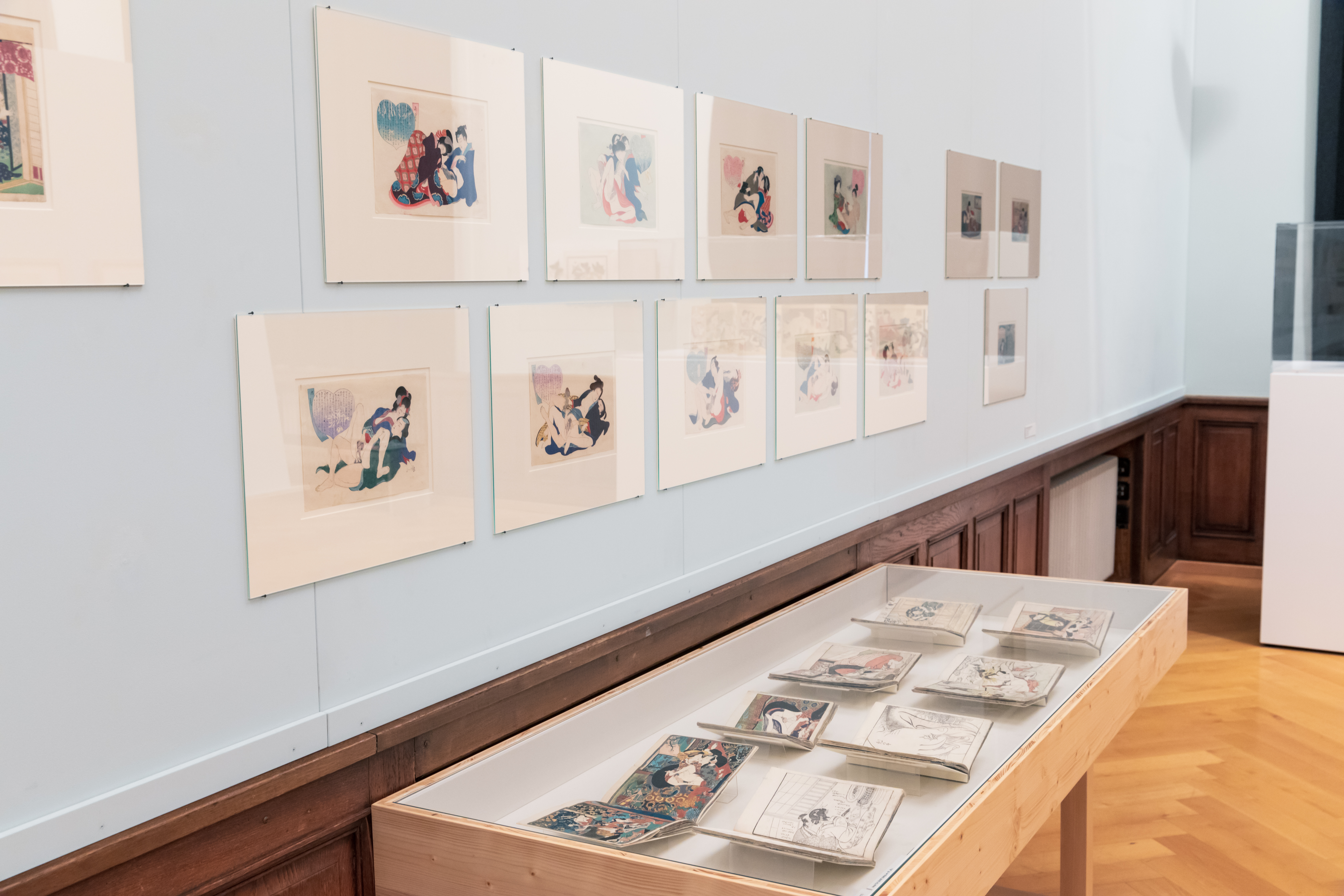
Installation view exhibition “Lines from East Asia. Japanese and Chinese Art on Paper”,
© Graphische Sammlung ETH Zürich, photo: Livio Baumgartner
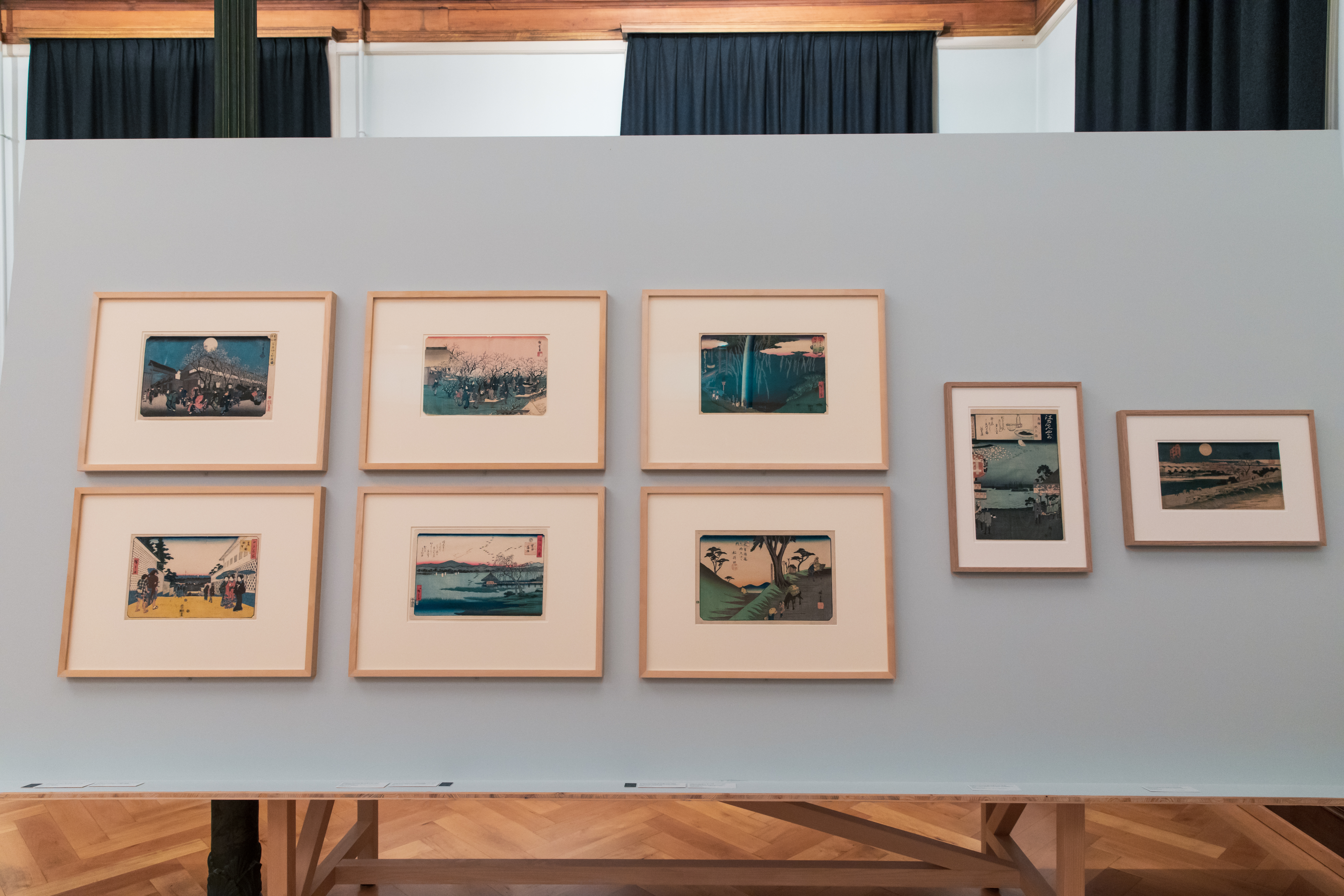
Installation view exhibition “Lines from East Asia. Japanese and Chinese Art on Paper”,
© Graphische Sammlung ETH Zürich, photo: Livio Baumgartner
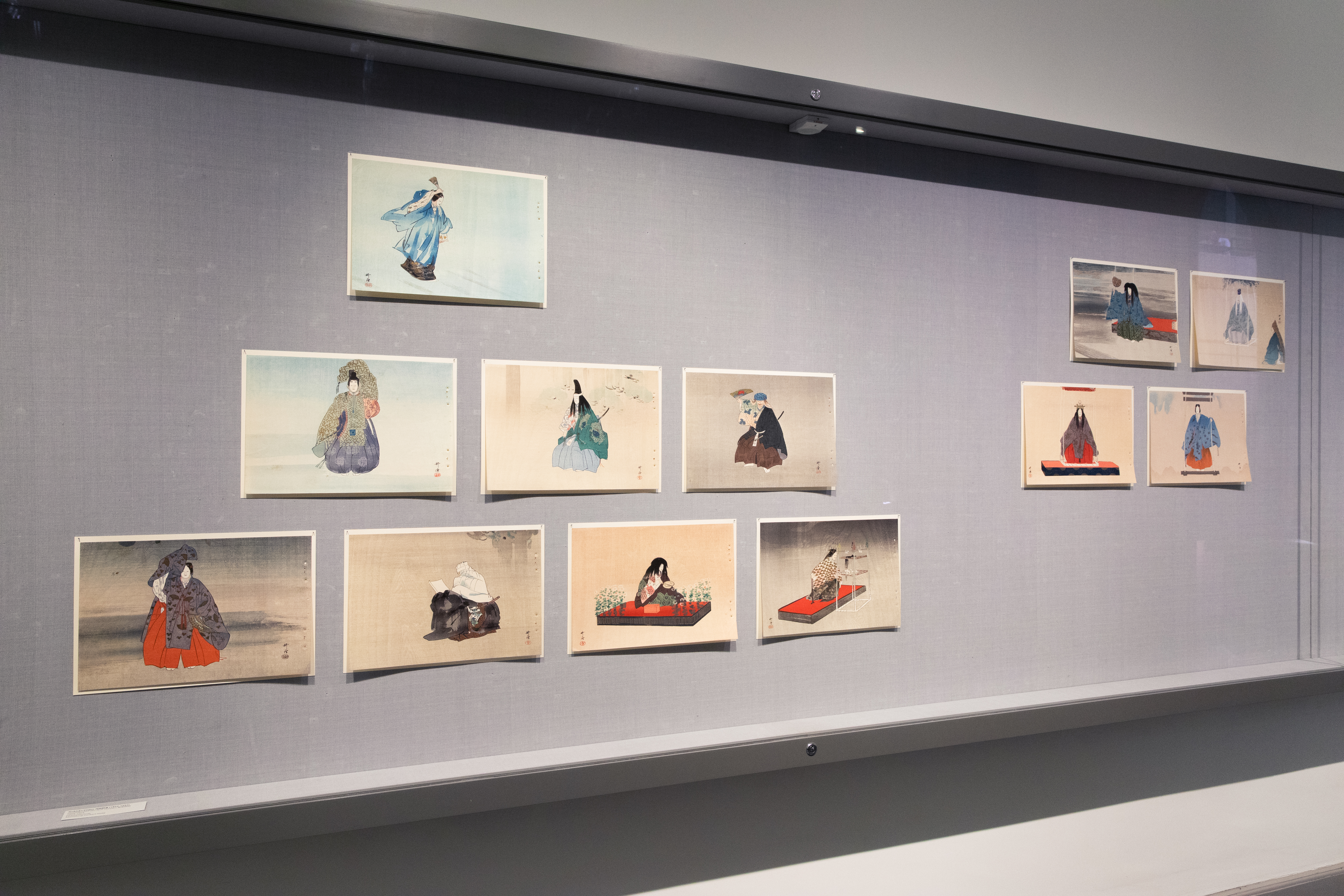
Installation view exhibition “Lines from East Asia. Japanese and Chinese Art on Paper”,
© Graphische Sammlung ETH Zürich, photo: Livio Baumgartner
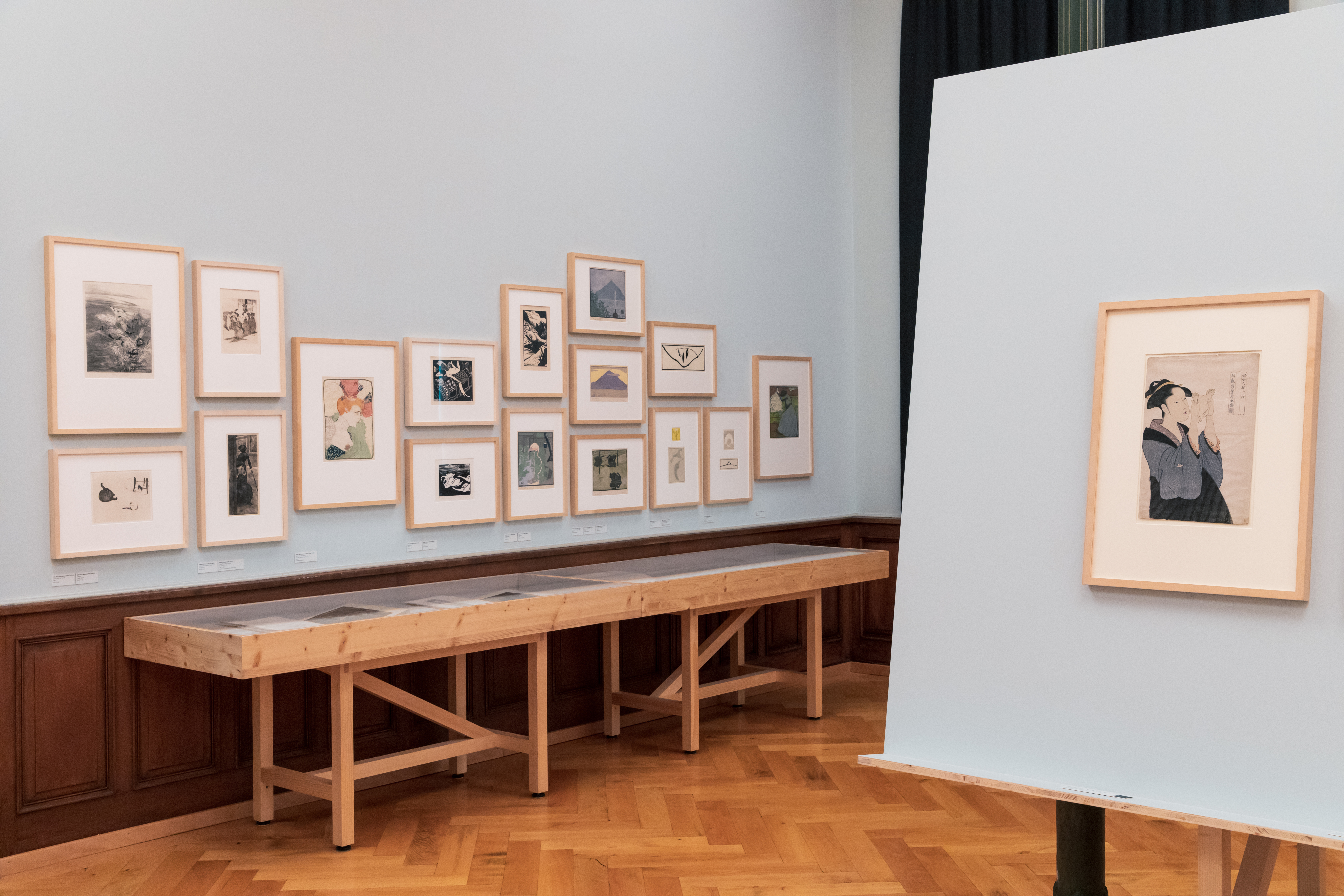
Installation view exhibition “Lines from East Asia. Japanese and Chinese Art on Paper”,
© Graphische Sammlung ETH Zürich, photo: Livio Baumgartner
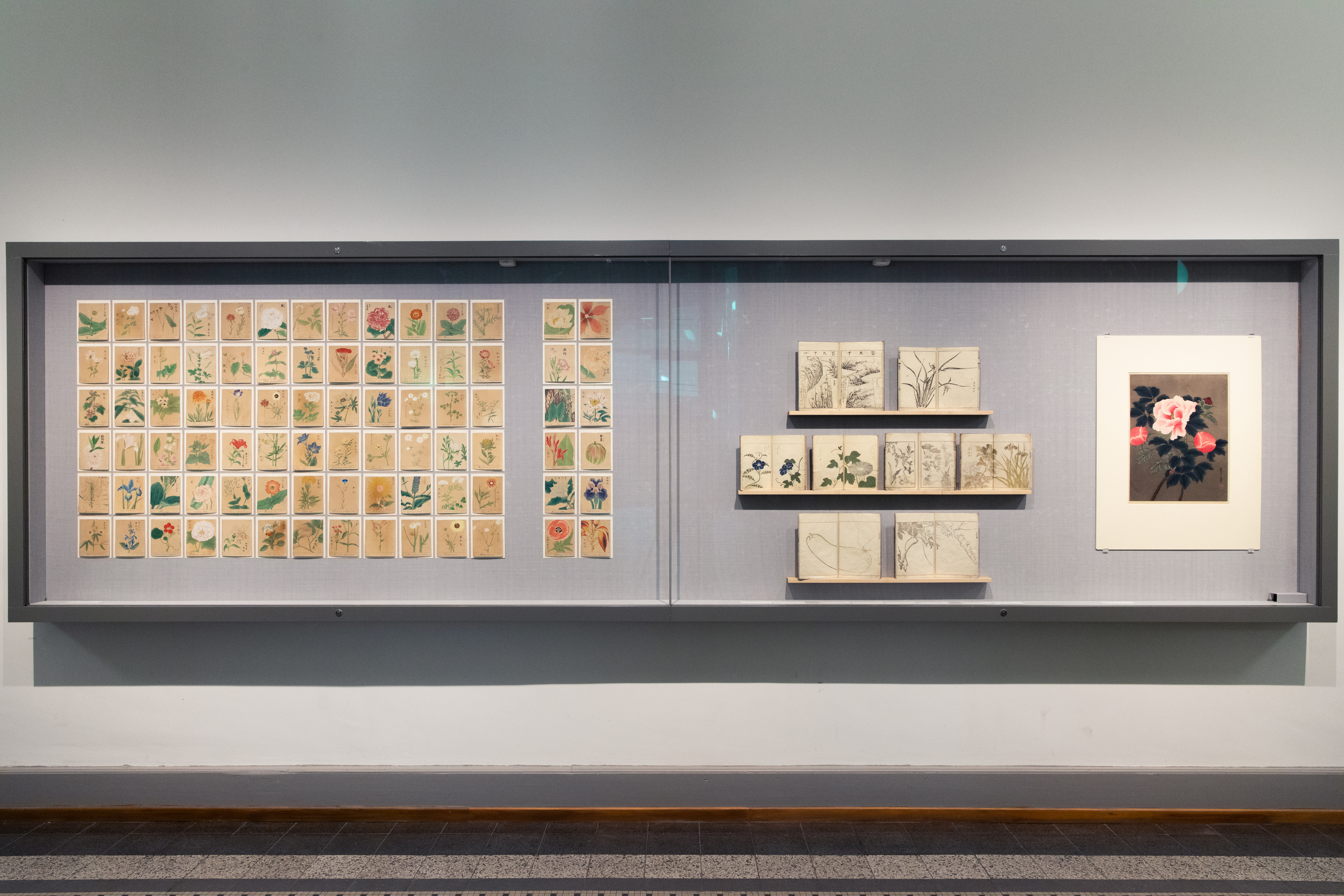
Installation view exhibition “Lines from East Asia. Japanese and Chinese Art on Paper”,
© Graphische Sammlung ETH Zürich, photo: Livio Baumgartner
Blue is the colour of the Earth seen from outer space. Blue is an extremely hard synthetic dye to manufacture. Blue is the colour of cyanography, and the colour blue has become a symbol for the Blue Banana geo-economic theory. When the Swiss artist Daniela Keiser (b. 1963) engages with this colour, or rather, the phenomenon ‘blue’, all these factors resonate in some form or other.
This solo exhibition at the Graphische Sammlung ETH Zürich is dedicated to a— nota bene blue—group of works that marks an important milestone for Keiser. The starting point for her project is her long-term interest in cyanography—a photographic process that generates blue-tinted prints. Keiser reactivated a process from the infancy of photography in the Here and Now. In a multi-step process, she creates cyanotypes from found photographs and digital shots of her own. This specific photographic process is also a trigger of sorts for various motivic and thematic hooks in Keiser’s project such as the shapes of landscapes, settlement structures, agricultural trade and colour per se. An important part is played in all of this by the ‘Blue Banana’ theory, which was developed in 1989 and concerns the densely populated region stretching from Manchester to Milan that has become an active, dynamic zone thanks to its global interconnectedness. Fascinated by this theory Keiser sought out NASA photographs of the Earth taken in outer space, in which this densely populated region is identifiable by bright patches of light. She herself also travelled to the outer limits of this economically prosperous zone and photographed locations that are characterised by one or other of two types of geological structure: basalt columns or flysch. She photographed Panská skála in the Czech Republic, the Giant’s Causeway in Northern Ireland, regions in Northern Spain and in Southern France, and transformed these images into cyanotypes. This physical journey led to a curatorial concept that has produced a real-life response to those various places. At the same time as the main exhibition is on show at the Graphische Sammlung ETH Zürich, specific interventions will be presented in Belfast and Dresden. This multinational cooperation is complemented by a richly illustrated publication.
A cooperation between the Graphische Sammlung ETH Zürich, Dr Linda Schädler, and the Kupferstich-Kabinett, Staatliche Kunstsammlungen Dresden, Dr Stephanie Buck and Dr Björn Egging, and the Ulster Museum, Belfast, Anna Liesching.
Curator: Linda Schädler, Head, Graphische Sammlung ETH Zürich
With friendly support:
![]()
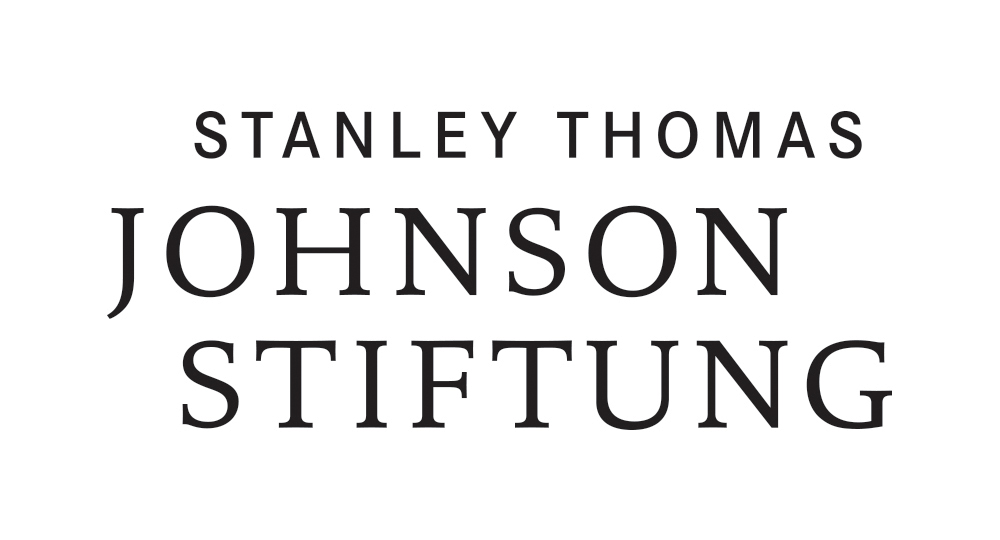

Ernst und Olga Gubler-Hablützel Foundation
Erna und Curt Burgauer Foundation

Installation view exhibition “Blue Links. Cyanotypes. Daniela Keiser”,
© Graphische Sammlung ETH Zürich, photo: Livio Baumgartner
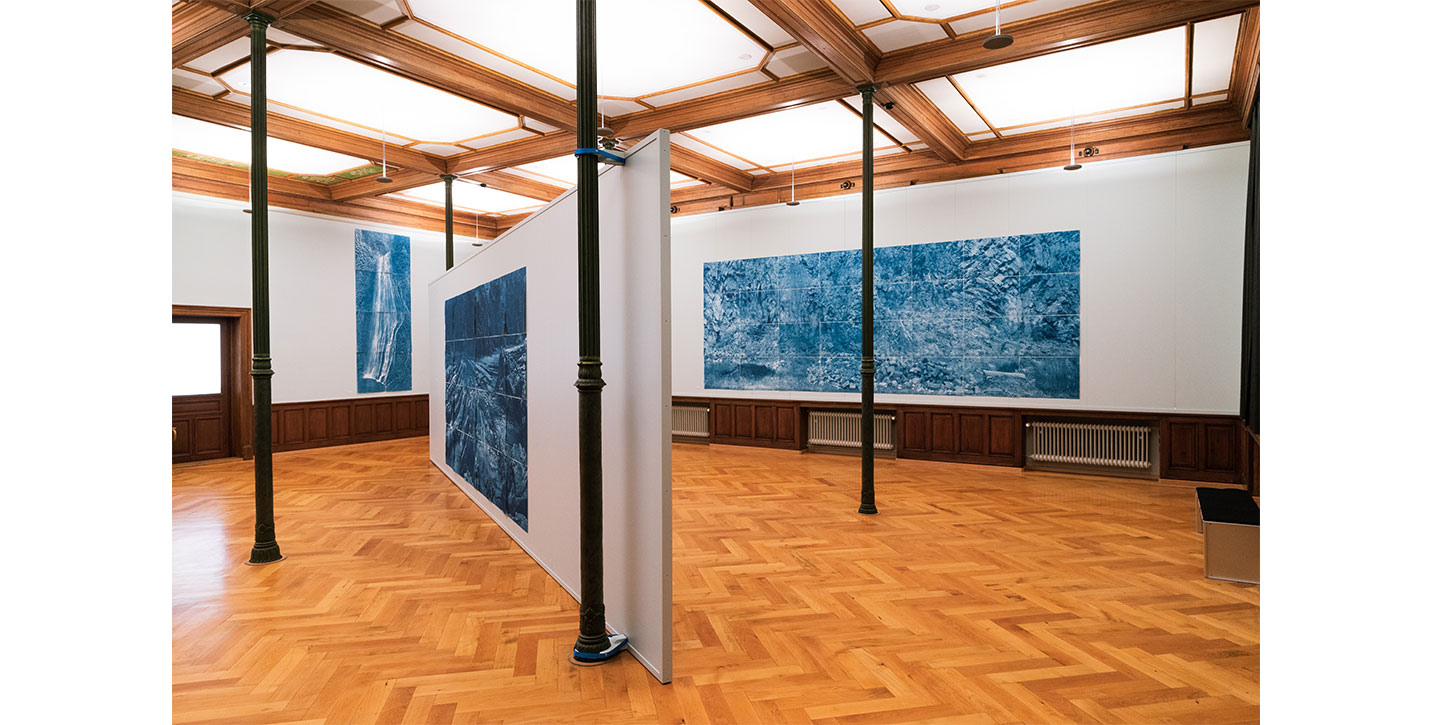
Installation view exhibition “Blue Links. Cyanotypes. Daniela Keiser”,
© Graphische Sammlung ETH Zürich, photo: Livio Baumgartner
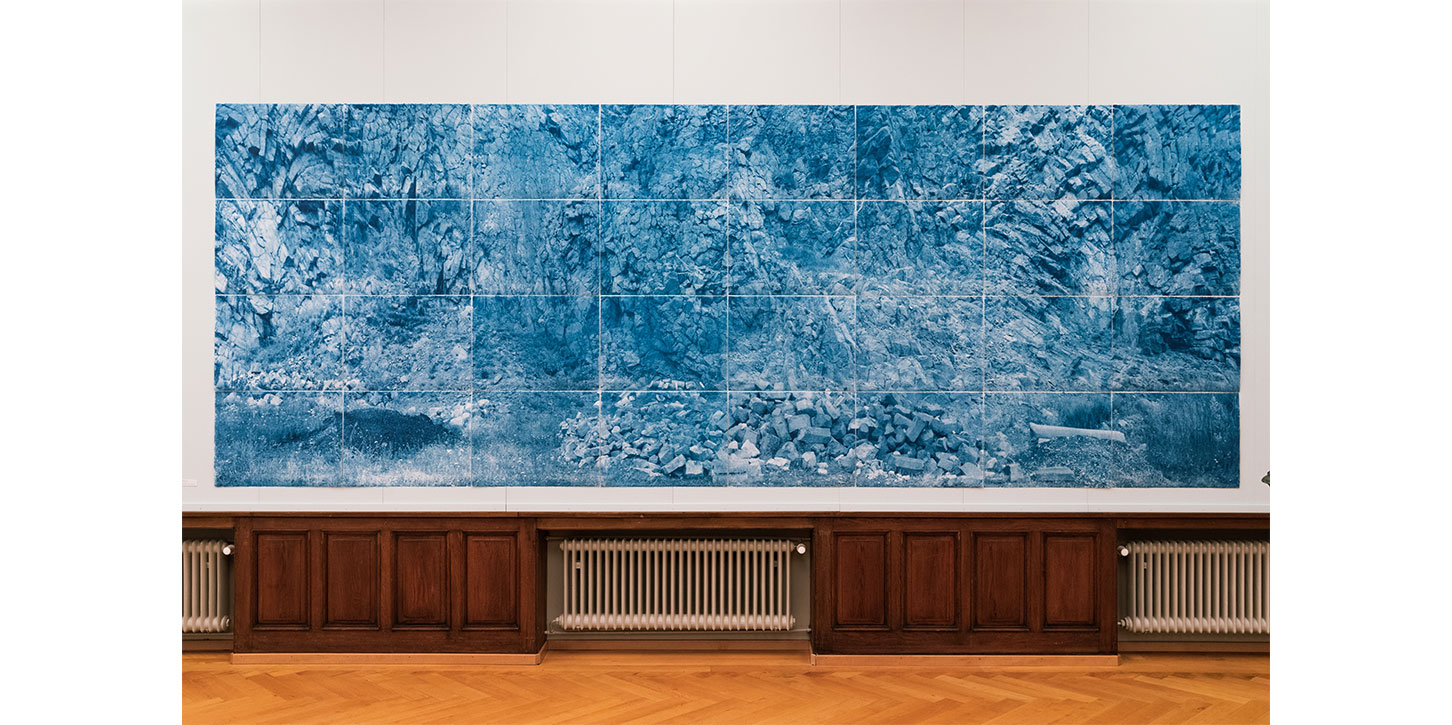
Installation view exhibition “Blue Links. Cyanotypes. Daniela Keiser”,
© Graphische Sammlung ETH Zürich, photo: Livio Baumgartner
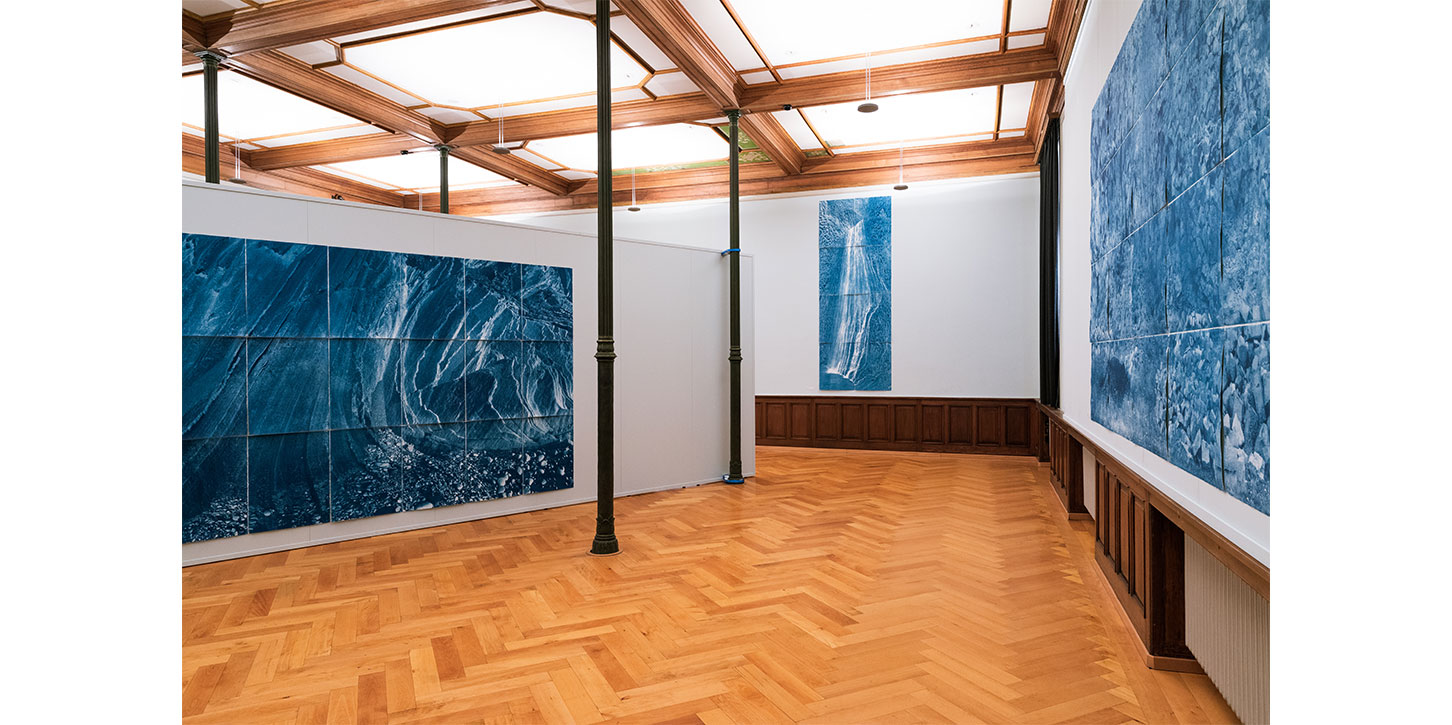
Installation view exhibition “Blue Links. Cyanotypes. Daniela Keiser”,
© Graphische Sammlung ETH Zürich, photo: Livio Baumgartner
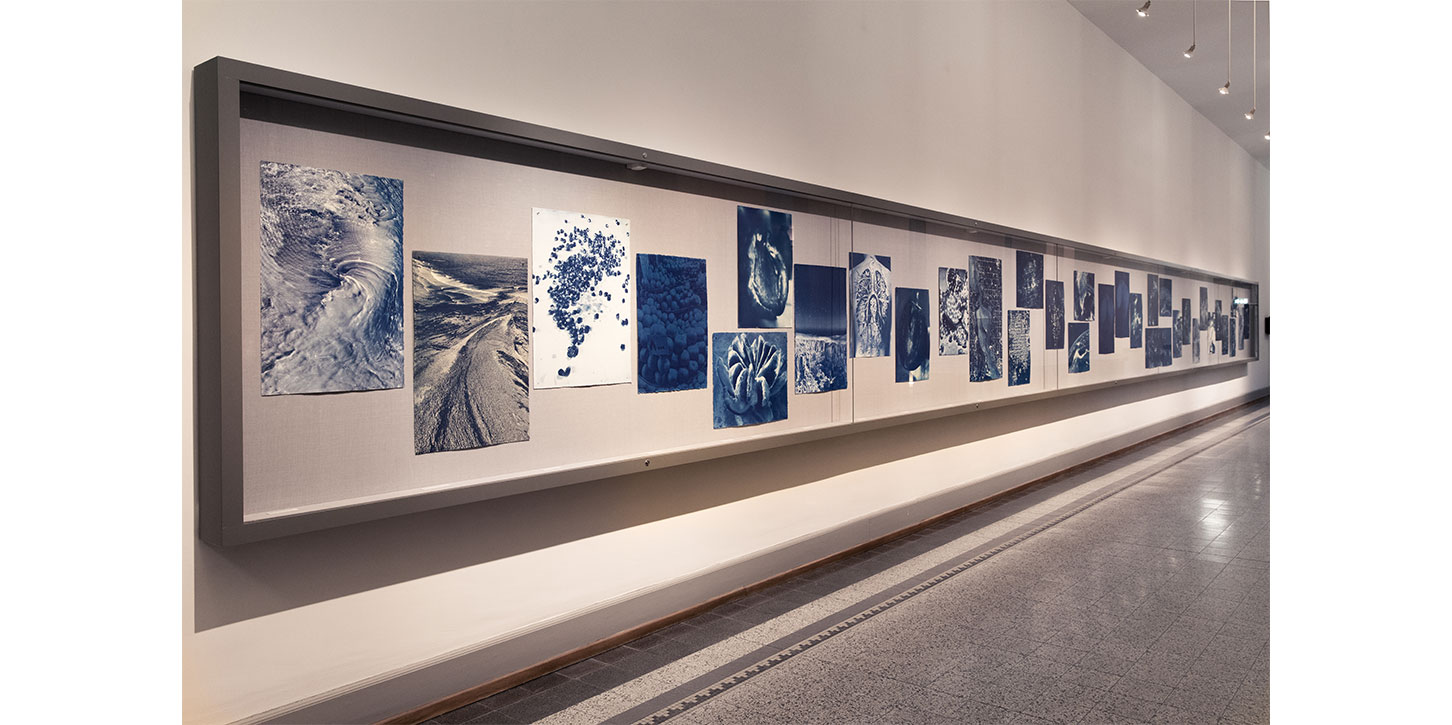
Installation view exhibition “Blue Links. Cyanotypes. Daniela Keiser”,
© Graphische Sammlung ETH Zürich, photo: Livio Baumgartner
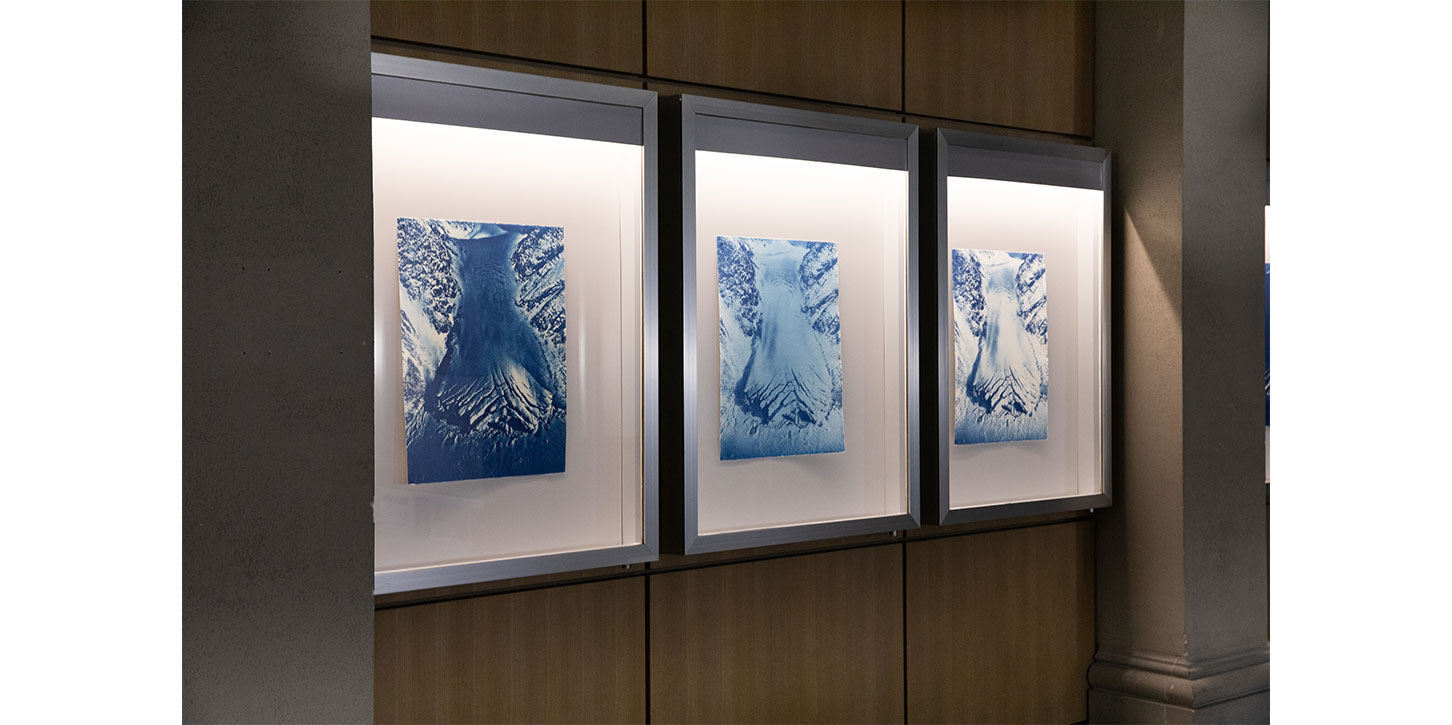
Installation view exhibition “Blue Links. Cyanotypes. Daniela Keiser”,
© Graphische Sammlung ETH Zürich, photo: Livio Baumgartner
Scheibenriss is the German term for the template, or cartoon, used in making the small-scale stained glass windows and heraldic devices, often presented as gifts, which are thought to be unique to Switzerland and southern Germany, and which were produced predominantly in the 16th and 17th centuries. The Scheibenriss outlines not only the pictorial design with the donor’s coat of arms, but sometimes also specifies the pattern of the leading and/or the colours to be used.
Zentralbibliothek Zürich, Graphische Sammlung ETH Zürich, Kunsthaus Zürich and the Swiss National Museum all have significant holdings of these historic works in their collections, representing all the leading artists of the period. The exhibition at Zurich Central Library presents 60 outstanding examples of the Scheibenriss from each of the four collections.
Allegories, biblical stories, scenes from everyday life and the world of work, official coats of arms and family crests are among the most popular subjects, providing a wealth of insights into life at that time. Exquisite stained glass images from the collection of the Swiss National Museum, based on the templates shown in the exhibition, add a further dimension to the theme. The exhibition is accompanied by a richly illustrated catalogue, and visitors can also visit the website https://www.zb.uzh.ch/de/exhibits/ins-licht-gezeichnet for information on various related events.
Curatorial Team:
Jochen Hesse, Zentralbibliothek Zürich
Mylene Ruoss, Schweizerisches Nationalmuseum Zürich
Jonas Beyer, Kunsthaus Zürich
Susanne Pollack, Graphische Sammlung ETH Zürich
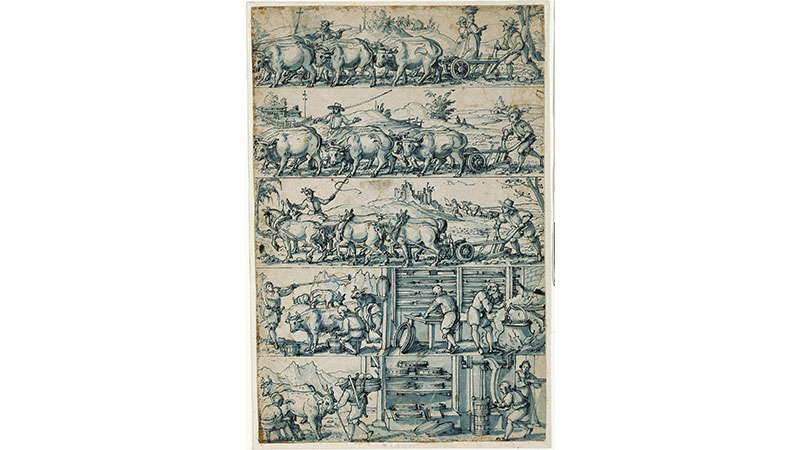
Daniel Lindtmayer, Skylight designs with five scenes of arable farming and cheese making, c. 1601
Pen and ink in black, grey wash, 308 x 204 mm, Graphische Sammlung ETH Zürich
Technology, tempo and telephone—that was the beat of the modern world experienced by Lill Tschudi (1911–2004) in the great cities of Europe. Born into a merchant’s family in Glarus, Switzerland, she left for London in 1929 to study at The Grosvenor School of Modern Art. A talented artist, she soon made a name for herself with her colour linocuts. In the 1930s and 1940s, she achieved widespread recognition throughout the English-speaking world, where her reputation as a key figure in Modernist British Printmaking remains undimmed. The Metropolitan Museum in New York holds a substantial collection of 118 of her prints, and her works are still bought and sold successfully at auctions in the UK and Australia. In her Swiss homeland, however, she has been all but forgotten. The exhibition at the Graphische Sammlung and the accompanying catalogue present iconic works by Tschudi from our own holdings, alongside loans from collections in Switzerland and abroad. The selection sheds new light on the highly accomplished mastery of Lill Tschudi’s linocuts.
From sport, jazz and vibrant city life to contemplative scenes of rural Switzerland and even impressions of the Women’s Auxiliary Service (FHD) during the war—Lill Tschudi covers an impressively wide range of subjects with a technical brilliance that is unparalleled. Extensively researching her oeuvre brought forth some remarkable discoveries. Insights into private collections and the artist’s estate allow the spectrum of her well-known linocuts to be broadened to include previously unknown material such as drawings for preliminary studies, oil paintings, sketchbooks and printing plates. These also include examples of applied graphics. Tschudi had studied publicité in Paris under Fernand Léger (1881–1955) and had been intensely involved with advertising for a while. Another noteworthy find is an album in the form of a leporello in which the artist collected motifs from the then glittering world of the illustrated press, which she cut out and pasted into the album, creating a veritable trove of images for reference. This trouvaille can be described as the key to the eventful life and wide-reaching work of this extraordinary woman. Even though her own personal biography may have been exceptional in her day, it nevertheless clearly indicates that there were, at the time, talented women artists in Switzerland who followed their creative vocation with an indomitable will.
Curatorial team: Alexandra Barcal, Graphische Sammlung ETH Zürich, and Marcel Just, guest curator
With friendly support:

Flyer
Press release
Figures and captions

Installation view exhibition “Lill Tschudi. The Excitement of the Modern Linocut”,
© Graphische Sammlung ETH Zürich, photo: Livio Baumgartner
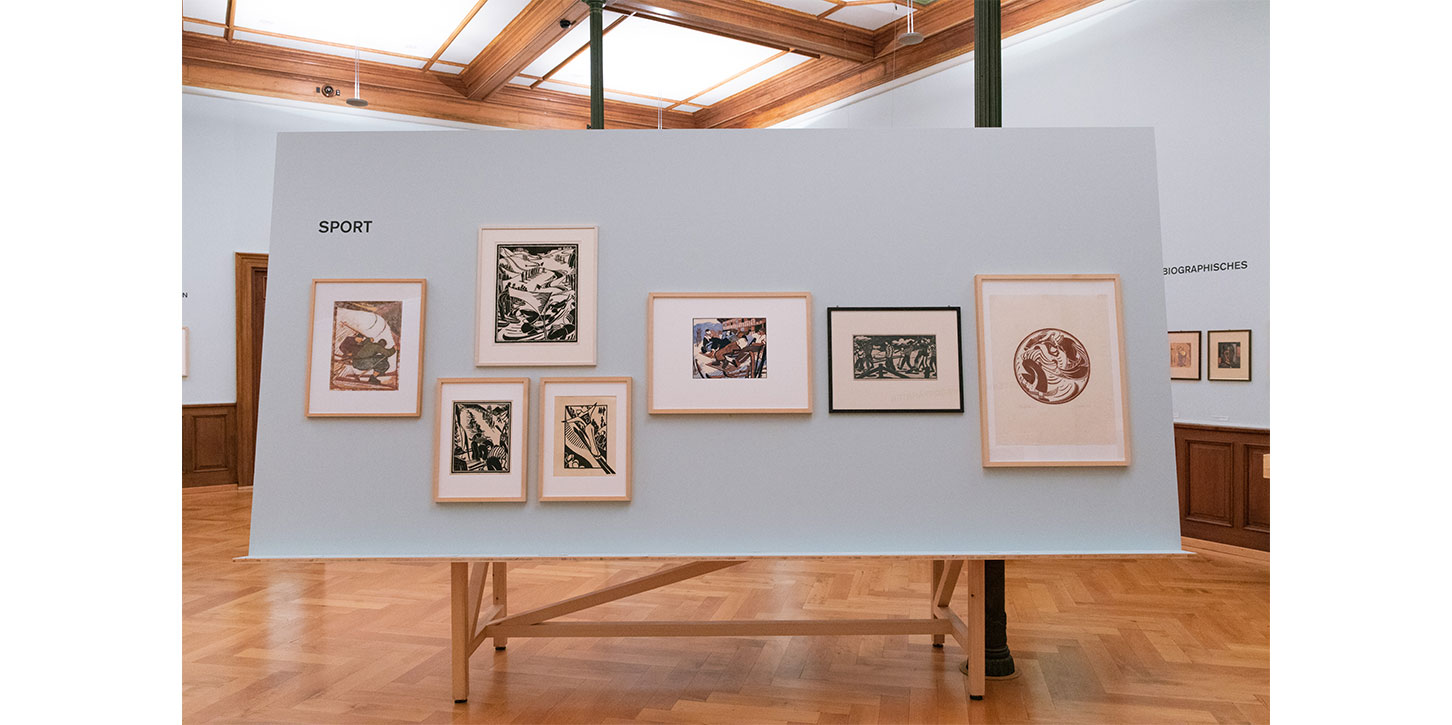
Installation view exhibition “Lill Tschudi. The Excitement of the Modern Linocut”,
© Graphische Sammlung ETH Zürich, photo: Livio Baumgartner

Installation view exhibition “Lill Tschudi. The Excitement of the Modern Linocut”,
© Graphische Sammlung ETH Zürich, photo: Livio Baumgartner
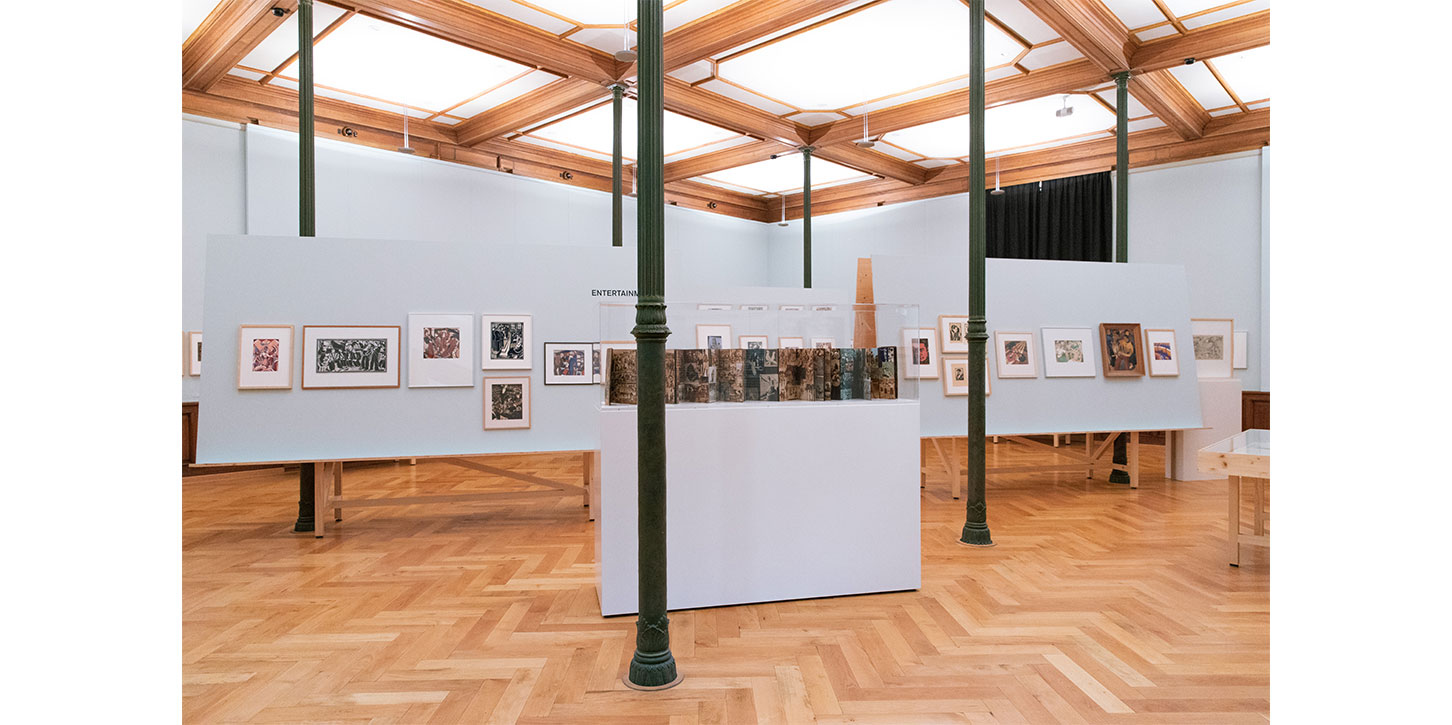
Installation view exhibition “Lill Tschudi. The Excitement of the Modern Linocut”,
© Graphische Sammlung ETH Zürich, photo: Livio Baumgartner
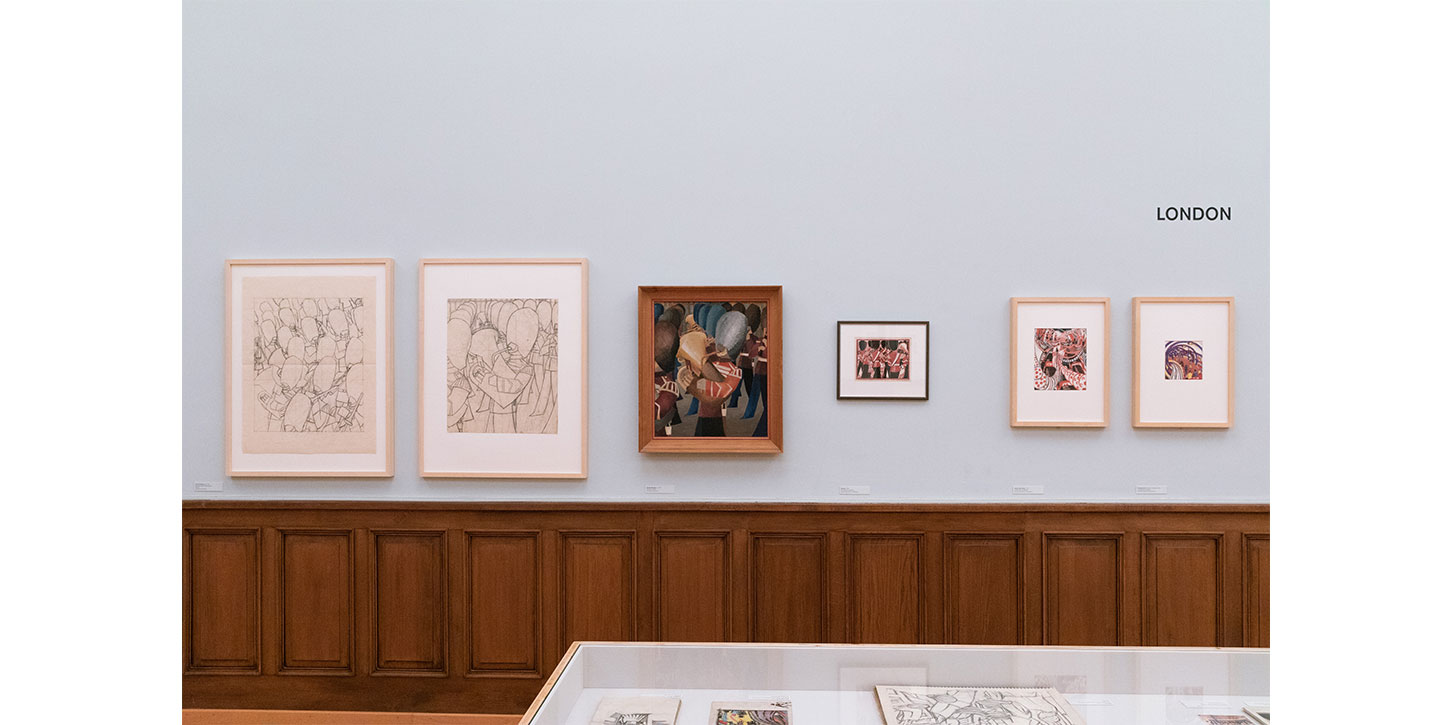
Installation view exhibition “Lill Tschudi. The Excitement of the Modern Linocut”,
© Graphische Sammlung ETH Zürich, photo: Livio Baumgartner
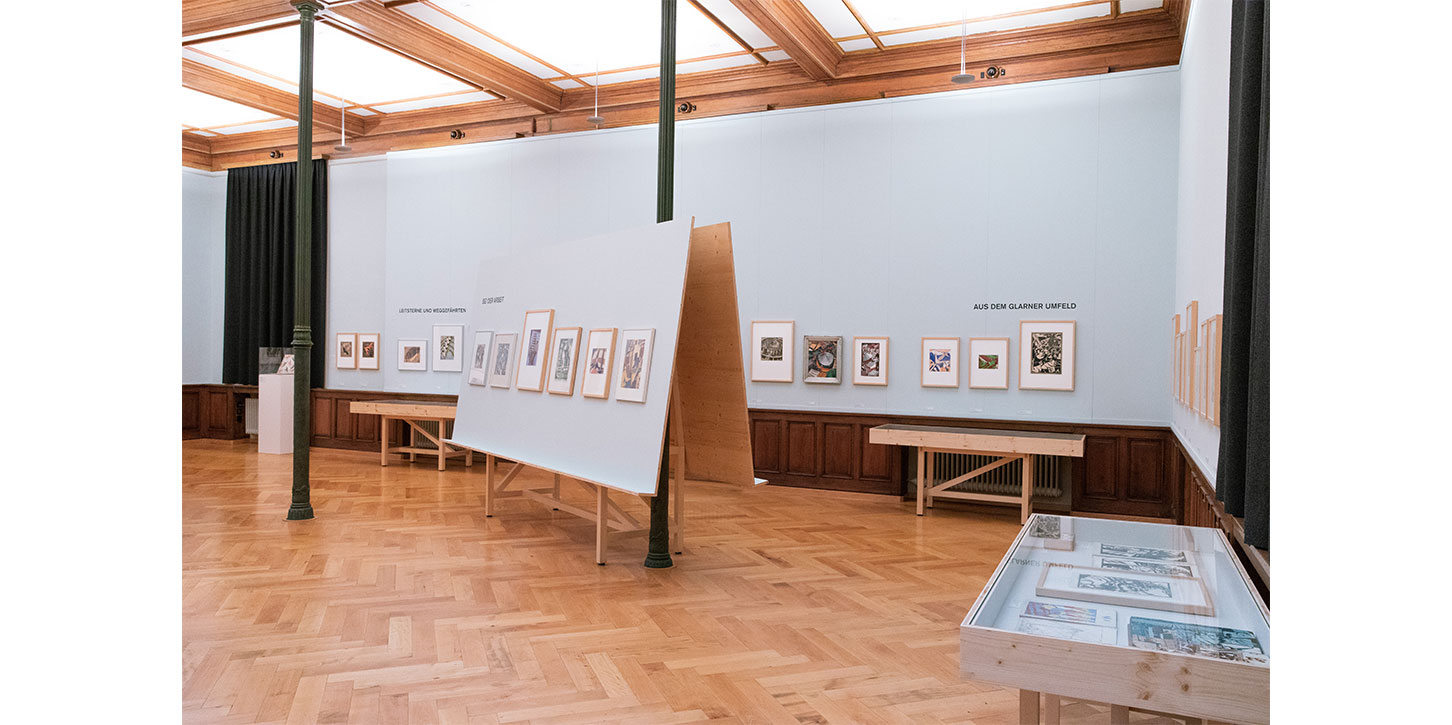
Installation view exhibition “Lill Tschudi. The Excitement of the Modern Linocut”,
© Graphische Sammlung ETH Zürich, photo: Livio Baumgartner
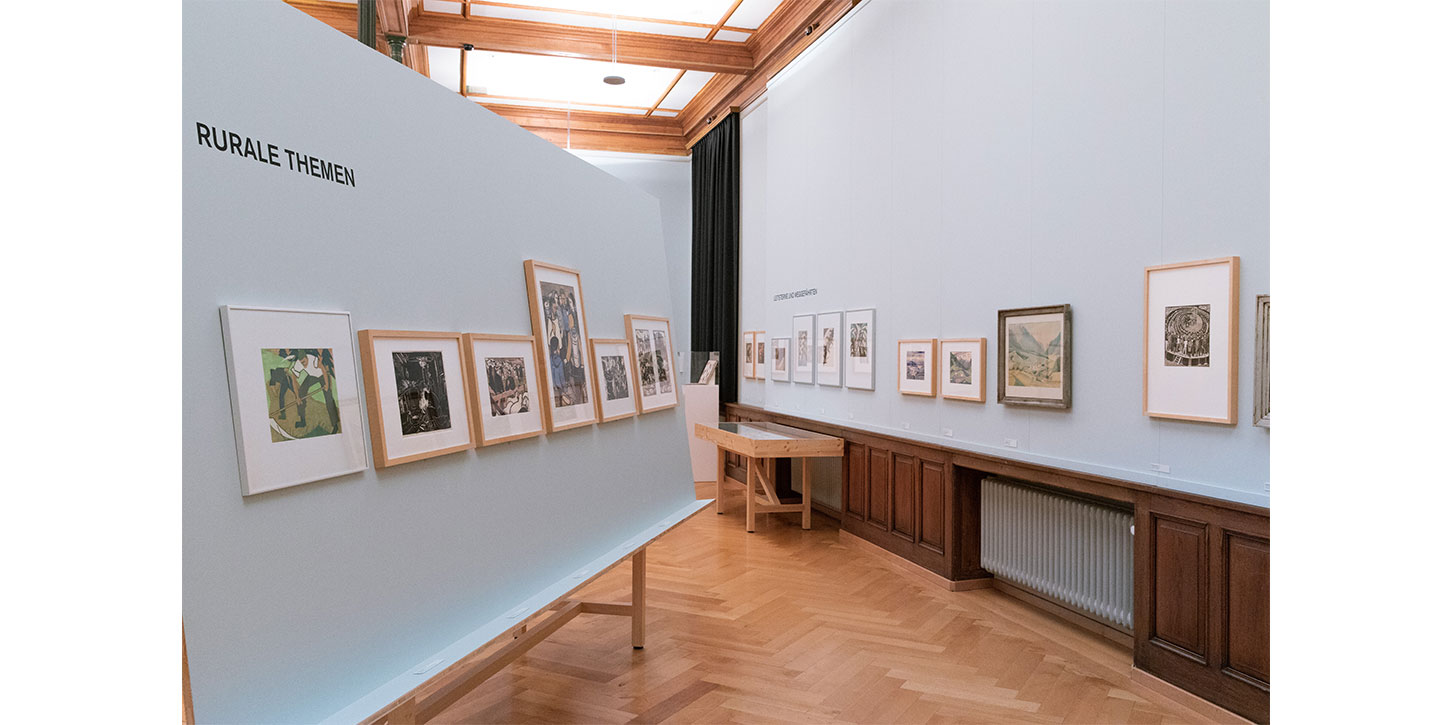
Installation view exhibition “Lill Tschudi. The Excitement of the Modern Linocut”,
© Graphische Sammlung ETH Zürich, photo: Livio Baumgartner
Cornices are everywhere. Once you start looking, their ubiquity is almost irritating. Windows, doors, ceilings, mirrors, wall panelling from across the centuries sport elaborate profiles at their edges. The skyline of any city street is a ragtag procession of cornices in various states of materiality, refinement and maintenance. It does not stop there. Cars and clothes, furniture and household objects feature their own cornice-like elements. Strips, bands and lines of paint act like cornices by framing or crowning almost any kind of artefact. Still, cornices hide in plain sight. They attract far less attention from architects, critics or theoreticians than, for instance, columns or the architectural orders. In response, a reappraisal of this underrated element will be presented in a new exhibition at Graphische Sammlung ETH Zürich, where the cornice will make its long overdue grand entrance. The presentation, jointly organized by the ETH collection of prints and drawings, Dr. Linda Schädler, and the chair of the History and Theory of Architecture ETH Zürich, Prof. Dr. Maarten Delbeke, will focus on the many incarnations of the cornice in art and architecture.
The cornice, once an essential part of any classical composition, incurred the wrath of modernists at the beginning of the 20th century. It has, at various times, been identified as the most expressive part of architecture, as well as the most problematic. It has drawn attention to itself in drawings, etchings and works of art. Hence, a history of the cornice in many ways offers a new window onto the multiple histories of architecture and its representations.
To reveal these histories and uncover the complex role of the cornice in architecture, urbanism and art, the exhibition will unite a unique selection of over 150 drawings, prints, books and objects from the 15th century to the present day, some shown for the first time in Switzerland. Authors and artists exhibited include Francesco di Giorgio, Gottfried Semper, Frank Lloyd Wright and Le Corbusier, amongst many others. By bringing works from earlier centuries from the ETH collections—prints, drawings and rare books—into direct dialogue with loans from important institutions in Switzerland and abroad, including the Fondation Le Corbusier, Paris, the Louvre, the Biblioteca Nazionale Centrale di Firenze, the Art Institute of Chicago, the Canadian Centre for Architecture, Montreal, the Drawing Matter Archive UK, the Berlin State Museums, the Rietberg Museum Zurich, and more, the exhibition will expose the “hidden horizontal” at the centre of five centuries of art and design thinking.
Curated by Graphische Sammlung ETH Zürich, Dr Linda Schädler, and the ETH Zurich Chair of History and Theory of Architecture, Prof. Dr Maarten Delbeke.
Assistant curators: Anneke Abhelakh (gta), David Bühler (gta) and Dr. Emma Letizia Jones (formerly gta)
Exhibition generously supported by:
![]() ORAC, Oostende
ORAC, Oostende

Installation view exhibition “The Hidden Horizontal. Cornices in Art and Architecture”,
© Graphische Sammlung ETH Zürich, photo: Livio Baumgartner

Installation view exhibition “The Hidden Horizontal. Cornices in Art and Architecture”,
© Graphische Sammlung ETH Zürich, photo: Livio Baumgartner

Installation view exhibition “The Hidden Horizontal. Cornices in Art and Architecture”,
© Graphische Sammlung ETH Zürich, photo: Livio Baumgartner
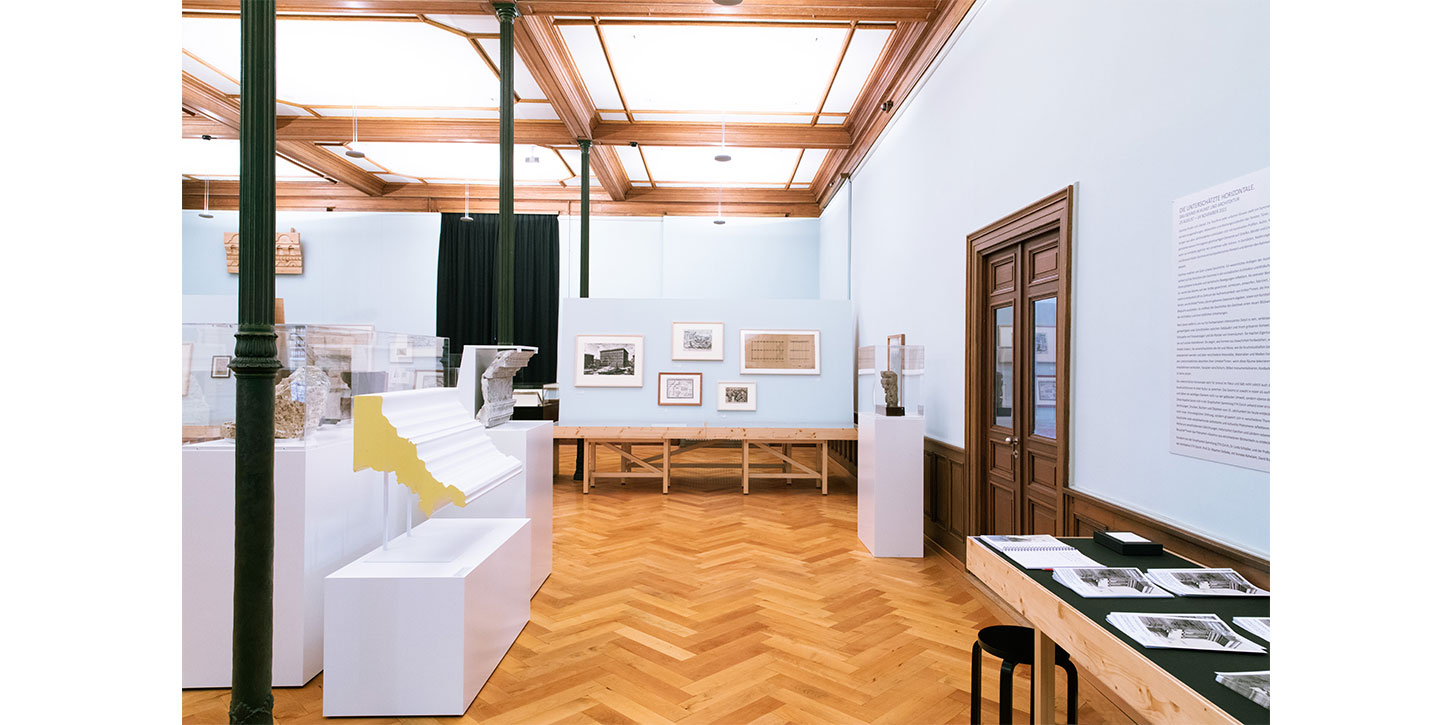
Installation view exhibition “The Hidden Horizontal. Cornices in Art and Architecture”,
© Graphische Sammlung ETH Zürich, photo: Livio Baumgartner
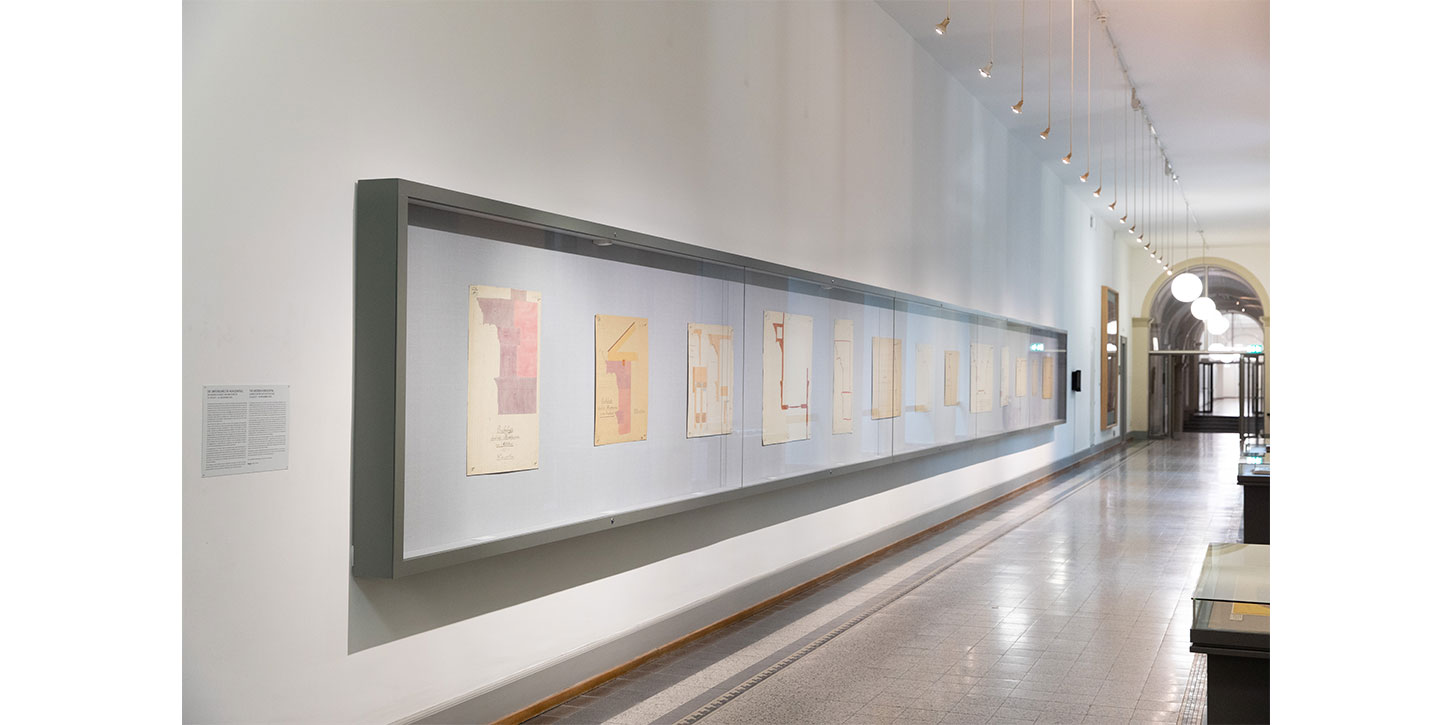
Installation view exhibition “The Hidden Horizontal. Cornices in Art and Architecture”,
© Graphische Sammlung ETH Zürich, photo: Livio Baumgartner
“As knowledge grows so, too, does doubt.” In times of crisis Goethe’s maxim seems all the more pertinent. While our faith in absolute certainties crumbles and irrational explanations gain momentum, it seems that Enlightenment ideals have reached their limits. Whether knowledge is set in stone or not has long been a topic of debate. Moreover for decades now the focus has been on the spatial organization of knowledge. The exhibition at the Graphische Sammlung ETH Zürich taps into these discussions. It is an invitation to engage with the spatial structures of knowledge and shows how differently contemporary artists – including Fiona Tan, Candida Höfer, and Luc Tuymans – deal with them.
Where is knowledge generated, organised, stored, and mediated? How is structured order expressed in architecture and interior design? And vice versa: to what extent do architectural circumstances define the knowledge that a society believes it has of itself and the world? Since the late 1980s questions regarding the role of “realms of knowledge” have increasingly become the focus of theoretical discourse, which has in turn heightened our awareness of the fact that the selection, organization, and presentation of any content always influence its interpretation. Artists, too, look at realms of knowledge and bring to light power structures hidden within them. Thus encyclopaedias, archives, and universities come under scrutiny and questions are asked of their role in the emergence of knowledge systems.
In the exhibition Realms of Knowledge the Graphische Sammlung ETH Zürich presents artistic approaches to notions of knowledge and to systems used to order it. The relationship between physical and virtual collections is explored as are the connections between analogue and digital records. In Shadow Archive (2019) artist Fiona Tan (*1966) engages with Paul Otlet’s Mundaneum. Dating to around 1900 the aim of Otlet’s project was no less than to gather together all the world’s knowledge in one place and to make it accessible to everyone. In Tan’s images the utopian undertaking—now also known as the ‘paper Google’—turns into a dystopian scenario. In The Temple (1996) Belgian artist Luc Tuymans (*1958) also raises questions concerning the presentation and accessibility of knowledge banks. To this end he turnes his attention to the largest genealogical archive in the world, which contains billions of records. Created and run by the Mormon Church it is located deep inside a granite mountain. Tuymans’ prints afford us rare insights into these premises, although he also deploys obfuscation and alienation tactics that all but obliterate any pictorial information. The tangled connections between curiosity and a thirst for knowledge on one hand and subliminal fantasies of omnipotence on the other forms the basis of Jorge Luis Borges’ Library of Babel, and Érik Desmazières’ (*1948) has realized eerily beautiful etchings of this “infinite” fictive library. By contrast German photographer Candida Höfer (*1944) views institutions such as universities, libraries, and zoos with a sober, distanced gaze. And when she shows us interiors at ETH Zürich, for instance, she encourages us to take a closer look at our own immediate surroundings.
It seems that the common thread running through the works in this exhibition is the “encyclopaedability” of knowledge, which—as the exhibits show—will always prove to be a fallacy. There is no way of fulfilling the desire for a body of knowledge that is stable, that encompasses everything, and that can be represented systematically and with consistent uniformity. A universal overview is as illusory as the idea that the complexity of the world could be contained and hence rendered controllable. There will always be areas of uncertainty, and the exhibition also addresses these areas—in the knowledge that our cognitive horizons are limited and that there are things that can never fully be grasped.
Curator: Laura Vuille, Graphische Sammlung ETH Zürich
Flyer
Press release
Figures and captions
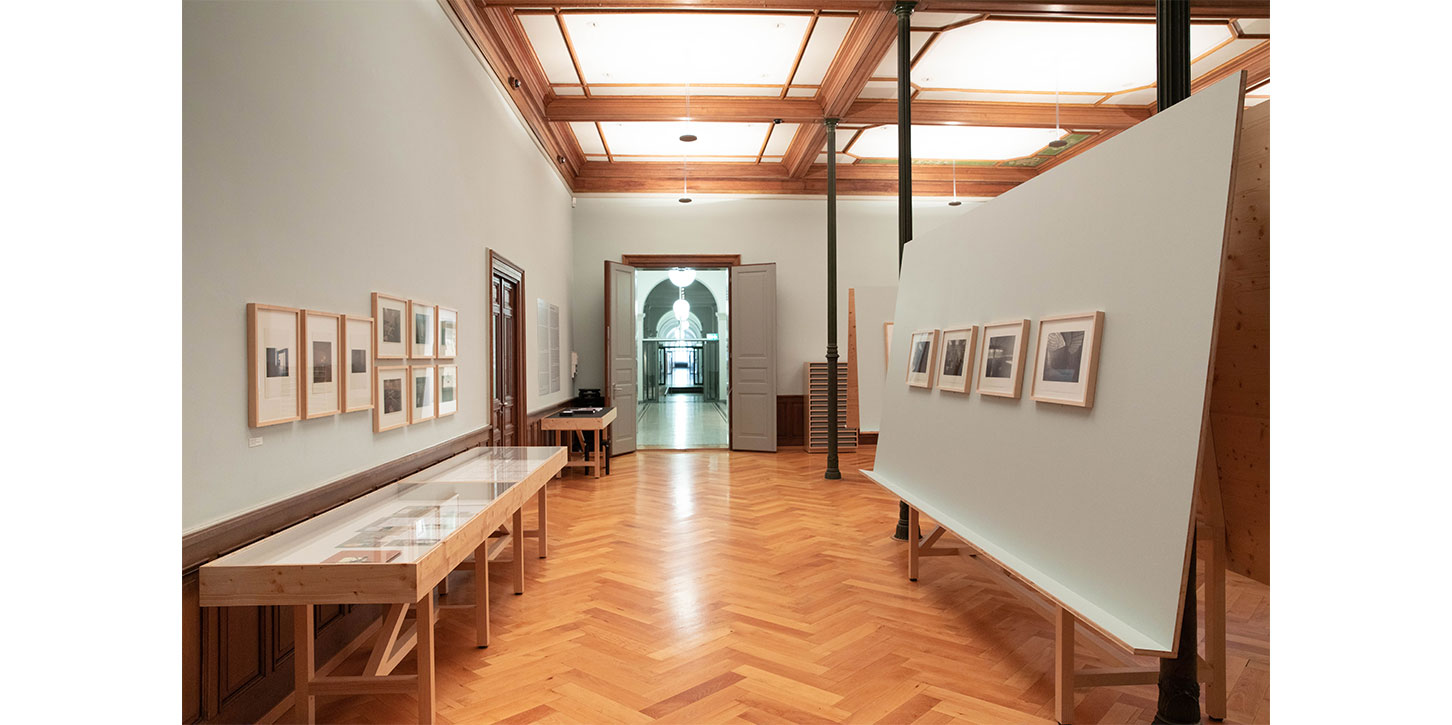
Installation view exhibition “Realms of Knowledge”,
© Graphische Sammlung ETH Zürich, photo: Livio Baumgartner
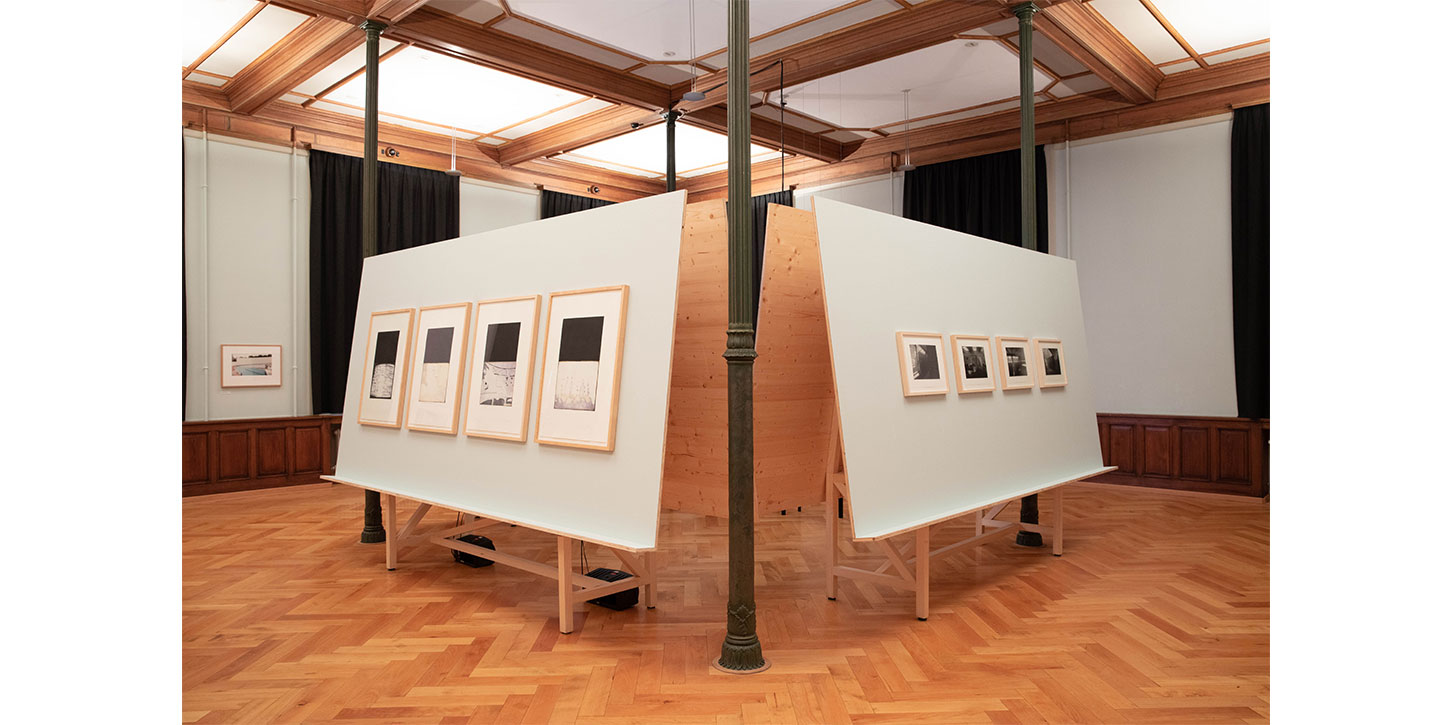
Installation view exhibition “Realms of Knowledge”,
© Graphische Sammlung ETH Zürich, photo: Livio Baumgartner
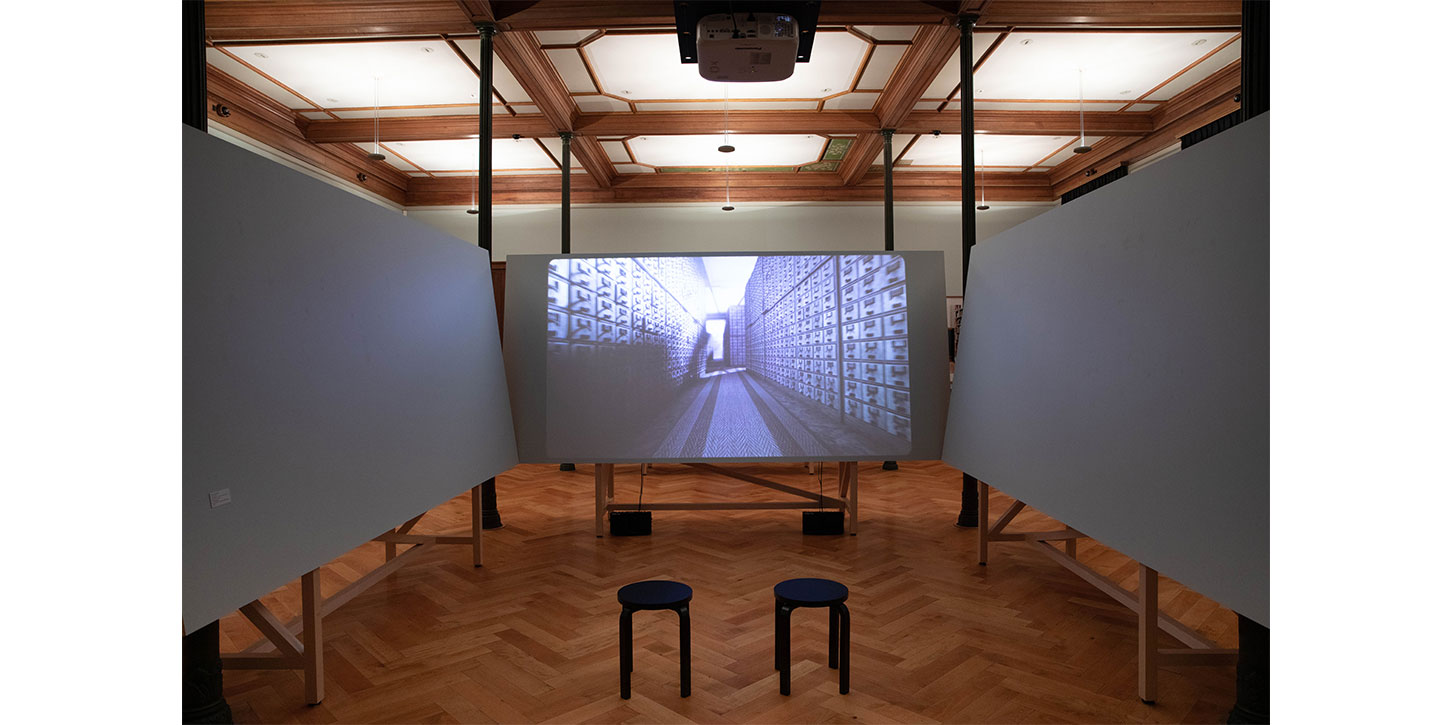
Installation view exhibition “Realms of Knowledge”,
© Graphische Sammlung ETH Zürich, photo: Livio Baumgartner
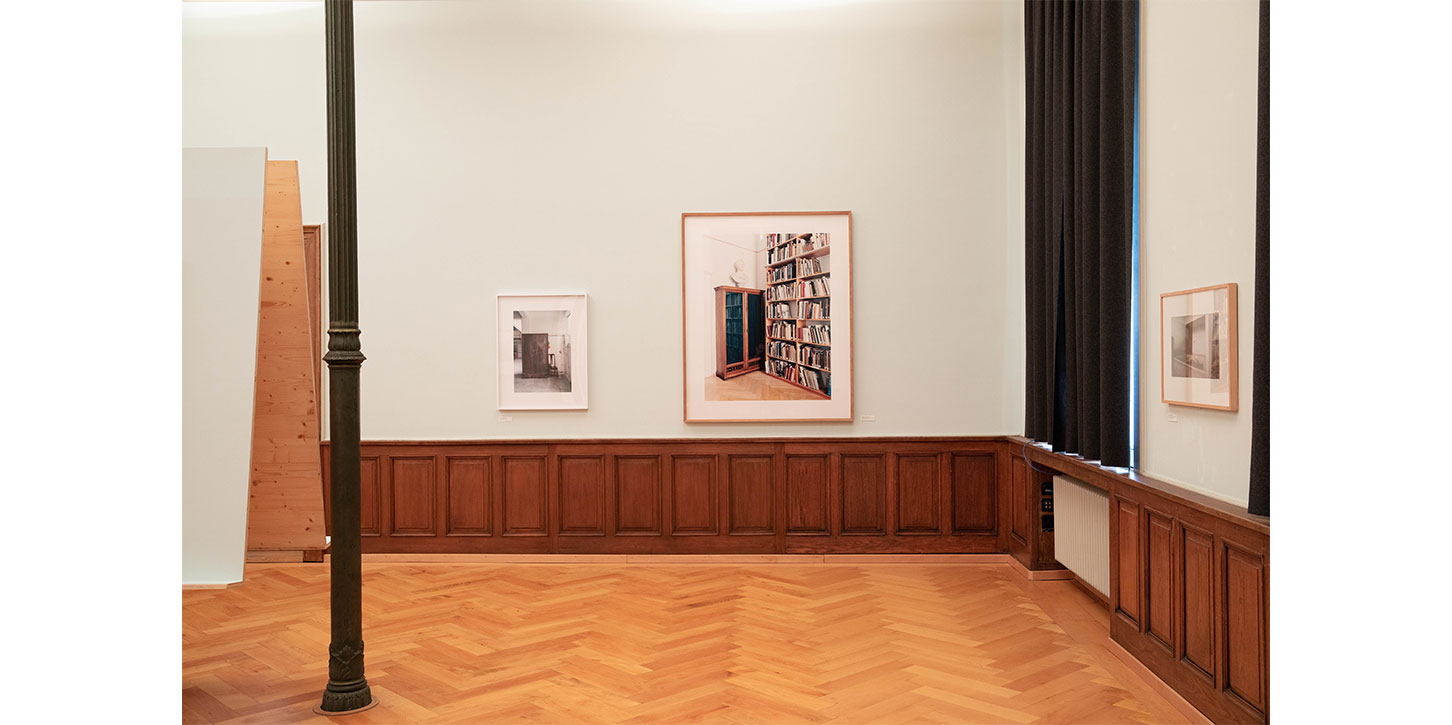
Installation view exhibition “Realms of Knowledge”,
© Graphische Sammlung ETH Zürich, photo: Livio Baumgartner

Installation view exhibition “Realms of Knowledge”,
© Graphische Sammlung ETH Zürich, photo: Livio Baumgartner
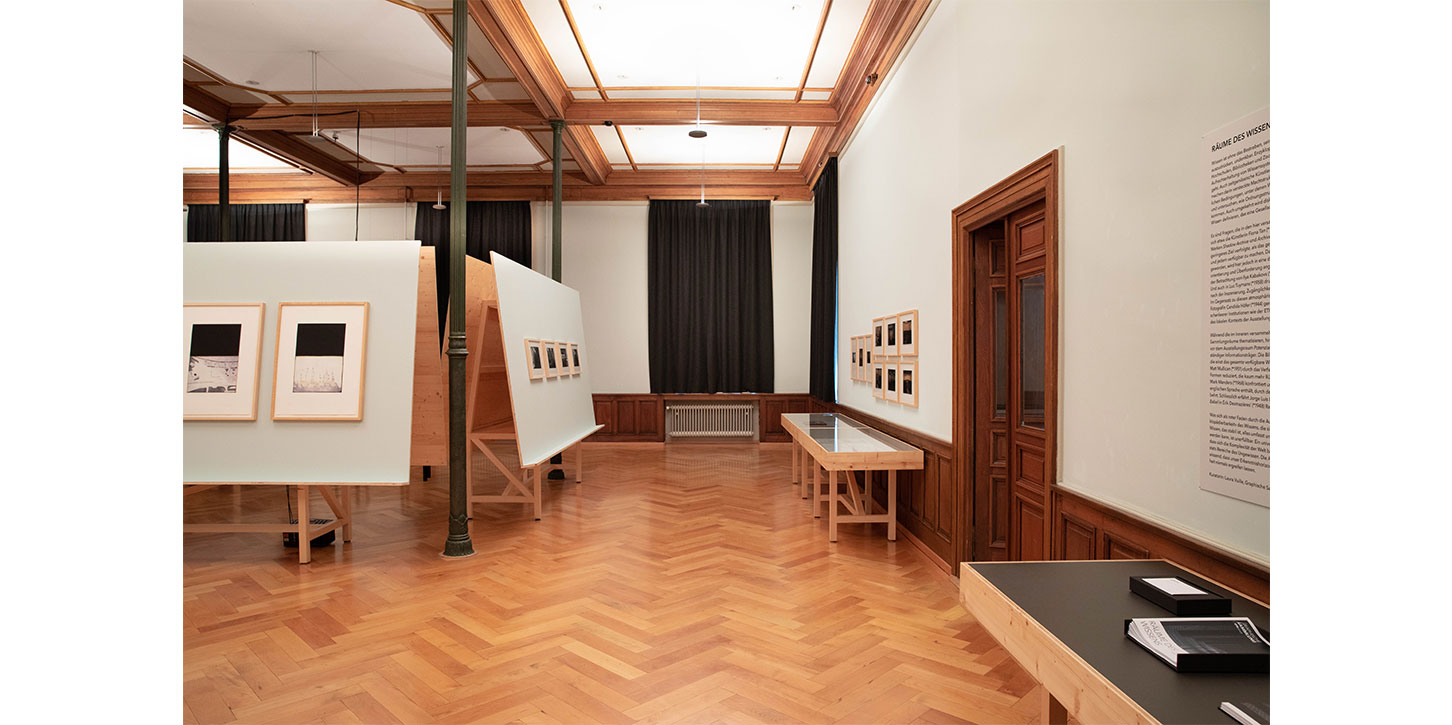
Installation view exhibition “Realms of Knowledge”,
© Graphische Sammlung ETH Zürich, photo: Livio Baumgartner
Every era chooses its stars. And each epoch that follows determines whether their light will fade or shine even brighter. Wouldn’t we just love to know which famous figures of our time will still enthuse our great-grandchildren? Knowing the answer to that is a privilege held by the art of centuries long past. Agostino Carracci and Hendrick Goltzius are amongst those who succeeded. They were the leading engravers of the late 16th century – one in Italy and the other in the Netherlands –, and even today their works are shown in exhibitions, traded on the art market, discussed in seminars and taken by artists as sources of inspiration.
Yet surprisingly, the two artists have never before been confronted in an exhibition. For, in addition to their success as engravers, there are further parallels: both were interested in literature and art theory, and each of them founded an academy in his own hometown. Independently of one another, they both discovered the illusionistic potential of lines that swell and taper and made an important contribution to the development of the engraving technique, paving the way for the print of the baroque era. Despite their outstanding success in the medium of print, both of them, in older age, turned increasingly to painting instead.
The exhibition, however, does more than simply draw the parallels in their lives. It also seeks the points of interaction between them. In order to show how these two artists acknowledged and influenced one another, the entire thematic spectrum of their work is presented, from devotional images to portraiture to explicitly erotic images. The varying functions of these pictures is reflected in the use of different formats: while some of the works on display are the size of a postage stamp, others are as large as a tabletop.
The exhibition is accompanied by a comprehensive publication in German and English published by Michael Imhof Verlag.
Curatorial Team: Dr. Susanne Pollack of the Graphische Sammlung ETH Zürich and
Dr. Samuel Vitali of the Kunsthistorisches Institut in Florenz – Max-Planck-Institut
Flyer
Press release
Figures and captions
Exhibition App
On the occasion of the exhibition, a free app was created, which we developed with the Game Technology Center of ETH Zurich with the support of LGT Private Banking. You can download the app using the QR code below or at artifact-ar.ch/web.
Open the app, start the art scanner and point the camera of your smartphone or tablet at one of the artworks shown.
After a short introduction, you can choose subject points yourself.

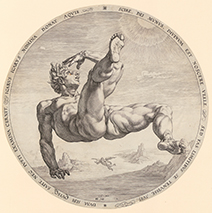
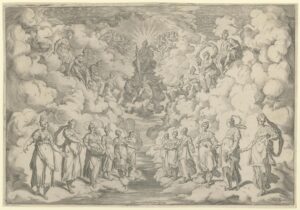
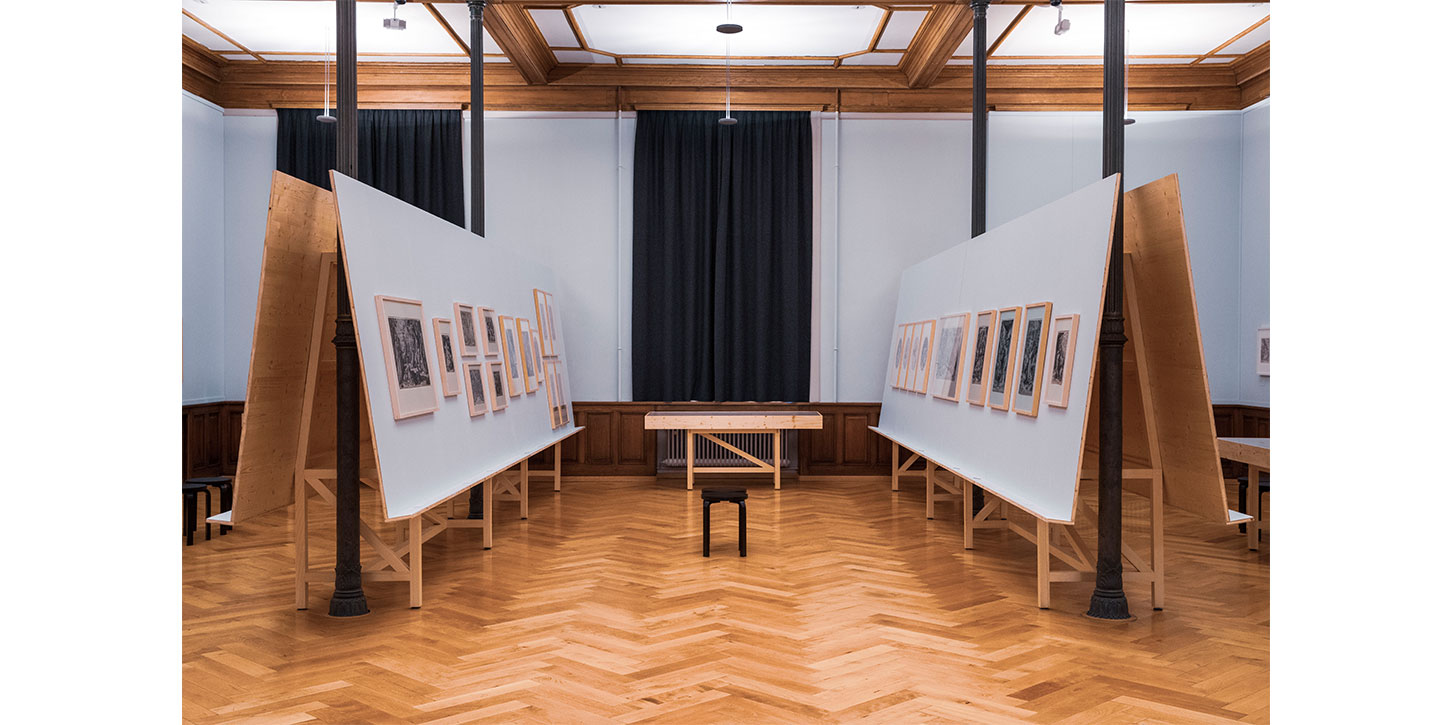
Installation view exhibition “Crossing Parallels. Agostino Carracci and Hendrick Goltzius”,
© Graphische Sammlung ETH Zürich, photo: Livio Baumgartner
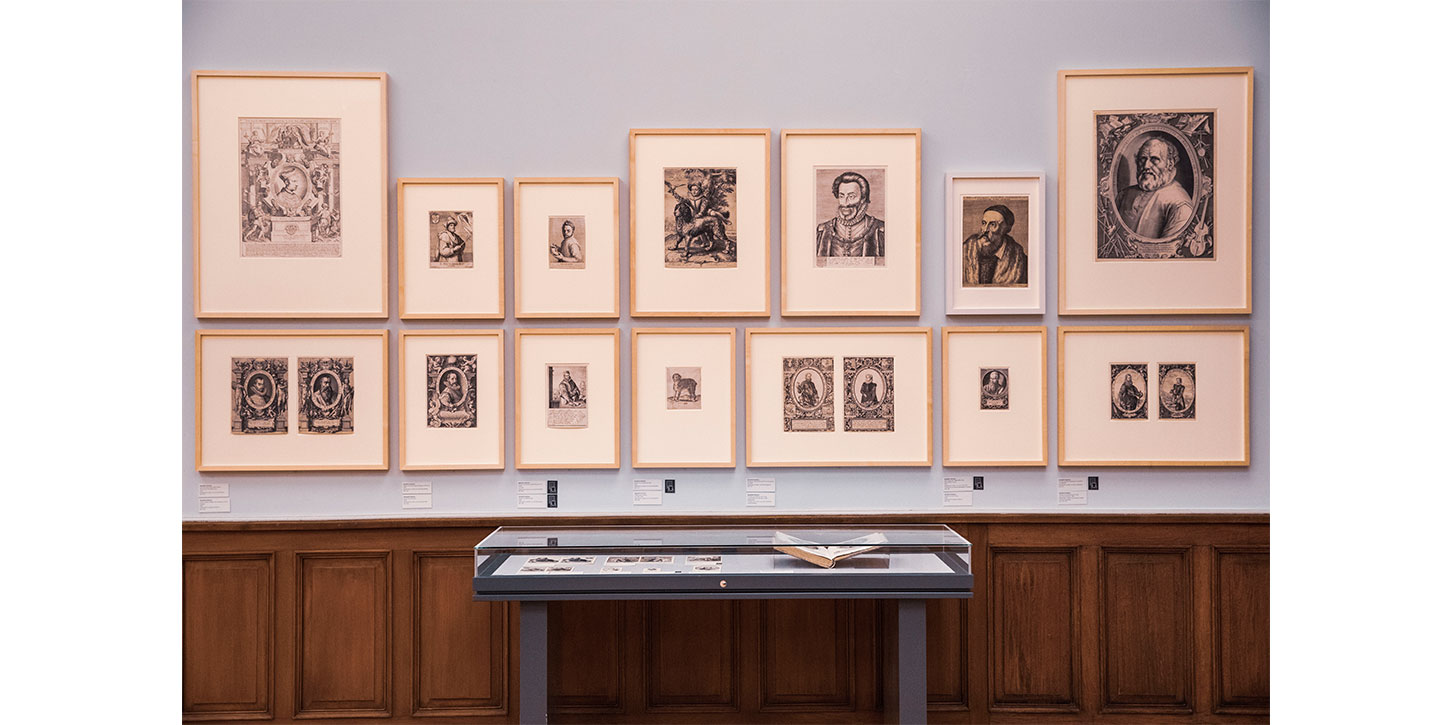
Installation view exhibition “Crossing Parallels. Agostino Carracci and Hendrick Goltzius”,
© Graphische Sammlung ETH Zürich, photo: Livio Baumgartner
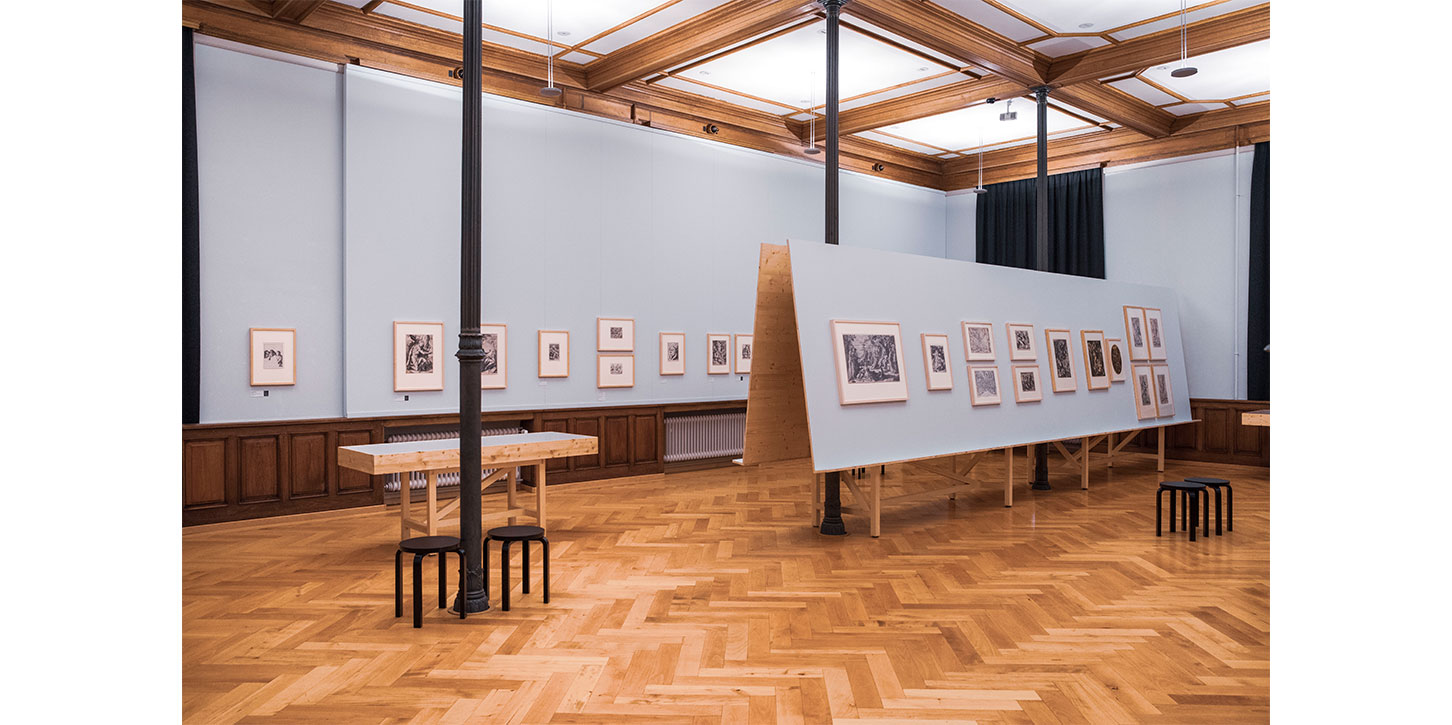
Installation view exhibition “Crossing Parallels. Agostino Carracci and Hendrick Goltzius”,
© Graphische Sammlung ETH Zürich, photo: Livio Baumgartner
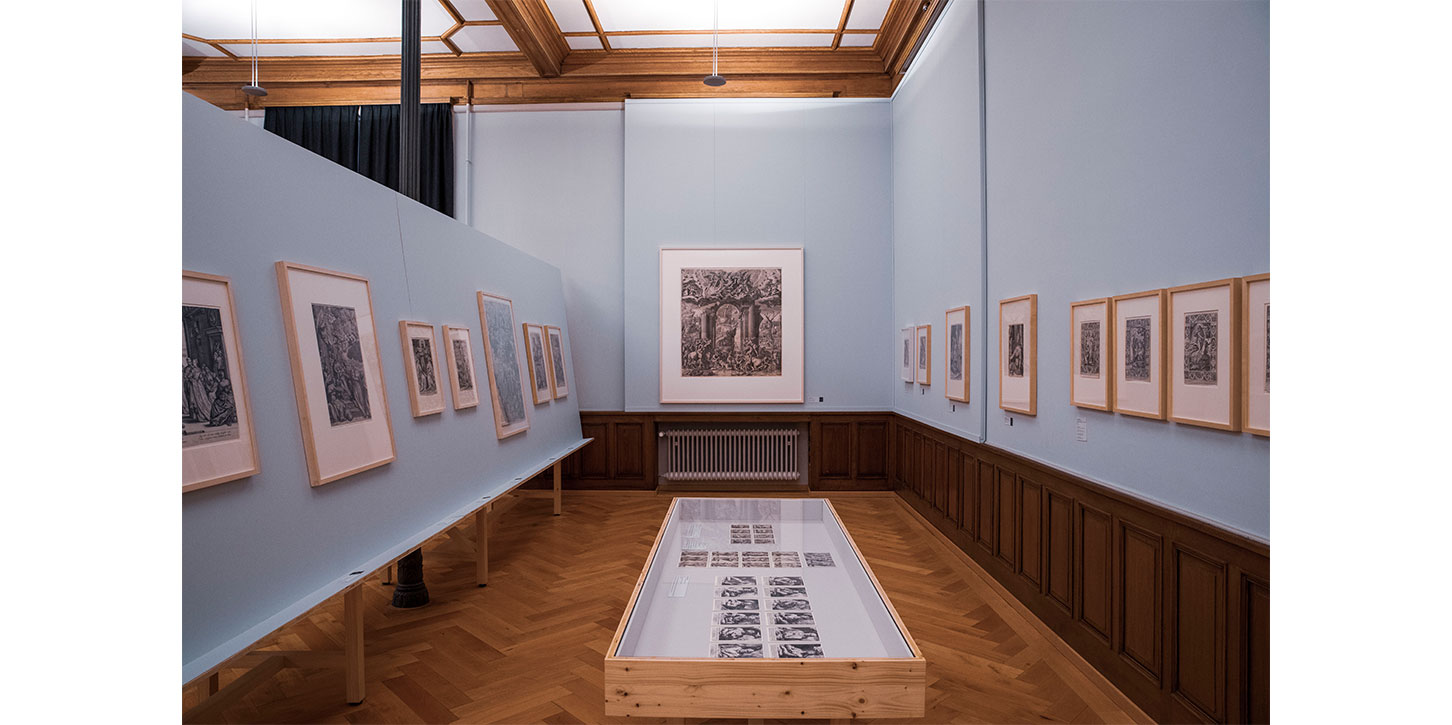
Installation view exhibition “Crossing Parallels. Agostino Carracci and Hendrick Goltzius”,
© Graphische Sammlung ETH Zürich, photo: Livio Baumgartner
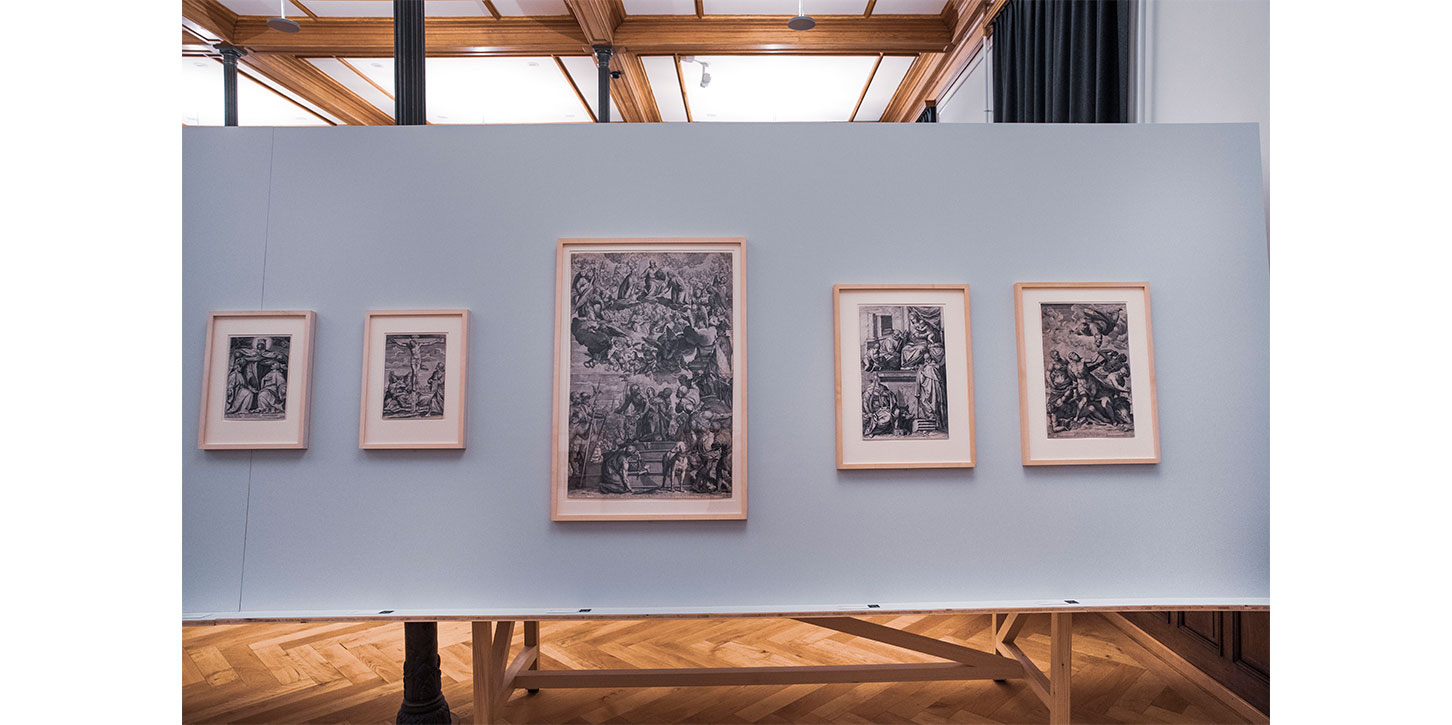
Installation view exhibition “Crossing Parallels. Agostino Carracci and Hendrick Goltzius”,
© Graphische Sammlung ETH Zürich, photo: Livio Baumgartner
The unknown Gertsch? The artist Franz Gertsch (b. 1930) is one of the most important artists of his generation, and his huge photorealistic paintings and woodcuts, emerging from 1969 onwards, belong to the most iconic works of art within Switzerland. Thus, can one refer to the artist as ‘the unknown Gertsch’? To mark the artist’s ninetieth birthday, ETH Zürich’s collection of prints and drawings has decided to dedicate an exhibition to his early work, which is not widely known so far. By doing so, it is offering a, for many, new view of his work.
The exhibition takes the visitors back to the beginnings, when the young artist experimented with different means of expression and various styles – although he always remained committed to the representational. The Graphische Sammlung ETH Zürich has collaborated closely with the artist in selecting individually themed groups of works from his personal collection and juxtaposing them with works from its own holdings. Studies, sheets from his sketchbooks, drawings as well as woodcuts and artist’s books are on view. All these works illustrate that Gertsch, from early on, developed a melancholic gaze onto the world. His affinity to romantic scenes merge with his intuition for specific moods and for atmospheres, which will also be characteristic for his major art works: These elements loosely link the early with the mature work. Such gazes lost in reverie, gazes into the distances, even gazes that span different spaces and times can be found in the monochrome color spaces of his highly respected later and in his early works alike.
The exhibition is presenting Gertsch’s works not in a chronological order but according to different groups of motives. One can discover his virtuosity in drawing in his fine nature studies. His landscapes – in the early work often inspired by the Romantic period or by Ferdinand Hodler – as well as his portraits, figures and interiors emerge in drawings as well as in linocuts and woodcuts. Sixteen years of age, he already started to work in these print techniques, for which he initially oriented himself on old German xylographs and the linear woodcuts of Aristide Maillol. The four artist’s books on view and various single sheets derive from Gertsch’s interest in fairy tales and legends. This interest was not least of all due to Gertsch’s contribution to the “Tägelleist”, a group of the Bernese subculture. From 1957 until the Sixties, he was, together with kindred spirits – among them his close friend Sergius Golowin and Maria Meer, who later became Gertsch’s wife – advocating a new appreciation of the folklore tradition. The members of “Tägelleist” collected myths of the Bernese Oberland und met regularly for speeches and lectures, which had an impact on some of Gertsch’s motives.
In addition to this part of the exhibition, a sumptuous array of color samples is on view in the corridor, stemming from the complex printing process involved in his large-format later woodcuts and providing an invaluable insight into another aspect of Gertsch’s oeuvre. The artist has collated these samples, which he describes affectionately as “études (de) couleurs”. They present a richly varied panoply of visual forms.
Curatorial Team: Dr. Linda Schädler and Alexandra Barcal
The exhibition was accompanied by a catalogue published by Hirmer Verlag (German and English).
Kindly supported by the City of Bern and ‘SWISSLOS/Kultur Kanton Bern’ and Georges und Jenny Bloch-Stiftung
Flyer
Press release
Figures and captions
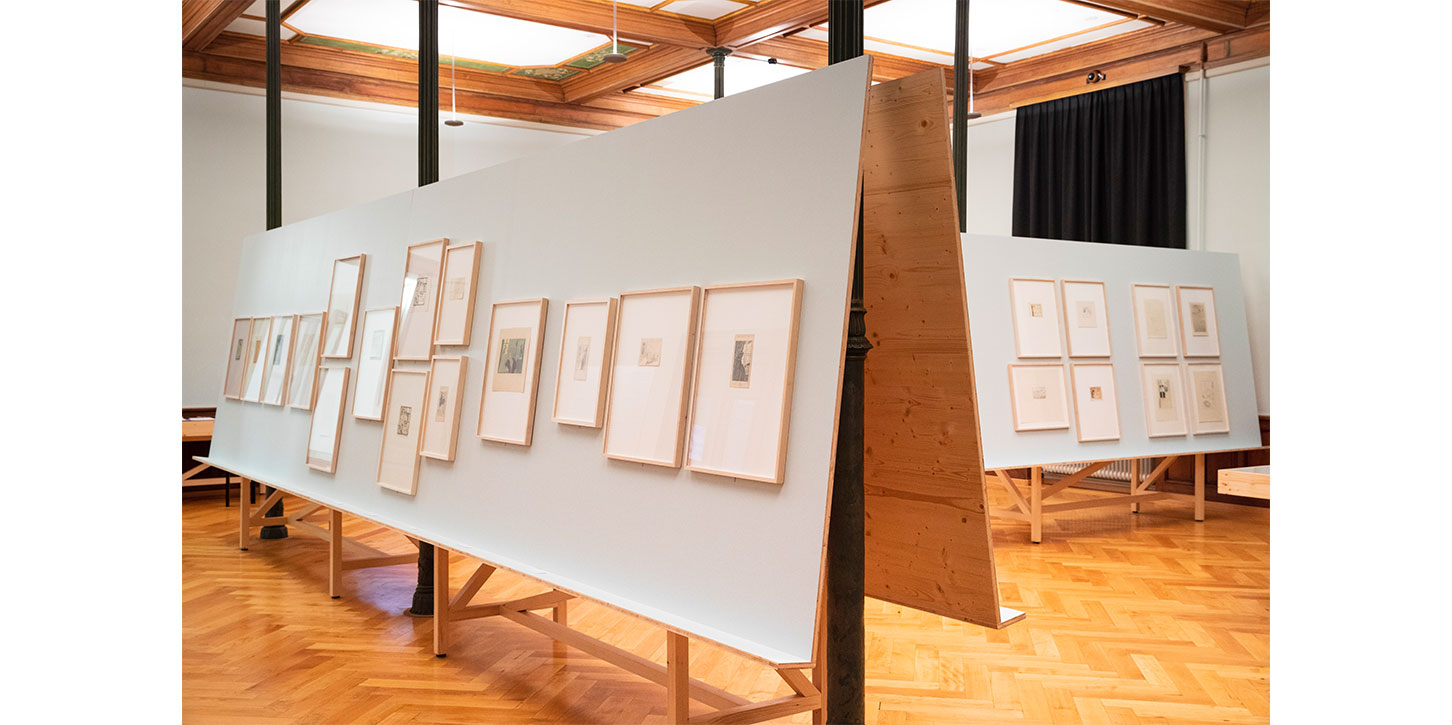
Installation view exhibition “Franz Gertsch. Looking Back. A Ninetieth Birthday Tribute”,
© Graphische Sammlung ETH Zürich, photo: Livio Baumgartner
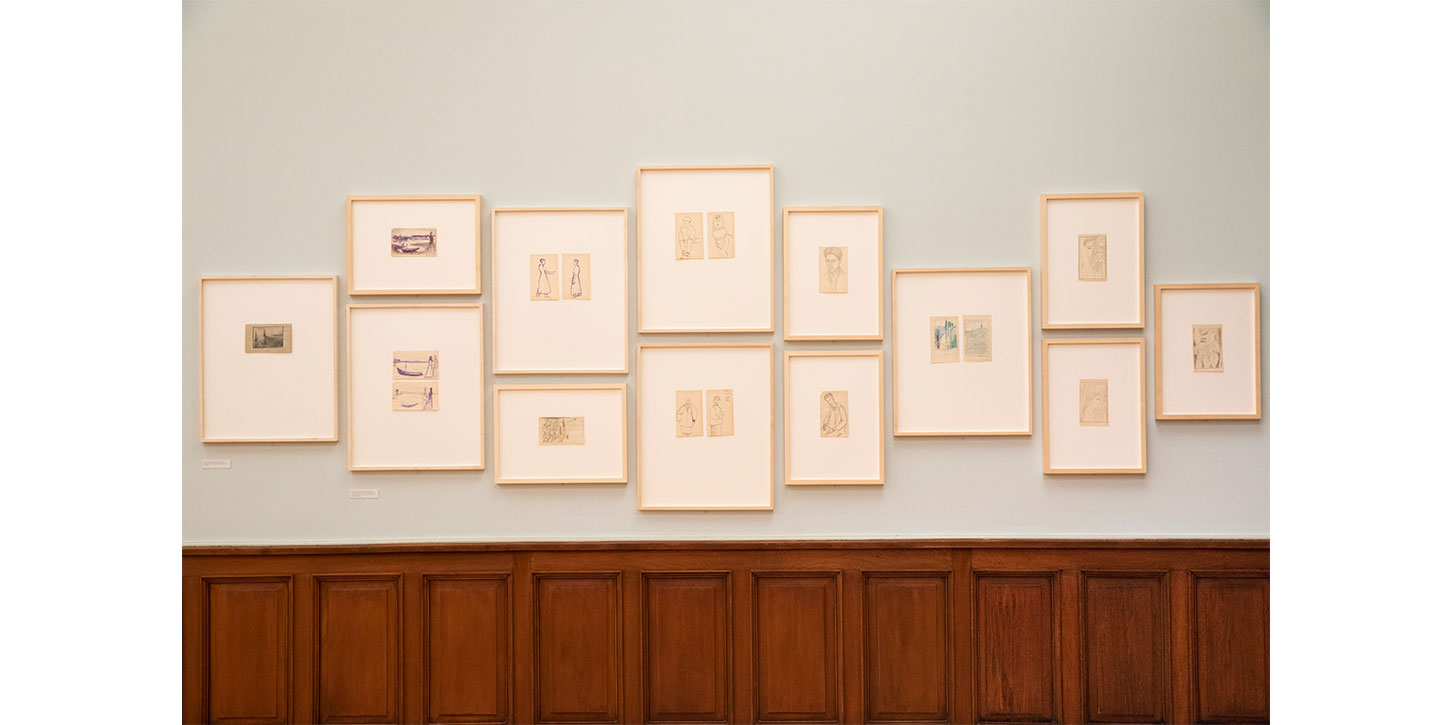
Installation view exhibition “Franz Gertsch. Looking Back. A Ninetieth Birthday Tribute”,
© Graphische Sammlung ETH Zürich, photo: Livio Baumgartner
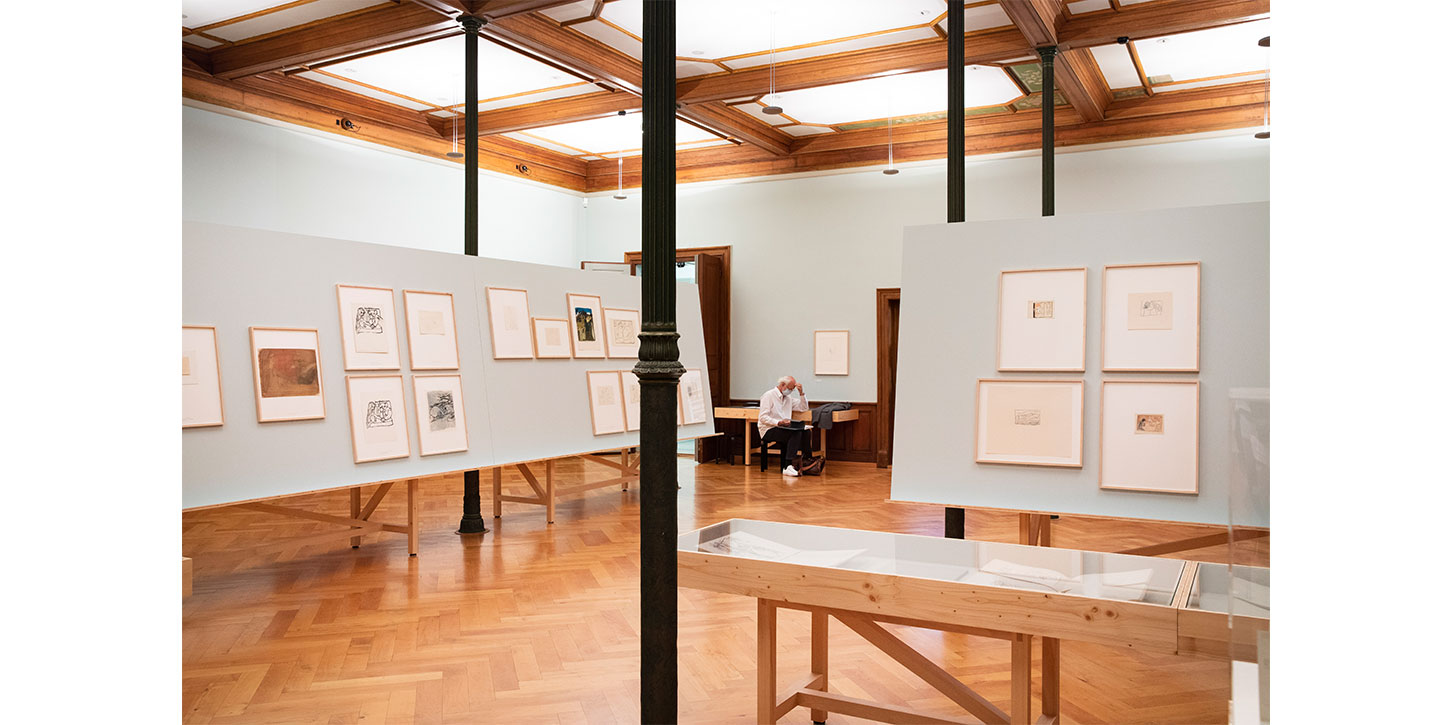
Installation view exhibition “Franz Gertsch. Looking Back. A Ninetieth Birthday Tribute”,
© Graphische Sammlung ETH Zürich, photo: Livio Baumgartner
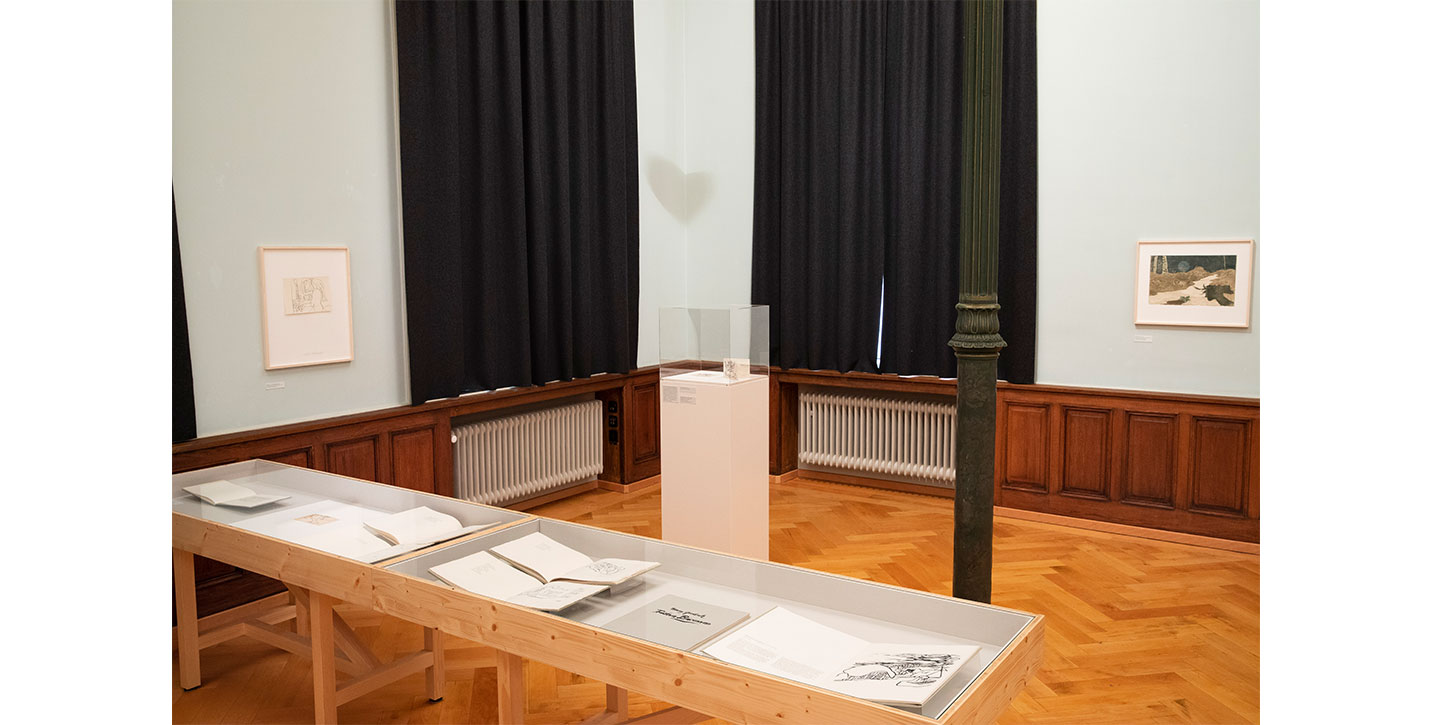
Installation view exhibition “Franz Gertsch. Looking Back. A Ninetieth Birthday Tribute”,
© Graphische Sammlung ETH Zürich, photo: Livio Baumgartner

Installation view exhibition “Franz Gertsch. Looking Back. A Ninetieth Birthday Tribute”,
© Graphische Sammlung ETH Zürich, photo: Livio Baumgartner
Intervention at ETH Zurich Main Hall 4. – 12 December 2019, 6 hours in a time-lapse: In a nightly action, a robot in the ETH main hall laid out a monumental drawing with a single rope of about 1000 m, based on motifs by Yves Netzhammer © Yves Netzhammer / Gramazio Kohler Research, ETH Zürich
Artifical intelligence is encroaching ever further into all possible areas of our lives. Many of the questions in this regard are about the human aspects of robots. What happens when we allow the machine to anticipate and perpetuate what the human mind has initiated? This is a topic that is also relevant to art. How can robots be integrated into artistic production? Who or what determines the form? How do we deal with the resulting uncertainty about individual authorship?
The Graphische Sammlung ETH Zürich frequently presents exhibition projects that are set on the interface with the disciplines taught at the ETH. In this light, a collaboration emerged between the renowned Swiss artist Yves Netzhammer (*1970) and the internationally respected Chair of Architecture and Digital Fabrication, Gramazio Kohler Research. In the course of the initiated exchange, it quickly became clear that the thread plays a central role in the joint project. On the one hand, this material repeatedly occurs in the visual world of the artist, while, on the other hand, architects Fabio Gramazio and Matthias Kohler also resort, in their research, to meshes of string, yarn and fibre. The result is a large-scale installation involving robots developed at the ETH for digital fabrication in the field of architecture. The equipment has been enhanced to perform new functions. While one of them continually sets out lines according to drawings by Netzhammer, the other simultaneously constructs an equilibrium-determined mesh-like structure of suspended threads within the space. In a constantly recurring process of built-up, collapsing and newly created structures, the machine-calculated forms are paired with human-inspired creations – thereby addressing the fragile relationship between man and machine.
The thread in three-dimensional space, however, also has its equivalent in the form of lines on paper and so, in addition, we gain an insight into the fruits of the artist’s approach to the printing process: together with printer Arno Hassler (Atelier de gravure, Moutier) Yves Netzhammer has, for the very first time in his artistic career, explored the possibilities of intaglio. The result of these experimentations is an edition of prints, presented in the corridor along with an extensive series of variants.
Curator: Alexandra Barcal, Graphische Sammlung ETH Zürich
Collaboration: Petrus Aejmelaeus-Lindström and Nicolas Feihl
Flyer
Press release
Figures and captions
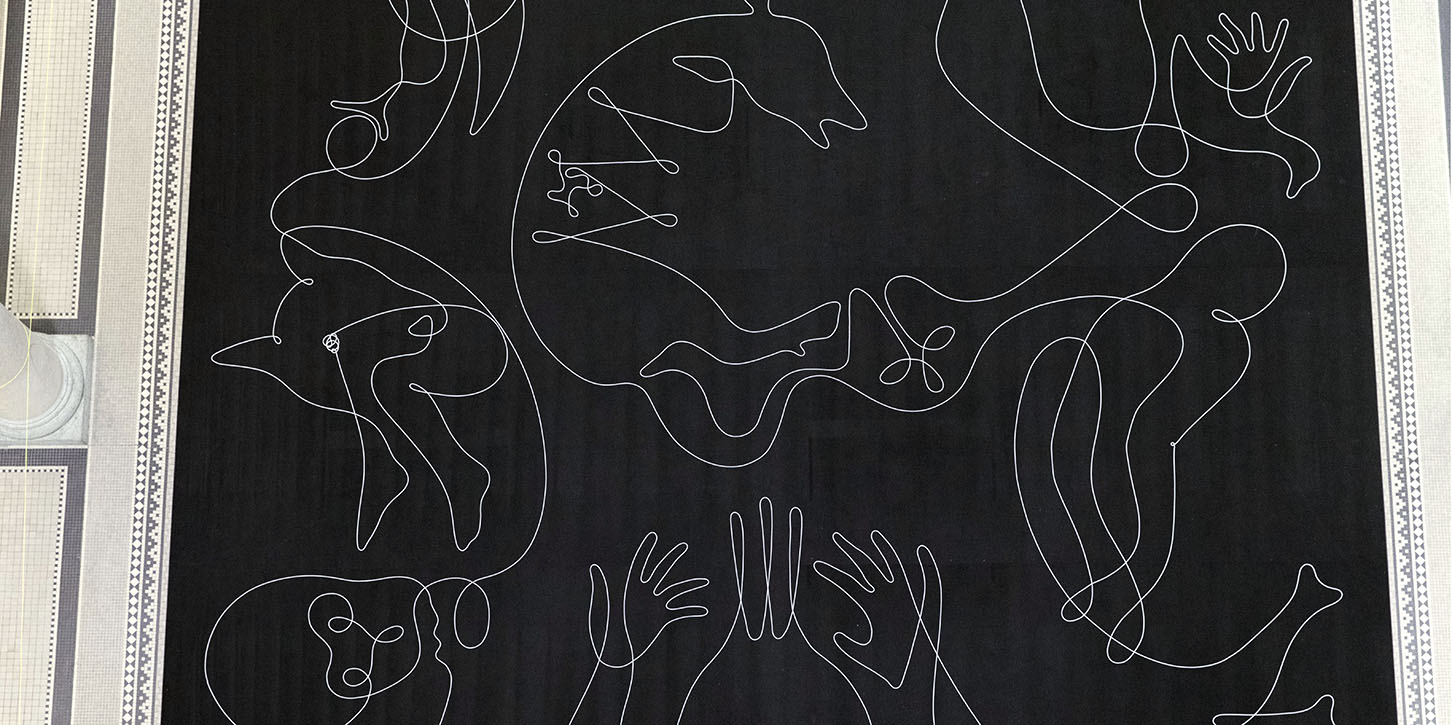
Installation view exhibition “Gravitational Assertions. Yves Netzhammer / Gramazio Kohler Research”,
© Graphische Sammlung ETH Zürich, photo: Livio Baumgartner

Installation view exhibition “Gravitational Assertions. Yves Netzhammer / Gramazio Kohler Research”,
© Graphische Sammlung ETH Zürich, photo: Livio Baumgartner
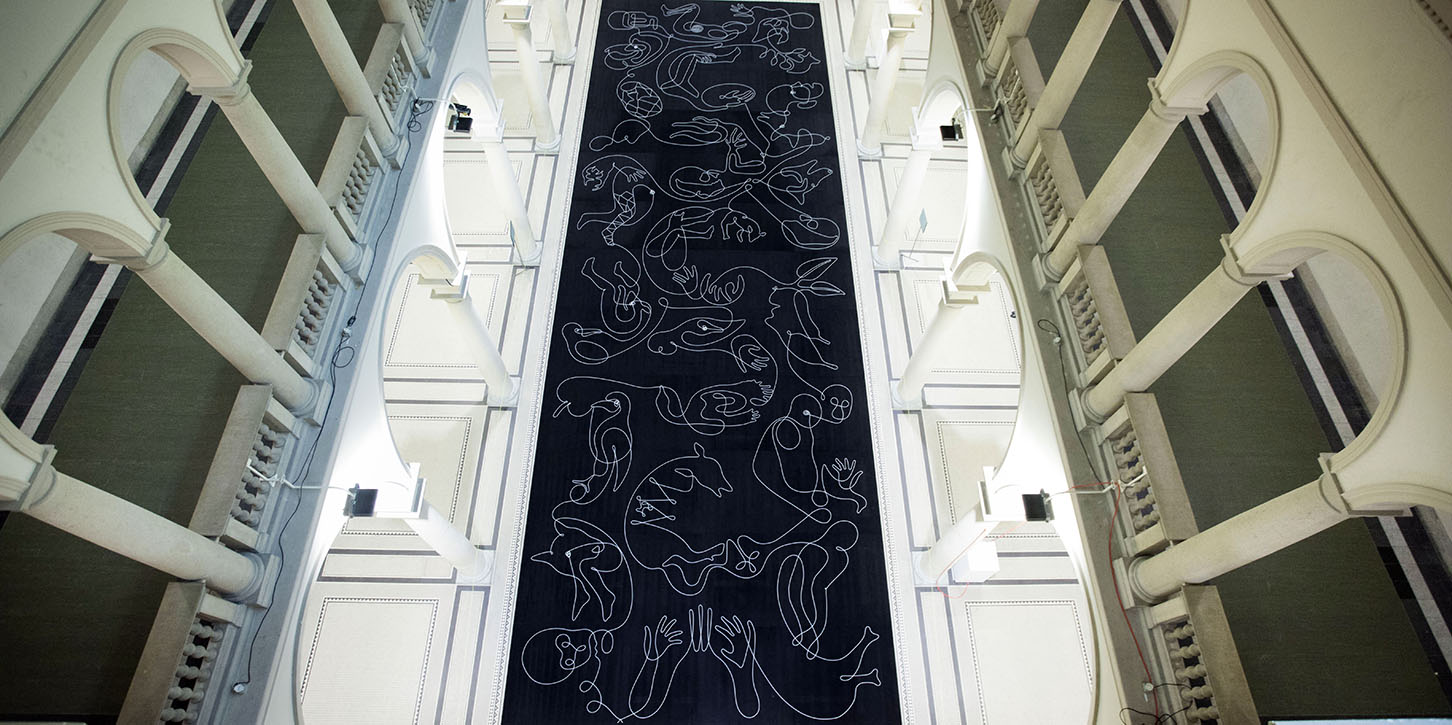
Installation view exhibition “Gravitational Assertions. Yves Netzhammer / Gramazio Kohler Research”,
© Graphische Sammlung ETH Zürich, photo: Livio Baumgartner
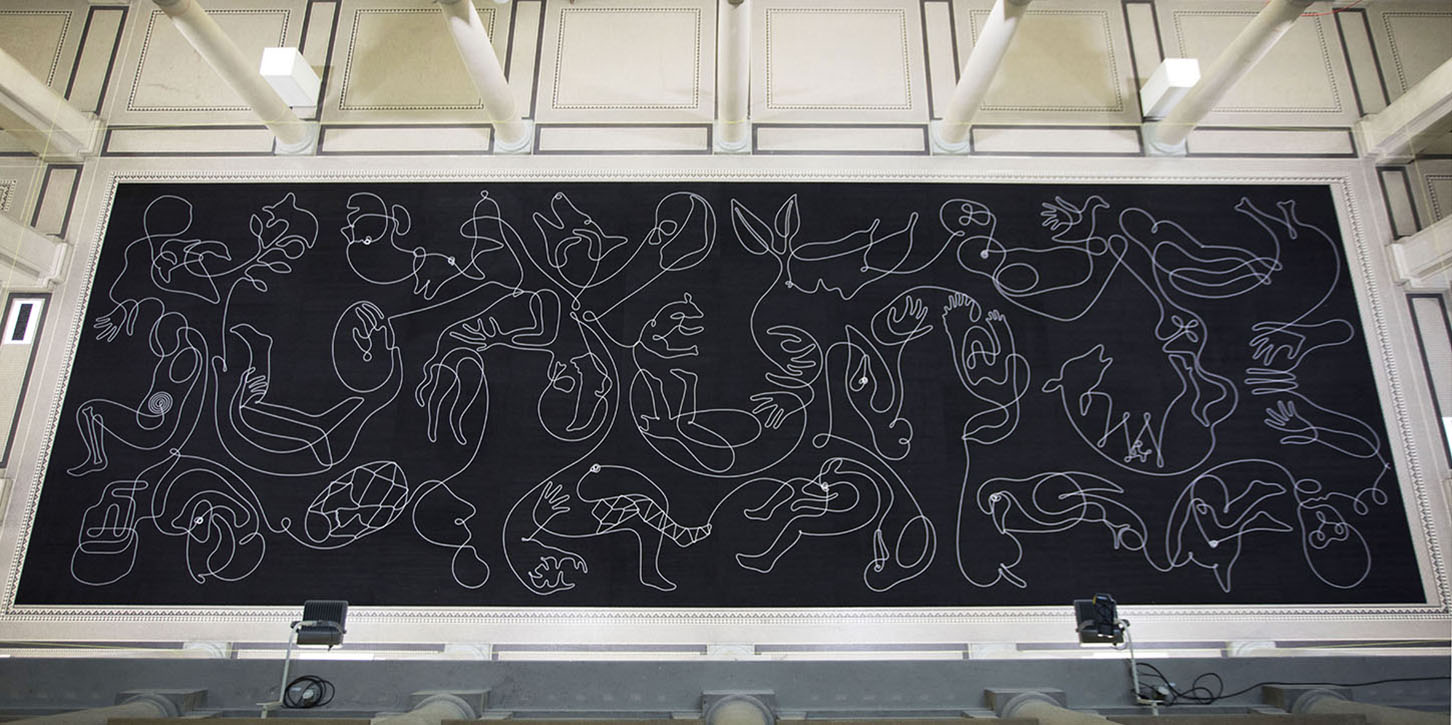
Installation view exhibition “Gravitational Assertions. Yves Netzhammer / Gramazio Kohler Research”,
© Graphische Sammlung ETH Zürich, photo: Livio Baumgartner
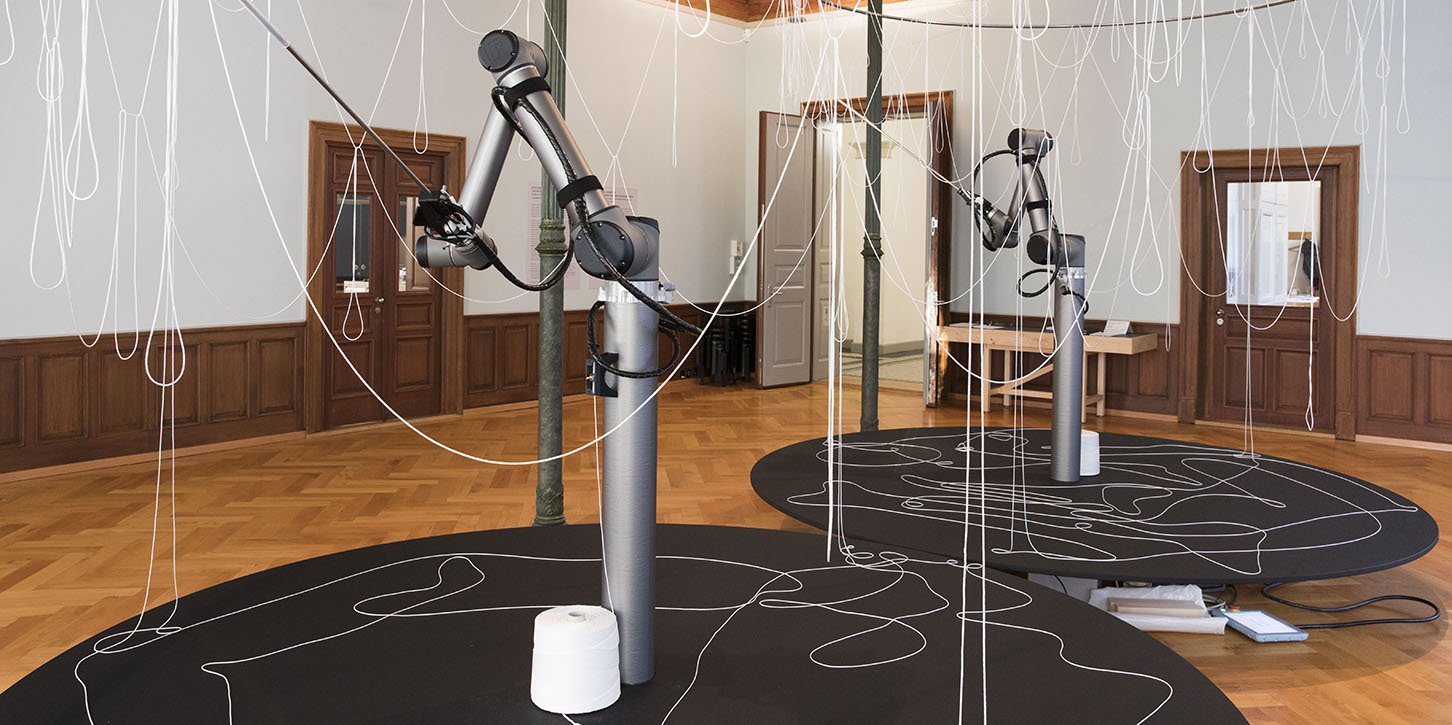
Installation view exhibition “Gravitational Assertions. Yves Netzhammer / Gramazio Kohler Research”,
© Graphische Sammlung ETH Zürich, photo: Livio Baumgartner
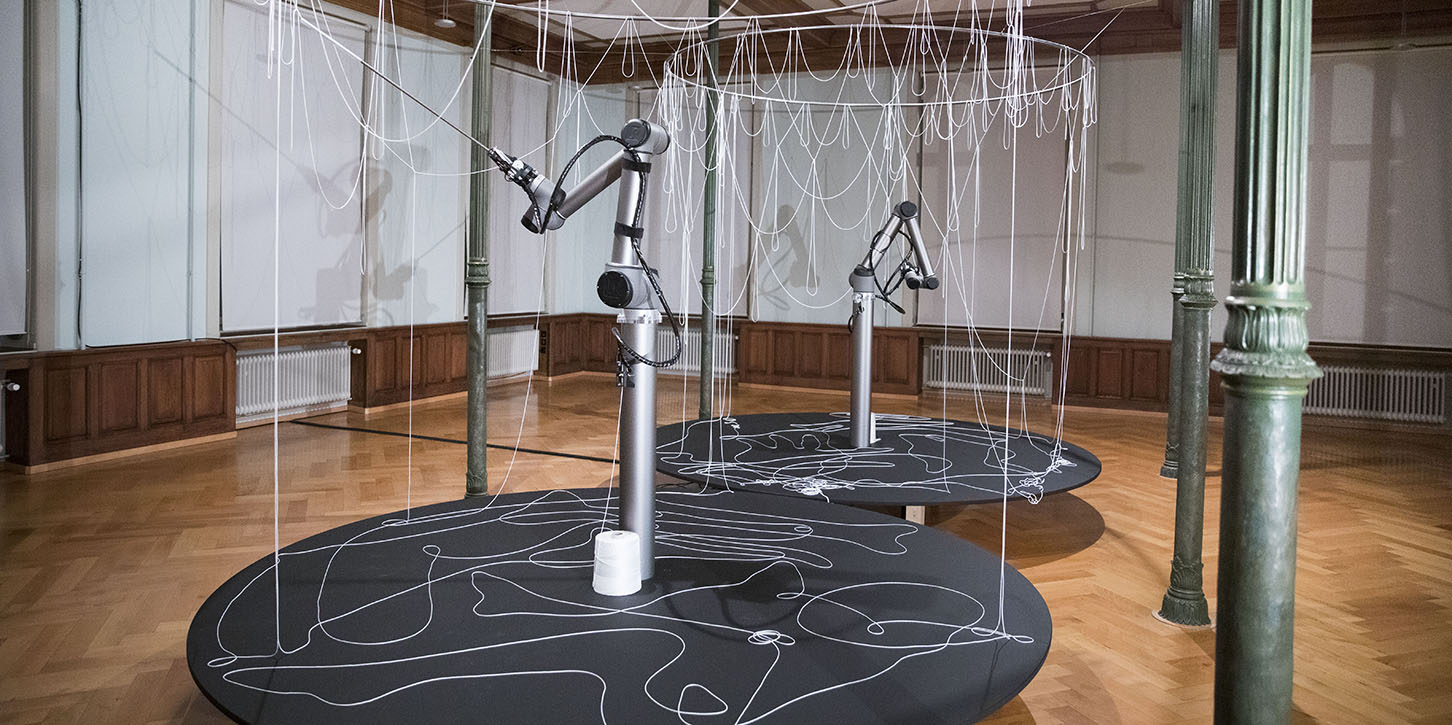
Installation view exhibition “Gravitational Assertions. Yves Netzhammer / Gramazio Kohler Research”,
© Graphische Sammlung ETH Zürich, photo: Livio Baumgartner
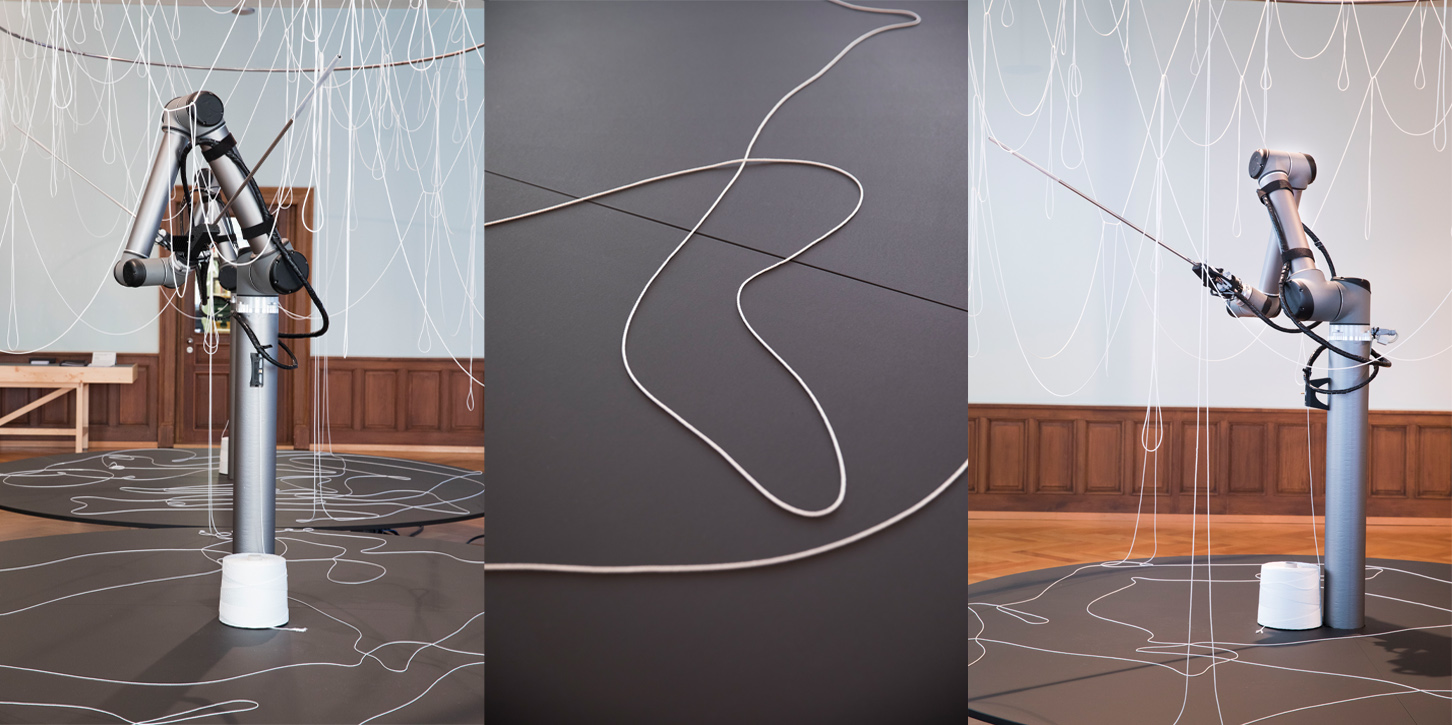
Installation views exhibition “Gravitational Assertions. Yves Netzhammer / Gramazio Kohler Research”,
© Graphische Sammlung ETH Zürich, photos: Livio Baumgartner
In her work, the international acclaimed Spanish artist Lara Almarcegui (*1972) investigates urban zones, she explores the relation between construction, decay and regeneration of our built world and engages with property situations of natural resources. Almarcegui describes her approach as follows: “I am searching for a way to talk about architecture while avoiding images.” She succeeds in doing so by meticulously doing researches, by gathering information and creating a dense net out of them. In the exhibition of ETH’s collection of prints and drawings, there will be a particular focus on the impact of drawing and other works on paper for the first time. These works enable the viewer to understand how the artist approaches her topics. With its focus on works on paper, the Graphische Sammlung ETH Zürich is expanding our view of the work of this important artist and at the same time presenting a previously less-known area of her work.
Exhibition generously supported by:
– Ernst und Olga Gubler-Hablützel Stiftung
– Dr. Georg und Josi Guggenheim-Stiftung
Curator: Dr. Linda Schädler, Head Graphische Sammlung ETH Zürich
Flyer exhibition
Flyer symposium
Press release
Figures and captions
List of works
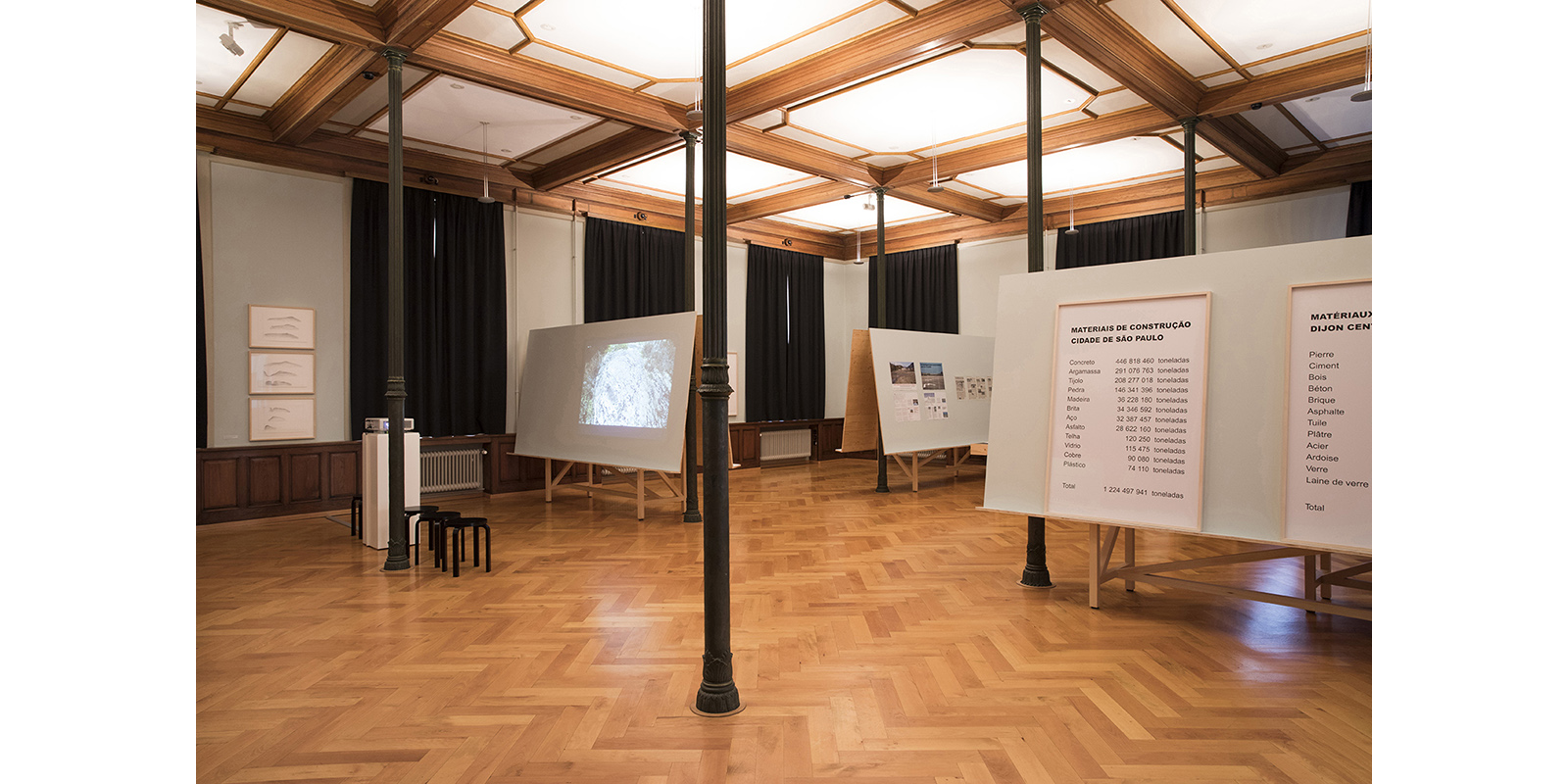
Installation view exhibition “Lara Almarcegui. Deep Inside – Out”,
© Graphische Sammlung ETH Zürich, photo: Livio Baumgartner

Installation view exhibition “Lara Almarcegui. Deep Inside – Out”,
© Graphische Sammlung ETH Zürich, photo: Livio Baumgartner
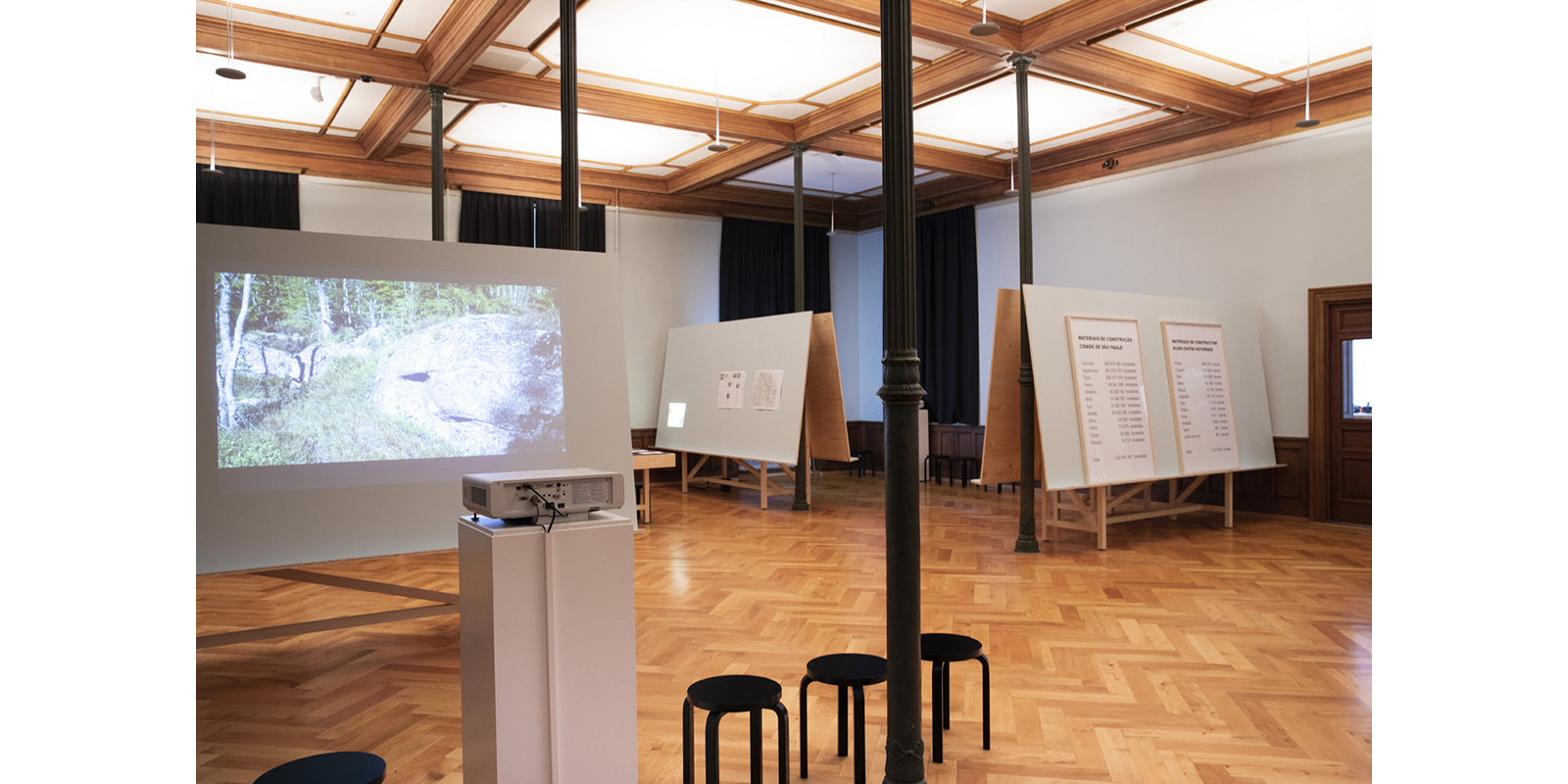
Installation view exhibition “Lara Almarcegui. Deep Inside – Out”,
© Graphische Sammlung ETH Zürich, photo: Livio Baumgartner
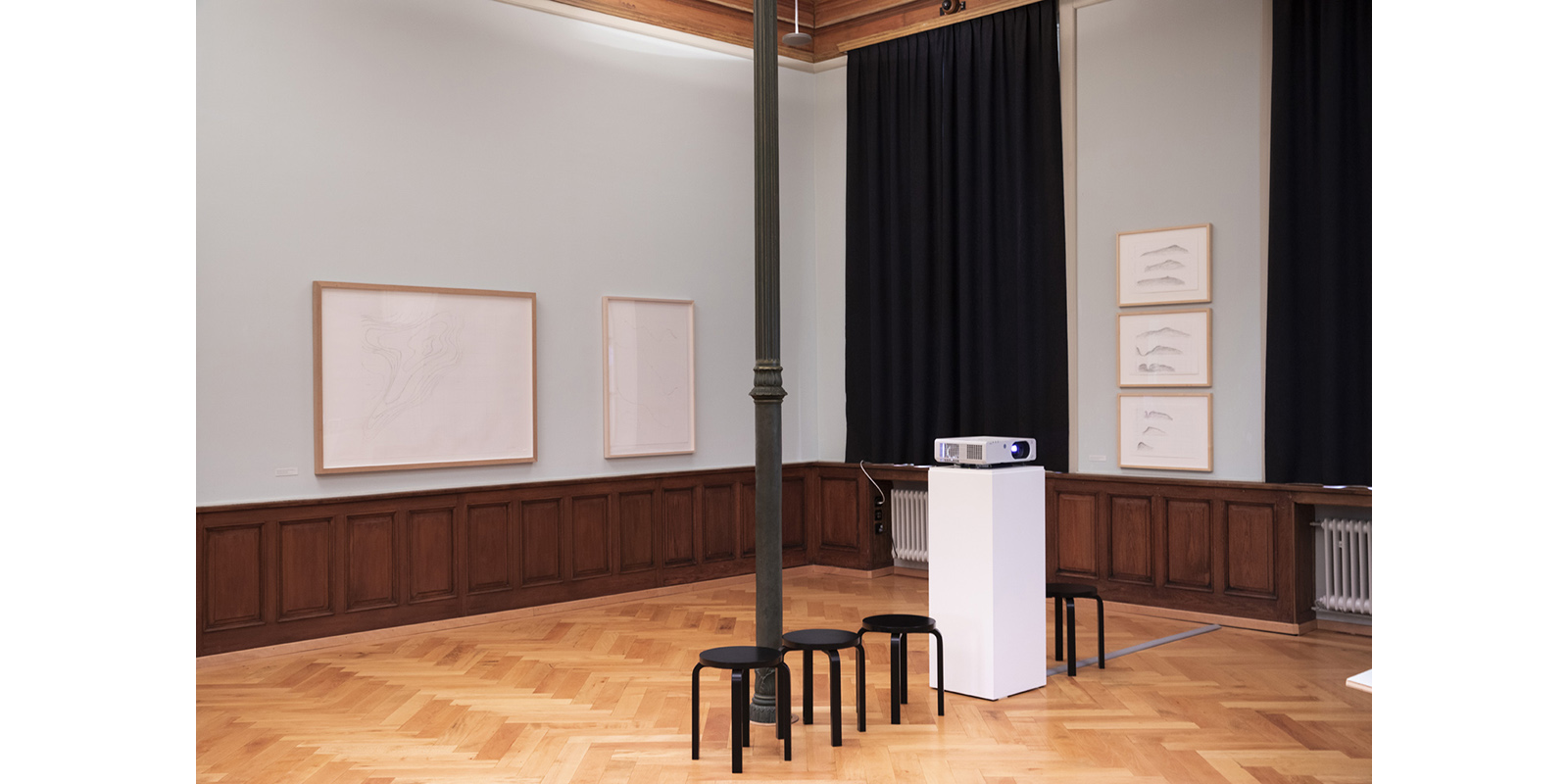
Installation view exhibition “Lara Almarcegui. Deep Inside – Out”,
© Graphische Sammlung ETH Zürich, photo: Livio Baumgartner

Installation view exhibition “Lara Almarcegui. Deep Inside – Out”,
© Graphische Sammlung ETH Zürich, photo: Livio Baumgartner
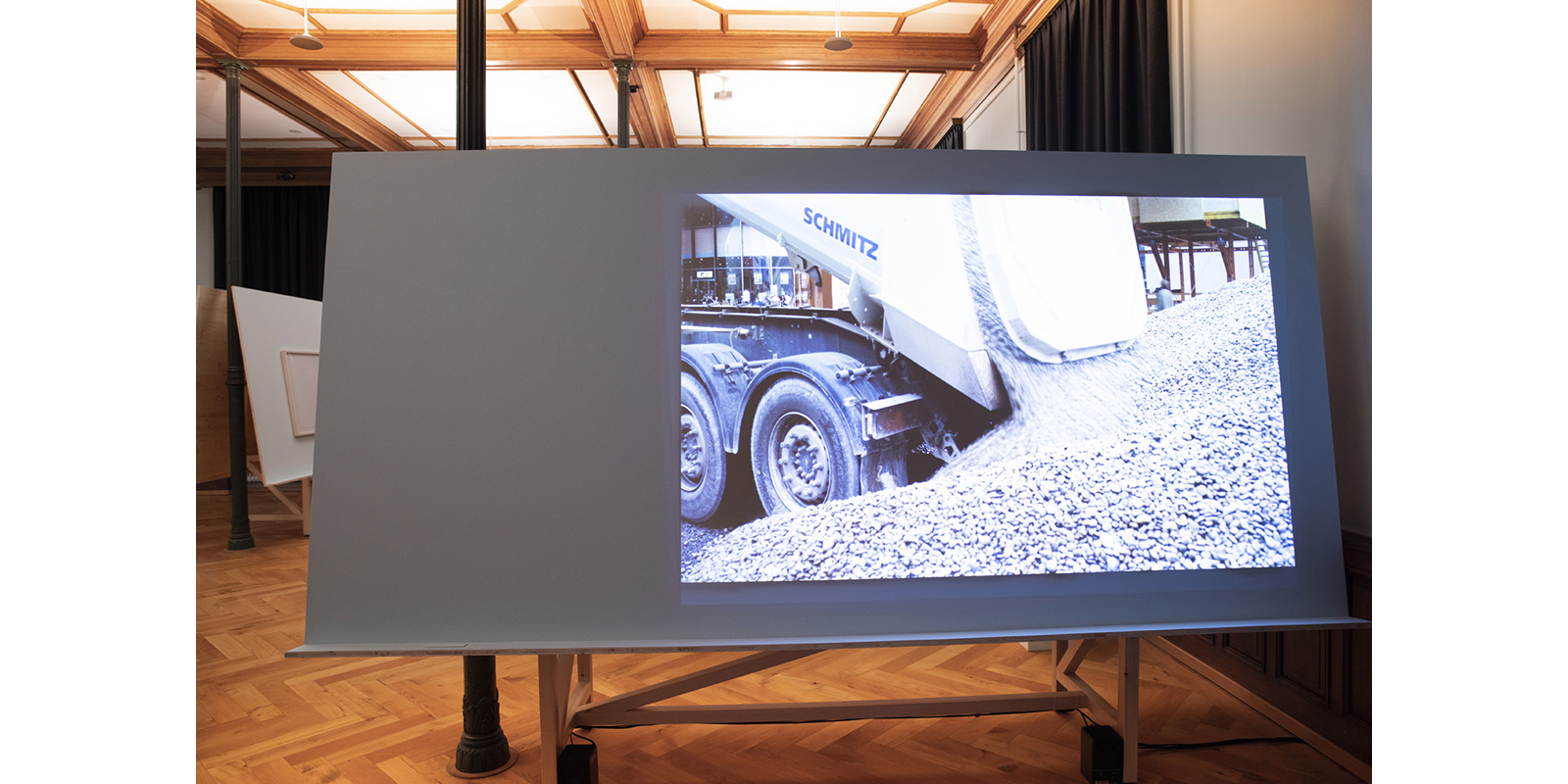
Installation view exhibition “Lara Almarcegui. Deep Inside – Out”,
© Graphische Sammlung ETH Zürich, photo: Livio Baumgartner
The best way to find out what holds the world together at its very core is to cut it open. Cathedrals, skulls, the hulls of ships, the circles of hell, volcanoes, blossoms, caterpillars or even entire mountain chains – nothing and nobody can escape the exploring cut. Be it a cross section or a longitudinal section, the most important thing is that it runs right through the middle. The world opened up in this way is presented as images, models or at the object of curiosity itself.
The exhibition shows how the cross section functions as a visual principle of insight.
It is presented as a versatile and effective method of visual communication, be it in medicine, architecture, biology or geology. The works in the exhibition tell an exemplary story of the symbiotic relationship between art and science. While scientific researchers adopt many of the established methods, techniques and compositional strategies of art in order to visualize their findings, artists, in turn, appropriate the specific visual syntax of the sciences in a way that at times seems to verge on expropriation.
The method of obtaining certainty about invisible inner worlds by cutting clearly through it, not only connects art and science, but also very different epochs. The exhibition shows cross-sections from the 15th century to the present. Not all of them come from the Graphische Sammlung: important loans from a total of eight different ETH collections and archives enter into a dialogue with them.
Audio files for selected works can be accessed via a QR code, which are spoken by the curators of the collections and archives or by the artists themselves.
Curator: Dr. Susanne Pollack
Flyer
Press release
Figures and captions
List of works
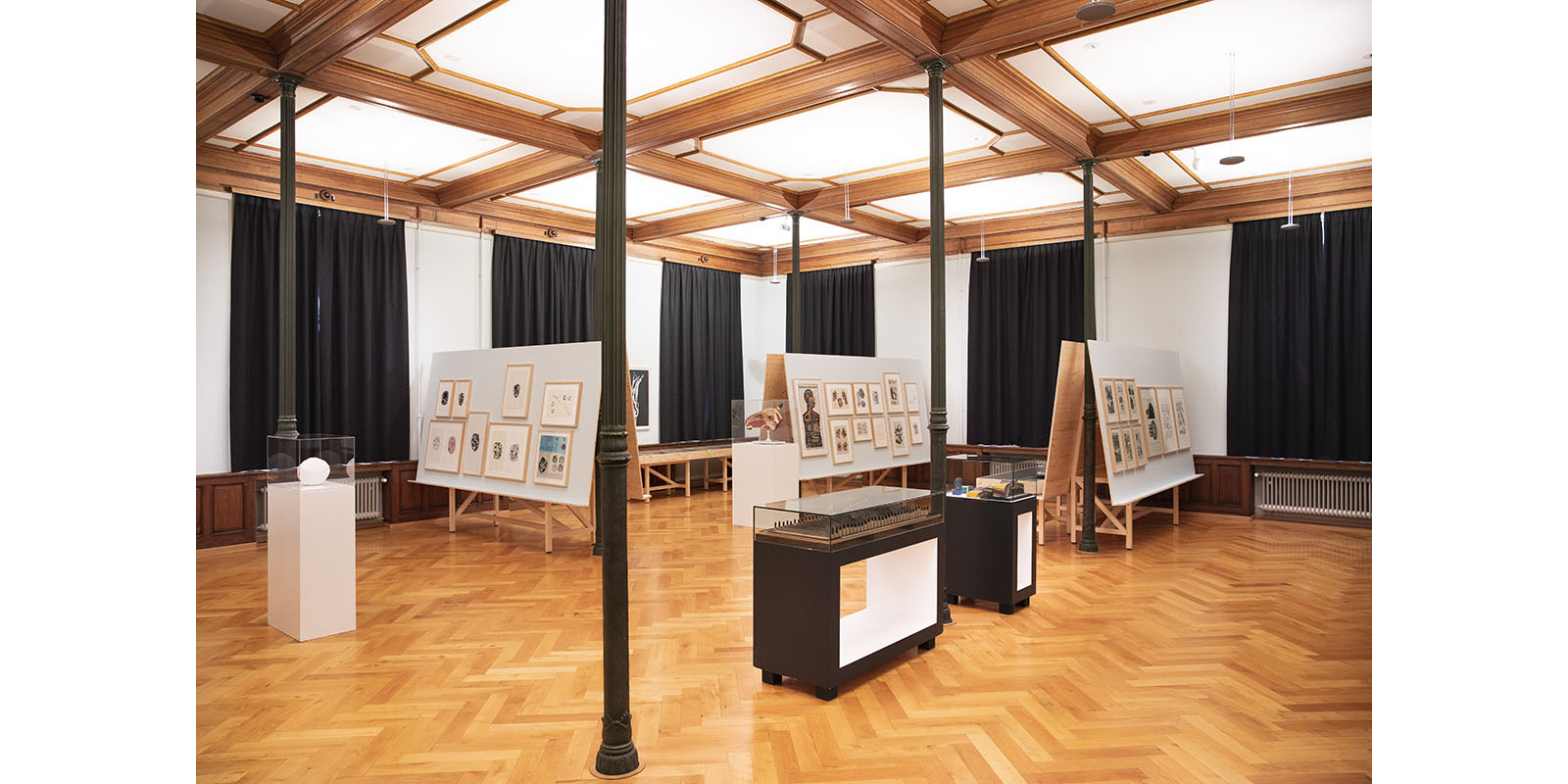
Installation view exhibition «Through Walls and Layers. Cross-Section in Art and Science»,
© Graphische Sammlung ETH Zürich, photo: Livio Baumgartner
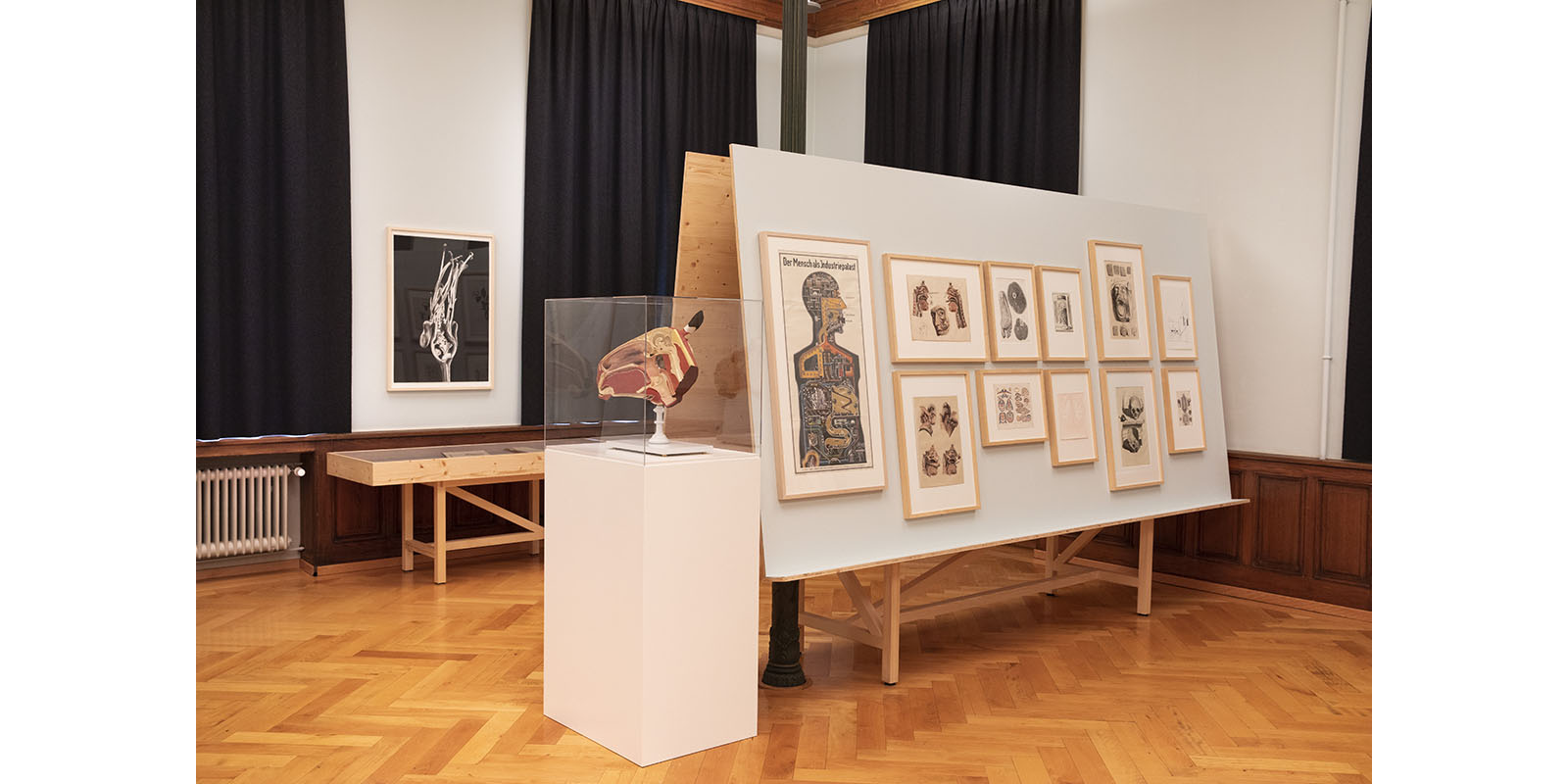
Installation view exhibition «Through Walls and Layers. Cross-Section in Art and Science»,
© Graphische Sammlung ETH Zürich, photo: Livio Baumgartner

Installation view exhibition «Through Walls and Layers. Cross-Section in Art and Science»,
© Graphische Sammlung ETH Zürich, photo: Livio Baumgartner
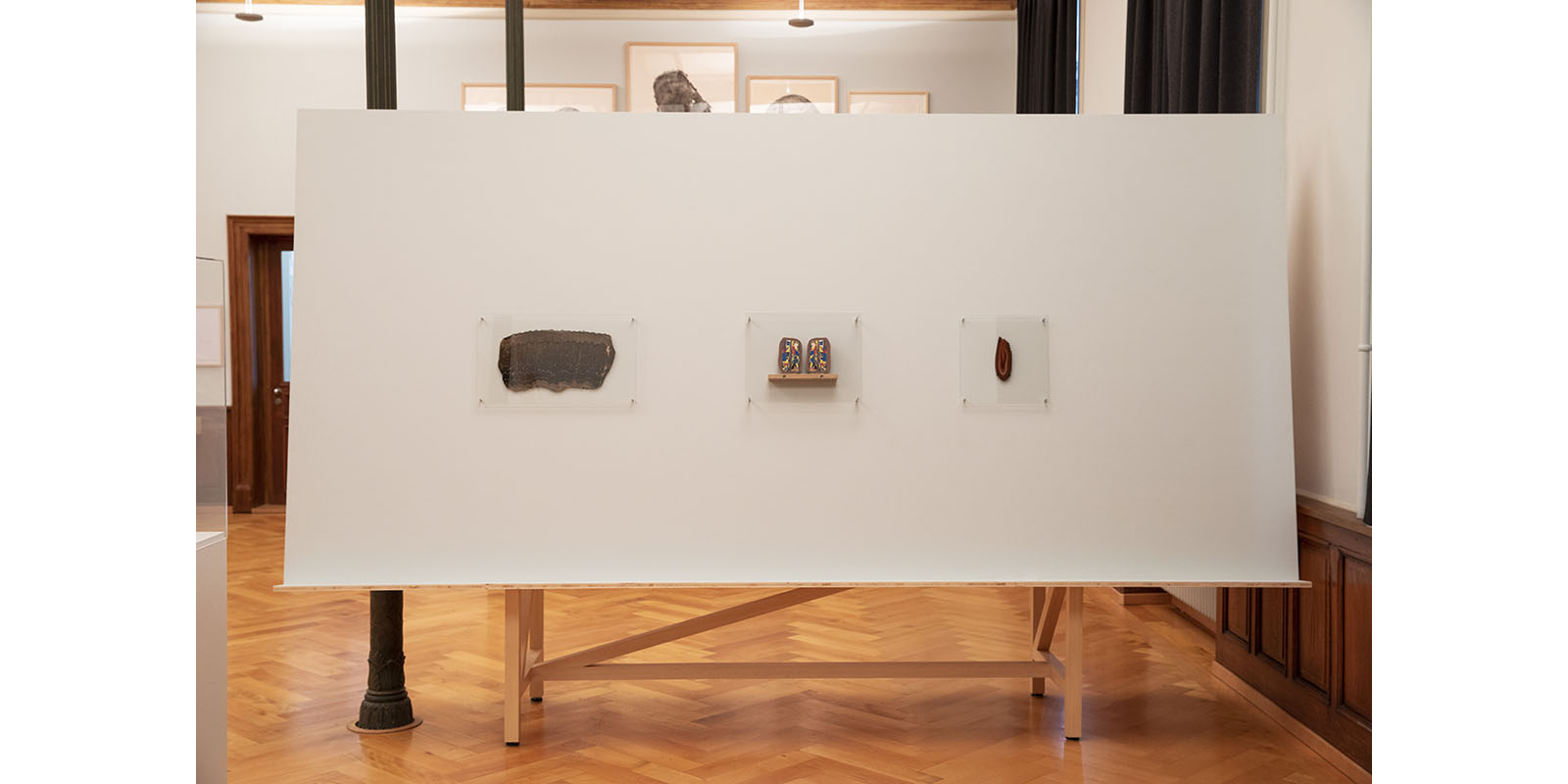
Installation view exhibition «Through Walls and Layers. Cross-Section in Art and Science»,
© Graphische Sammlung ETH Zürich, photo: Livio Baumgartner
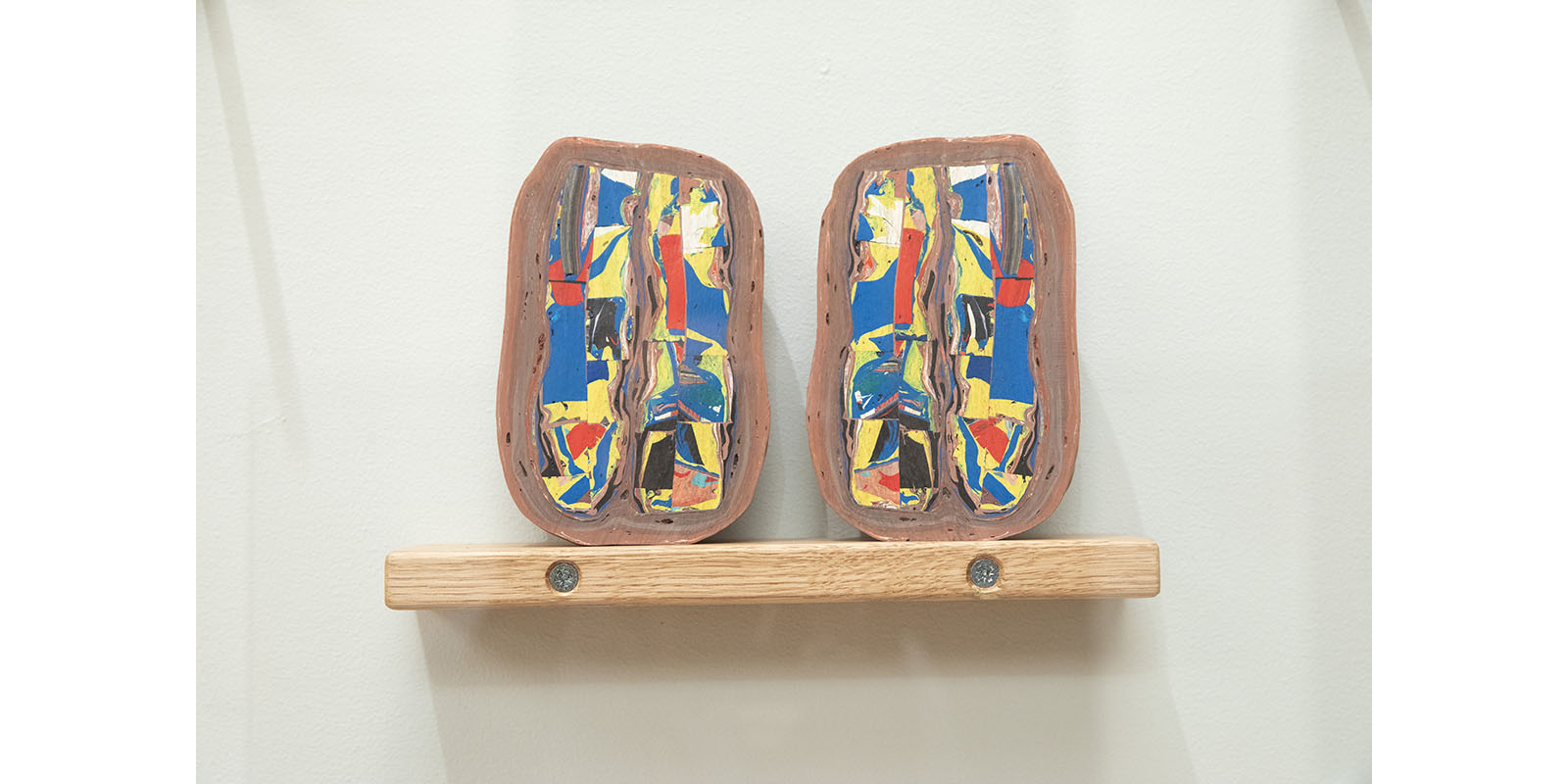
Installation view exhibition «Through Walls and Layers. Cross-Section in Art and Science»,
© Graphische Sammlung ETH Zürich, photo: Livio Baumgartner

Installation view exhibition «Through Walls and Layers. Cross-Section in Art and Science»,
© Graphische Sammlung ETH Zürich, photo: Livio Baumgartner

Installation view exhibition «Through Walls and Layers. Cross-Section in Art and Science»,
© Graphische Sammlung ETH Zürich, photo: Livio Baumgartner

Installation view exhibition «Through Walls and Layers. Cross-Section in Art and Science»,
© Graphische Sammlung ETH Zürich, photo: Livio Baumgartner
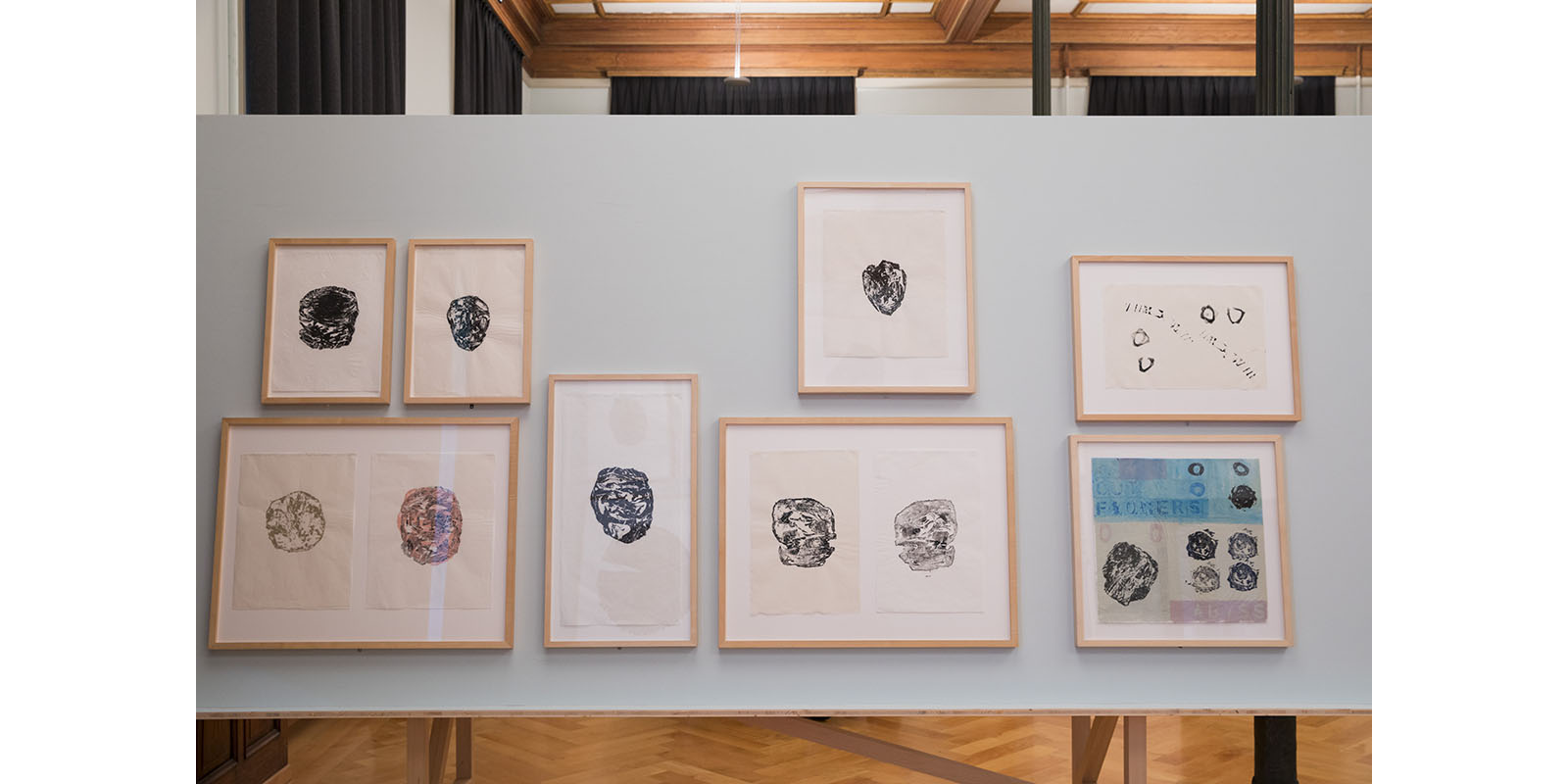
Installation view exhibition «Through Walls and Layers. Cross-Section in Art and Science»,
© Graphische Sammlung ETH Zürich, photo: Livio Baumgartner
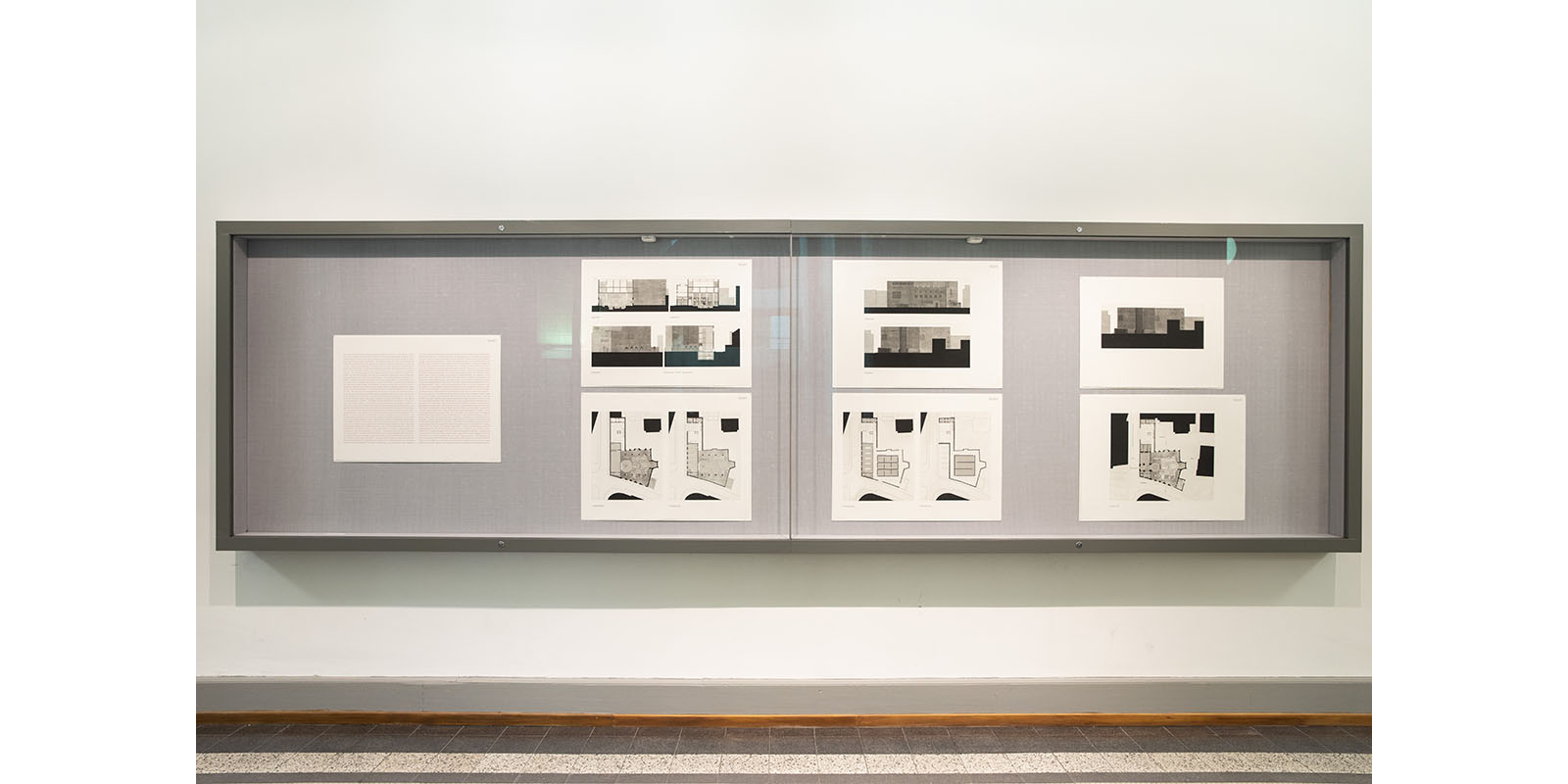
Installation view exhibition «Through Walls and Layers. Cross-Section in Art and Science»,
© Graphische Sammlung ETH Zürich, photo: Livio Baumgartner
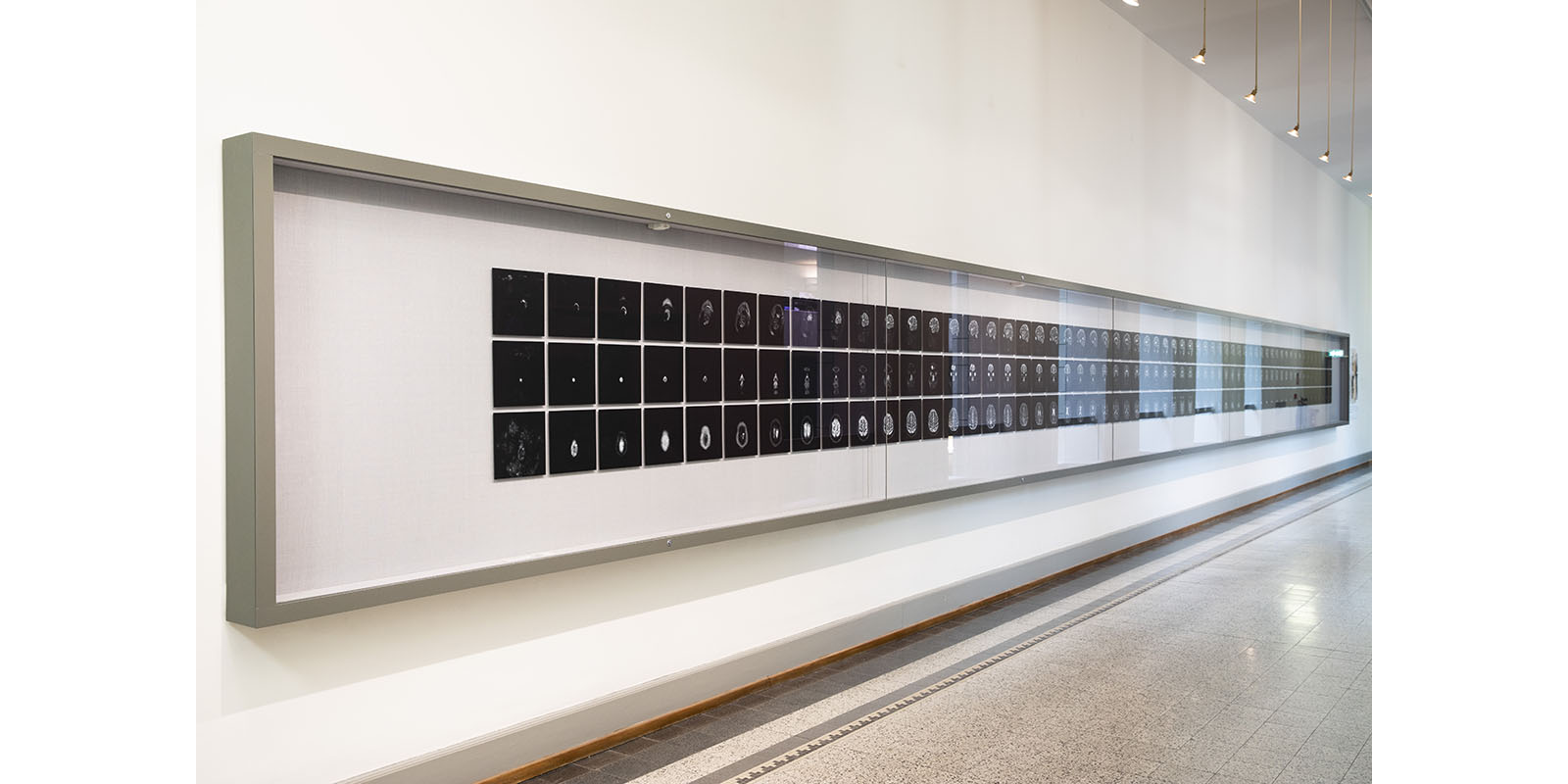
Installation view exhibition «Through Walls and Layers. Cross-Section in Art and Science»,
© Graphische Sammlung ETH Zürich, photo: Livio Baumgartner
Curator: Lena Schaller

Installation view exhibition “Ding / Unding. The Artist’s Book Unbound”,
© Graphische Sammlung ETH Zürich, photo: Livio Baumgartner
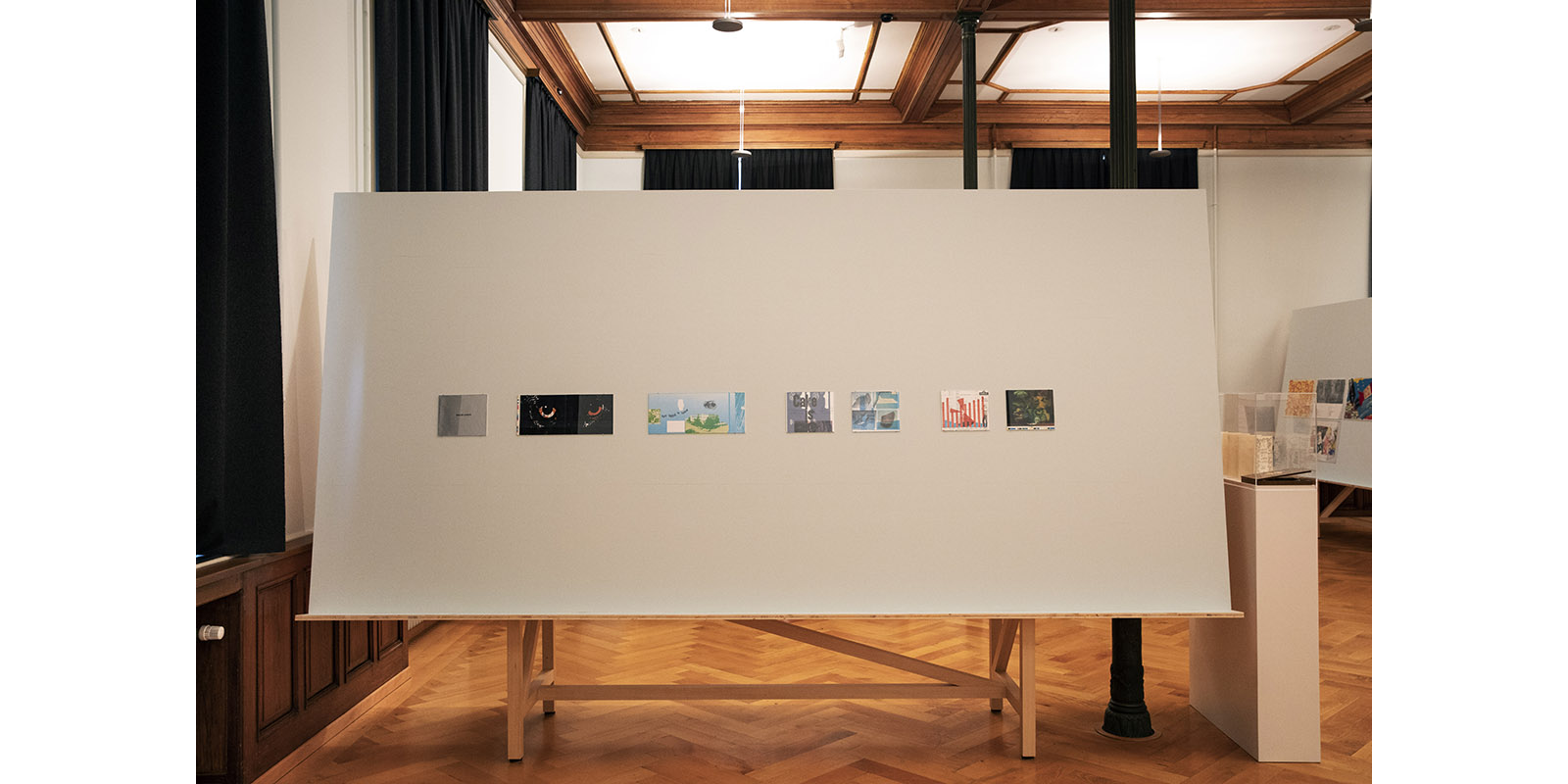
Installation view exhibition “Ding / Unding. The Artist’s Book Unbound”,
© Graphische Sammlung ETH Zürich, photo: Livio Baumgartner
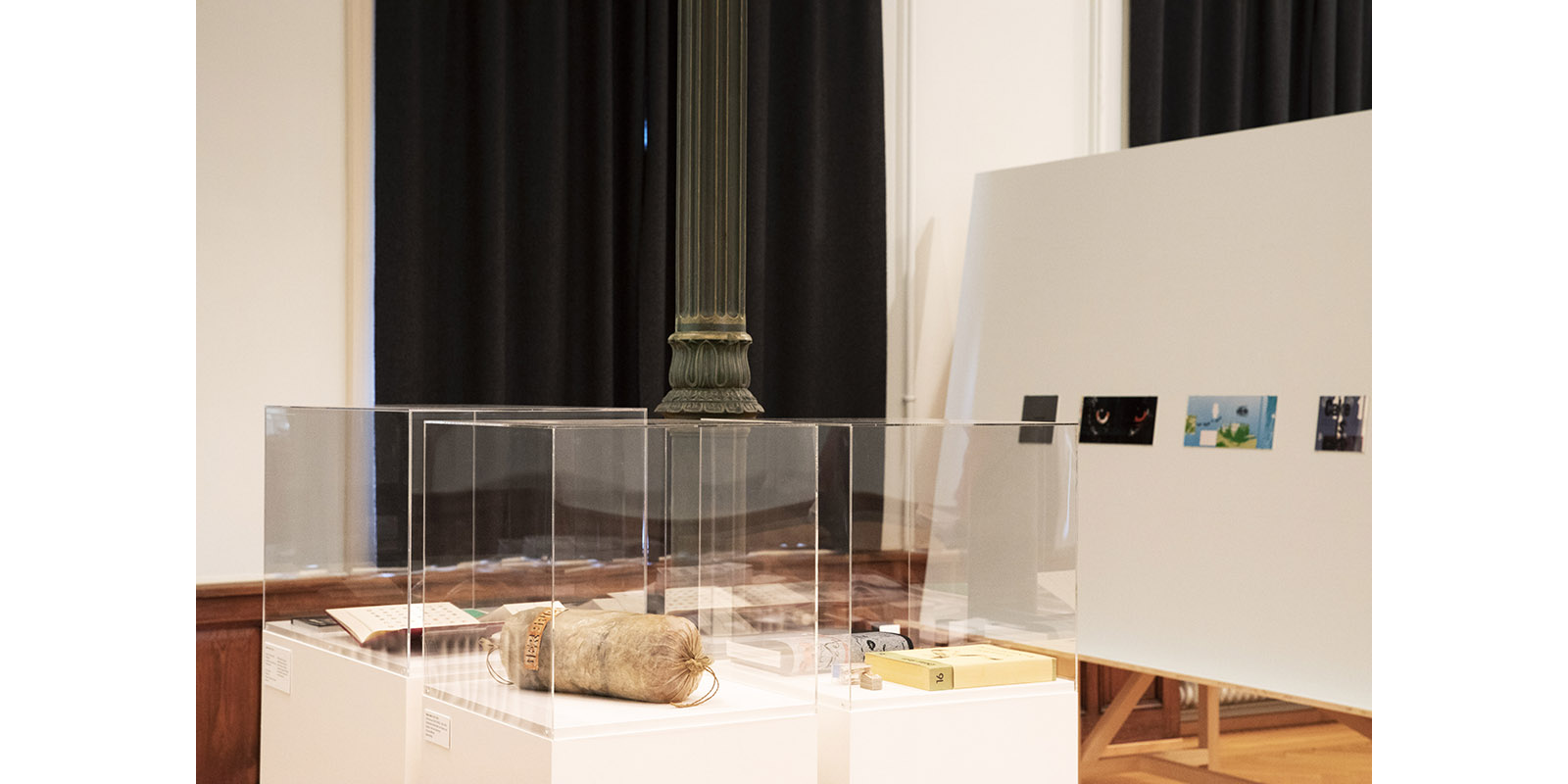
Installation view exhibition “Ding / Unding. The Artist’s Book Unbound”,
© Graphische Sammlung ETH Zürich, photo: Livio Baumgartner
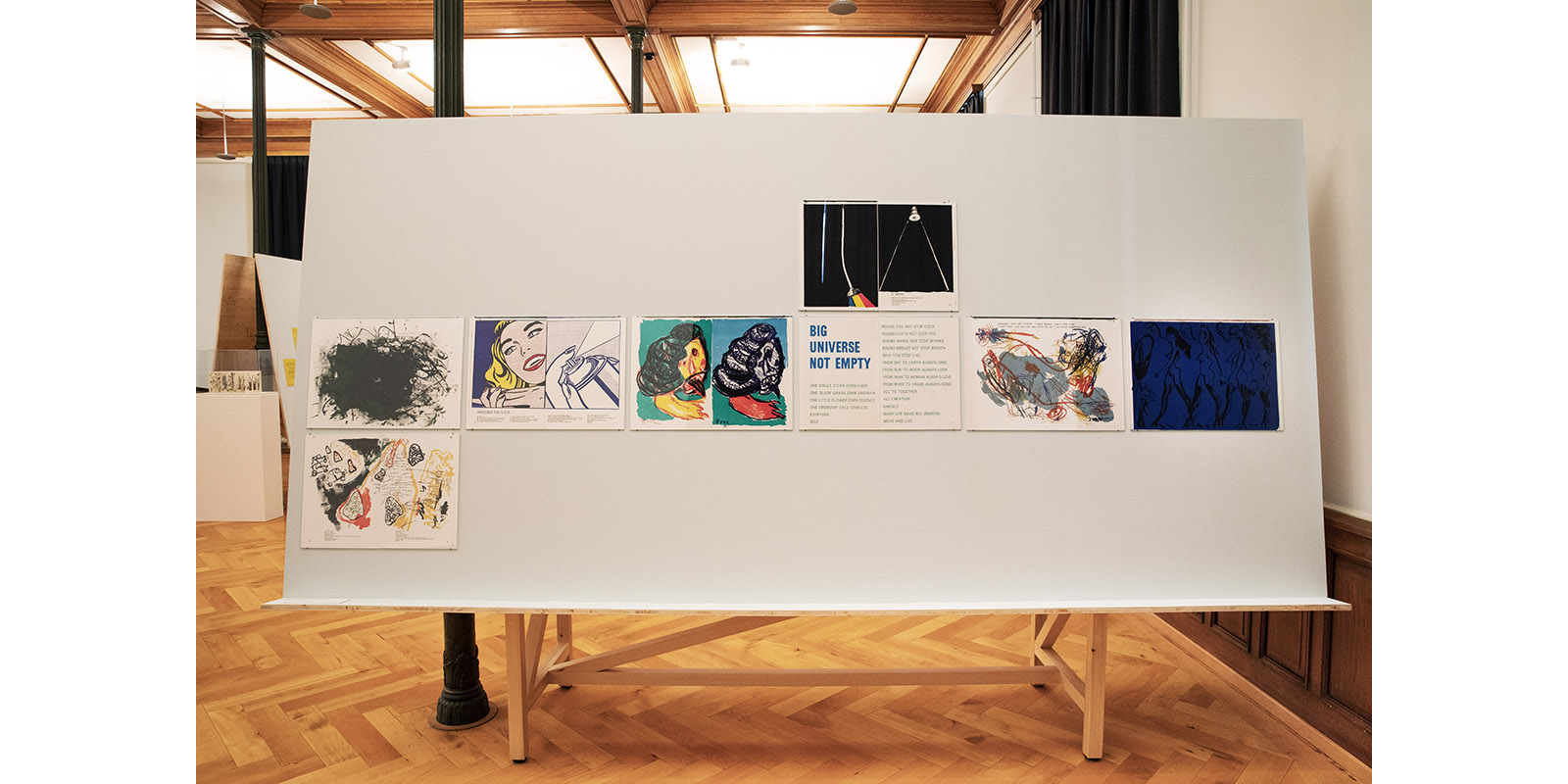
Installation view exhibition “Ding / Unding. The Artist’s Book Unbound”,
© Graphische Sammlung ETH Zürich, photo: Livio Baumgartner
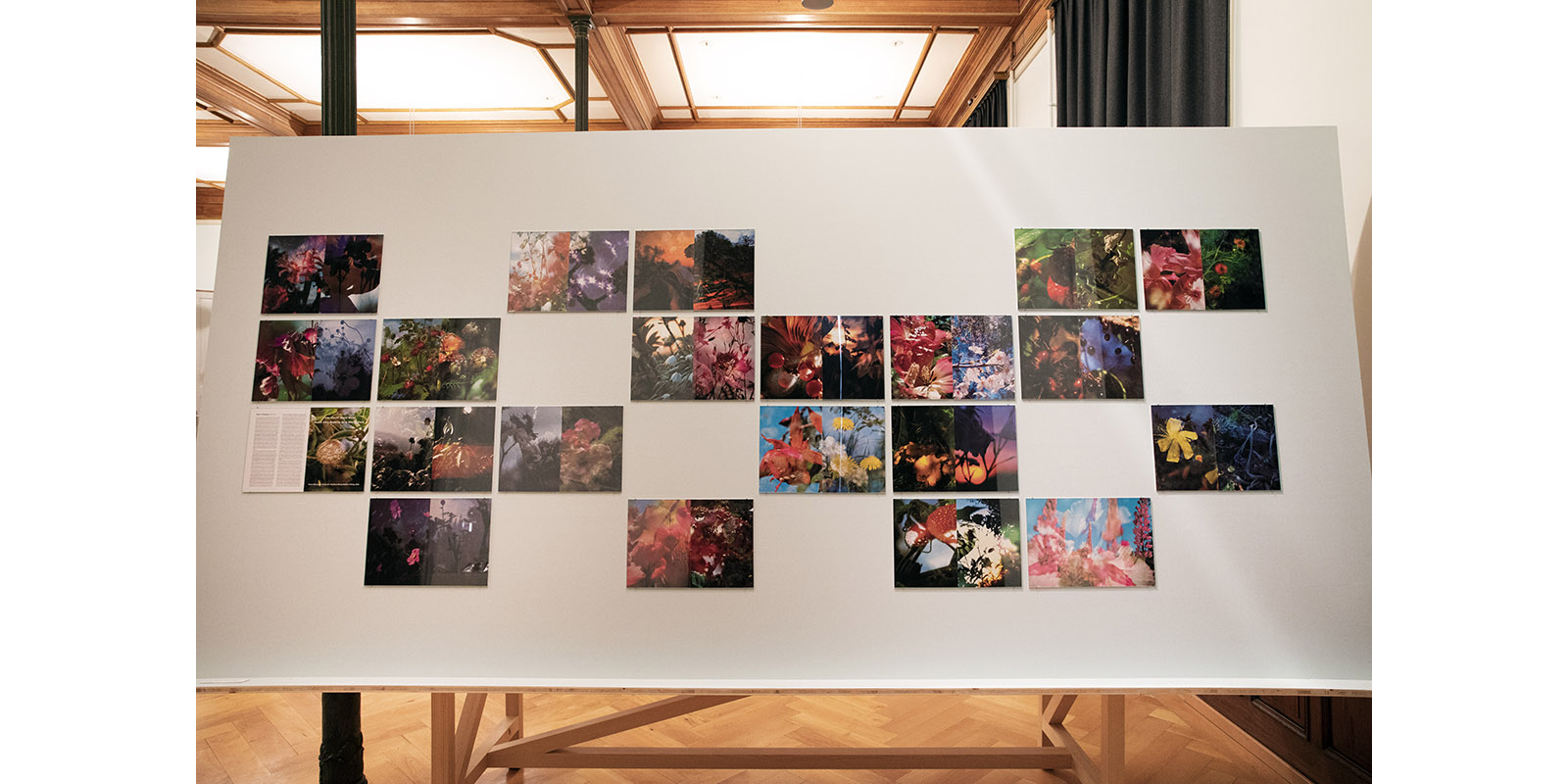
Installation view exhibition “Ding / Unding. The Artist’s Book Unbound”,
© Graphische Sammlung ETH Zürich, photo: Livio Baumgartner
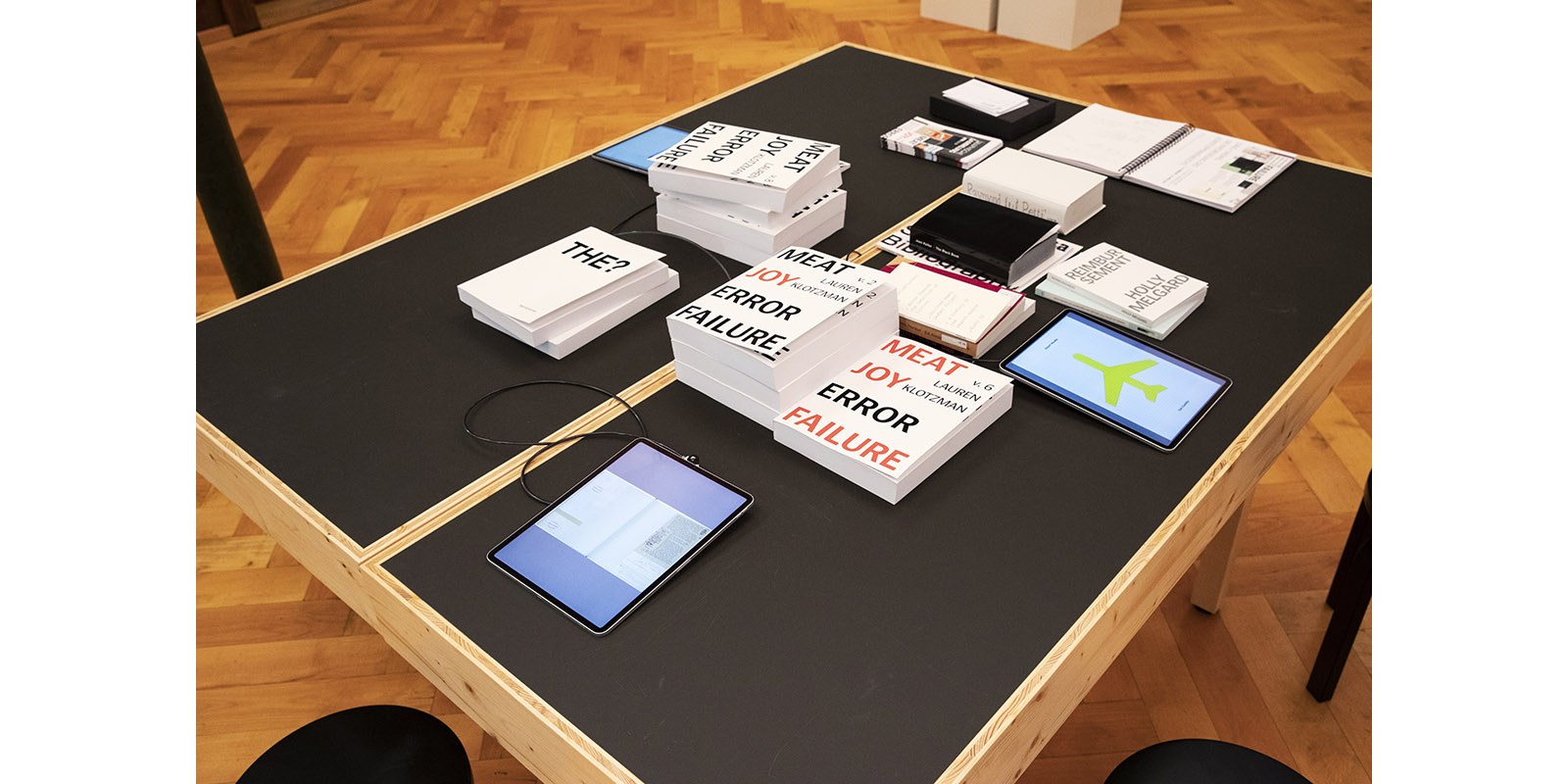
Installation view exhibition “Ding / Unding. The Artist’s Book Unbound”,
© Graphische Sammlung ETH Zürich, photo: Livio Baumgartner
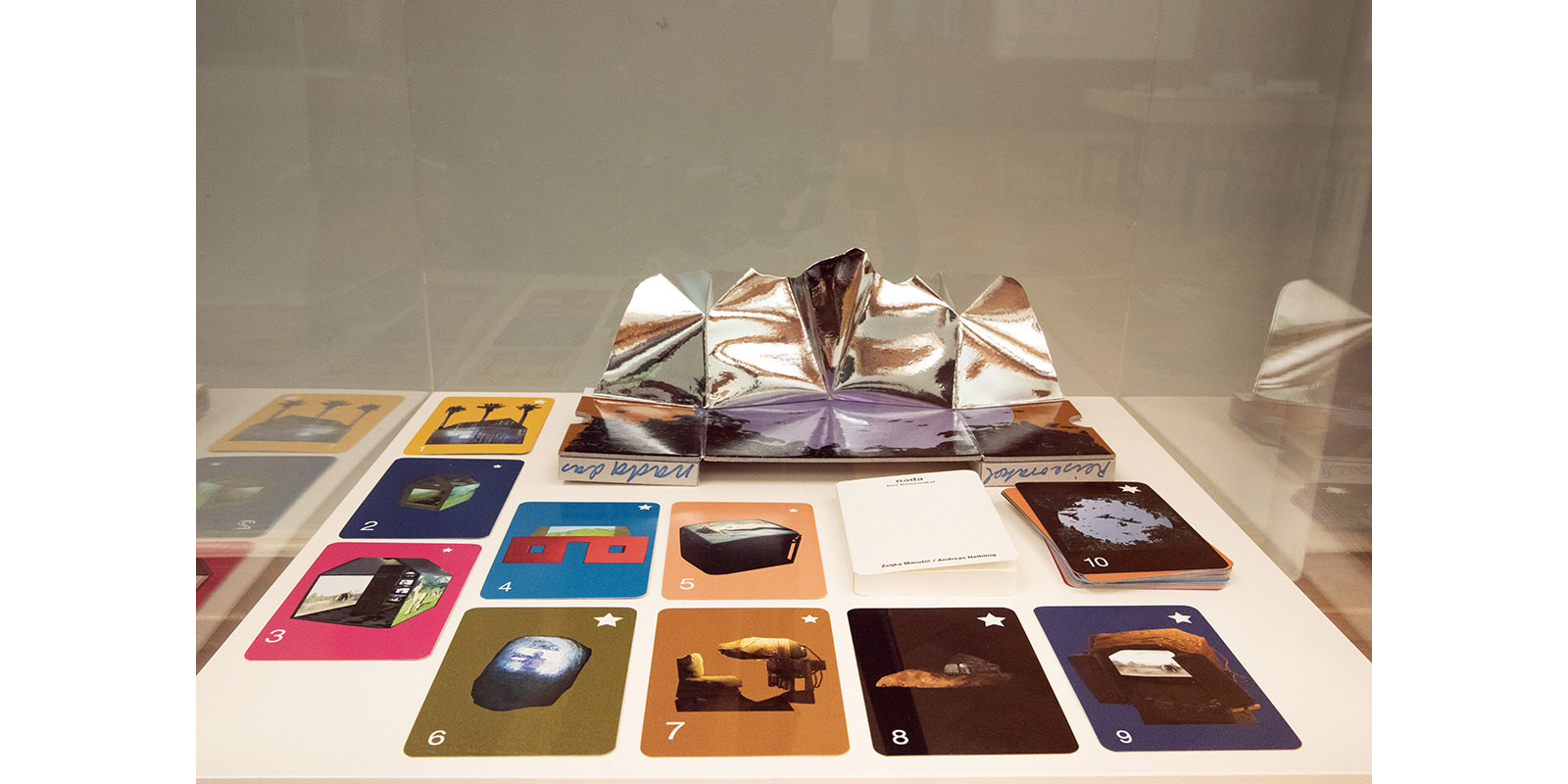
Installation view exhibition “Ding / Unding. The Artist’s Book Unbound”,
© Graphische Sammlung ETH Zürich, photo: Livio Baumgartner
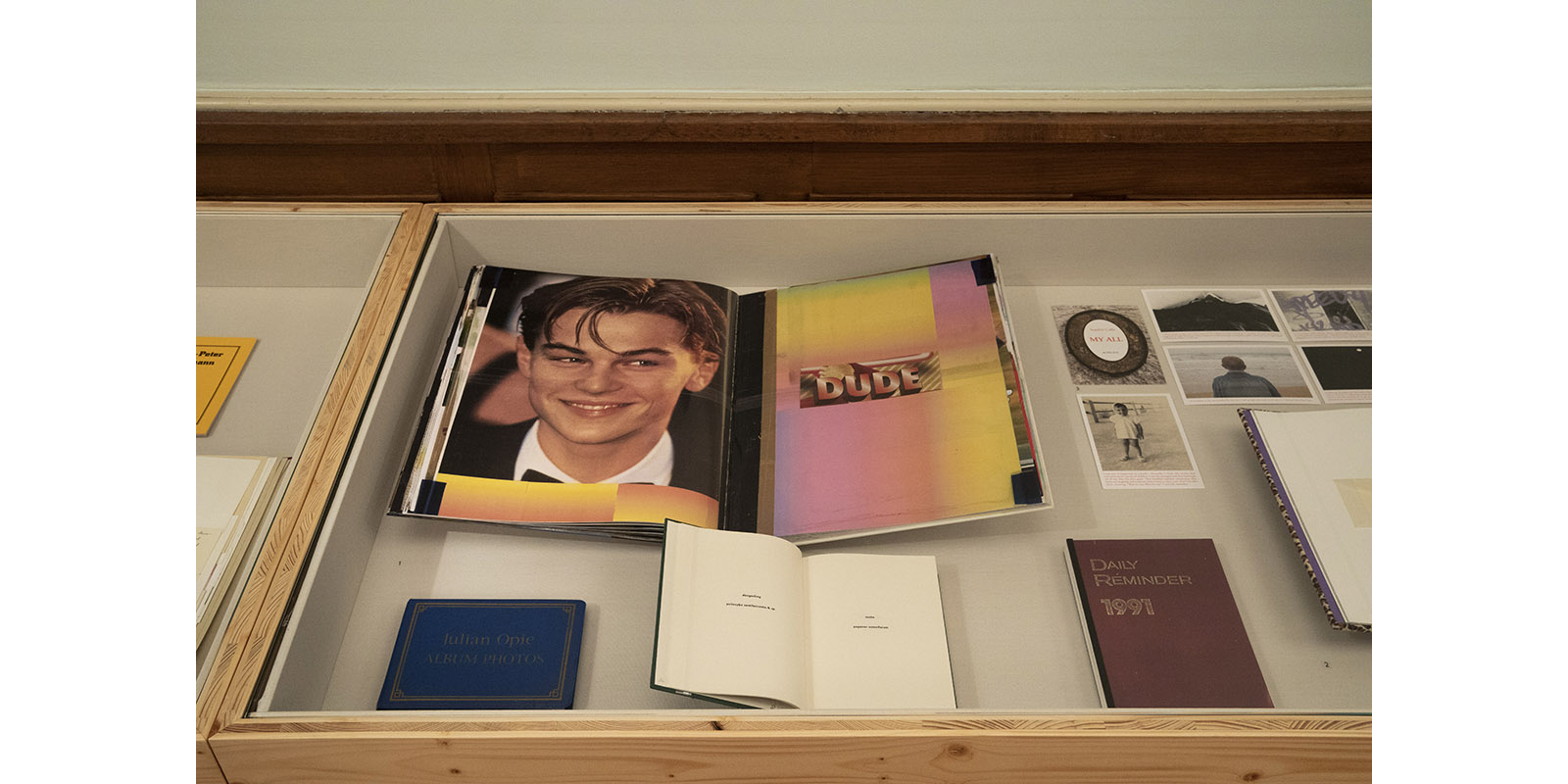
Installation view exhibition “Ding / Unding. The Artist’s Book Unbound”,
© Graphische Sammlung ETH Zürich, photo: Livio Baumgartner
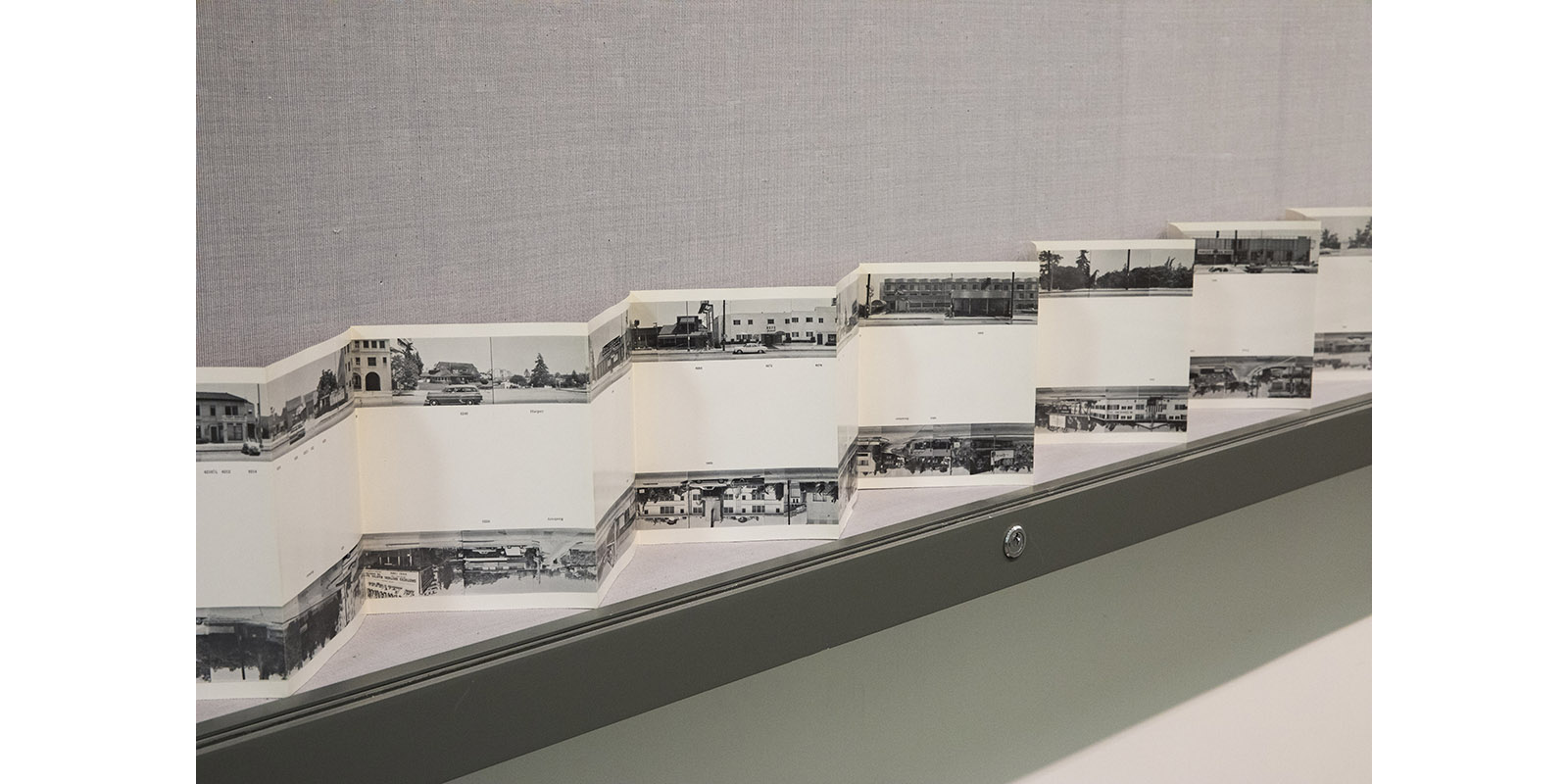
Installation view exhibition “Ding / Unding. The Artist’s Book Unbound”,
© Graphische Sammlung ETH Zürich, photo: Livio Baumgartner
Thomas Schütte (born 1954 in Oldenburg) is a leading contemporary artist. Arguably the most important German sculptor of our time, he is known in Switzerland mainly for his bronze figures and ceramics. In this latest exhibition, Graphische Sammlung ETH Zürich puts the focus on his works on paper, presenting them to a wider Swiss audience for the very first time. Schütte’s prints form an integral part of his œuvre, as evidenced by the stunning technical and thematic range of his many diverse series and portfolios. The exhibition presents an overview from the past thirty years featuring not only his famous images of women and flowers, but also highlighting some lesser-known aspects of this German artist’s work.
Thomas Schütte is not only the foremost German sculptor of our day, but is also a genuine draughtsman. It was a visit to Documenta 5 (1972) at the age of eighteen that prompted him to start drawing. One year later, he enroled at the Kunstakademie in Düsseldorf. With his strongly idiosyncractic approach and his technical virtuosity, Schütte has crafted a masterly range of prints alongside his sculptures and drawings. Since 2001, he has been working with Till Verclas to produce series and cycles of prints. Together with this renowned printer and his Hamburg studio, he has created works of astonishing beauty and quiet lyricism, at times full of intimacy, at others staring into the existential abyss. Carefully selected examples of his remarkably compact output, including works from major private collections, can be found in the exhibition.
Graphische Sammlung ETH Zürich holds two particularly important works by Thomas Schütte: copies of his famous and exquisitely designed book editions – Volume II. The Big Nix (2005) and Sweet Nothings (2008). Inspired by the classic painters‘ books that emerged in France in the early twentieth century, the artist has pursued this genre for several years. When not actually publishing the books himself, he has them produced with painstaking typographical and printerly care on hand-made paper in small editions. In the tradition of these livres de peintre, the artist‘s books by Thomas Schütte also include original prints as well as texts. However, the prints are neither pure illustrations nor free interpretations of any literary predecessor. Instead, the artist provides the text himself – either in the form of a short story in the appendix or in the form of diary-style notations.
This is why the finely crafted books by Thomas Schütte are at the very heart of this presentation. Alongside these are selected cycles of prints covering not only an astonishing range of themes but also a broad spectrum of the artist’s technical repertoire within this particular medium. On the one hand, this indicates his general tendency, very much in the spirit of the reformist movements of the 1960s and 1970s, to abandon the old, familiar, and now jaded visual syntax. On the other hand, such an exquisite printed œuvre melds with the almost dreamlike quality that highlights the artist’s peerless sophistication in the handling of classic printing techniques, which he interprets in a way that opens up vibrant new developments. This singular mastery is now displayed in a panoramic overview of the past thirty years that has been missing so far in Switzerland.
Curator: Alexandra Barcal, Graphische Sammlung ETH Zürich
Flyer
Press release
Figures and captions
List of exhibited works
These days, we regularly see top ten charts and ratings that rank the highest-profile and most expensive artworks around the world. But how have such league tables come into being, and how have they shaped a canon that defines the status of an individual artist? RELAX (chiarenza & hauser & co) have taken up the challenge of answering these questions while delving into the collection of the Graphische Sammlung ETH Zürich. The result is an installation featuring video, works on paper, spatial pieces and prints from the Collection. The exhibition space has been transformed into a study area for researching, reading, looking and lounging.
Curator: Dr Linda Schädler
Flyer
Press release
Figures and captions
Publication

Installation view exhibition “RELAX (chiarenza & hauser & co)
what do we want to keep? (was wollen wir behalten?)”,
© Graphische Sammlung ETH Zürich, photo: Livio Baumgartner

Installation view exhibition “RELAX (chiarenza & hauser & co)
what do we want to keep? (was wollen wir behalten?)”,
© Graphische Sammlung ETH Zürich, photo: Livio Baumgartner
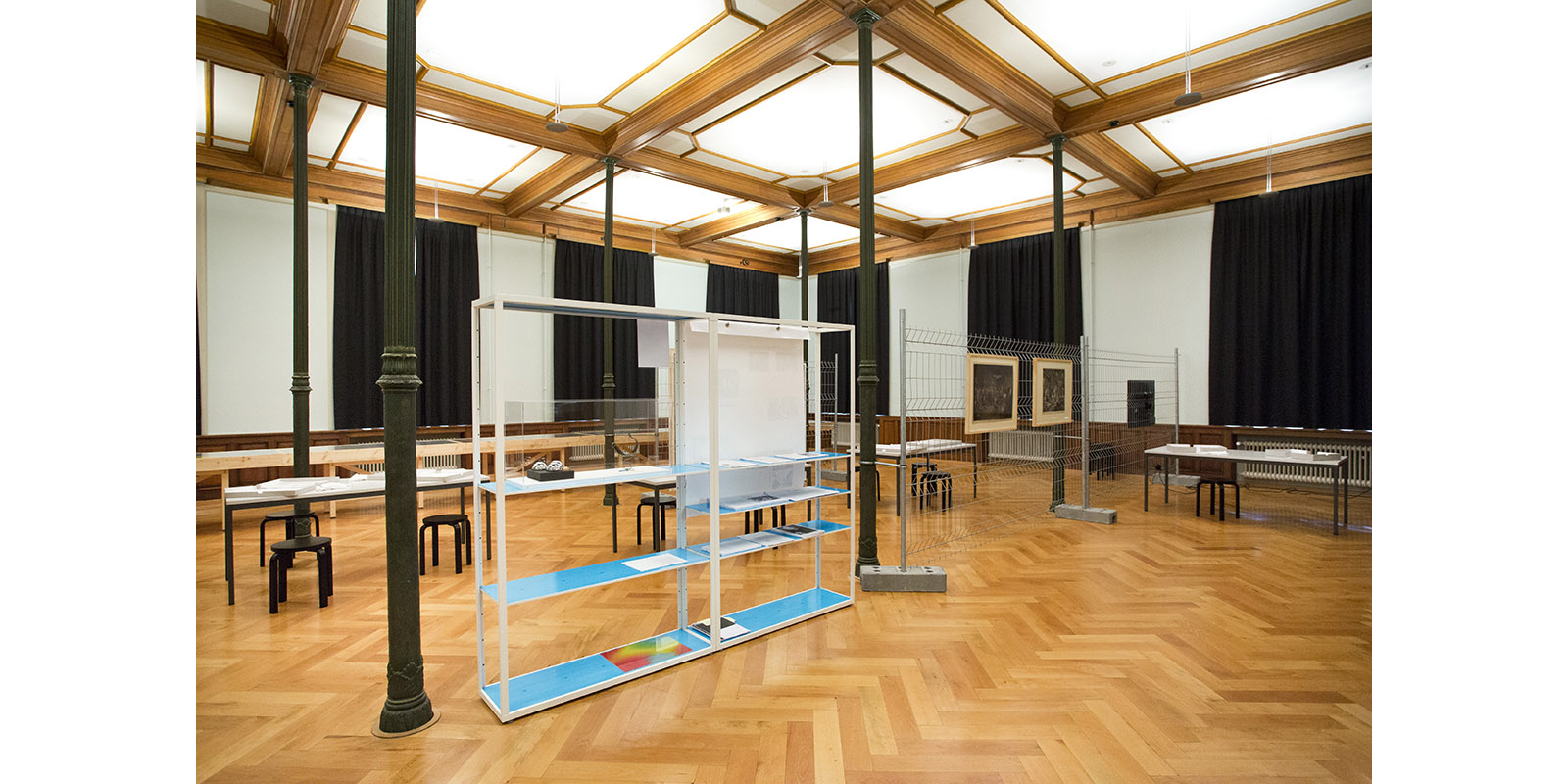
Installation view exhibition “RELAX (chiarenza & hauser & co)
what do we want to keep? (was wollen wir behalten?)”,
© Graphische Sammlung ETH Zürich, photo: Livio Baumgartner
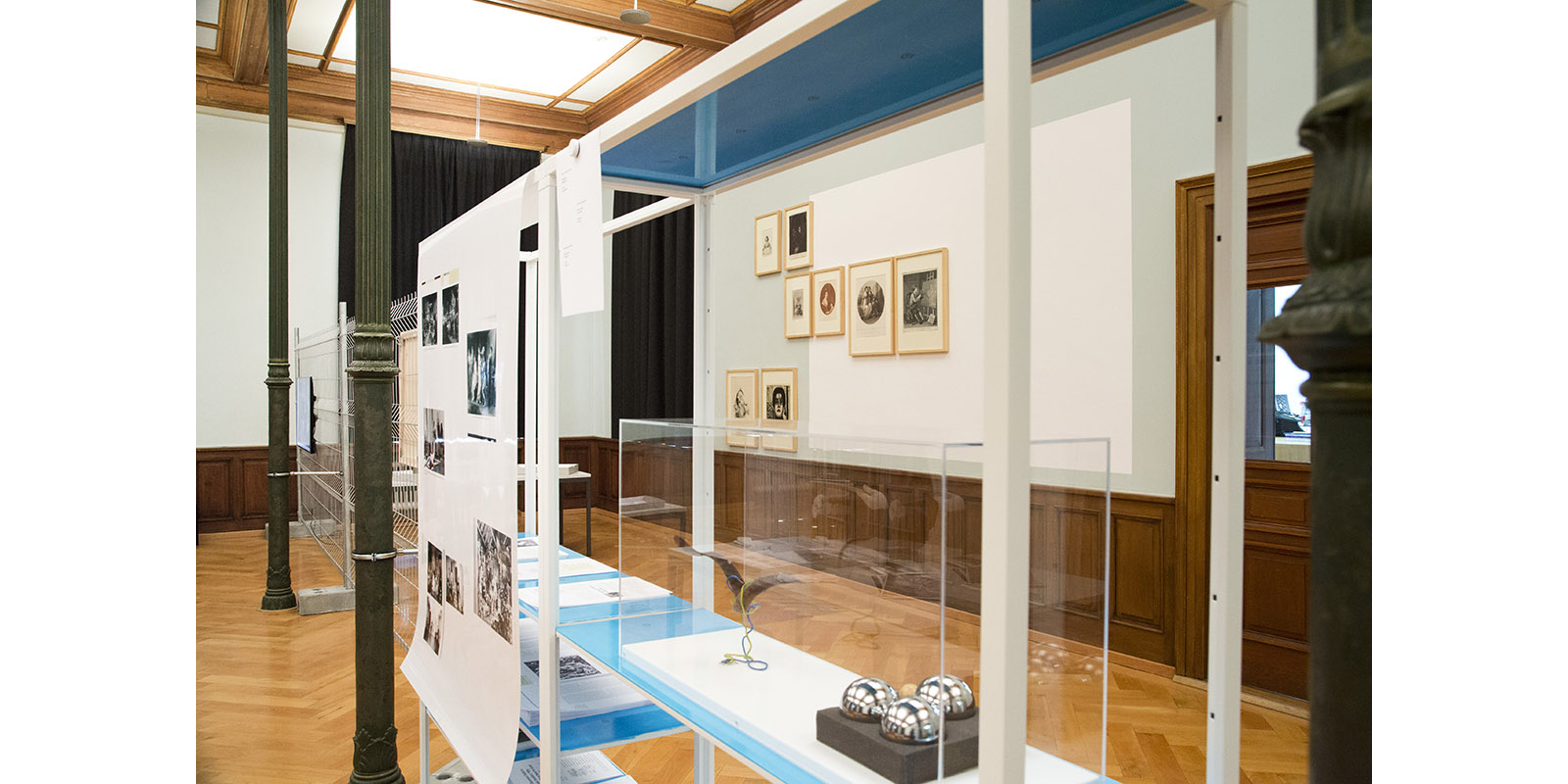
Installation view exhibition “RELAX (chiarenza & hauser & co)
what do we want to keep? (was wollen wir behalten?)”,
© Graphische Sammlung ETH Zürich, photo: Livio Baumgartner

Installation view exhibition “RELAX (chiarenza & hauser & co)
what do we want to keep? (was wollen wir behalten?)”,
© Graphische Sammlung ETH Zürich, photo: Livio Baumgartner
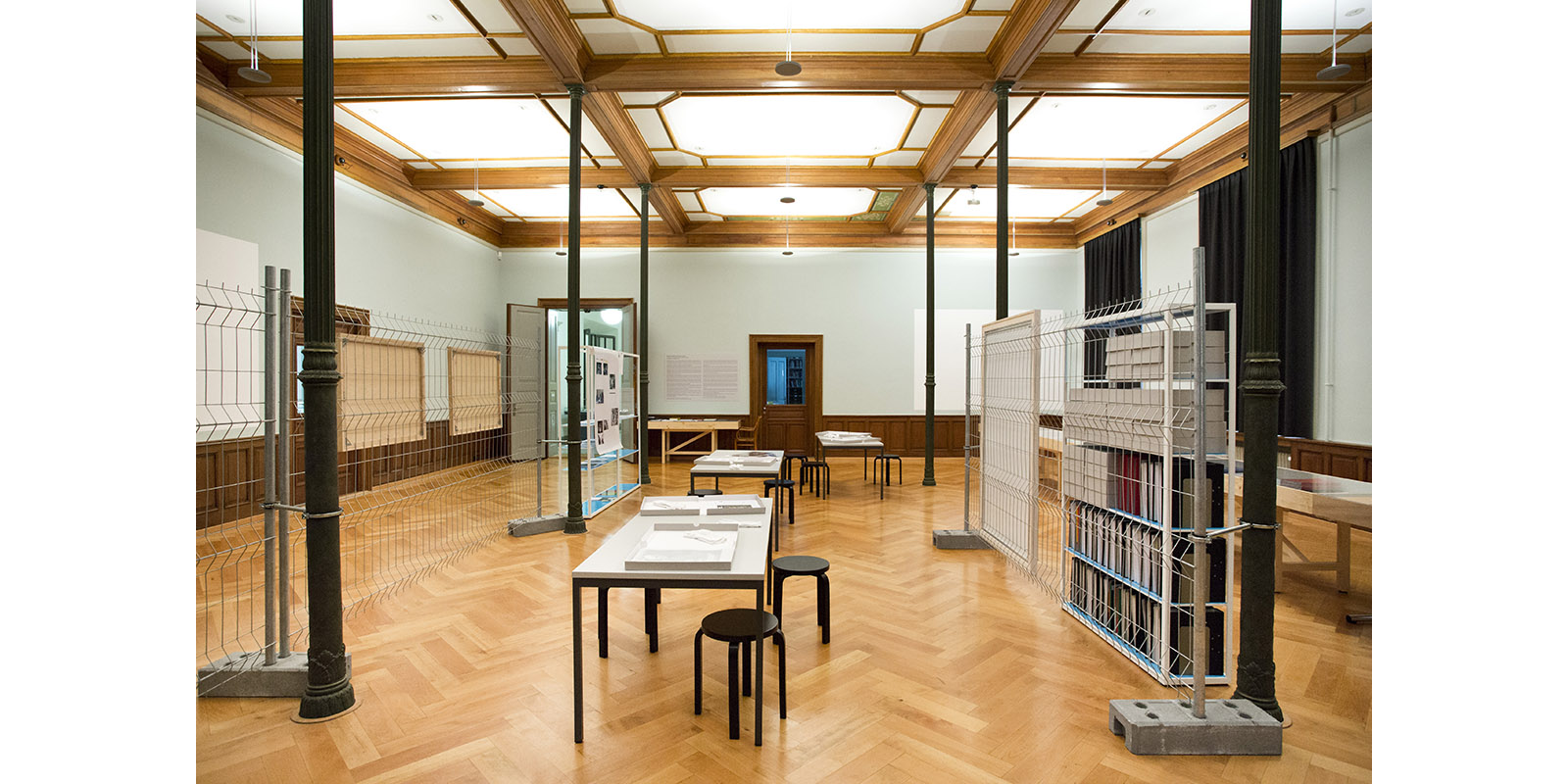
Installation view exhibition “RELAX (chiarenza & hauser & co)
what do we want to keep? (was wollen wir behalten?)”,
© Graphische Sammlung ETH Zürich, photo: Livio Baumgartner
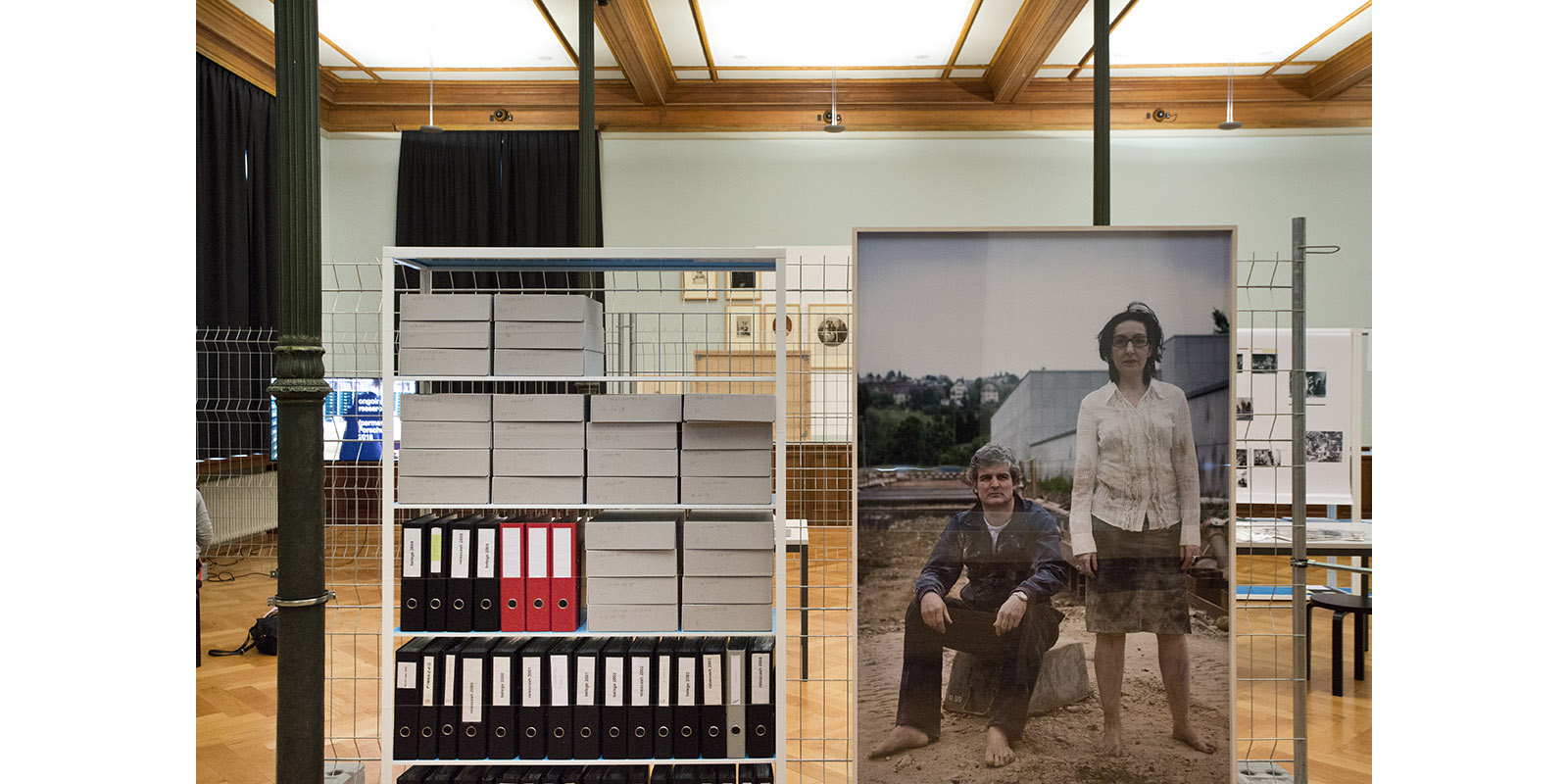
Installation view exhibition “RELAX (chiarenza & hauser & co)
what do we want to keep? (was wollen wir behalten?)”,
© Graphische Sammlung ETH Zürich, photo: Livio Baumgartner

Installation view exhibition “RELAX (chiarenza & hauser & co)
what do we want to keep? (was wollen wir behalten?)”,
© Graphische Sammlung ETH Zürich, photo: Livio Baumgartner
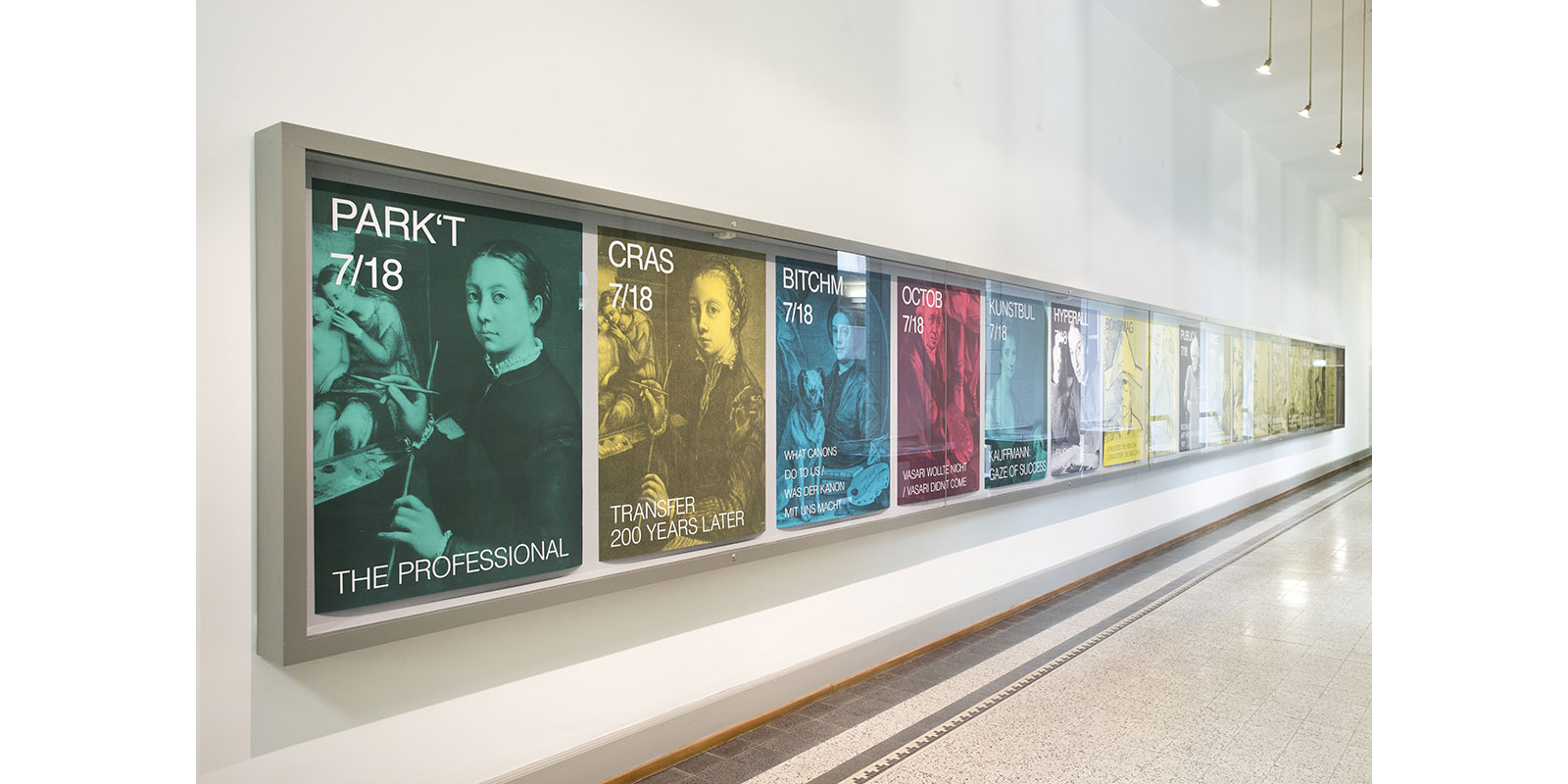
Installation view exhibition “RELAX (chiarenza & hauser & co)
what do we want to keep? (was wollen wir behalten?)”,
© Graphische Sammlung ETH Zürich, photo: Livio Baumgartner

Installation view exhibition “RELAX (chiarenza & hauser & co)
what do we want to keep? (was wollen wir behalten?)”,
© Graphische Sammlung ETH Zürich, photo: Livio Baumgartner
Climate change, deglaciation, and changing water levels: for decades, glaciologists have been studying glacial change and its impact on the environment. What happens when an artist joins the researchers? Argentinian artist Irene Kopelman accompanied an expedition. She spoke to the experts. She learned how the constantly changing forms of glaciers are scientifically recorded. And she made drawings. The results of her artistic explorations take the form of fascinating images reduced to structural outlines.
Irene Kopelman (*1974) is known for her drawings. They are produced in the open air, yet only loosely related to the places she captures with her pencil. This Argentinian artist, who divides her time between Amsterdam and Argentina, is not a solitary player in the midst of nature, but actually accompanies scientists on their expeditions. In 2010, she embarked on a sailing ship expedition to Antarctica and tried, during the expedition, to capture the mountainous horizons on paper – in spite of extremely difficult weather conditions with dense fog, icy winds, snowfall and heavy seas.
Curator: Dr. Linda Schädler, Head Graphische Sammlung ETH Zürich
Flyer
Press release
Figures and captions
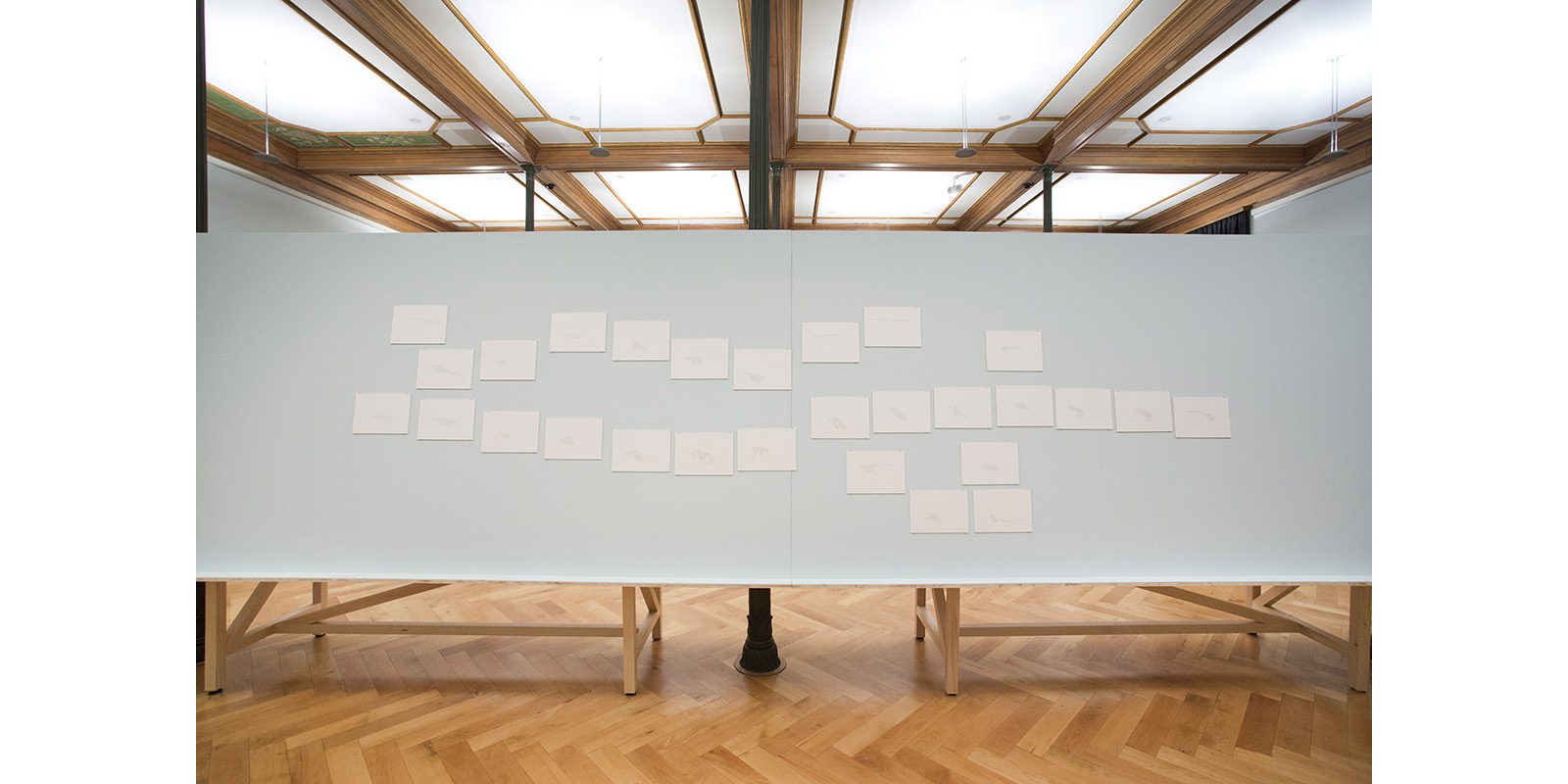
Installation view exhibition “Irene Kopelman. On Glaciers and Avalanches. In Search of glaciological traces”,
© Graphische Sammlung ETH Zürich, photo: Livio Baumgartner

Installation view exhibition “Irene Kopelman. On Glaciers and Avalanches. In Search of glaciological traces”,
© Graphische Sammlung ETH Zürich, photo: Livio Baumgartner
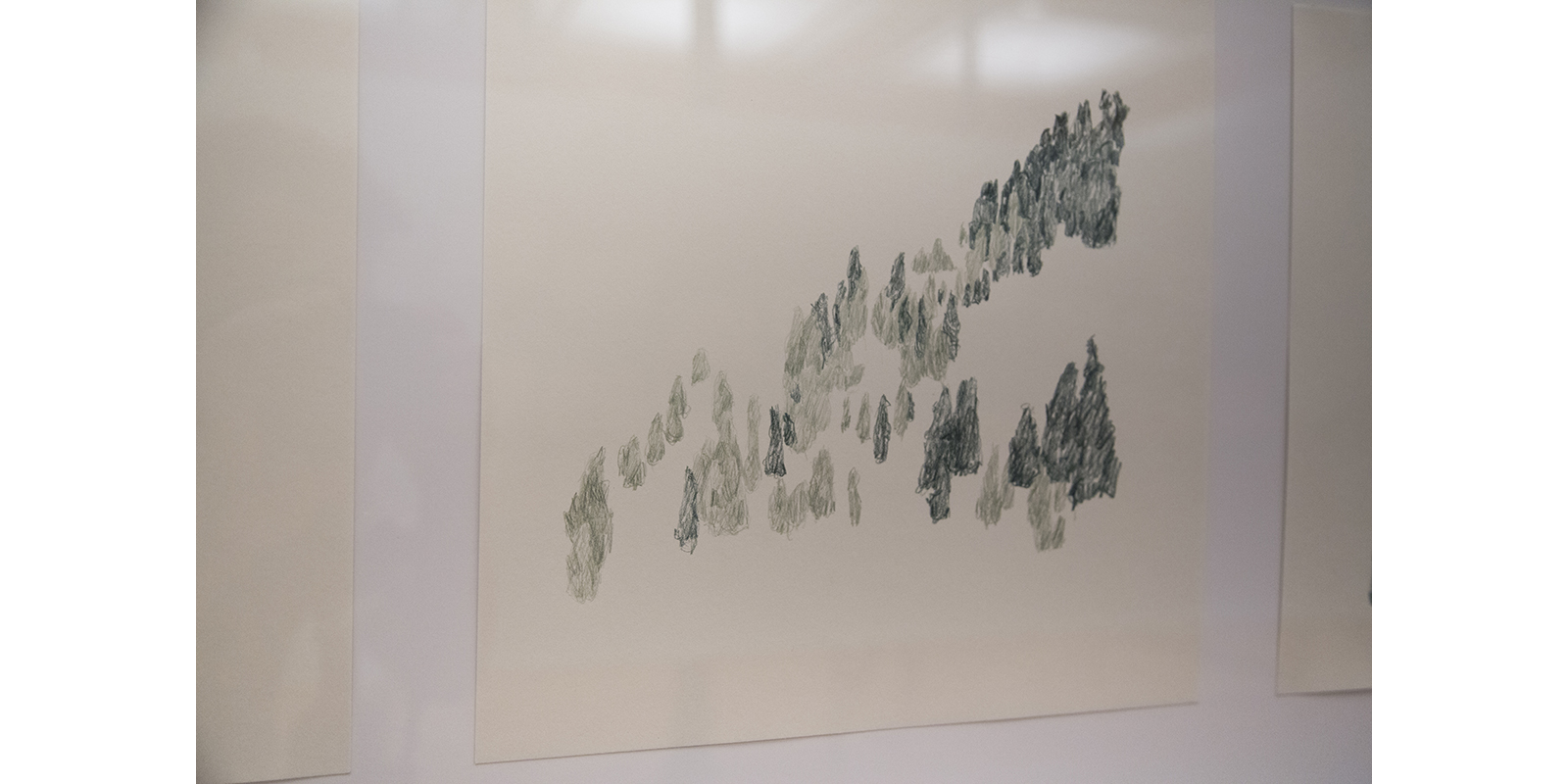
Installation view exhibition “Irene Kopelman. On Glaciers and Avalanches. In Search of glaciological traces”,
© Graphische Sammlung ETH Zürich, photo: Livio Baumgartner
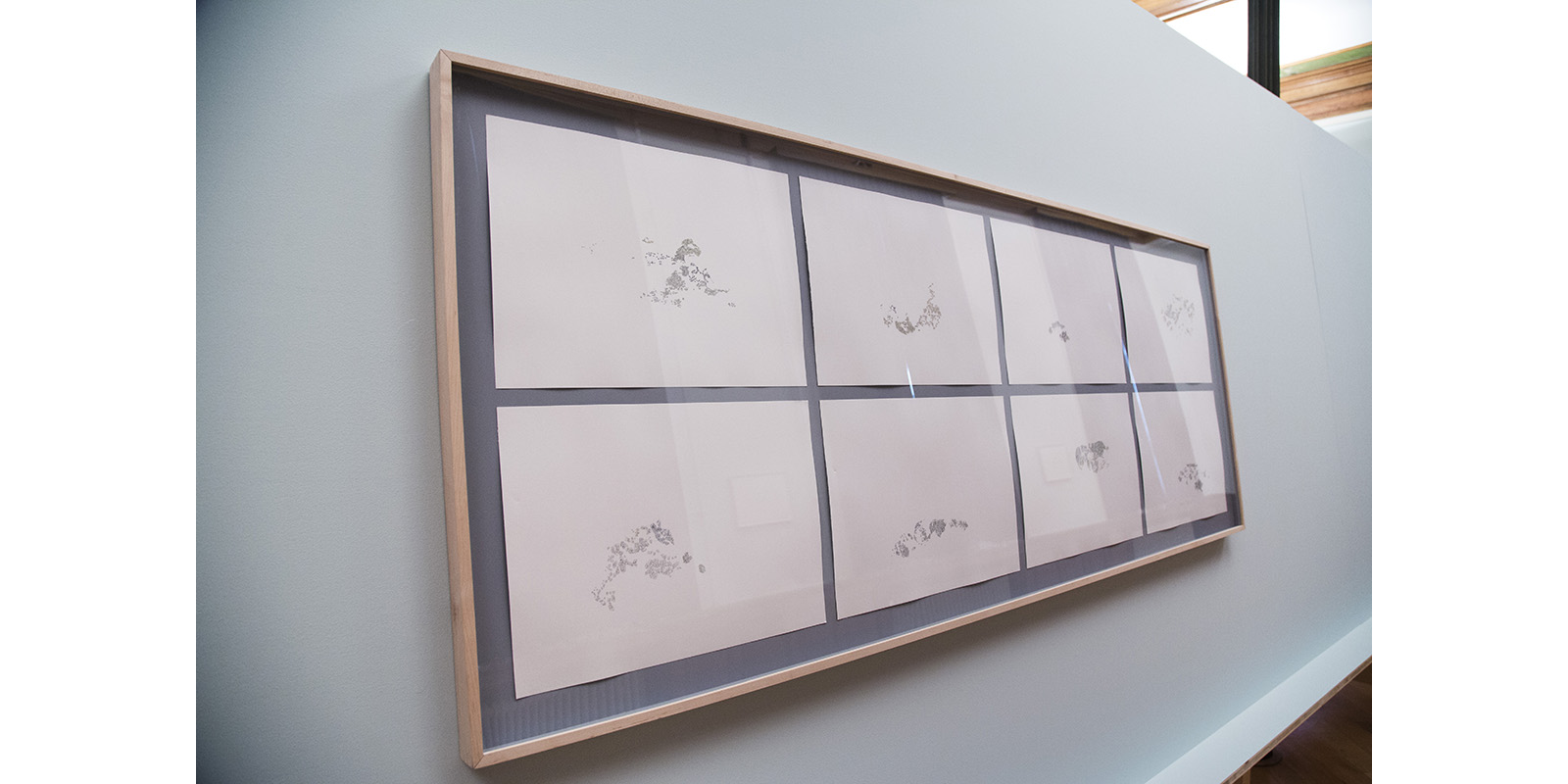
Installation view exhibition “Irene Kopelman. On Glaciers and Avalanches. In Search of glaciological traces”,
© Graphische Sammlung ETH Zürich, photo: Livio Baumgartner
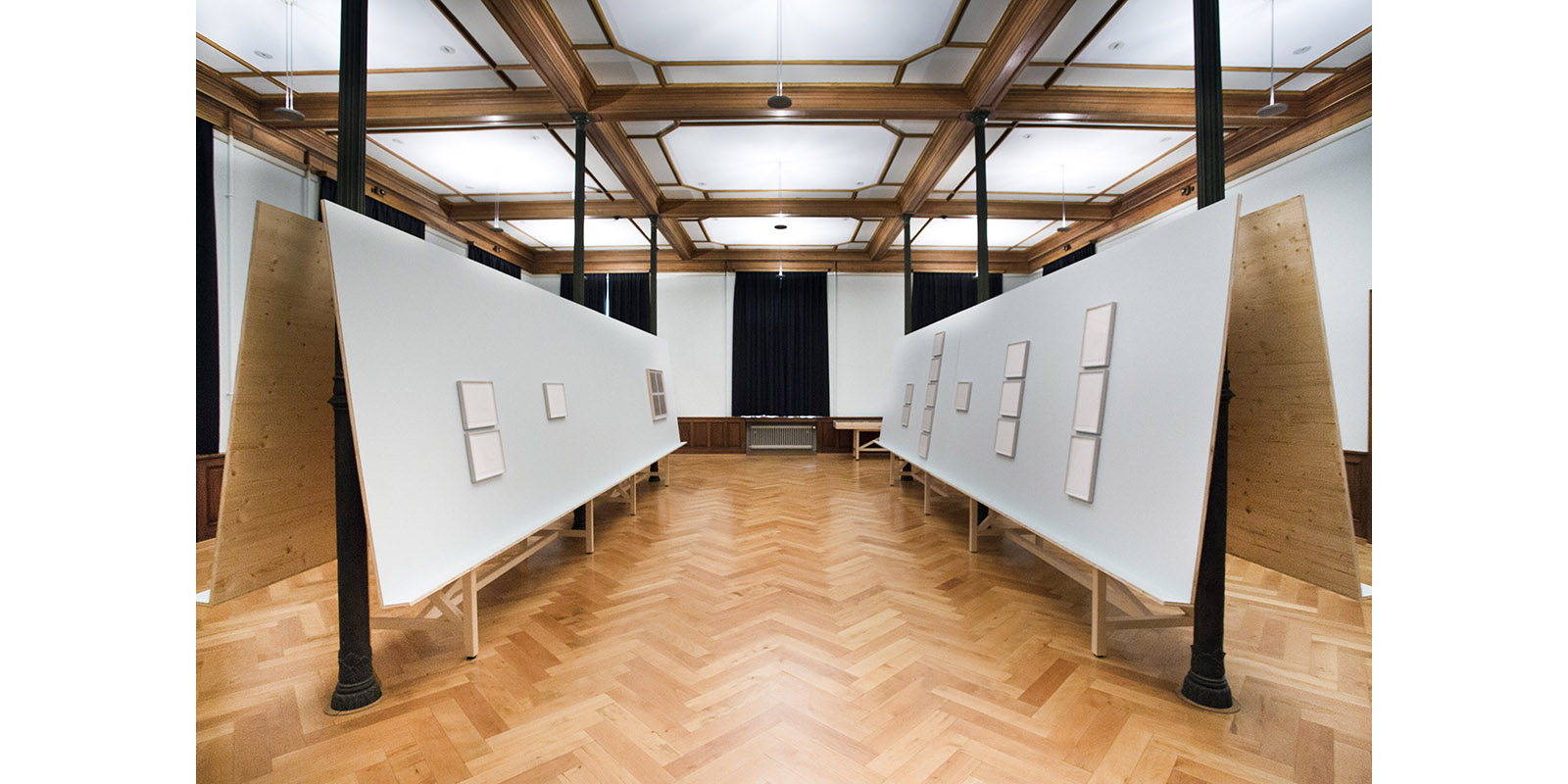
Installation view exhibition “Irene Kopelman. On Glaciers and Avalanches. In Search of glaciological traces”,
© Graphische Sammlung ETH Zürich, photo: Livio Baumgartner
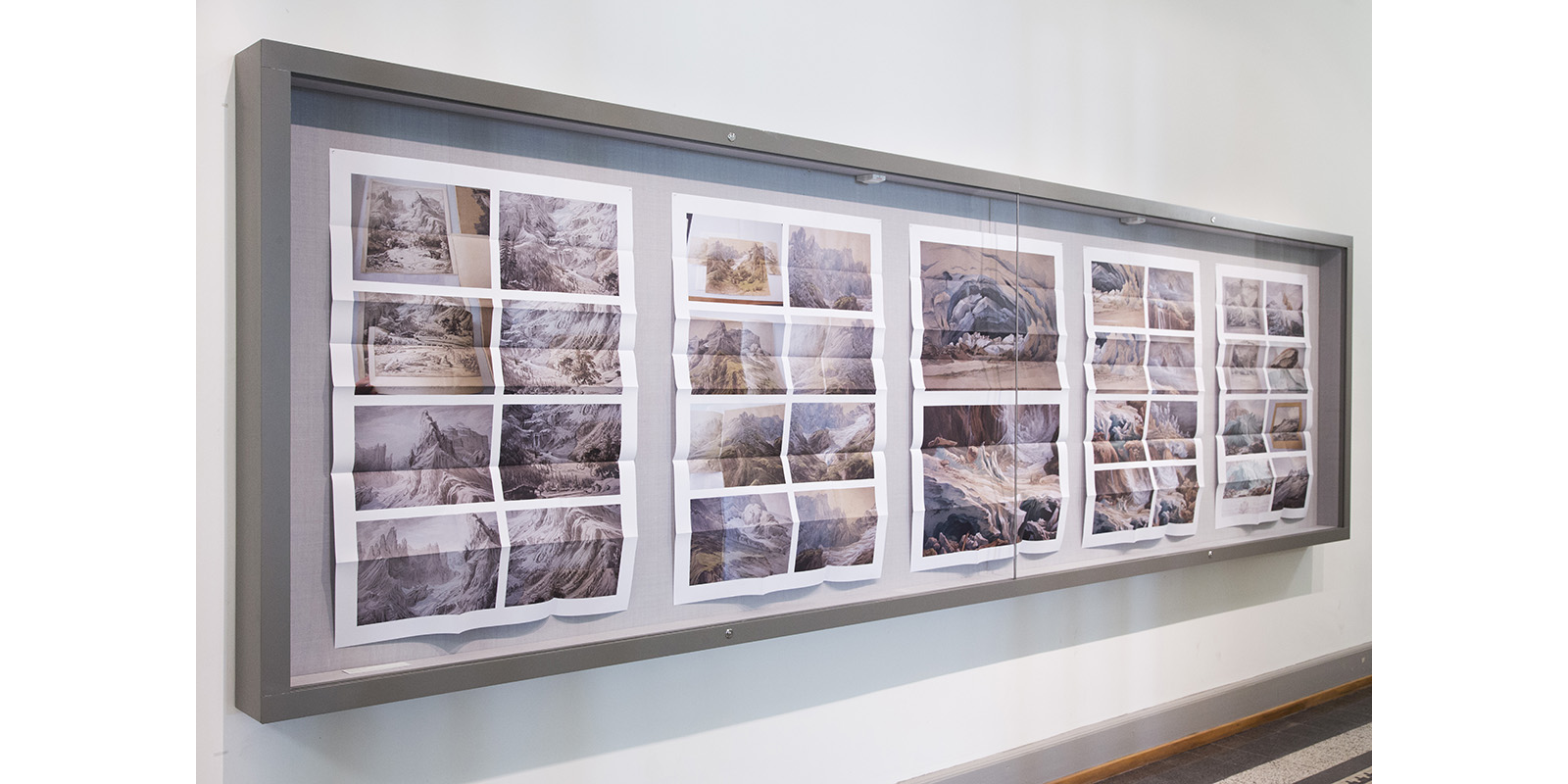
Installation view exhibition “Irene Kopelman. On Glaciers and Avalanches. In Search of glaciological traces”,
© Graphische Sammlung ETH Zürich, photo: Livio Baumgartner

Installation view exhibition “Irene Kopelman. On Glaciers and Avalanches. In Search of glaciological traces”,
© Graphische Sammlung ETH Zürich, photo: Livio Baumgartner

Installation view exhibition “Irene Kopelman. On Glaciers and Avalanches. In Search of glaciological traces”,
© Graphische Sammlung ETH Zürich, photo: Livio Baumgartner
The Schweizerische Graphische Gesellschaft (SGG) strikes a balance between constancy and change. For a hundred years, it has has been commissioning selected contemporary artists to create an original work that is then published in a limited edition of 125 and distributed to all SGG members. Moreover, for a hundred years, this society has not only been supporting and promoting both traditional and new approaches to the art of the print, but has also been rigorously challenging and debating its own decision criteria. The centenary jubilee exhibition reflects this by placing the focus on crucial turning points in the history of the SGG, presenting works that have marked a new departure and have, at times, caused controversy.
The Schweizerische Graphische Gesellschaft (SGG) is now celebrating its 100th anniversary. Since 1918, the society has been commissioning several artists each year to create an original print. In doing so, the SGG actively supports and promotes the art of the print, enabling emerging and established artists to explore the medium. In the course of 100 years, this has led to the production of more than 250 works, provided to its 125 members for a modest annual fee.
Curator: Lena Schaller, Graphische Sammlung ETH Zürich
Flyer
Press release
Figures and captions
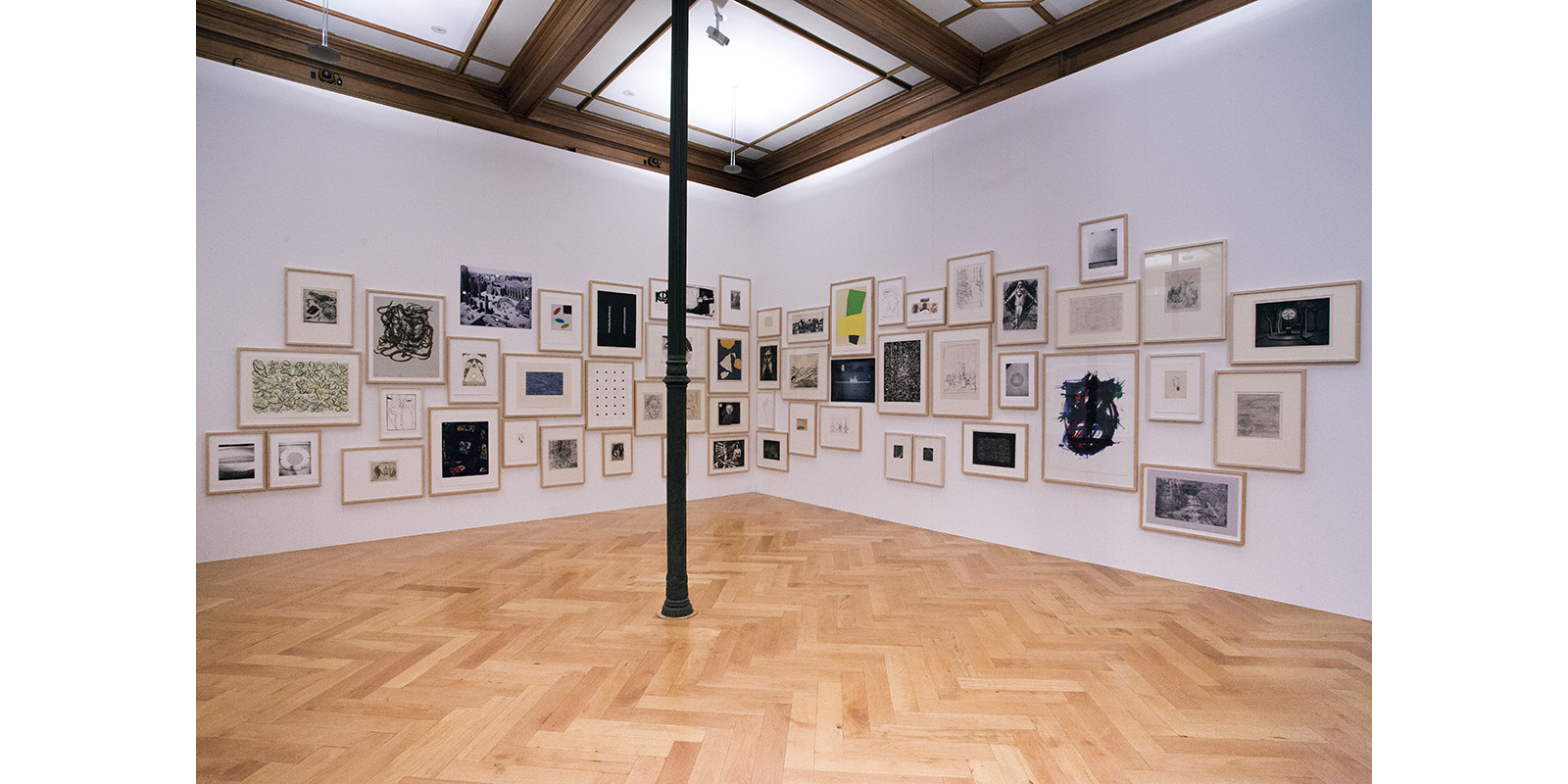
Installation view exhibition “Turning Points. From Nolde to Oppenheim. 100 Years of Schweizerische Graphische Gesellschaft”, © Graphische Sammlung ETH Zürich, photo: Livio Baumgartner
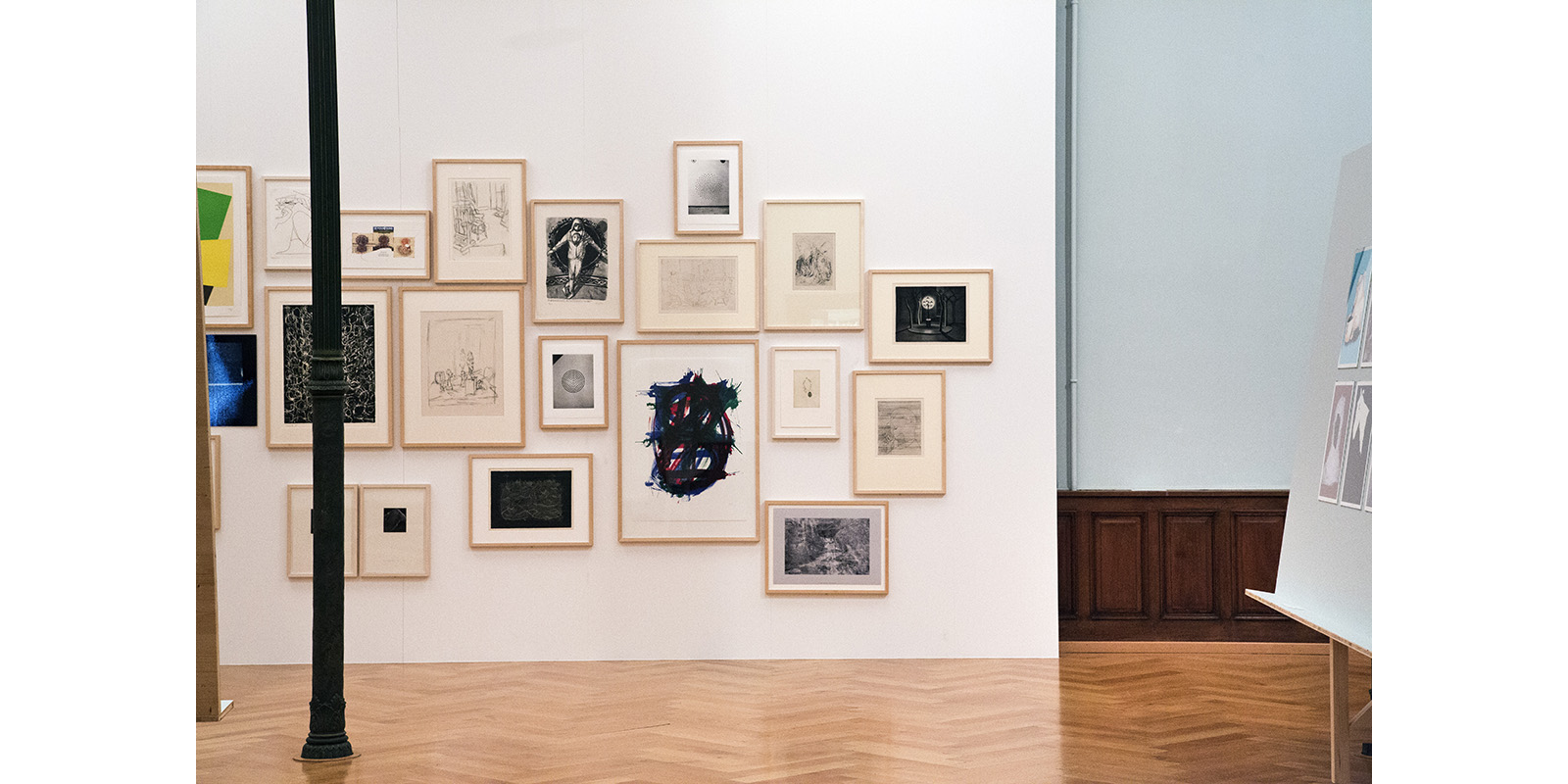
Installation view exhibition “Turning Points. From Nolde to Oppenheim. 100 Years of Schweizerische Graphische Gesellschaft”, © Graphische Sammlung ETH Zürich, photo: Livio Baumgartner
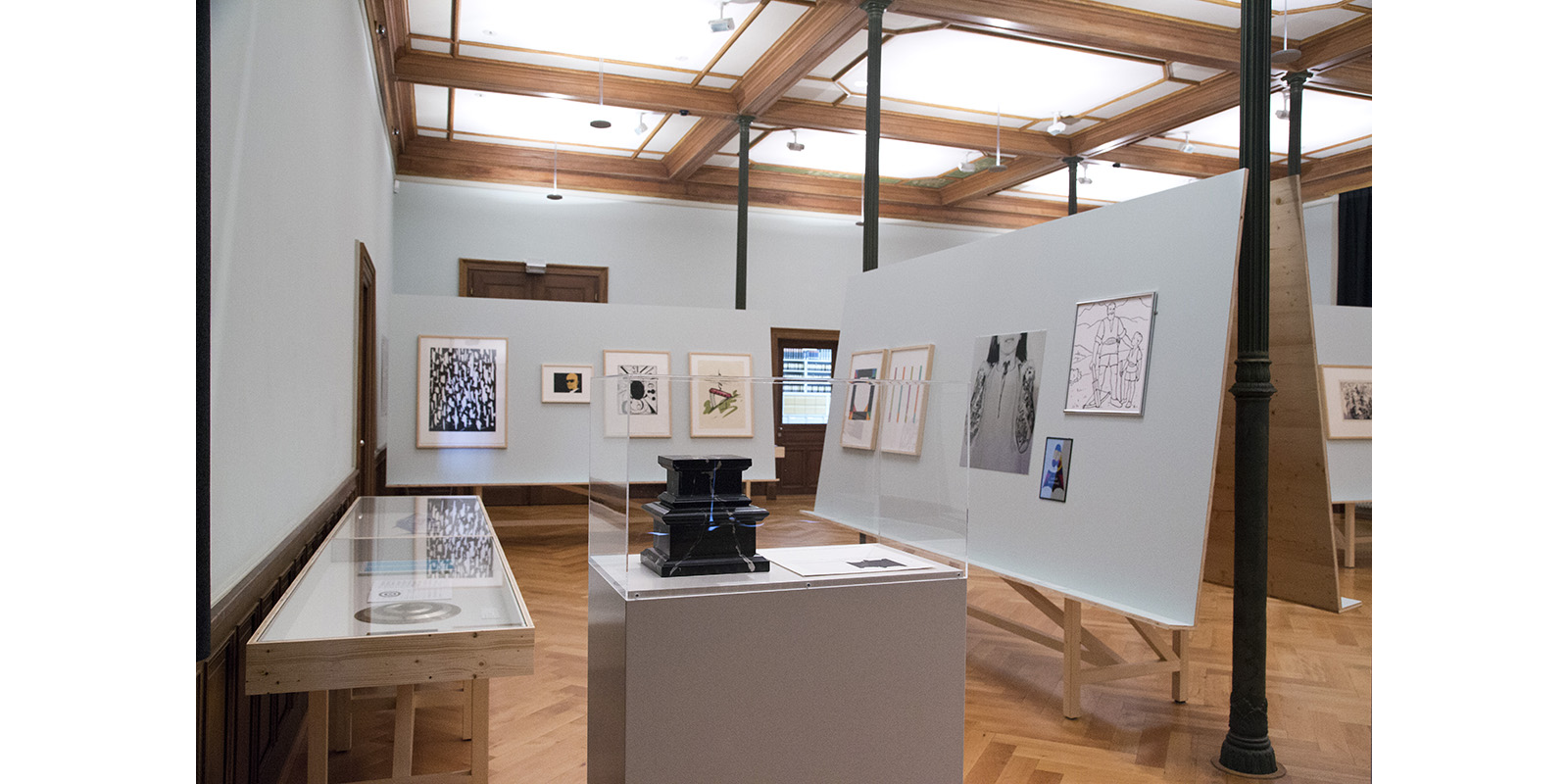
Installation view exhibition “Turning Points. From Nolde to Oppenheim. 100 Years of Schweizerische Graphische Gesellschaft”, © Graphische Sammlung ETH Zürich, photo: Livio Baumgartner
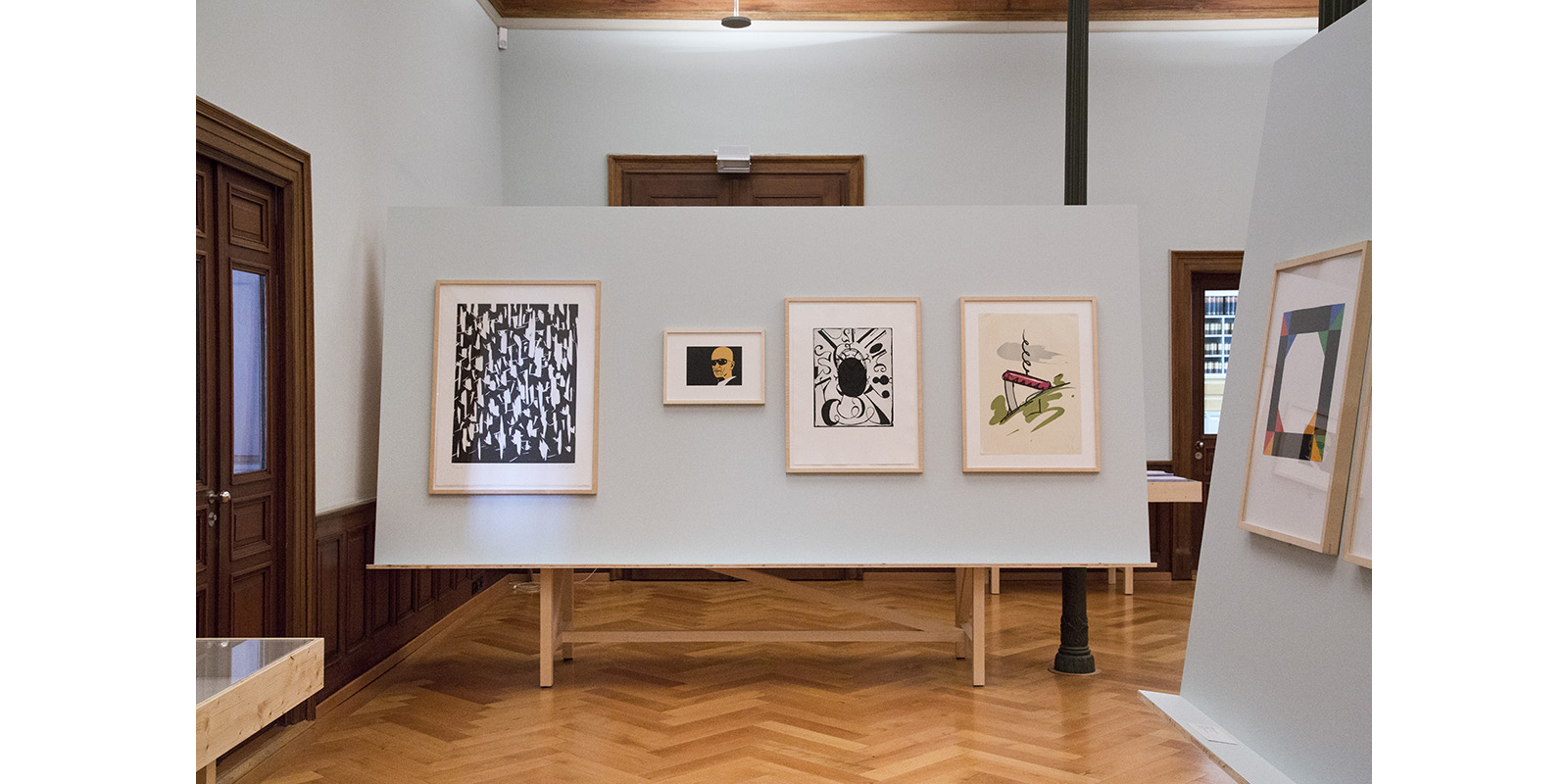
Installation view exhibition “Turning Points. From Nolde to Oppenheim. 100 Years of Schweizerische Graphische Gesellschaft”, © Graphische Sammlung ETH Zürich, photo: Livio Baumgartner

Installation view exhibition “Turning Points. From Nolde to Oppenheim. 100 Years of Schweizerische Graphische Gesellschaft”, © Graphische Sammlung ETH Zürich, photo: Livio Baumgartner
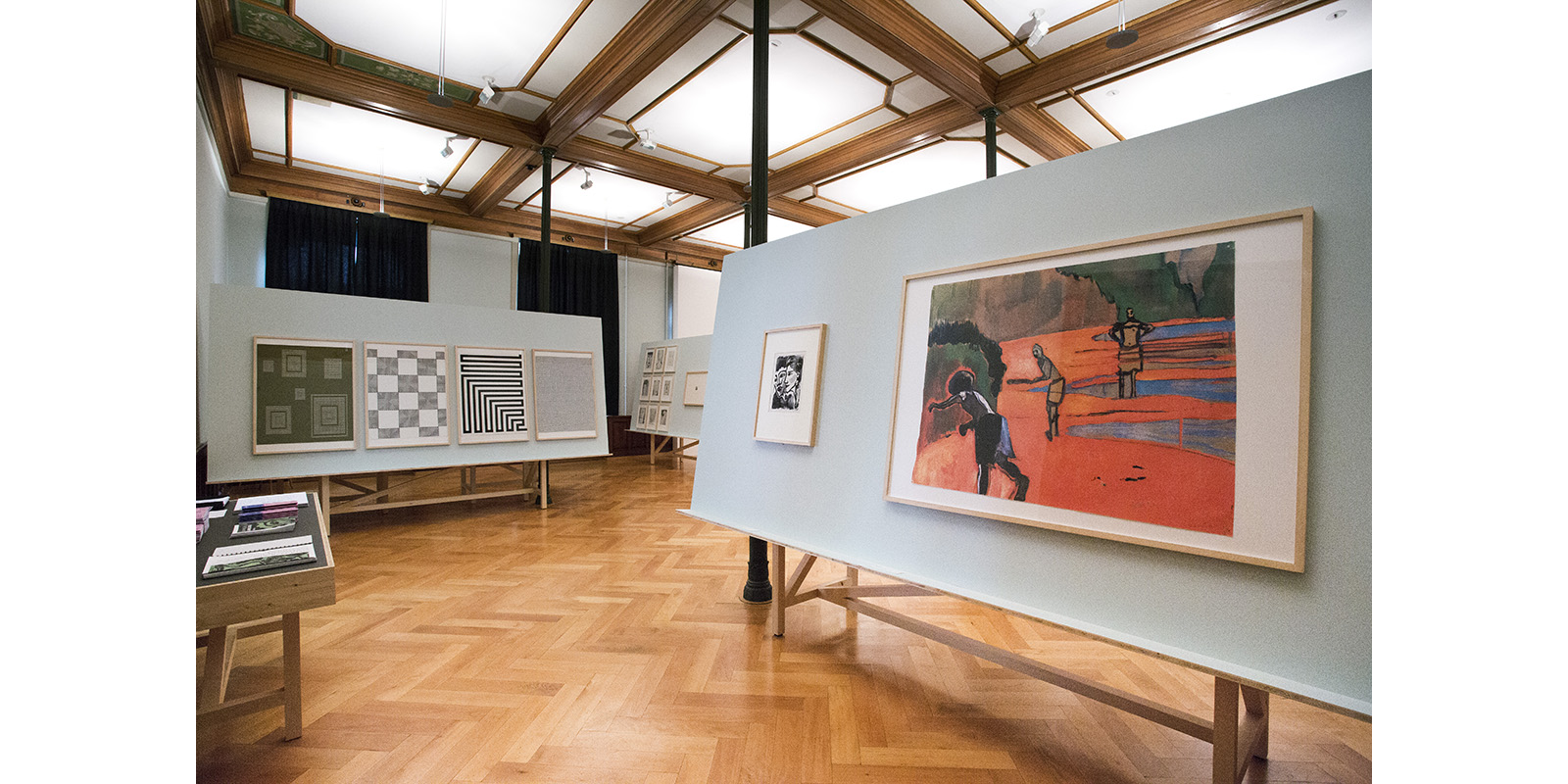
Installation view exhibition “Turning Points. From Nolde to Oppenheim. 100 Years of Schweizerische Graphische Gesellschaft”, © Graphische Sammlung ETH Zürich, photo: Livio Baumgartner
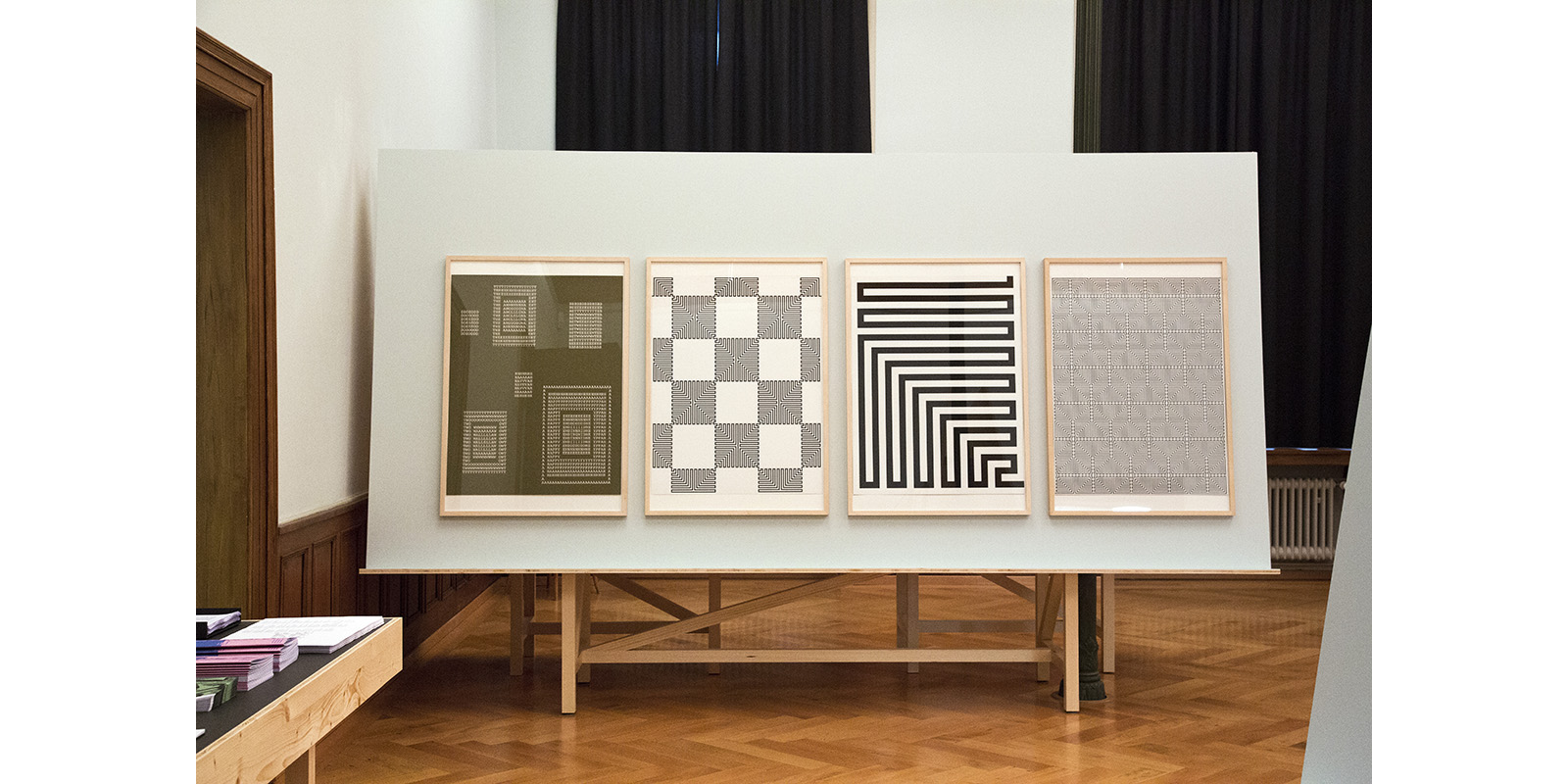
Installation view exhibition “Turning Points. From Nolde to Oppenheim. 100 Years of Schweizerische Graphische Gesellschaft”, © Graphische Sammlung ETH Zürich, photo: Livio Baumgartner
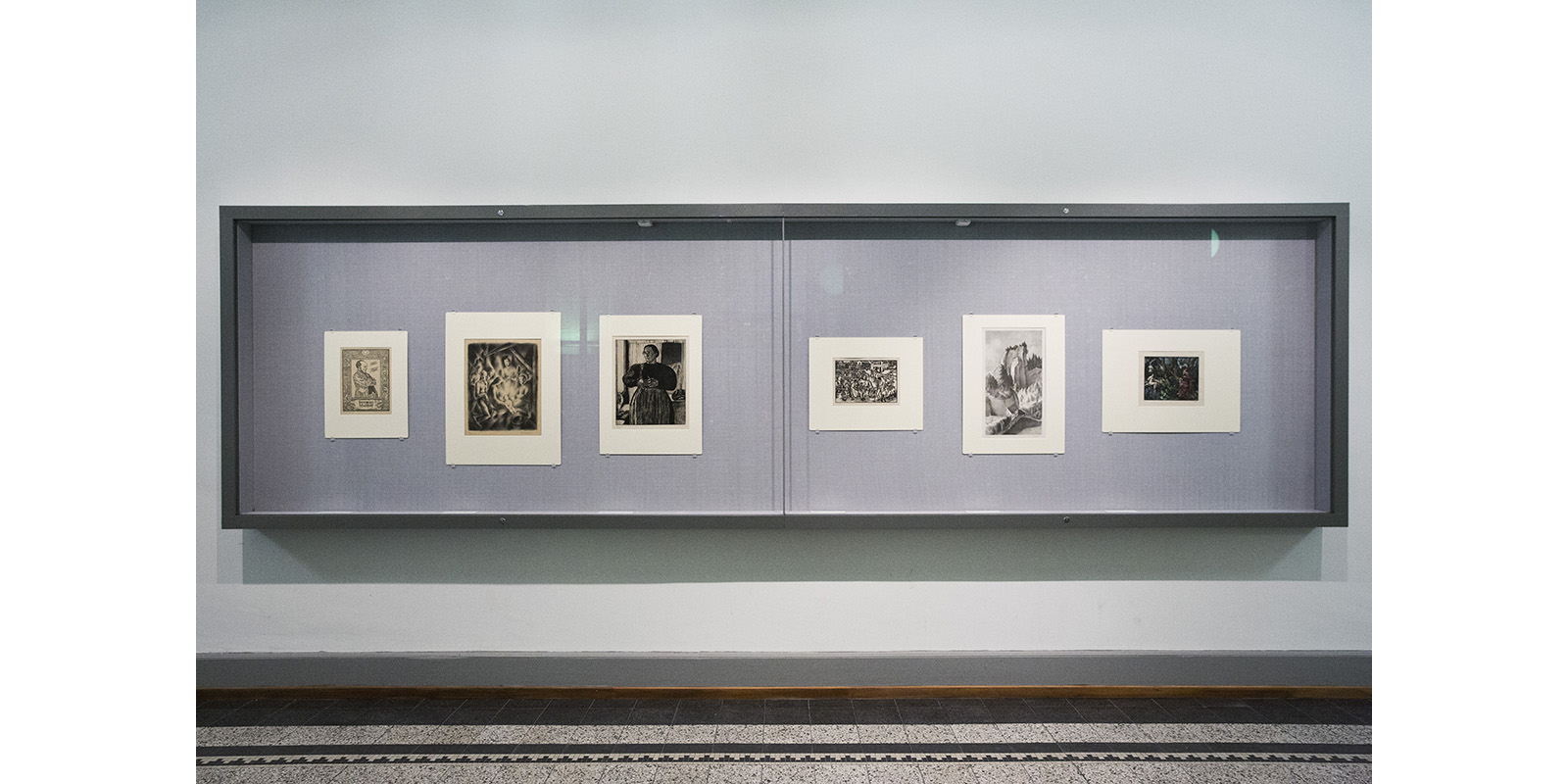
Installation view exhibition “Turning Points. From Nolde to Oppenheim. 100 Years of Schweizerische Graphische Gesellschaft”, © Graphische Sammlung ETH Zürich, photo: Livio Baumgartner
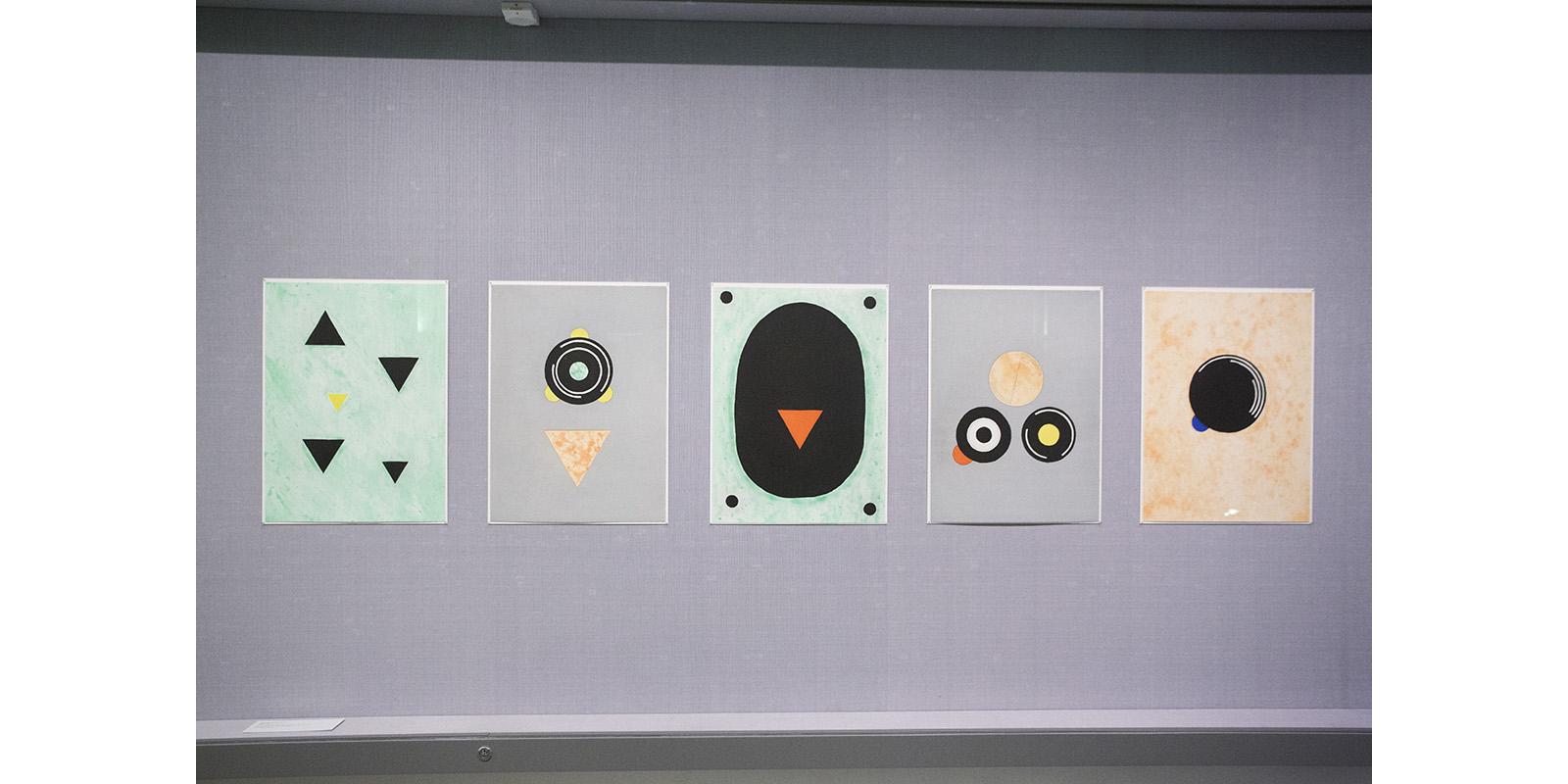
Installation view exhibition “Turning Points. From Nolde to Oppenheim. 100 Years of Schweizerische Graphische Gesellschaft”, © Graphische Sammlung ETH Zürich, photo: Livio Baumgartner
Antiquity, nudes, landscapes – the fourth and final exhibition in the 150-year jubilee series of Graphische Sammlung ETH Zürich takes visitors back in time through the history of draughtsmanship. Prints from four centuries shed new light on the development of aesthetic perceptions from the Renaissance to the nineteenth century. They bear witness to the many different ways in which drawing skills have been honed by institutions as part and parcel of artists‘ training, and illustrate the respective educational approaches involved.
Flyer
Press release
Figures and captions
Publication
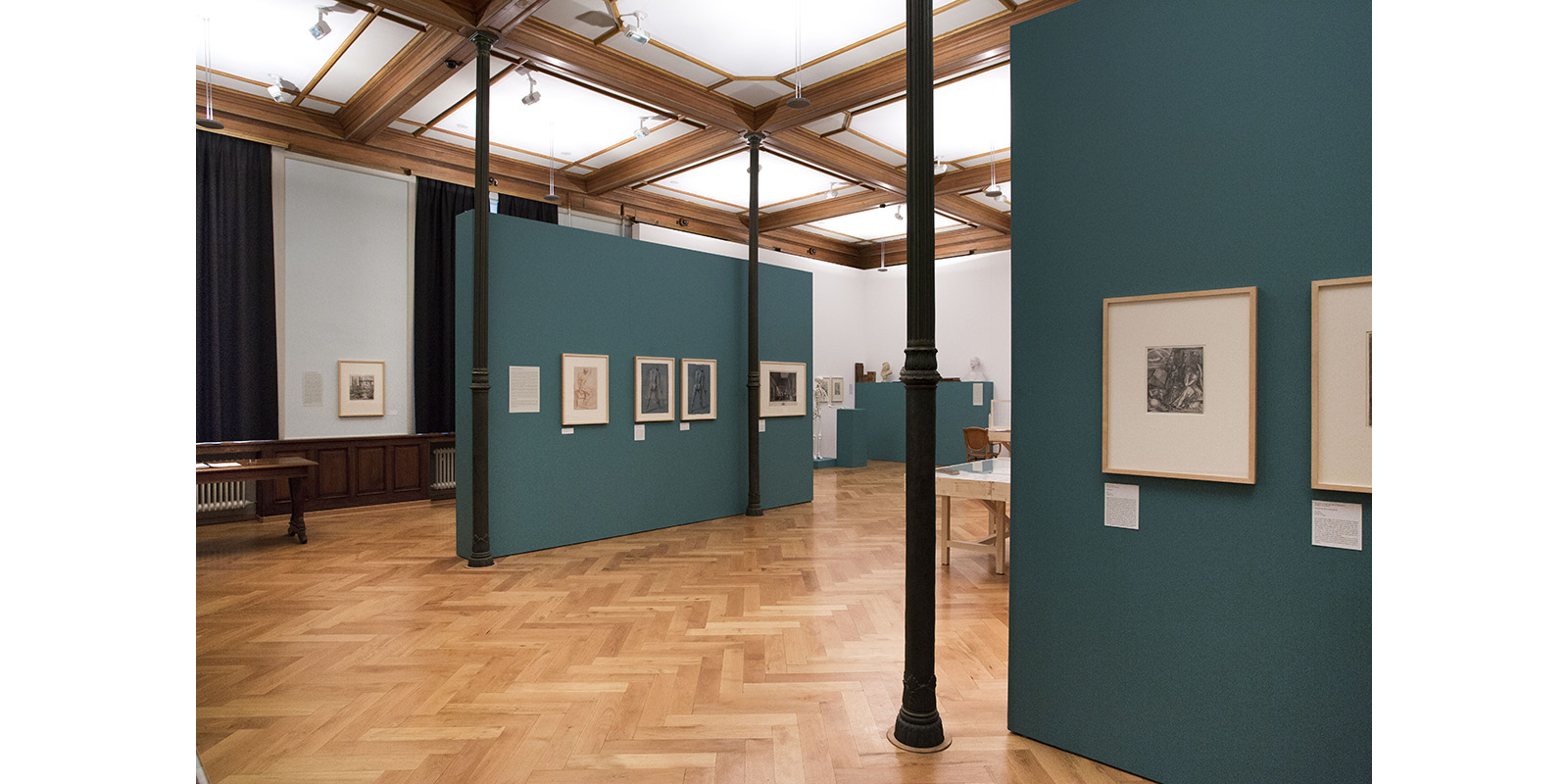
Installation view exhibition “Learning to draw – from artist’s training to aesthetic education since 1500”,
© Graphische Sammlung ETH Zürich, photo: Livio Baumgartner
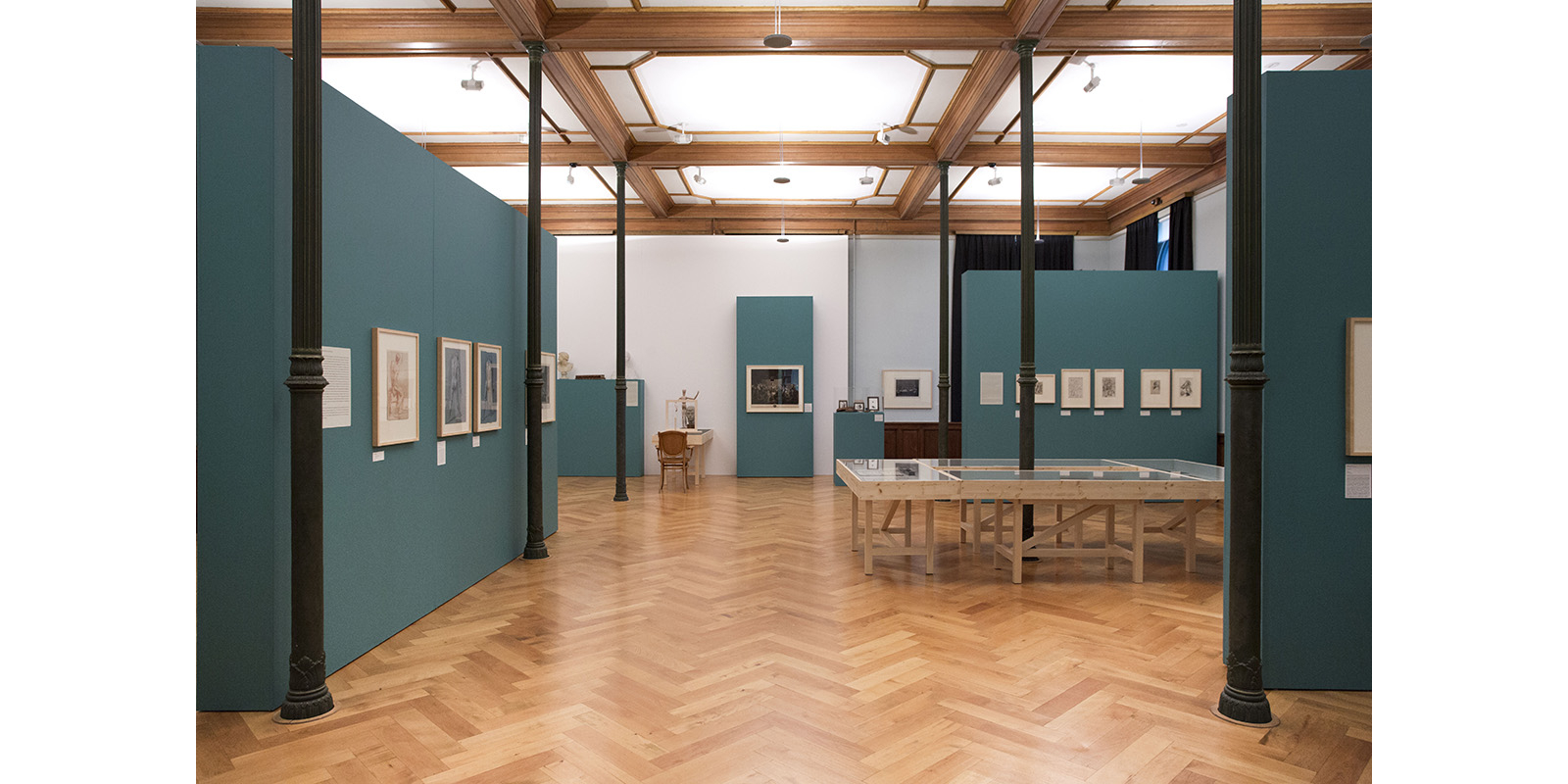
Installation view exhibition “Learning to draw – from artist’s training to aesthetic education since 1500”,
© Graphische Sammlung ETH Zürich, photo: Livio Baumgartner

Installation view exhibition “Learning to draw – from artist’s training to aesthetic education since 1500”,
© Graphische Sammlung ETH Zürich, photo: Livio Baumgartner

Installation view exhibition “Learning to draw – from artist’s training to aesthetic education since 1500”,
© Graphische Sammlung ETH Zürich, photo: Livio Baumgartner
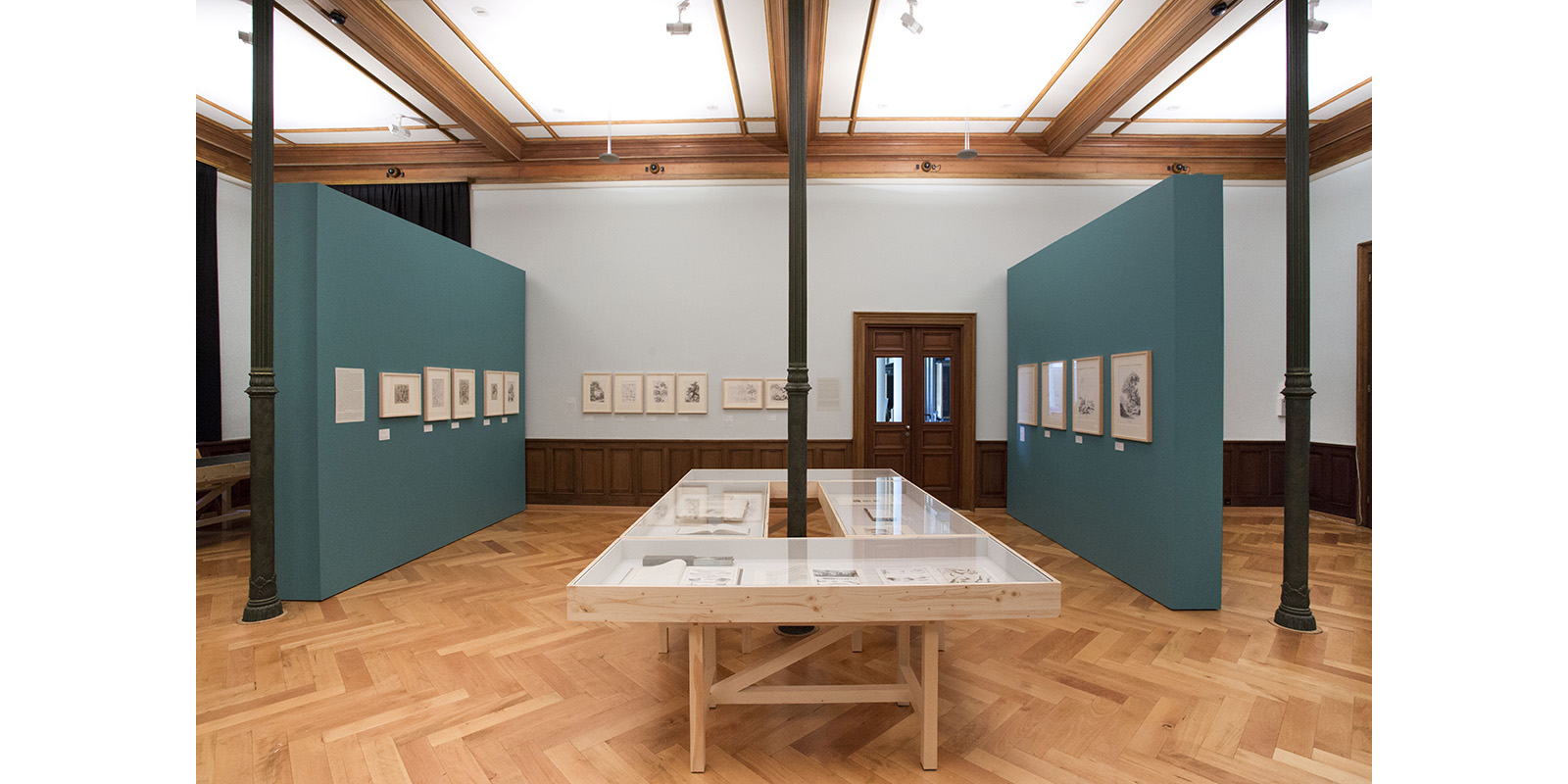
Installation view exhibition “Learning to draw – from artist’s training to aesthetic education since 1500”,
© Graphische Sammlung ETH Zürich, photo: Livio Baumgartner

Installation view exhibition “Learning to draw – from artist’s training to aesthetic education since 1500”,
© Graphische Sammlung ETH Zürich, photo: Livio Baumgartner
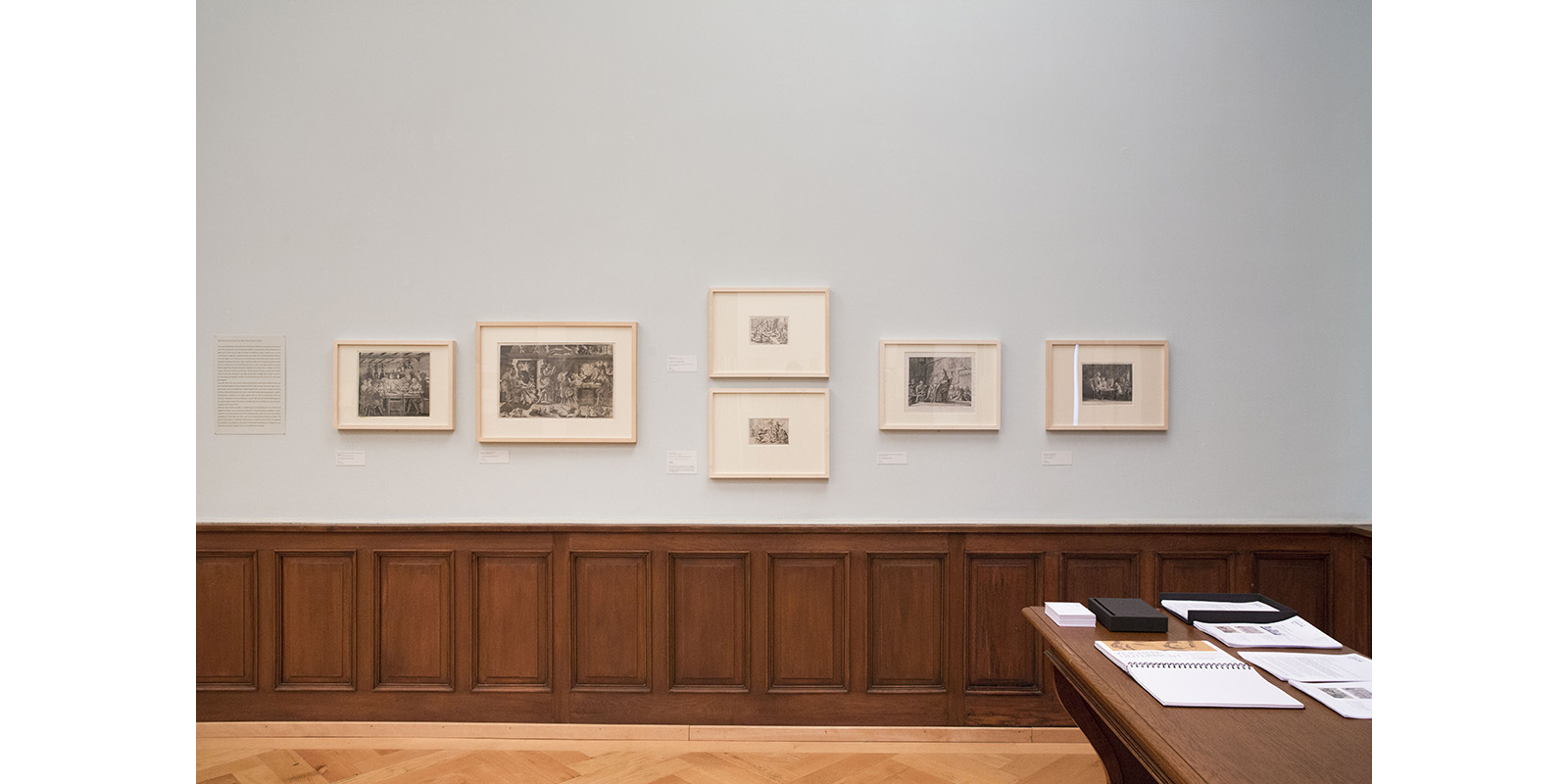
Installation view exhibition “Learning to draw – from artist’s training to aesthetic education since 1500”,
© Graphische Sammlung ETH Zürich, photo: Livio Baumgartner
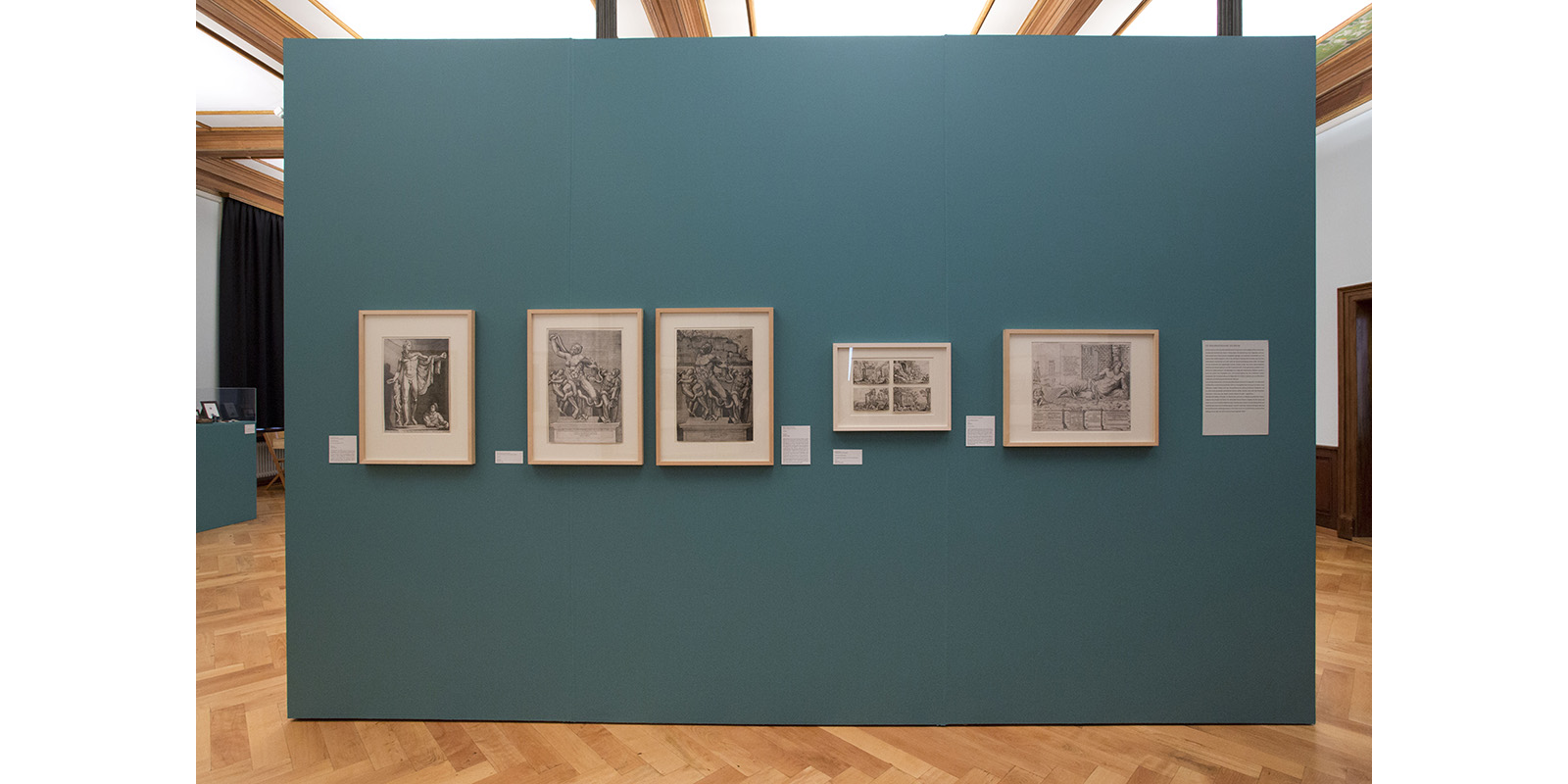
Installation view exhibition “Learning to draw – from artist’s training to aesthetic education since 1500”,
© Graphische Sammlung ETH Zürich, photo: Livio Baumgartner
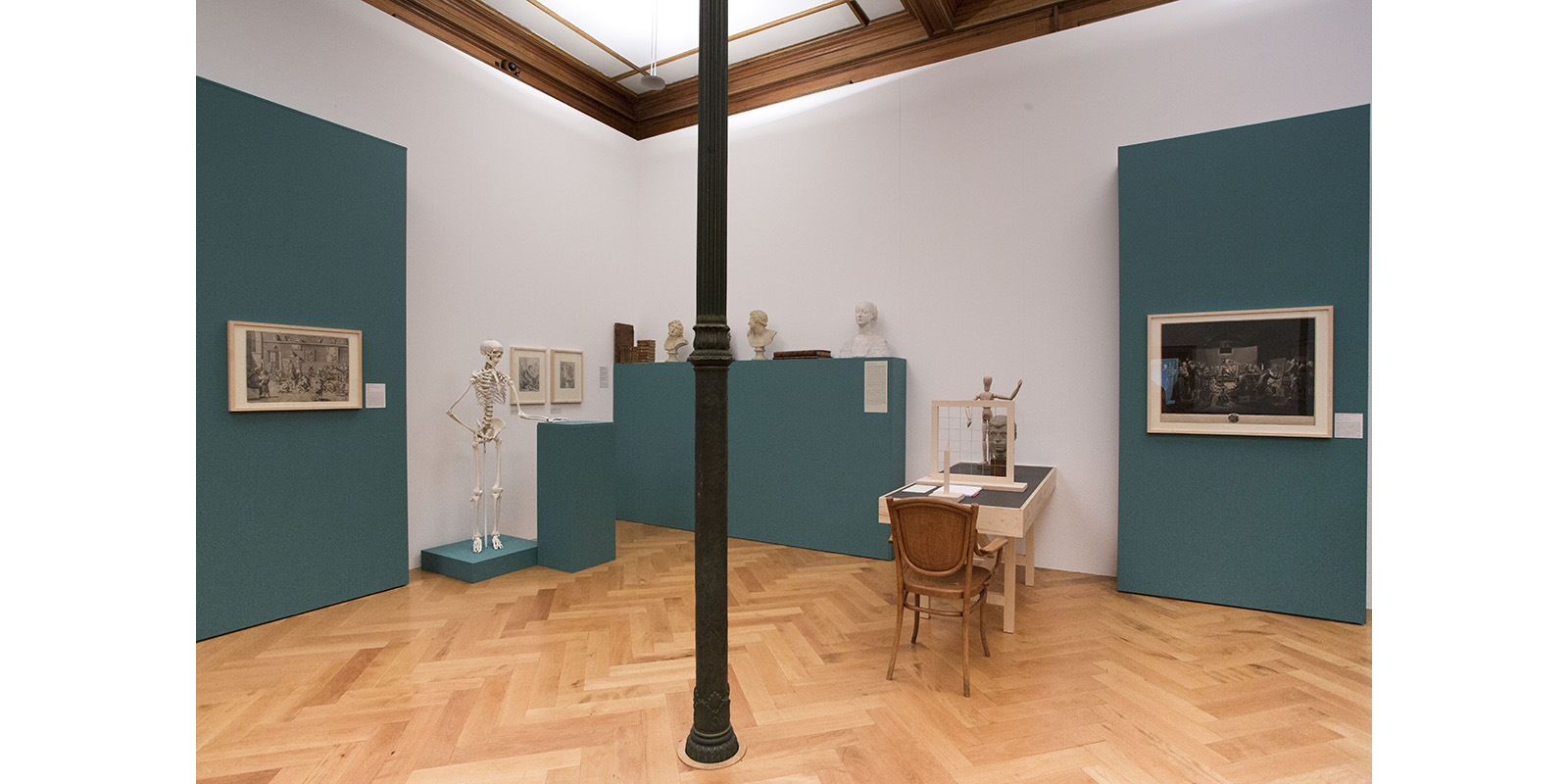
Installation view exhibition “Learning to draw – from artist’s training to aesthetic education since 1500”,
© Graphische Sammlung ETH Zürich, photo: Livio Baumgartner

Installation view exhibition “Learning to draw – from artist’s training to aesthetic education since 1500”,
© Graphische Sammlung ETH Zürich, photo: Livio Baumgartner
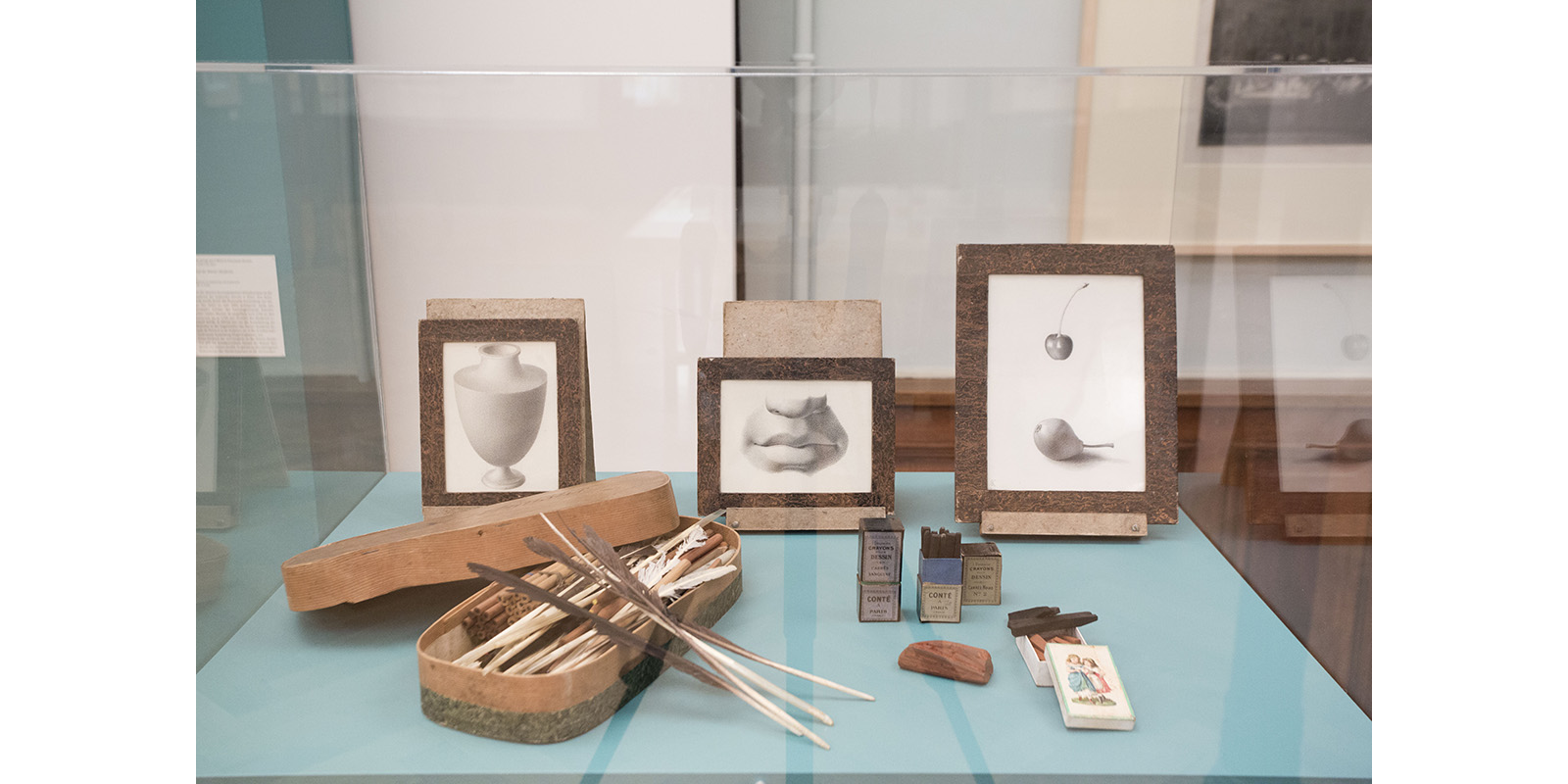
Installation view exhibition “Learning to draw – from artist’s training to aesthetic education since 1500”,
© Graphische Sammlung ETH Zürich, photo: Livio Baumgartner
The Graphische Sammlung ETH Zürich comprises a collection of prints and drawings so substantial that choosing the most insightful selection invariably poses a considerable challenge to each and every curator. This time, the Zurich-based duo of artists known as huber.huber (Markus and Reto Huber, both *1975) have agreed to take on this task. They offer an artists‘ eye-view of a widespread art form, seen from various angles and made accessible through the prism of film and music, thanks to their collaboration with Michael Bucher. At the same time, works by contemporary artists will be shown on a fortnightly rotating basis, with the aim of expanding the notion of seriality to include additional interpretations.
Flyer
Press release
Figures and captions
Publication
Exhibition and catalogue generously supported by:

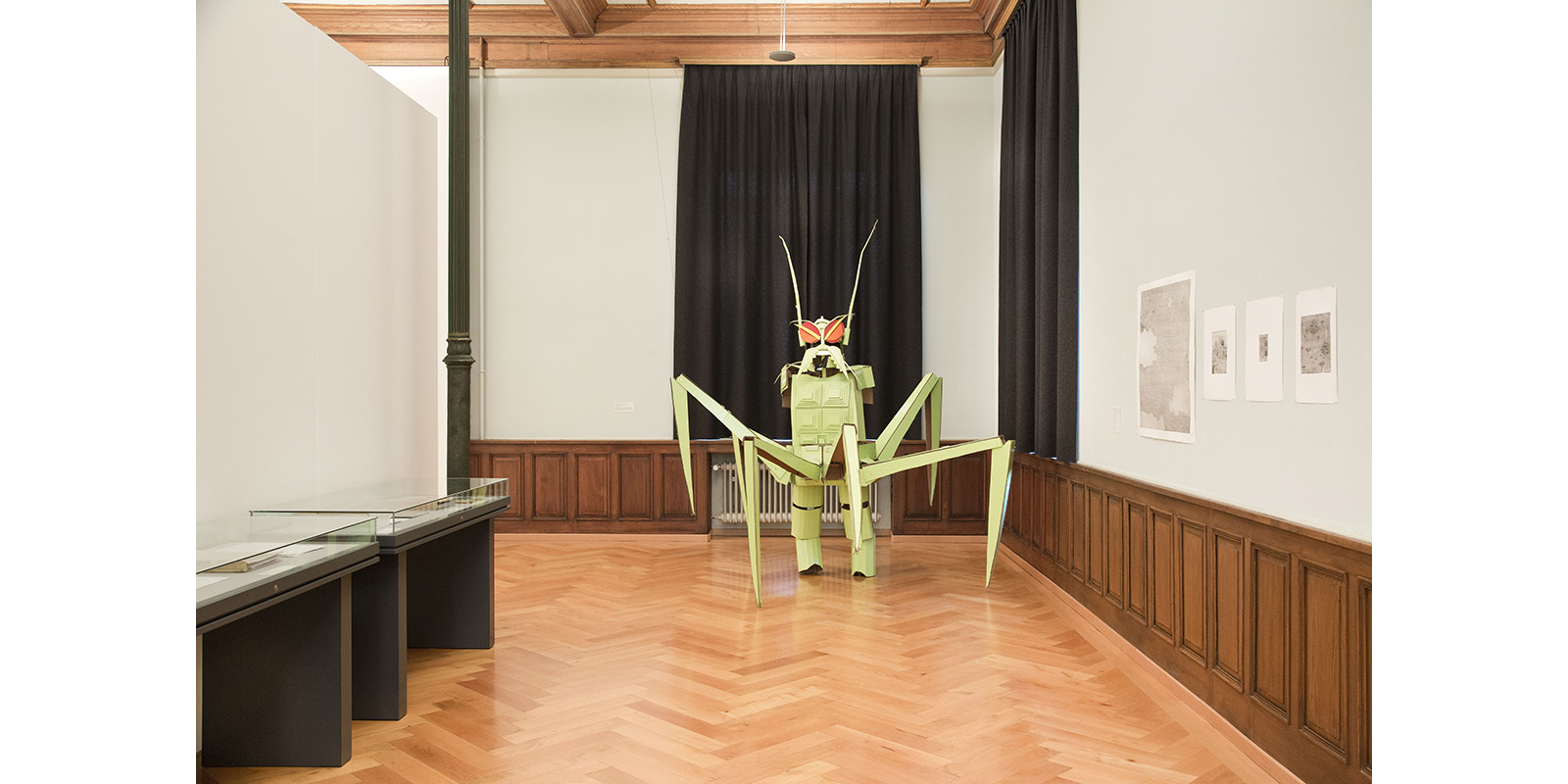
Installation view exhibition “On Series, Scenes and Sequences. Intervention by huber.huber”,
© Graphische Sammlung ETH Zürich, photo: Livio Baumgartner
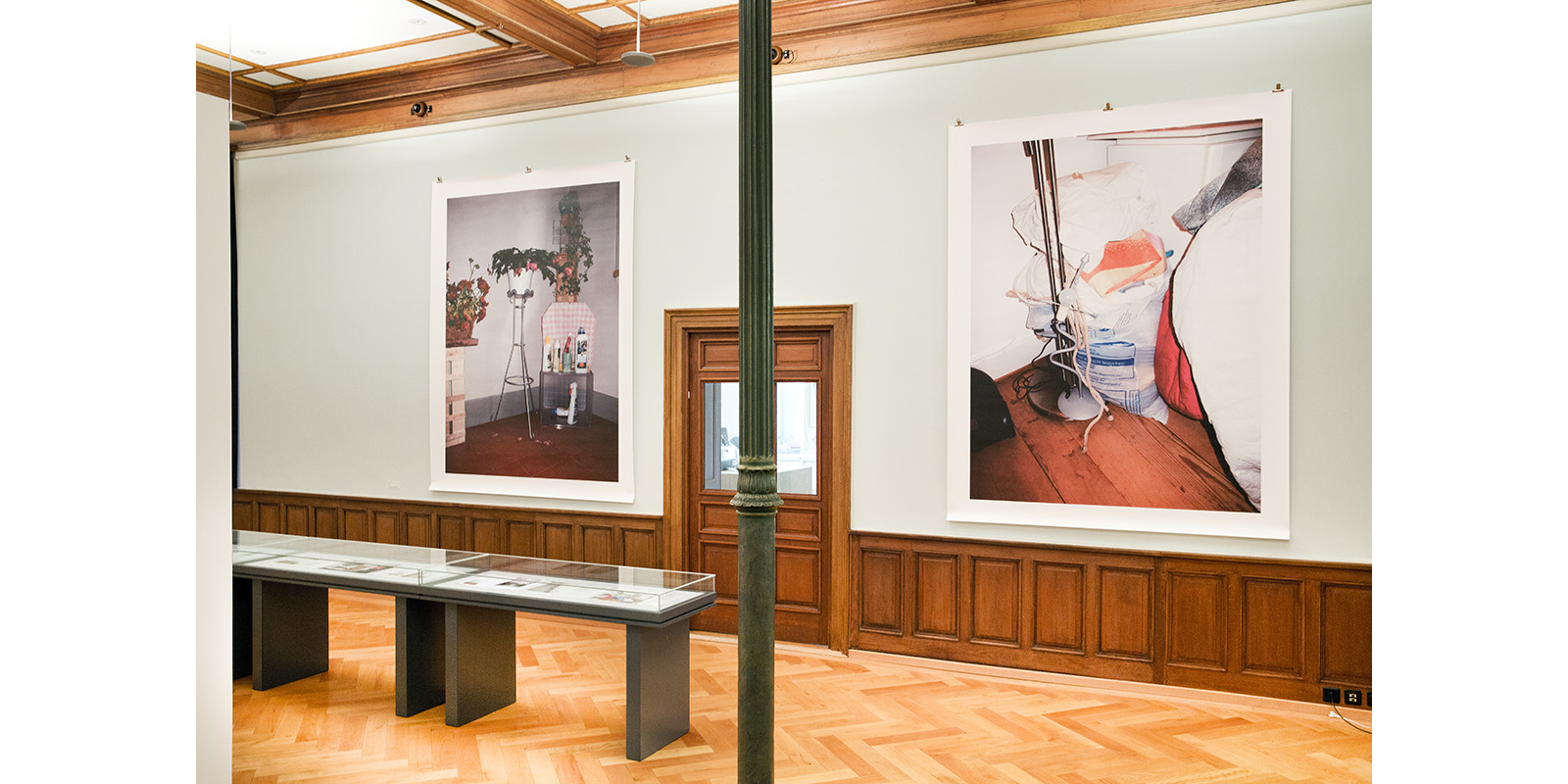
Installation view exhibition “On Series, Scenes and Sequences. Intervention by huber.huber”,
© Graphische Sammlung ETH Zürich, photo: Livio Baumgartner
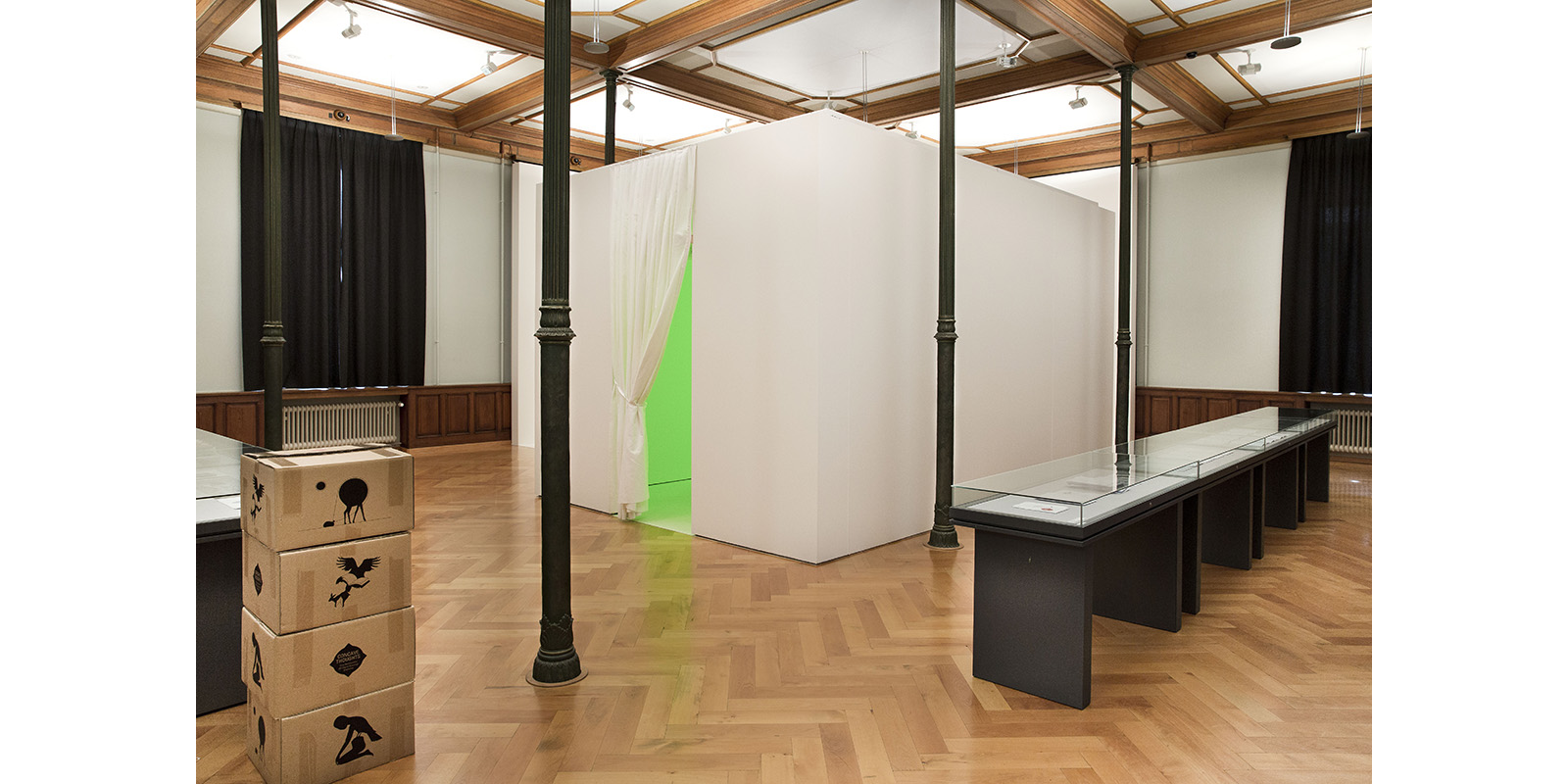
Installation view exhibition “On Series, Scenes and Sequences. Intervention by huber.huber”,
© Graphische Sammlung ETH Zürich, photo: Livio Baumgartner
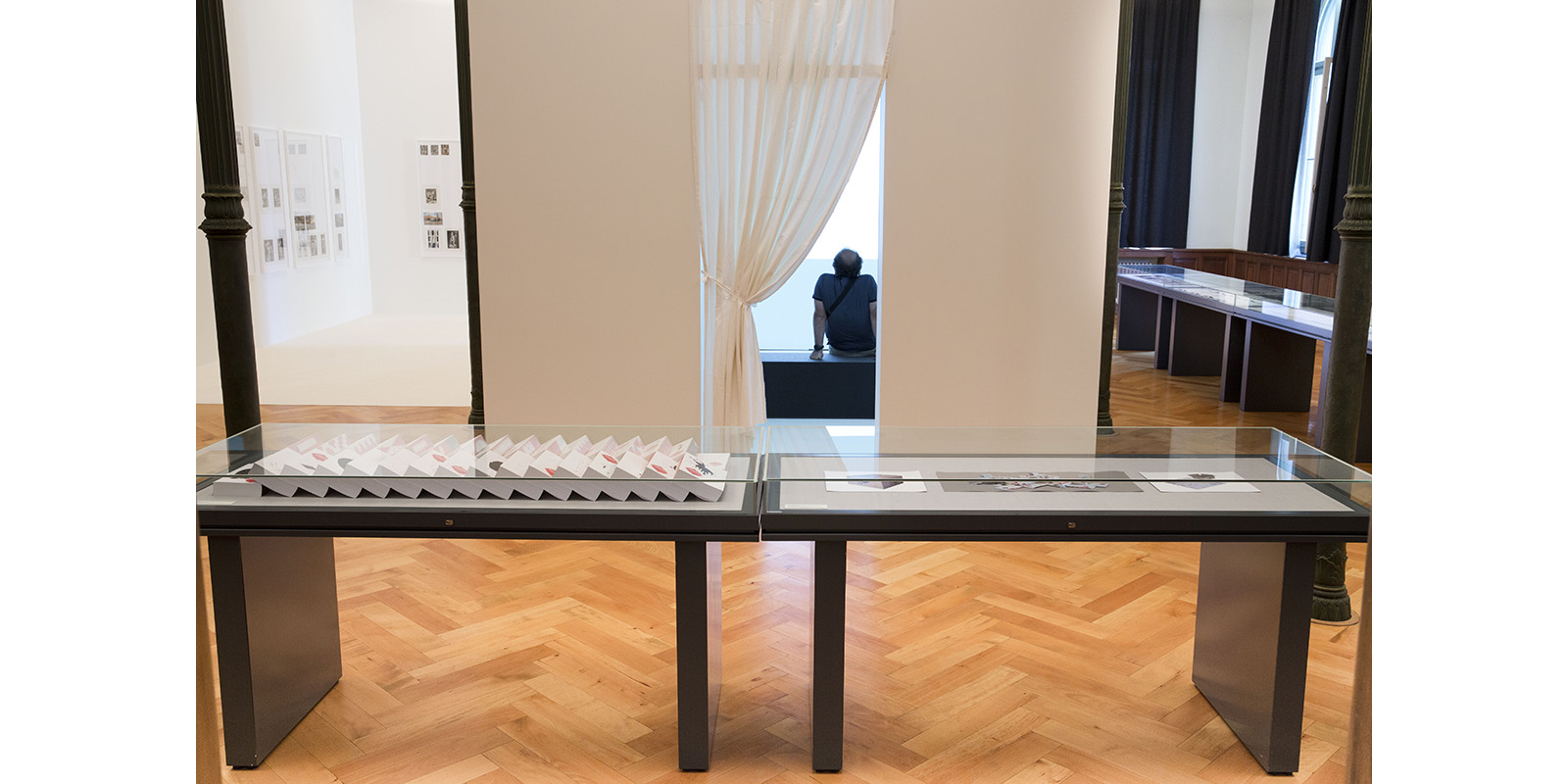
Installation view exhibition “On Series, Scenes and Sequences. Intervention by huber.huber”,
© Graphische Sammlung ETH Zürich, photo: Livio Baumgartner
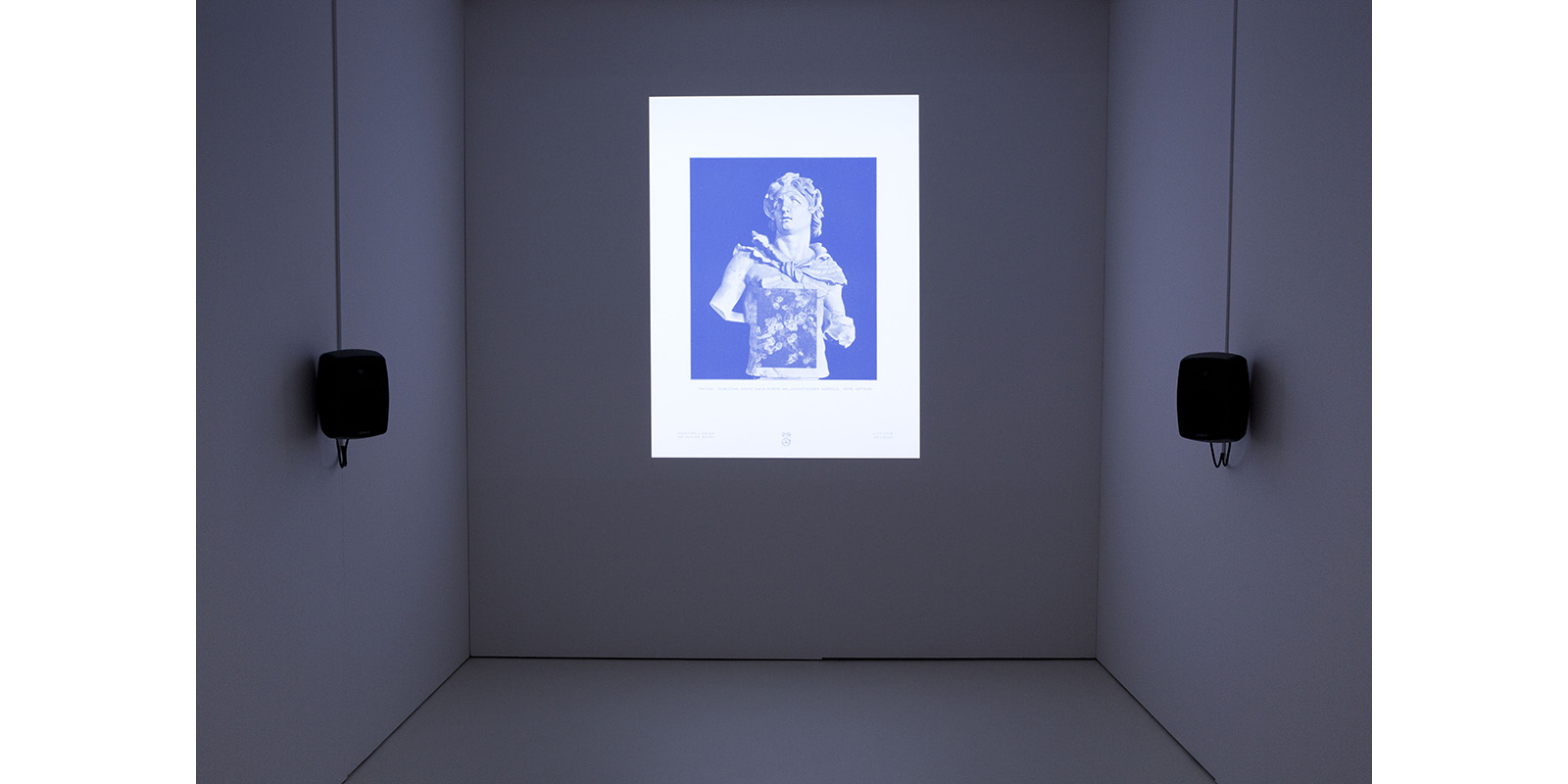
Installation view exhibition “On Series, Scenes and Sequences. Intervention by huber.huber”,
© Graphische Sammlung ETH Zürich, photo: Livio Baumgartner

Installation view exhibition “On Series, Scenes and Sequences. Intervention by huber.huber”,
© Graphische Sammlung ETH Zürich, photo: Livio Baumgartner
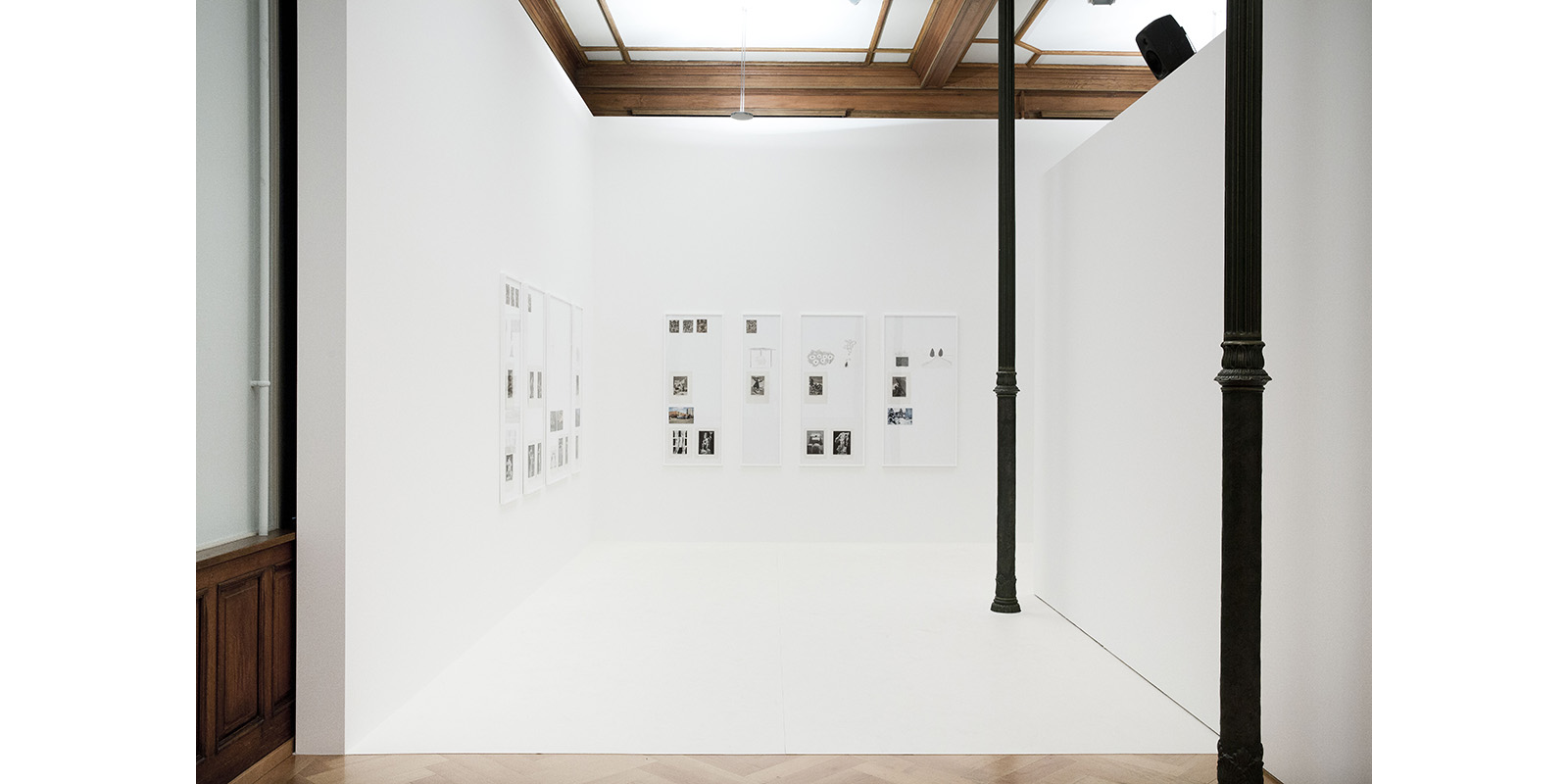
Installation view exhibition “On Series, Scenes and Sequences. Intervention by huber.huber”,
© Graphische Sammlung ETH Zürich, photo: Livio Baumgartner
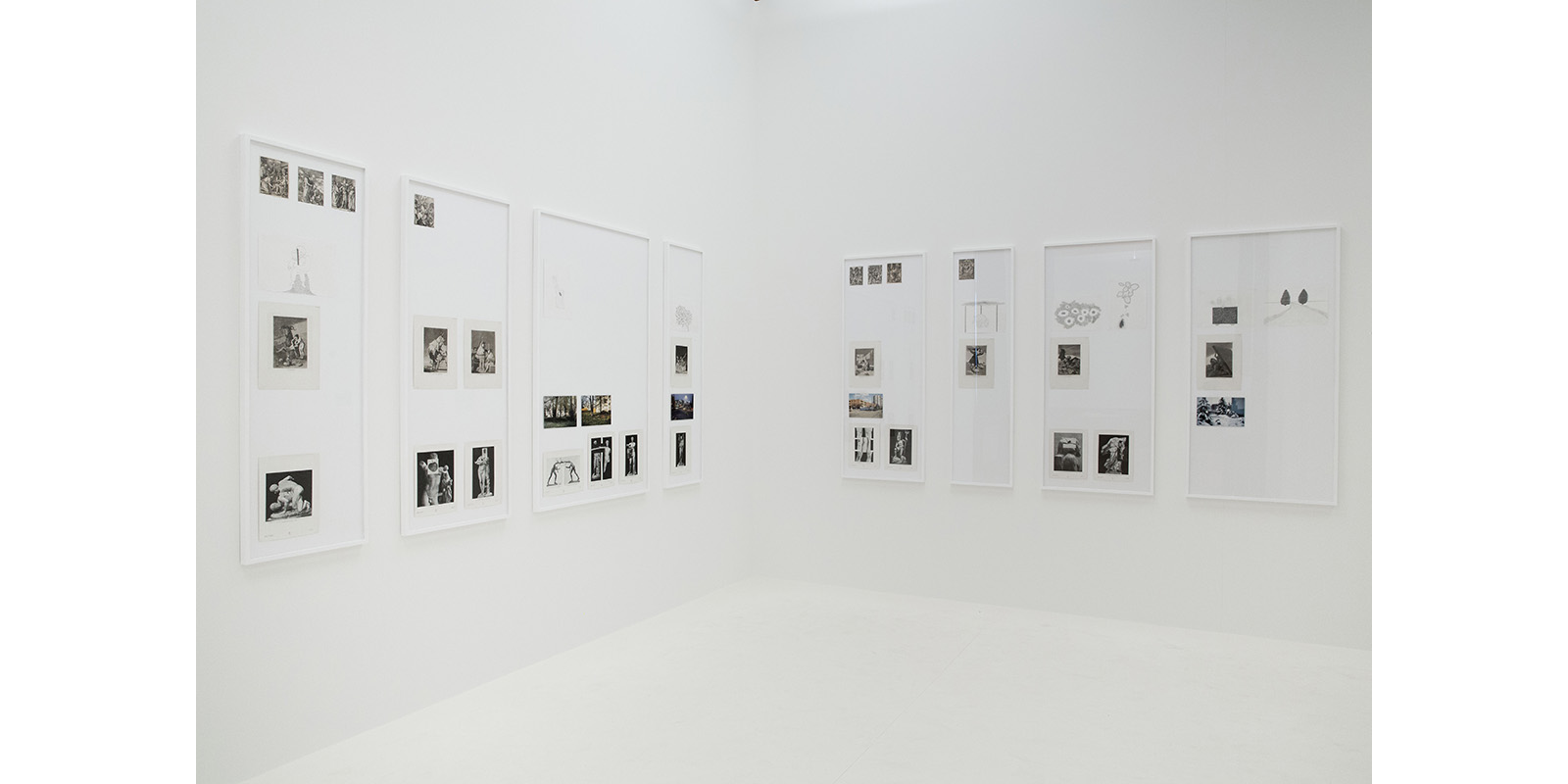
Installation view exhibition “On Series, Scenes and Sequences. Intervention by huber.huber”,
© Graphische Sammlung ETH Zürich, photo: Livio Baumgartner
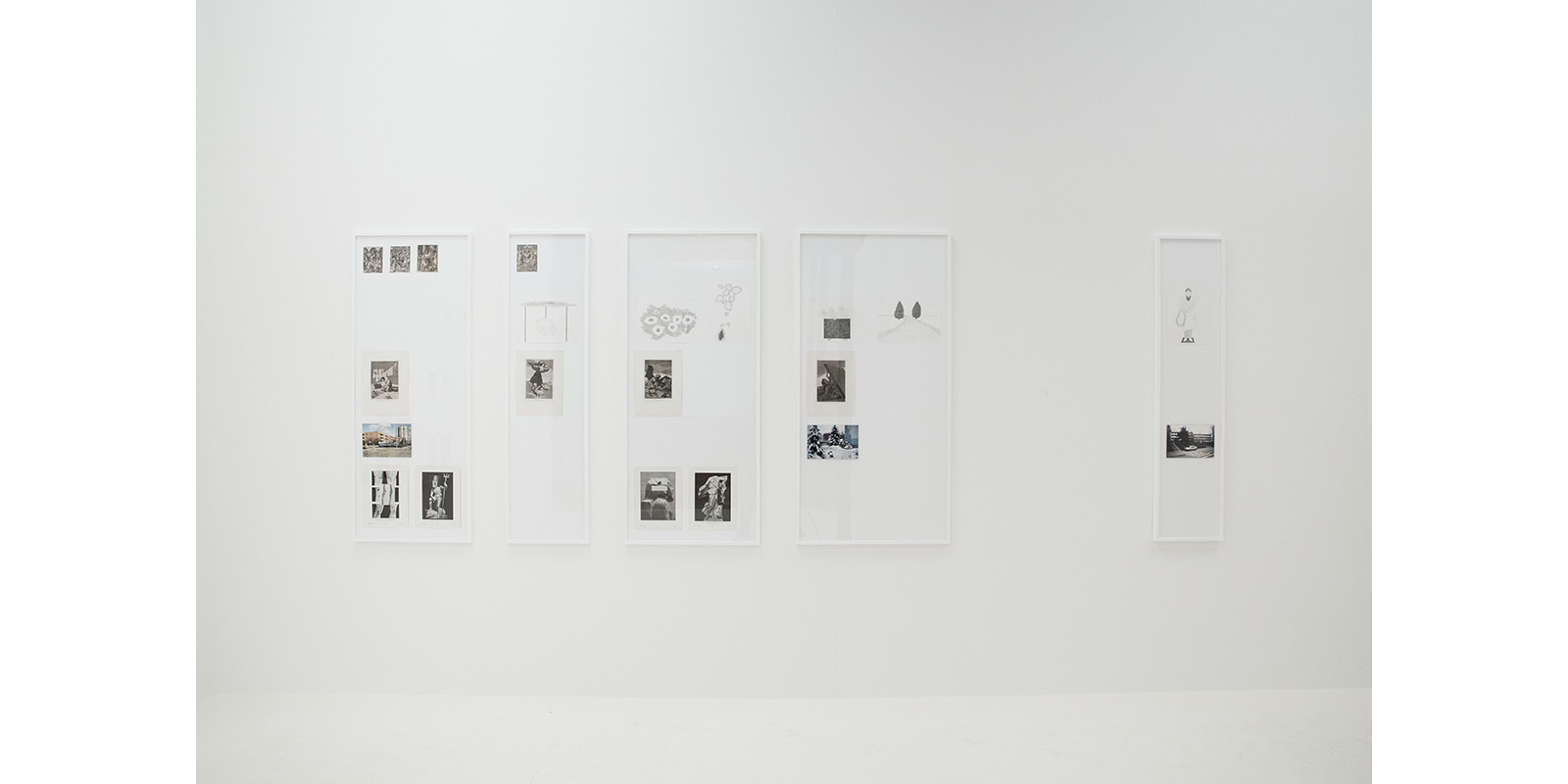
Installation view exhibition “On Series, Scenes and Sequences. Intervention by huber.huber”,
© Graphische Sammlung ETH Zürich, photo: Livio Baumgartner
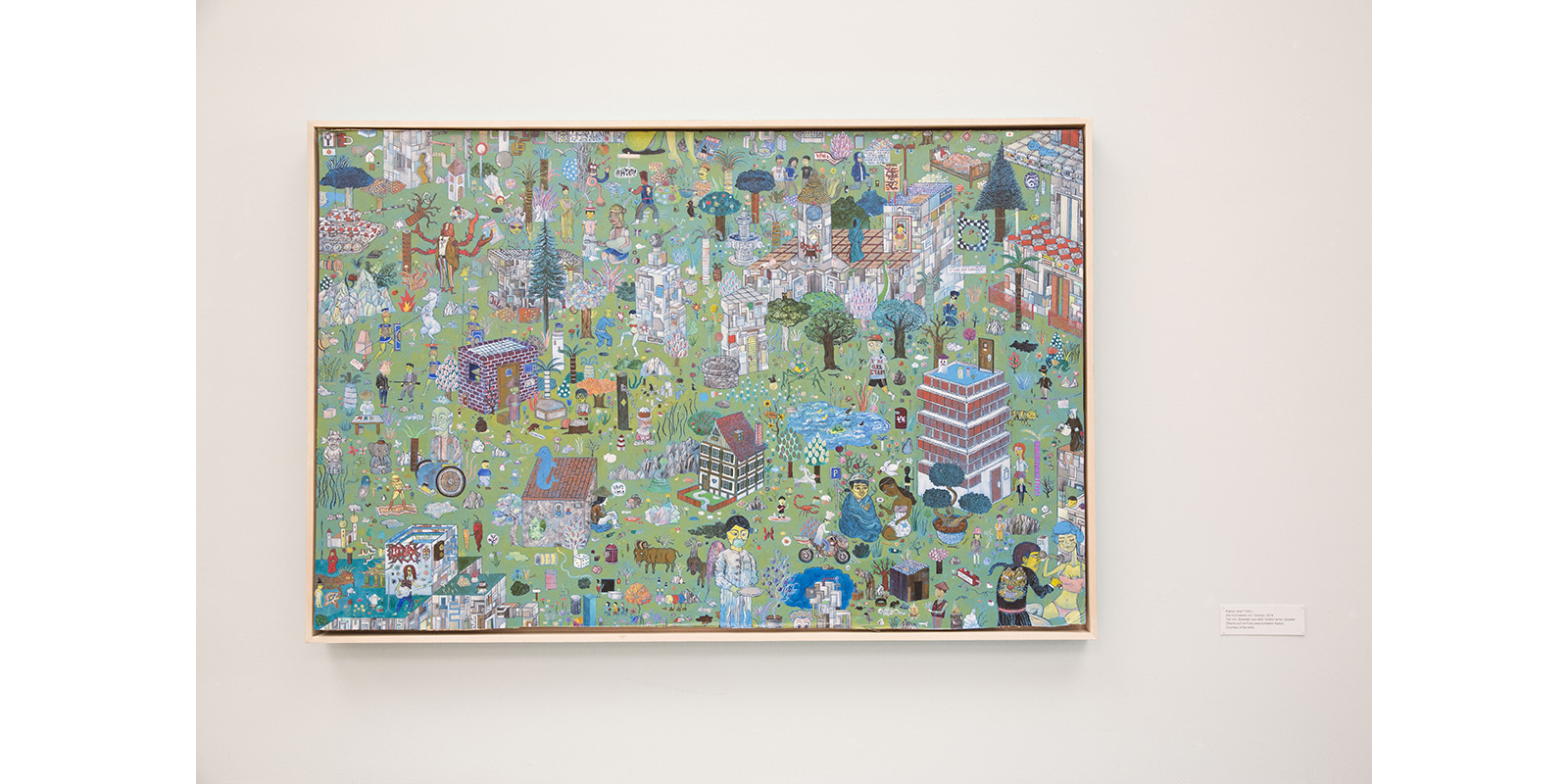
Installation view exhibition “On Series, Scenes and Sequences. Intervention by huber.huber”,
© Graphische Sammlung ETH Zürich, photo: Livio Baumgartner
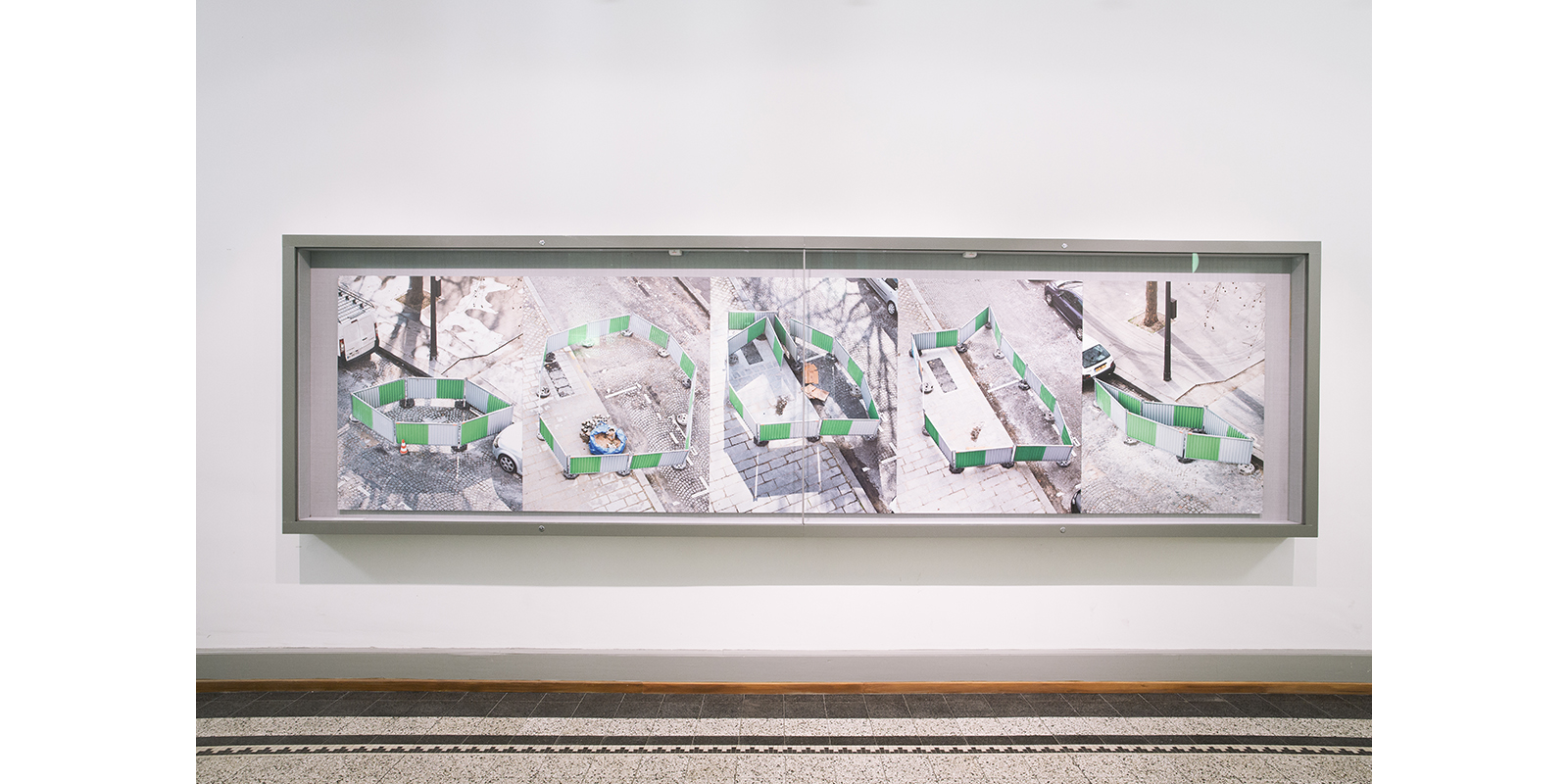
Installation view exhibition “On Series, Scenes and Sequences. Intervention by huber.huber”,
© Graphische Sammlung ETH Zürich, photo: Livio Baumgartner

Installation view exhibition “On Series, Scenes and Sequences. Intervention by huber.huber”,
© Graphische Sammlung ETH Zürich, photo: Livio Baumgartner
The exhibition “Reaper. Richard Hamilton und Sigfried Giedion” brings together two different figures in the history of twentieth century art and architecture. English artist Richard Hamilton is represented by his early series of “Reaper works” (1949), inspired by Sigfried Giedion’s publication “Mechanization Takes Command” (1948) in which the Swiss art historian describes the advancing mechanisation of everyday life. The exhibition at the Graphische Sammlung ETH Zürich is the first to juxtapose the entire “Reaper” cycle with selected visual works from Giedion, clearly addressing the process of academic research behind Hamilton’s creative approach.
Flyer
Press release
Figures and captions
Publication
Exhibition and publication were generously supported by:


Installation view exhibition “Reaper. Richard Hamilton and Sigfried Giedion”,
© Graphische Sammlung ETH Zürich, photo: Livio Baumgartner
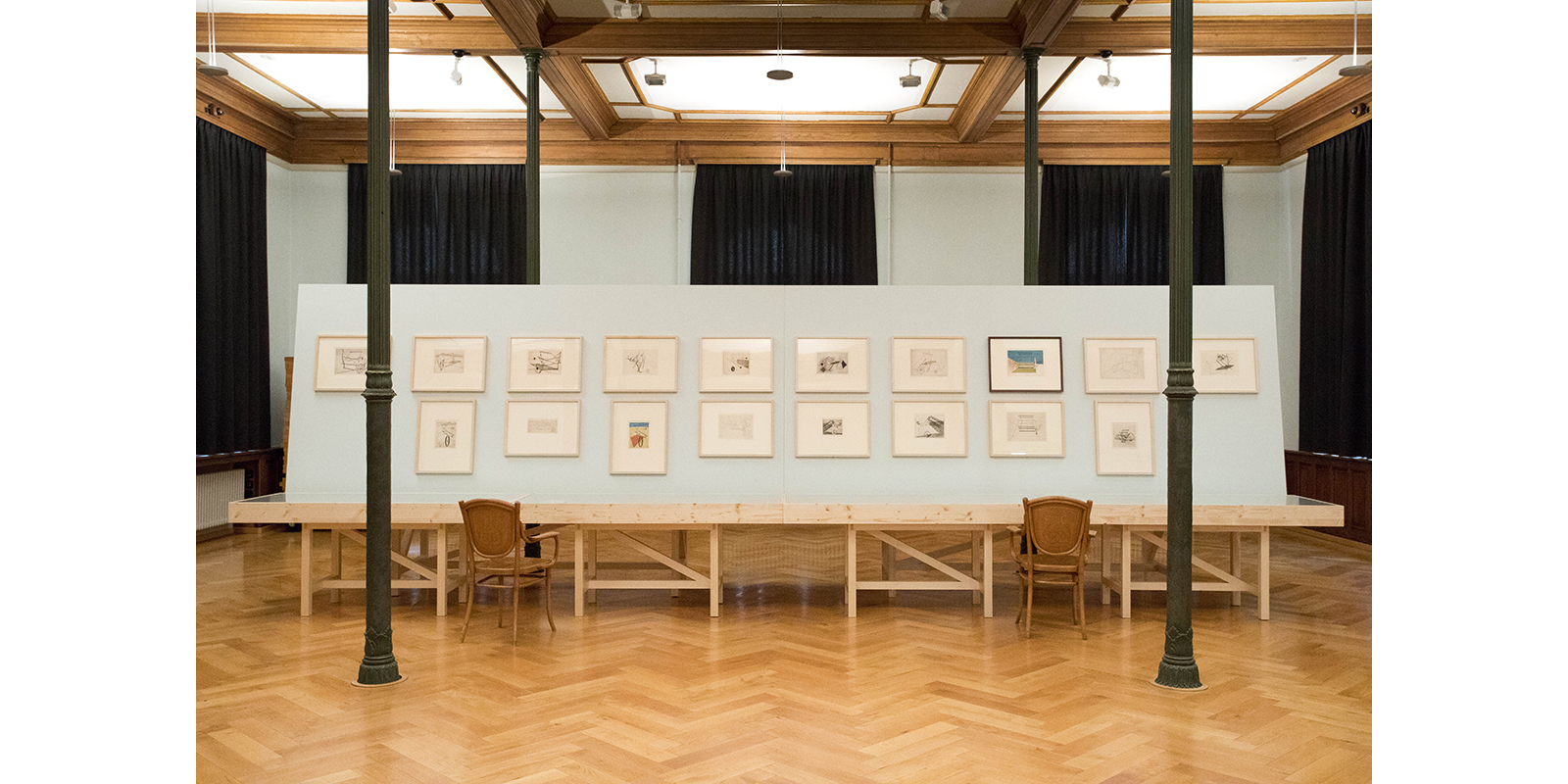
Installation view exhibition “Reaper. Richard Hamilton and Sigfried Giedion”,
© Graphische Sammlung ETH Zürich, photo: Livio Baumgartner
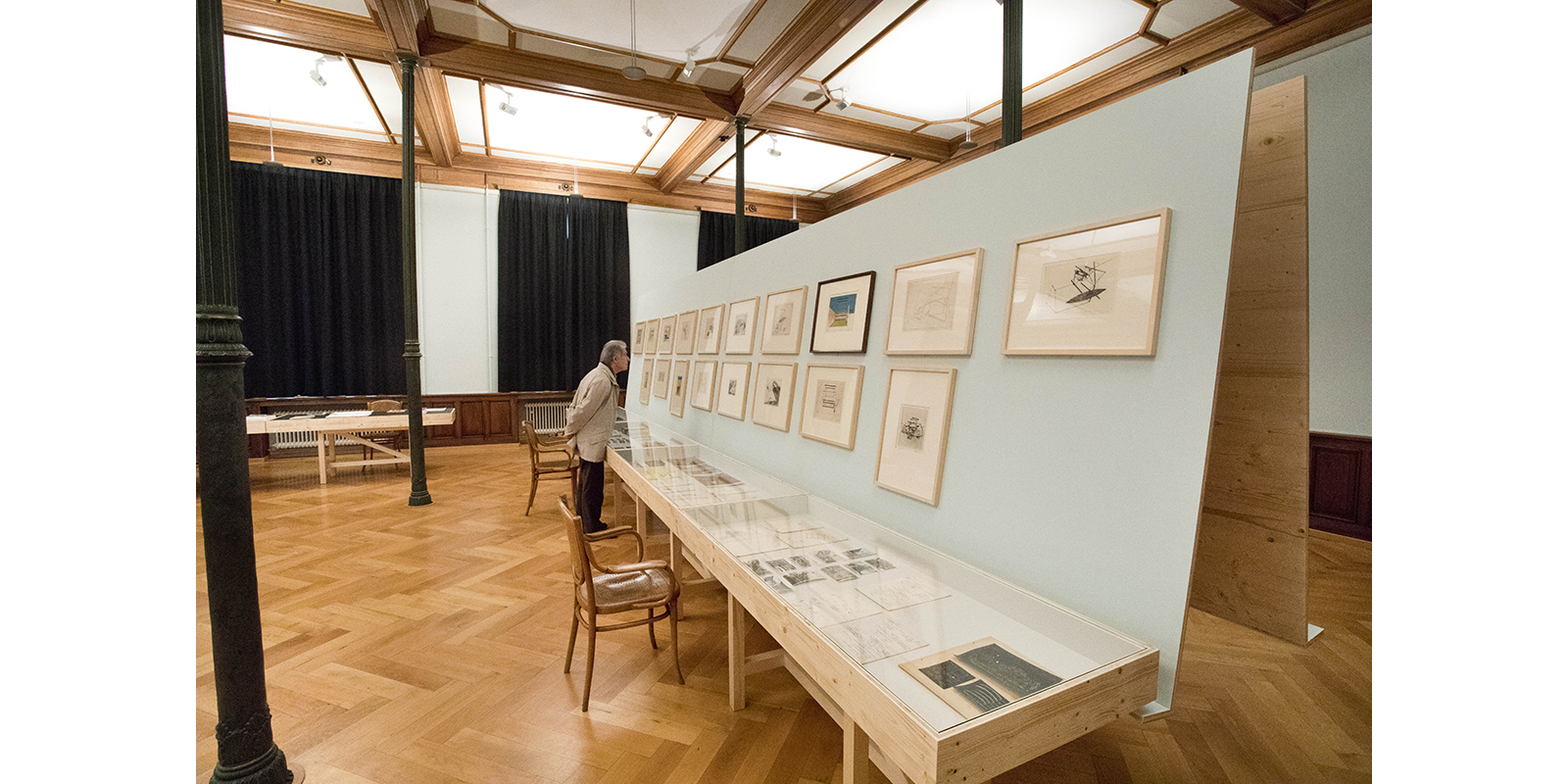
Installation view exhibition “Reaper. Richard Hamilton and Sigfried Giedion”,
© Graphische Sammlung ETH Zürich, photo: Livio Baumgartner
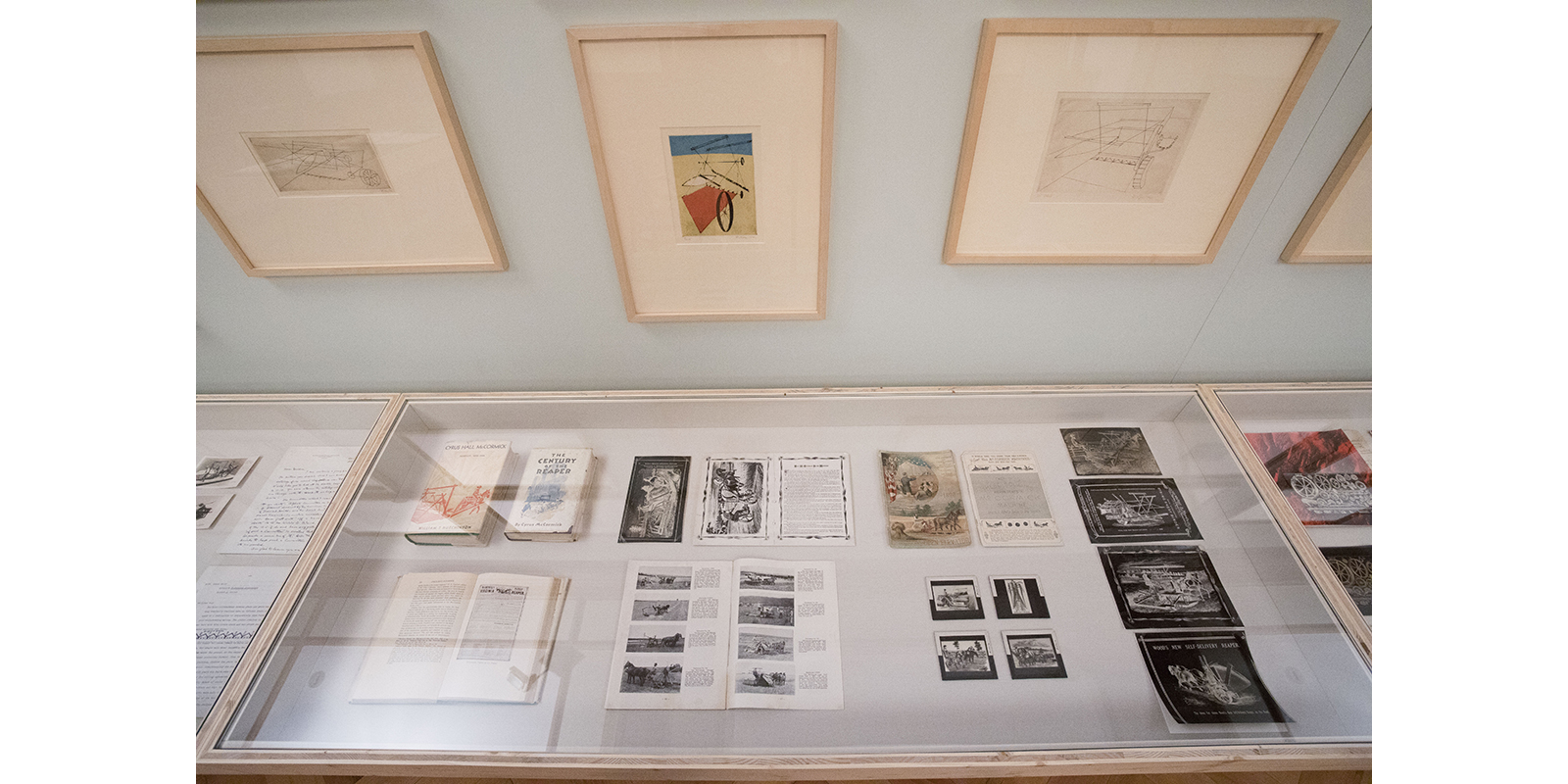
Installation view exhibition “Reaper. Richard Hamilton and Sigfried Giedion”,
© Graphische Sammlung ETH Zürich, photo: Livio Baumgartner
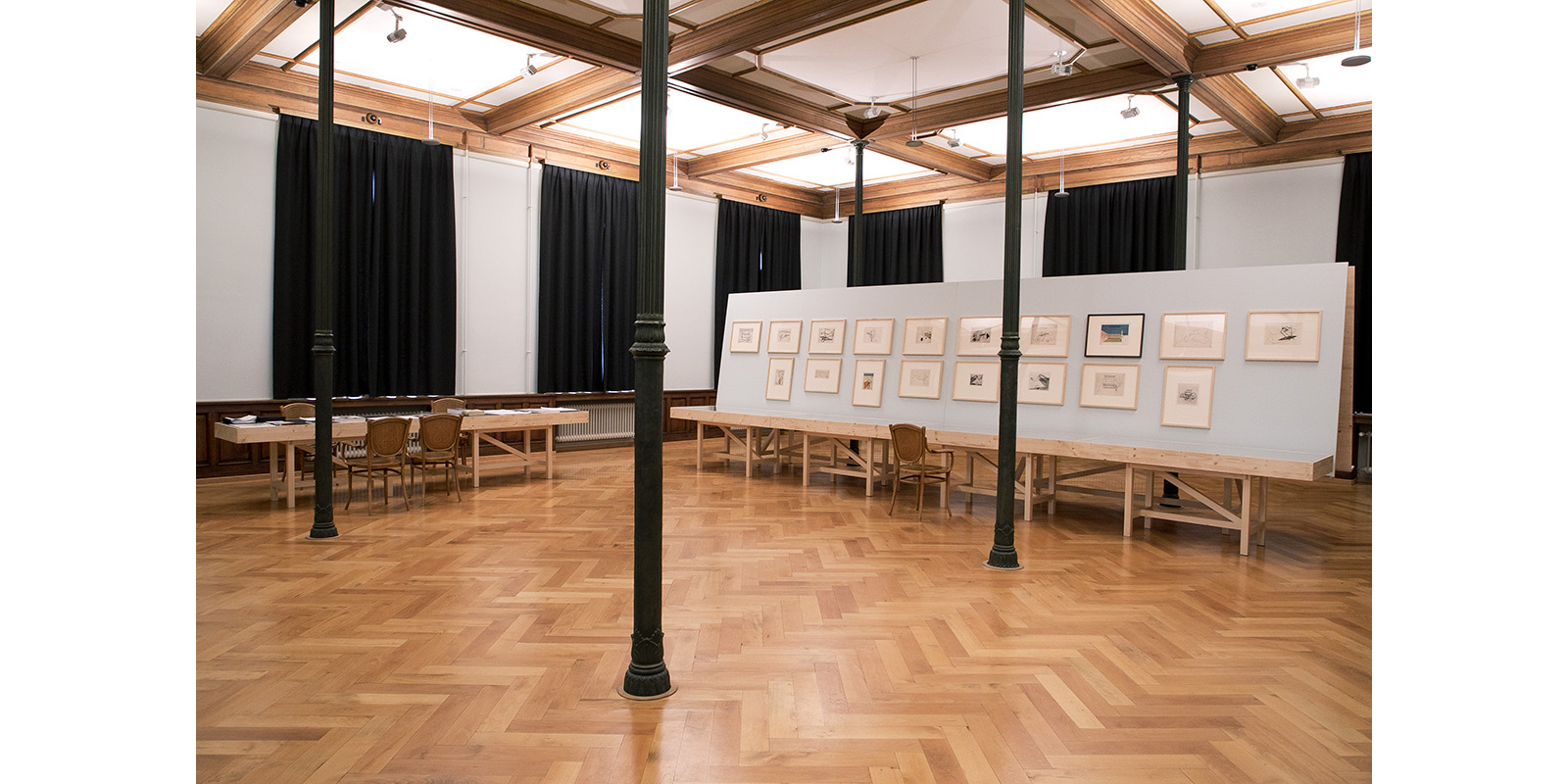
Installation view exhibition “Reaper. Richard Hamilton and Sigfried Giedion”,
© Graphische Sammlung ETH Zürich, photo: Livio Baumgartner
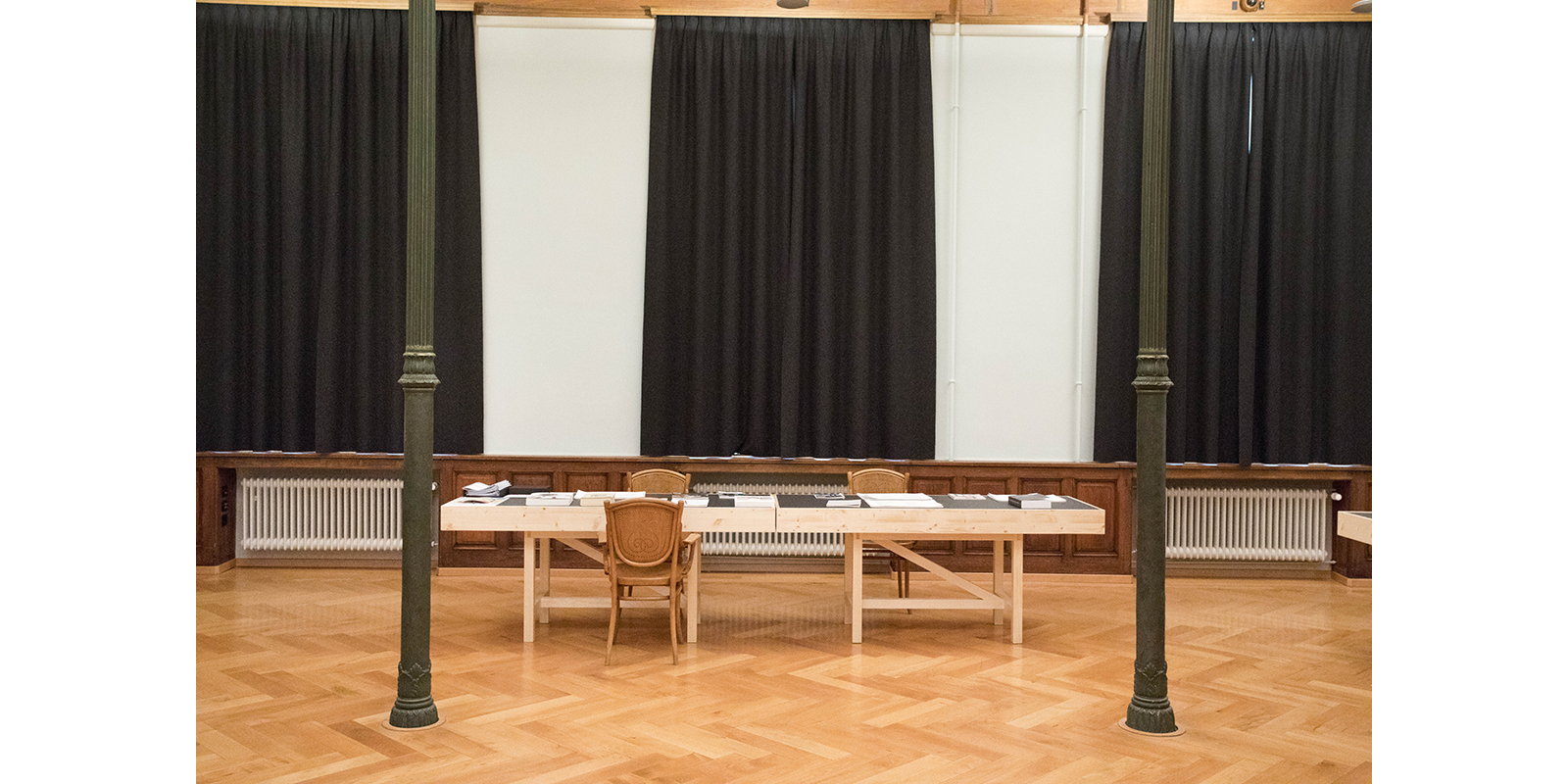
Installation view exhibition “Reaper. Richard Hamilton and Sigfried Giedion”,
© Graphische Sammlung ETH Zürich, photo: Livio Baumgartner

Installation view exhibition “Reaper. Richard Hamilton and Sigfried Giedion”,
© Graphische Sammlung ETH Zürich, photo: Livio Baumgartner
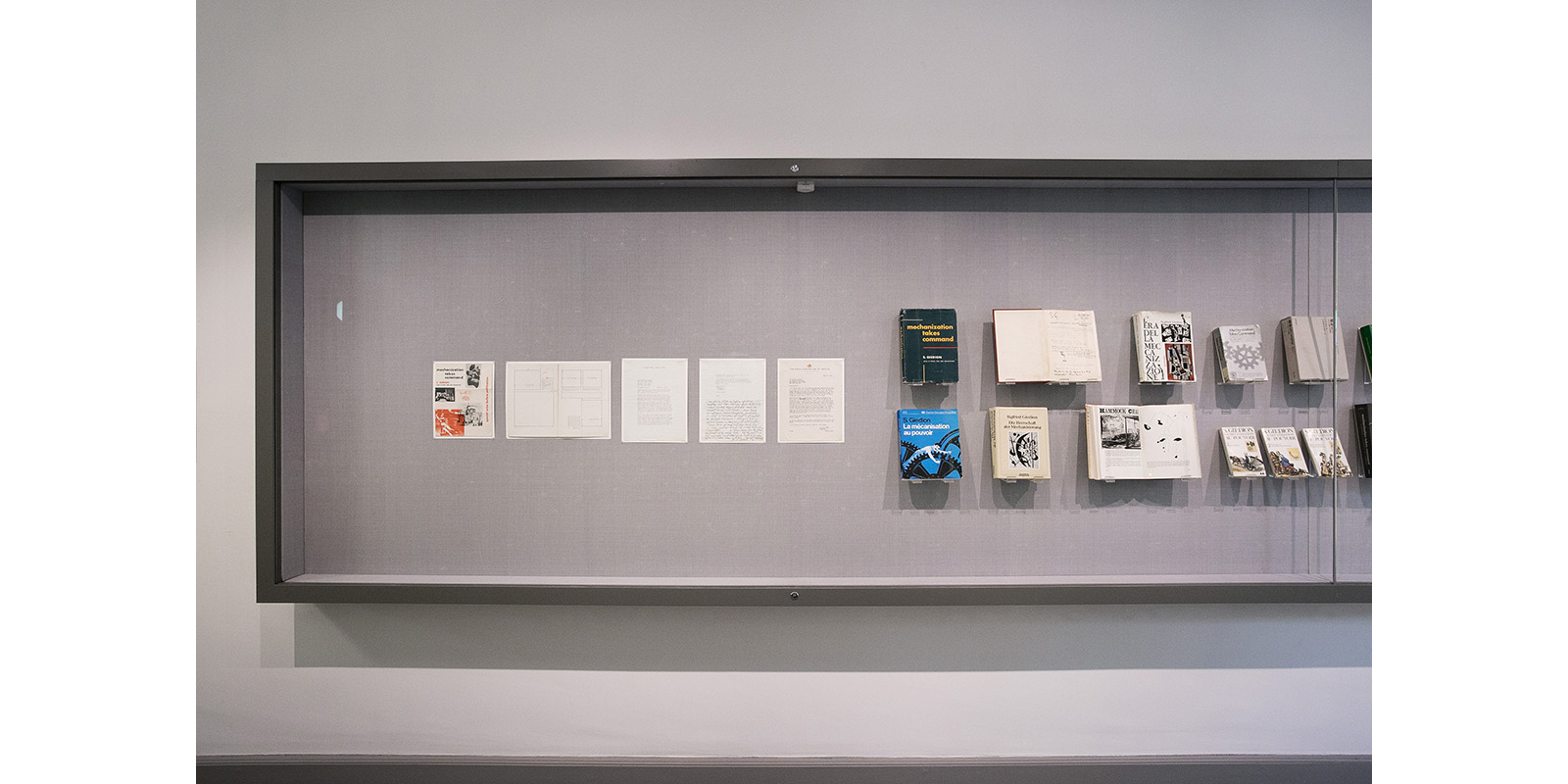
Installation view exhibition “Reaper. Richard Hamilton and Sigfried Giedion”,
© Graphische Sammlung ETH Zürich, photo: Livio Baumgartner
What kind of art has been produced on paper over the past twenty years and found its way into the Graphische Sammlung ETH Zürich? This question was addressed in cooperation with Helmhaus Zürich. The result – an exhibition held at both Helmhaus Zürich and the Graphische Sammlung ETH Zürich – features works by almost 40 artists. It provides an overview of the more recent creative achievements in a medium whose unique combination of craftsmanship, form and content enjoys a long, rich tradition. Yet this medium continues to produce innovative, surprising results.
Press release
Figures and captions
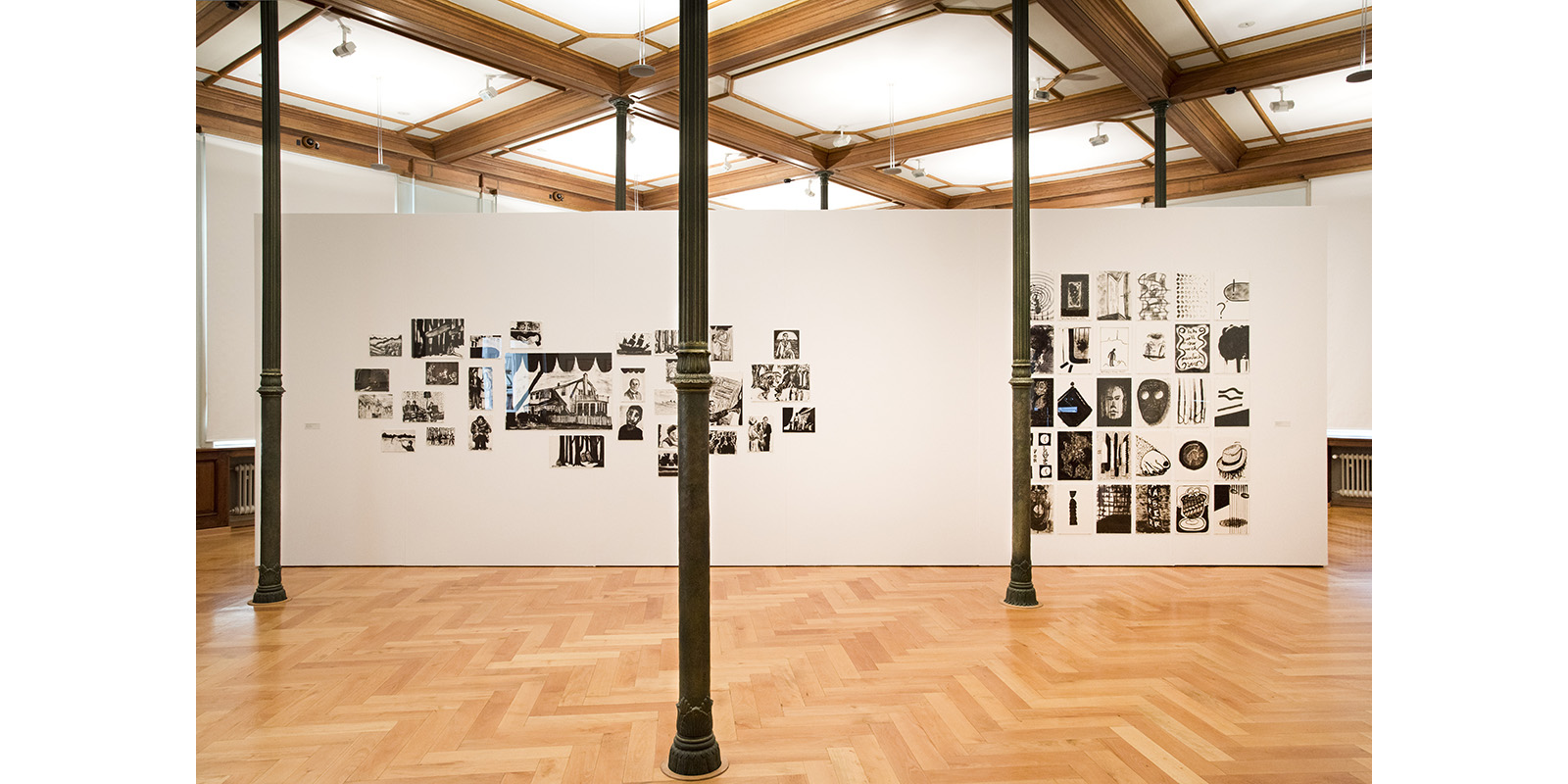
Installation view exhibition “Eternal Present. Contemporary Art from the Graphische Sammlung ETH Zürich”,
© Graphische Sammlung ETH Zürich, photo: Livio Baumgartner
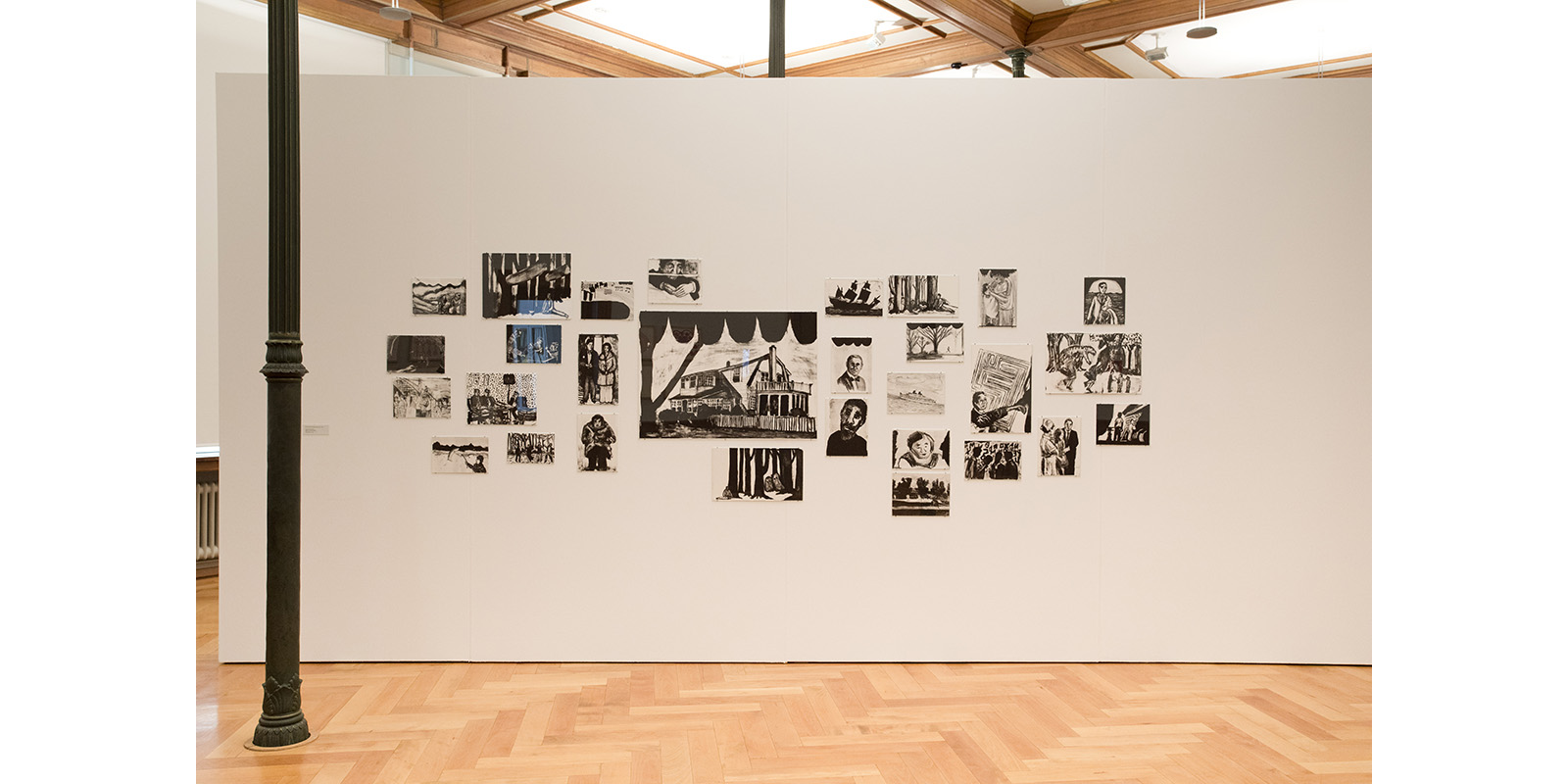
Installation view exhibition “Eternal Present. Contemporary Art from the Graphische Sammlung ETH Zürich”,
© Graphische Sammlung ETH Zürich, photo: Livio Baumgartner
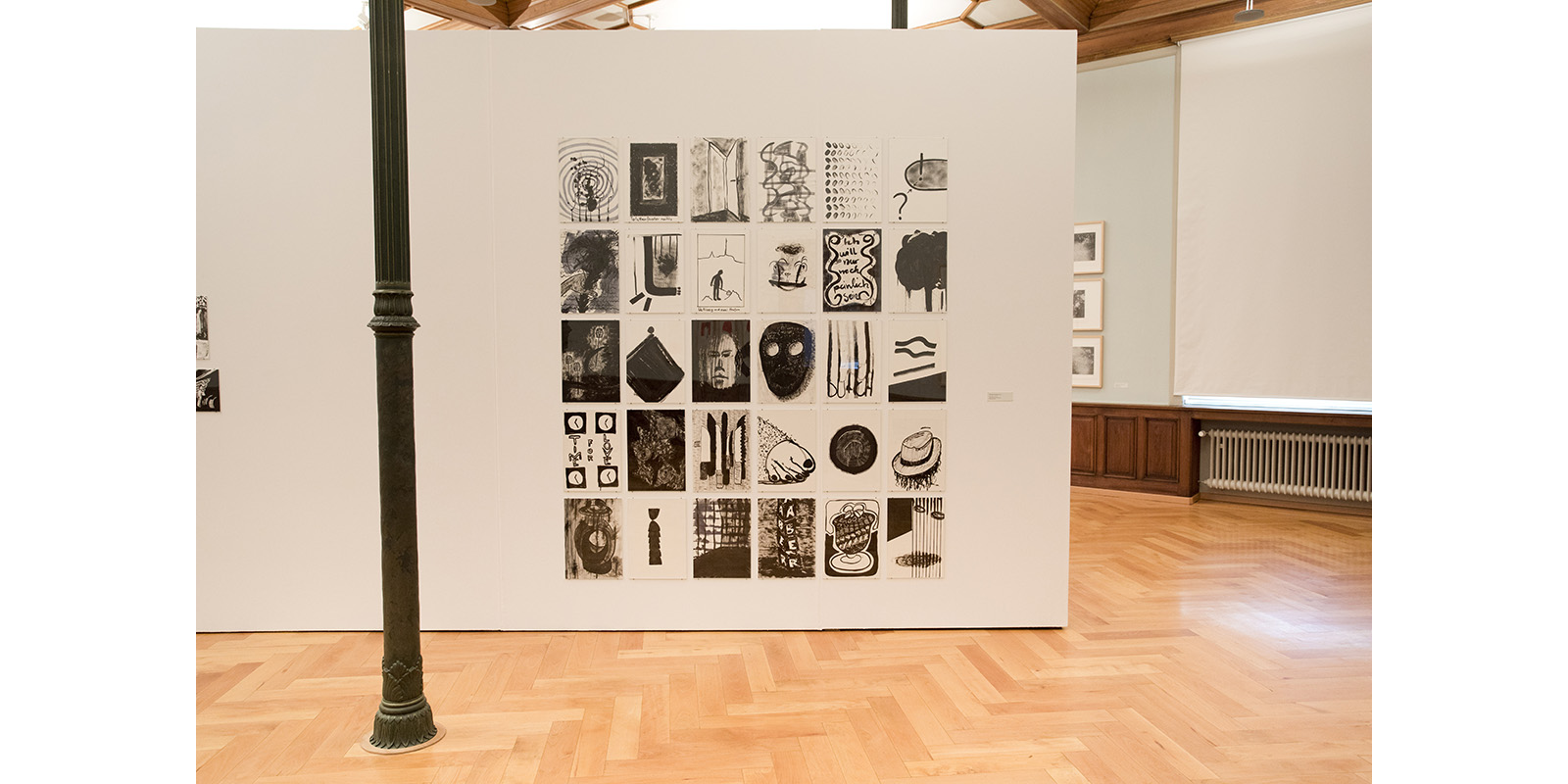
Installation view exhibition “Eternal Present. Contemporary Art from the Graphische Sammlung ETH Zürich”,
© Graphische Sammlung ETH Zürich, photo: Livio Baumgartner

Installation view exhibition “Eternal Present. Contemporary Art from the Graphische Sammlung ETH Zürich”,
© Graphische Sammlung ETH Zürich, photo: Livio Baumgartner
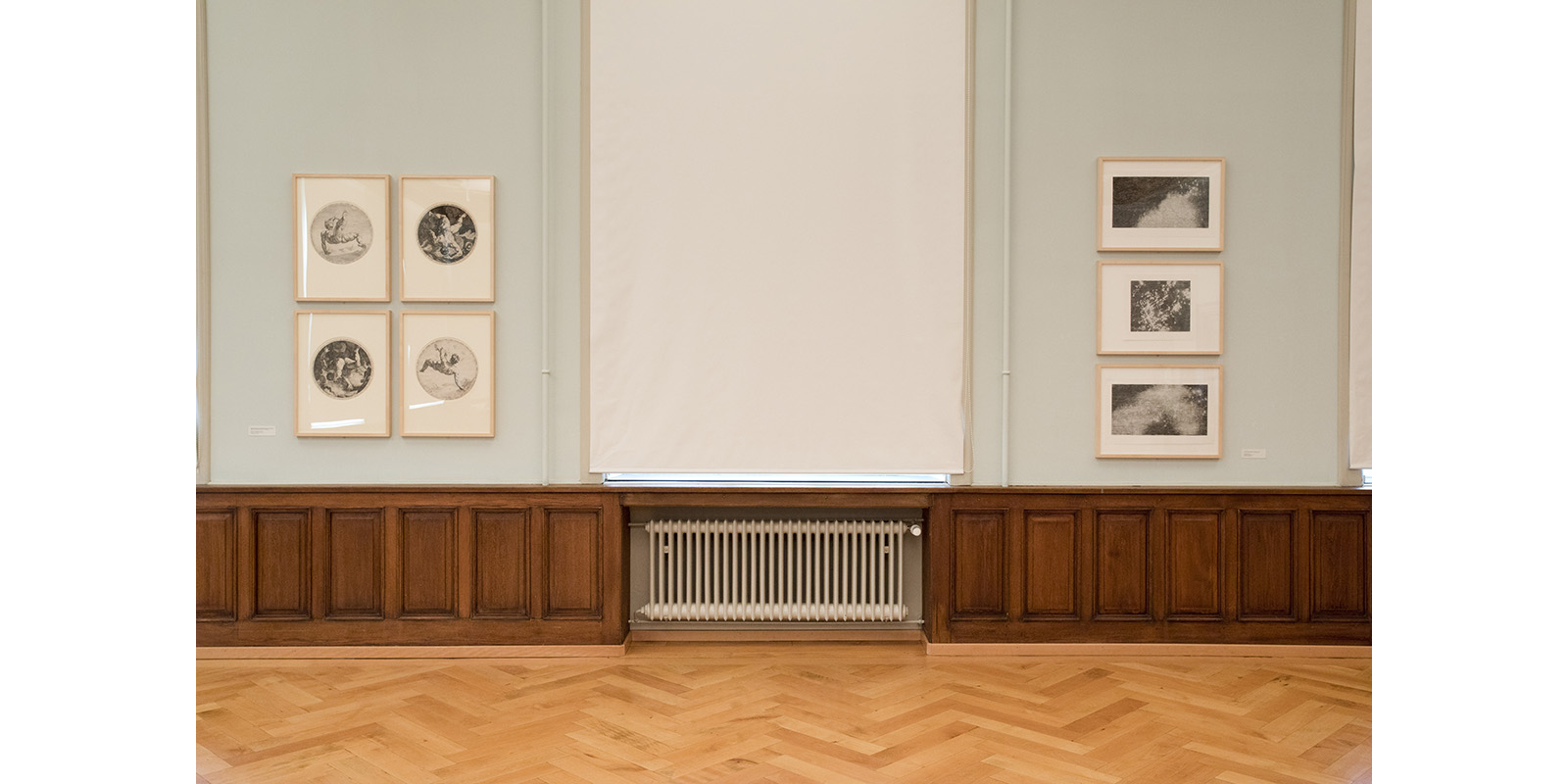
Installation view exhibition “Eternal Present. Contemporary Art from the Graphische Sammlung ETH Zürich”,
© Graphische Sammlung ETH Zürich, photo: Livio Baumgartner

Installation view exhibition “Eternal Present. Contemporary Art from the Graphische Sammlung ETH Zürich”,
© Graphische Sammlung ETH Zürich, photo: Livio Baumgartner

Installation view exhibition “Eternal Present. Contemporary Art from the Graphische Sammlung ETH Zürich”,
© Graphische Sammlung ETH Zürich, photo: Livio Baumgartner
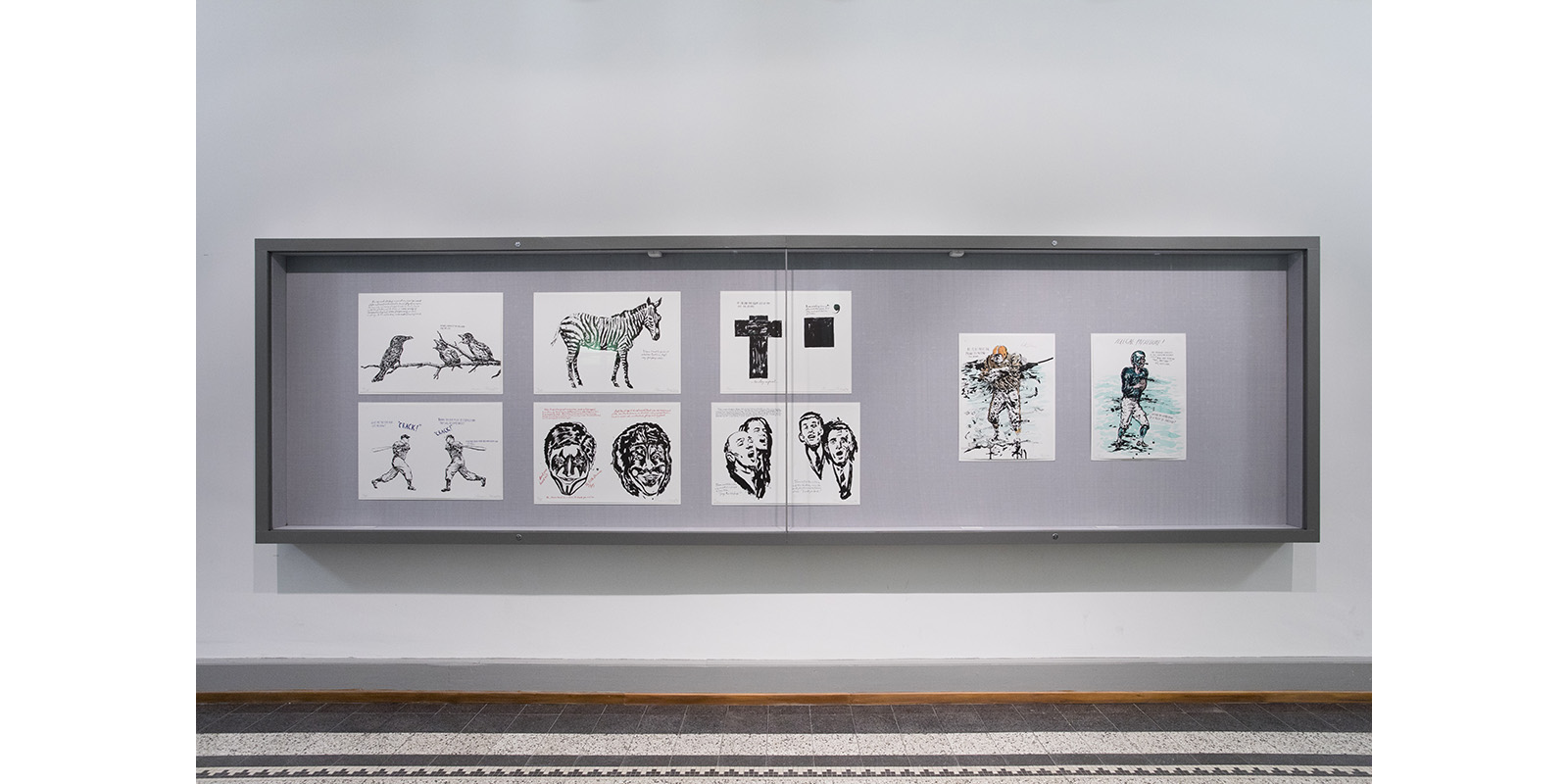
Installation view exhibition “Eternal Present. Contemporary Art from the Graphische Sammlung ETH Zürich”,
© Graphische Sammlung ETH Zürich, photo: Livio Baumgartner
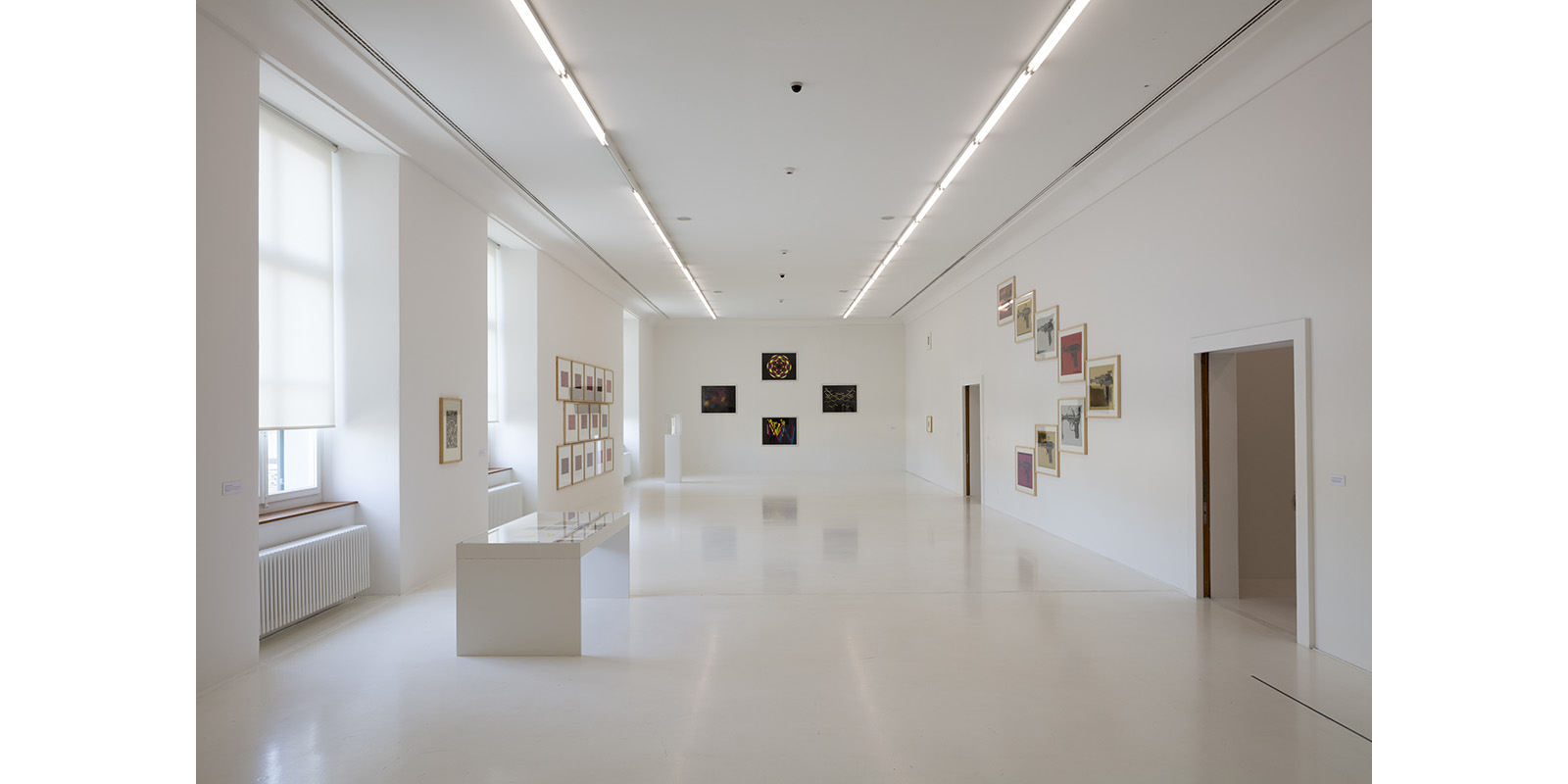
Installation view exhibition “Eternal Present. Contemporary Art from the Graphische Sammlung ETH Zürich”, Helmhaus Zürich, © Graphische Sammlung ETH Zürich, photo: Livio Baumgartner

Installation view exhibition “Eternal Present. Contemporary Art from the Graphische Sammlung ETH Zürich”, Helmhaus Zürich, © Graphische Sammlung ETH Zürich, photo: Livio Baumgartner
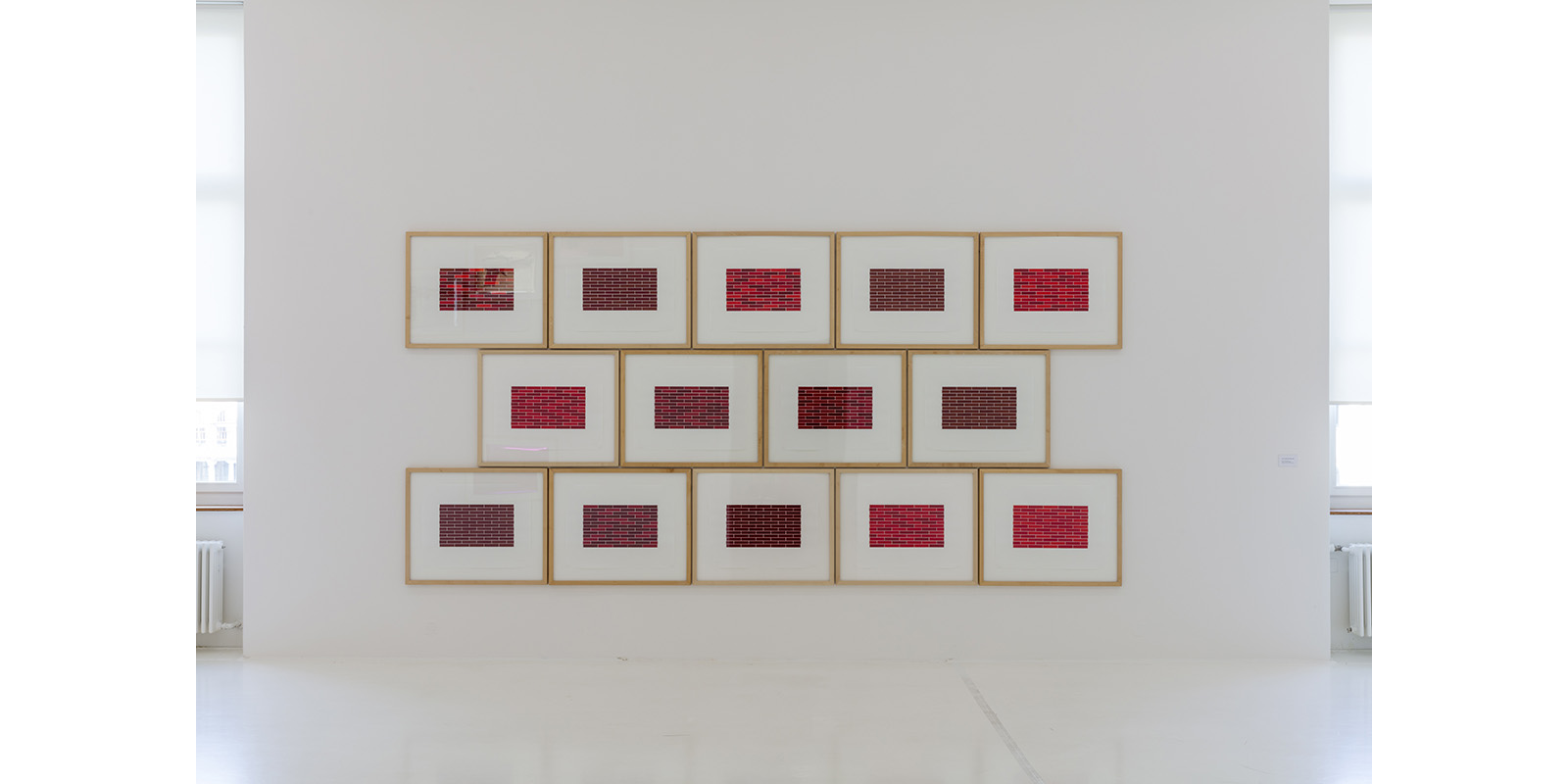
Installation view exhibition “Eternal Present. Contemporary Art from the Graphische Sammlung ETH Zürich”, Helmhaus Zürich, © Graphische Sammlung ETH Zürich, photo: Livio Baumgartner
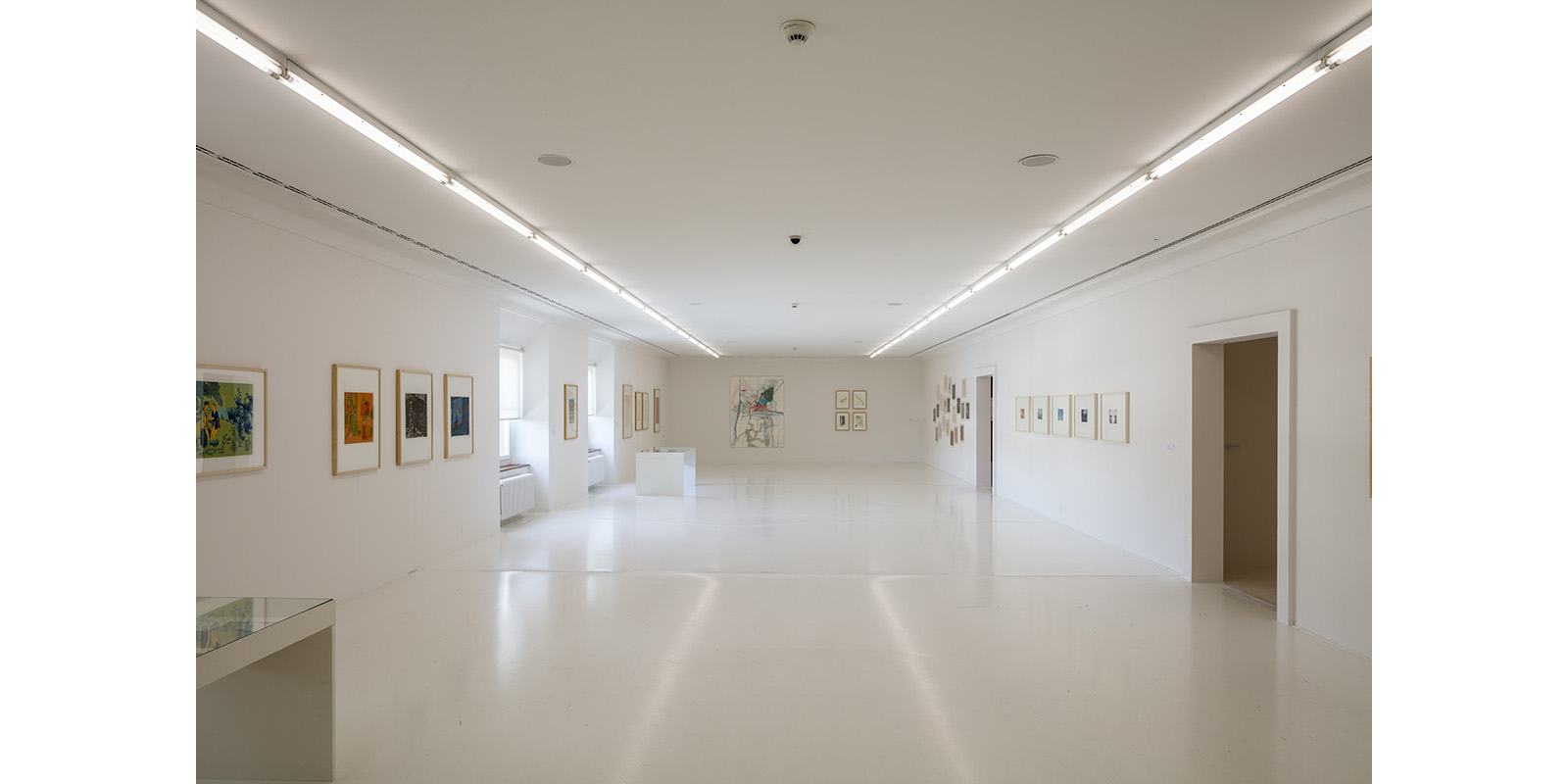
Installation view exhibition “Eternal Present. Contemporary Art from the Graphische Sammlung ETH Zürich”, Helmhaus Zürich, © Graphische Sammlung ETH Zürich, photo: Livio Baumgartner
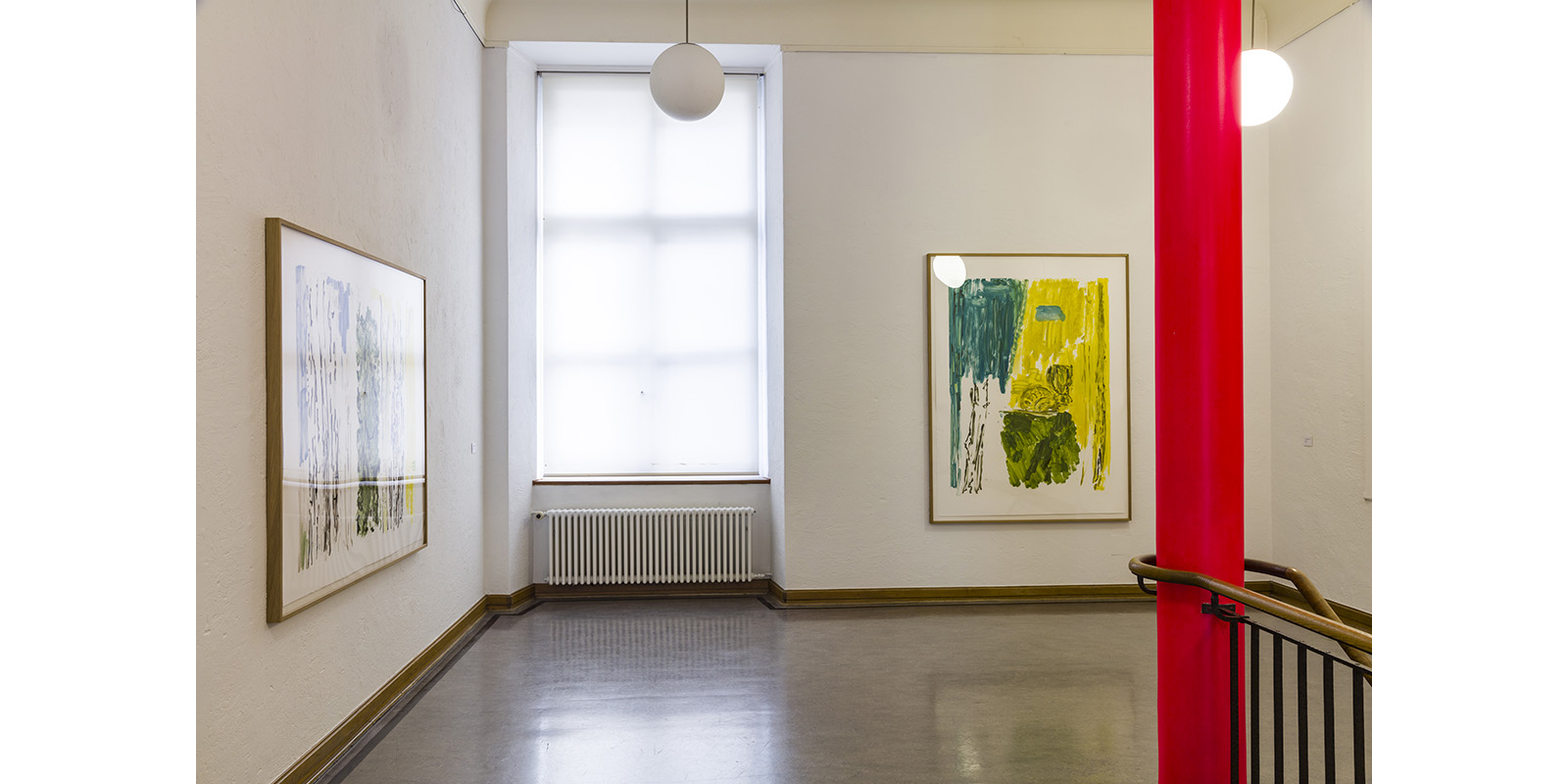
Installation view exhibition “Eternal Present. Contemporary Art from the Graphische Sammlung ETH Zürich”, Helmhaus Zürich, © Graphische Sammlung ETH Zürich, photo: Livio Baumgartner
Zurich is a financial centre hub that harbours many an exciting tale. One of those tales involves the generosity, erudition and cultural involvement of banker Heinrich Schulthess-von Meiss (1813-1898). Equipped with a knowledge as deep as his pockets, he succeeded in putting together a collection of artworks that spans almost the entire history of prints and drawings between 1450 and 1800. His passion for collecting and his enthusiasm for works on paper bestowed a remarkable legacy that has made the Graphische Sammlung ETH Zürich one of the world’s most important repositories of its kind. In 1894, his bequest to the ETH, comprising some 12,000 works of copperplate engravings, etchings and woodcuts dating from before 1800, placed these artworks in the public hand.
Press release
Figures and captions

Installation view exhibition “The True Treasures of a Banker. Prints and Drawings from the Collection of Heinrich Schulthess-von Meiss”, © Graphische Sammlung ETH Zürich, photo: Livio Baumgartner
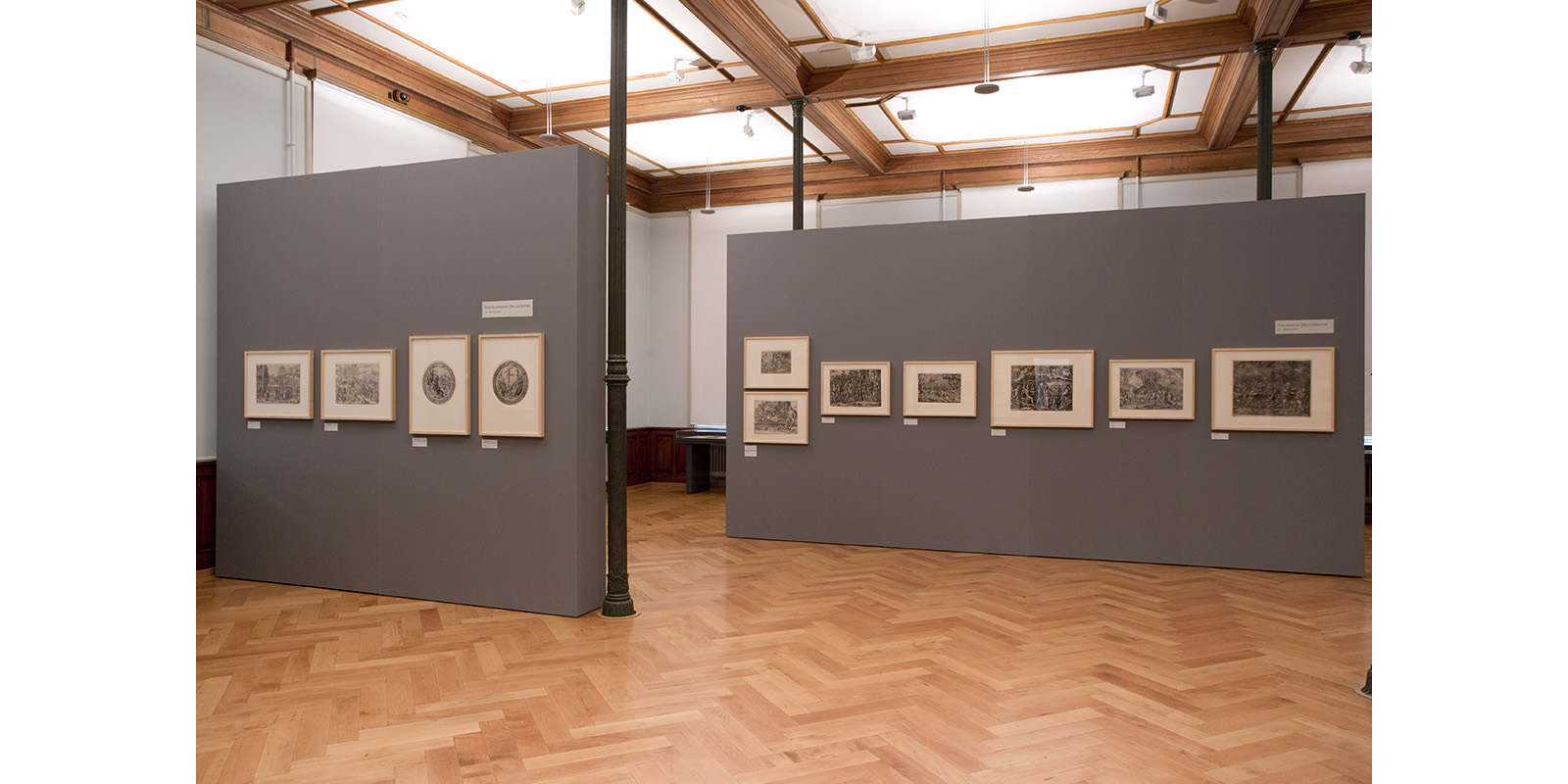
Installation view exhibition “The True Treasures of a Banker. Prints and Drawings from the Collection of Heinrich Schulthess-von Meiss”, © Graphische Sammlung ETH Zürich, photo: Livio Baumgartner
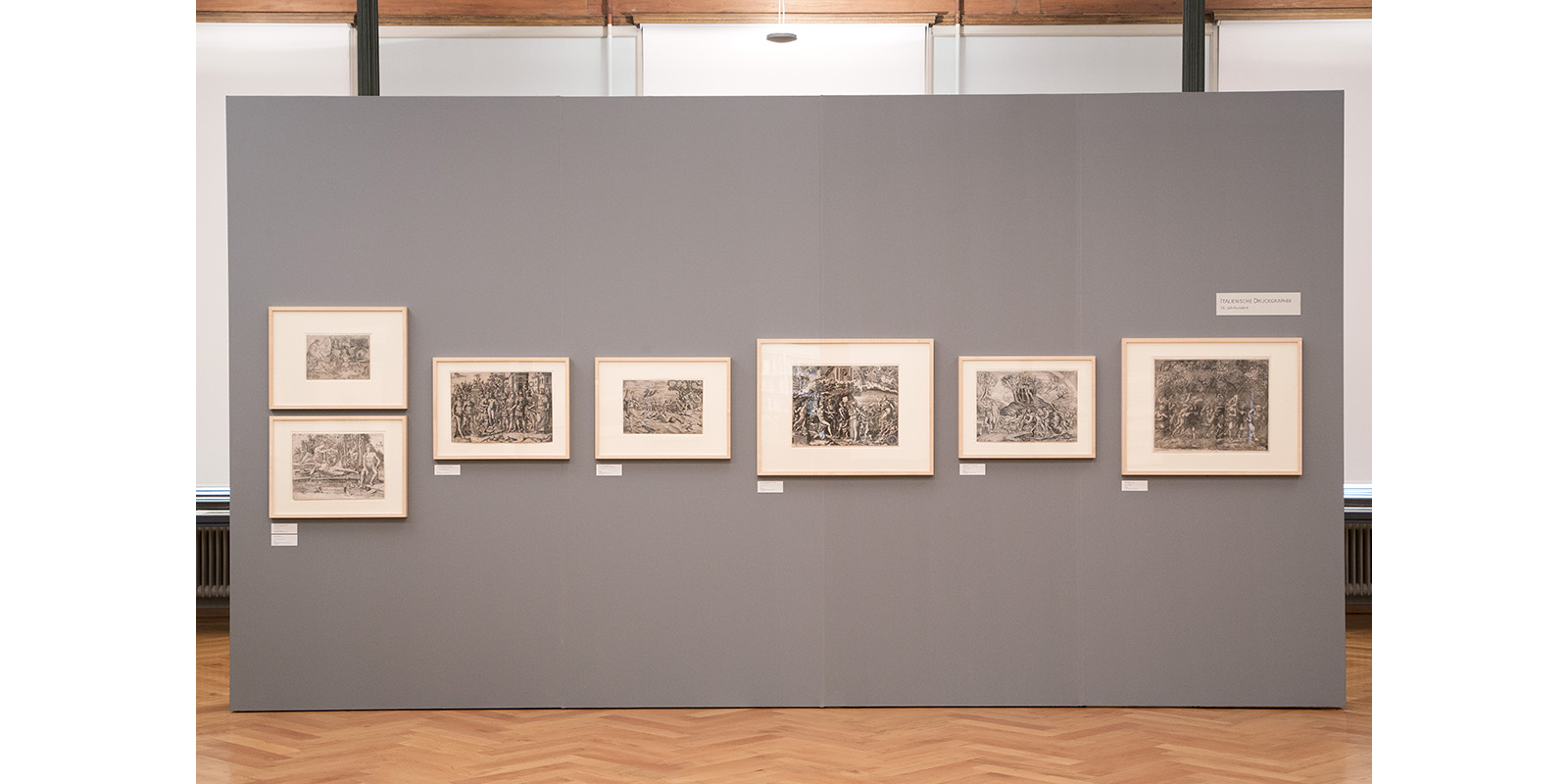
Installation view exhibition “The True Treasures of a Banker. Prints and Drawings from the Collection of Heinrich Schulthess-von Meiss”, © Graphische Sammlung ETH Zürich, photo: Livio Baumgartner
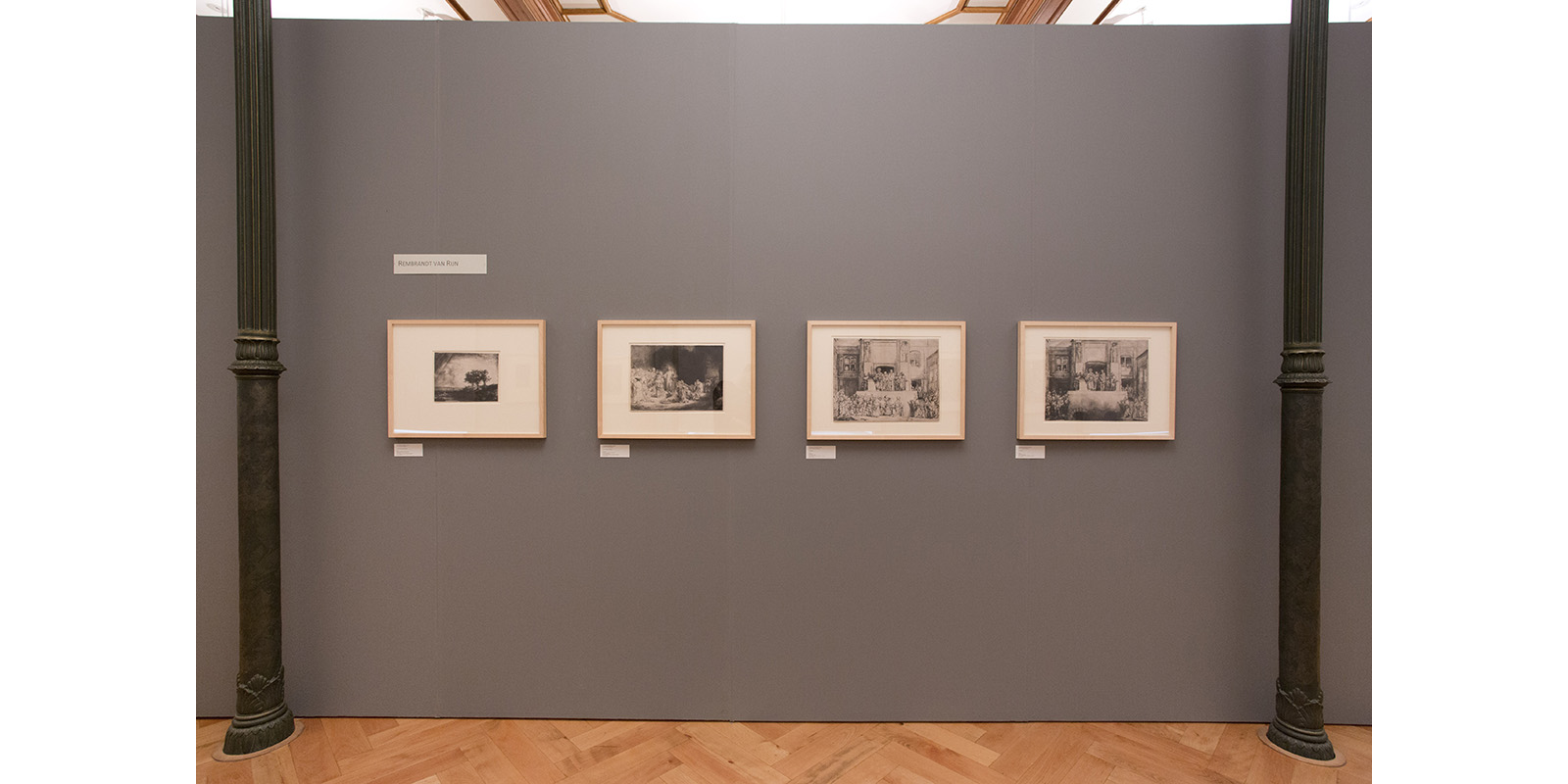
Installation view exhibition “The True Treasures of a Banker. Prints and Drawings from the Collection of Heinrich Schulthess-von Meiss”, © Graphische Sammlung ETH Zürich, photo: Livio Baumgartner

Installation view exhibition “The True Treasures of a Banker. Prints and Drawings from the Collection of Heinrich Schulthess-von Meiss”, © Graphische Sammlung ETH Zürich, photo: Livio Baumgartner
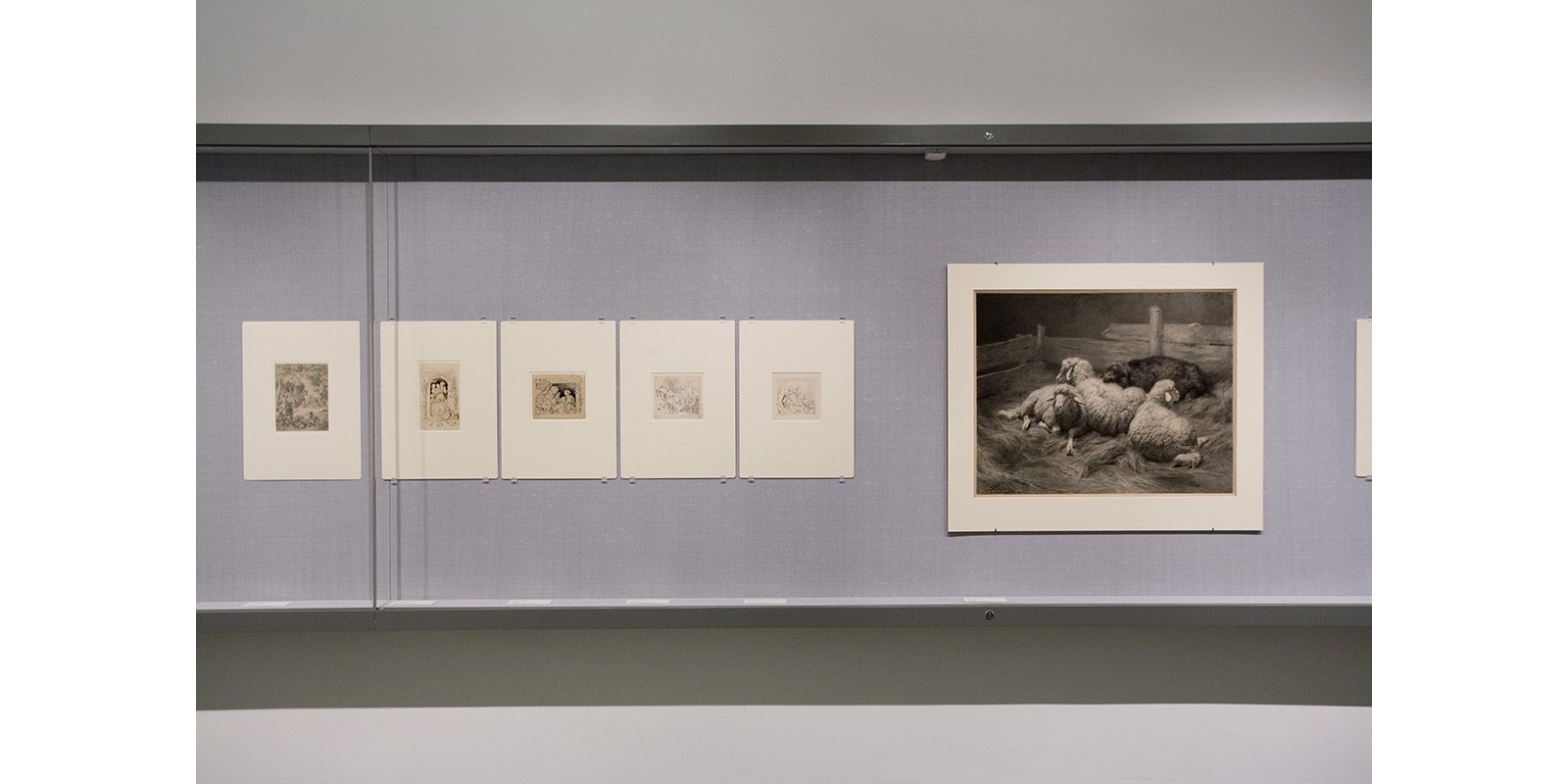
Installation view exhibition “The True Treasures of a Banker. Prints and Drawings from the Collection of Heinrich Schulthess-von Meiss”, © Graphische Sammlung ETH Zürich, photo: Livio Baumgartner
In his „Collection of Architectural Designs“ [„Sammlung architektonischer Entwürfe“], the great architect Karl Friedrich Schinkel (1781-1841) skilfully combined the art of drawing with that of architecture. By promoting his own craft through these artfully presented architectural designs, he gained a glittering reputation throughout the whole of Europe within his own lifetime. Schinkel had his drawings of architectural designs etched and engraved by a number of different artists that he continued to commission throughout.
The great appeal of his „Collection“ is that the 174 engravings are not just designs for works that were later built, but also include unrealised alternatives and prototypes. This gives an intimate and unique insight into the creative thought process of the master architect himself.
The selected exhibits give a rare insight into the work of this great architect, clearly illustrating the craftsmanship and artistry with which he executed his designs.
Isabelle Scheck, Curator
Press release
Figures and captions

Installation view exhibition “Architecture as Image. Karl Friedrich Schinkels ‘Collection of Architectural Designs’”,
© Graphische Sammlung ETH Zürich, photo: Livio Baumgartner

Installation view exhibition “Architecture as Image. Karl Friedrich Schinkels ‘Collection of Architectural Designs’”,
© Graphische Sammlung ETH Zürich, photo: Livio Baumgartner

Installation view exhibition “Architecture as Image. Karl Friedrich Schinkels ‘Collection of Architectural Designs’”,
© Graphische Sammlung ETH Zürich, photo: Livio Baumgartner

Installation view exhibition “Architecture as Image. Karl Friedrich Schinkels ‘Collection of Architectural Designs’”,
© Graphische Sammlung ETH Zürich, photo: Livio Baumgartner

Installation view exhibition “Architecture as Image. Karl Friedrich Schinkels ‘Collection of Architectural Designs’”,
© Graphische Sammlung ETH Zürich, photo: Livio Baumgartner

Installation view exhibition “Architecture as Image. Karl Friedrich Schinkels ‘Collection of Architectural Designs’”,
© Graphische Sammlung ETH Zürich, photo: Livio Baumgartner
This exhibition is being held in acknowledgment of the generous gift received from architect and artist Bryan Cyril Thurston (*1933 ). Set alongside the strictly neo-classical architecture of Karl Friedrich Schinkel (1781-1841), Thurston’s multi-faceted and lyrical works provide a fascinating contrast. In addition to his personal sketchbooks and architectural plans for real and imaginary building, the presentation also includes watercolours, collages and etchings from our own collection.
Thurston’s artistic output is as widely varied as his architectural oeuvre. Inspired by the famous British painter and printmaker Stanley William Hayter (1901-1988) and his legendary Paris studio ATELIER 17, Thurston has created countless works on paper. Following in the footsteps of the master artist he admires, Thurston’s prints are a constant exploration of new and experimental forms of expression. Techniques are combined, alienated and enhanced. Throughout his life, this impassioned printmaker has continued to pursue the delicate aspects of watercolours, collages and plans as well. All of his works are permeated by music, with a divinely lyrical touch. It is no coincidence that the title he has chosen for his exhibition is taken from the libretto of Peter Grimes by the English composer Benjamin Britten (1913-1976).
Contact person:
Alexandra Barcal, Curator
Press release
Figures and captions

Installation view exhibition “Bryan Cyril Thurston. WHO CAN TURN SKIES BACK AND BEGIN AGAIN”,
© Graphische Sammlung ETH Zürich, photo: Livio Baumgartner

Installation view exhibition “Bryan Cyril Thurston. WHO CAN TURN SKIES BACK AND BEGIN AGAIN”,
© Graphische Sammlung ETH Zürich, photo: Livio Baumgartner

Installation view exhibition “Bryan Cyril Thurston. WHO CAN TURN SKIES BACK AND BEGIN AGAIN”,
© Graphische Sammlung ETH Zürich, photo: Livio Baumgartner
André Thomkins (1930–1985) belonged to a generation of Swiss artists that won unprecedented international recognition and acclaim. It was the generation that included Jean Tinguely, Bernhard Luginbühl, Franz Eggenschwiler, Franz Gertsch, Dieter Roth and Rolf Iseli. What most of these artists shared in common was their tendency to work in a wide variety of different media. Thomkins not only excelled in painting and drawing, but was also a highly talented sculptor and musician as well as an outstanding wordsmith. By the time he decided to return to his native Switzerland, he had already produced an oeuvre of extraordinary breadth. During his Zurich years, between 1978 and 1985, he revisited and built on some of his previous accomplishments, such as the Lackskin technique that he had developed in the late 1950s. He also returned to oil painting. His Zurich years might be described as a period of maturity in which he became internationally acknowledged. Known at the time primarily for his small-format drawings, his works of the late 1970s and early 1980s took on larger dimensions. It is surely no coincidence that this is precisely the period in which the monumental xylophone was created for Flüeli-Ranft – nor that André Thomkins decided to accept the commission, together with Rolf Winnewisser, for two murals in the Swiss National Bank in Lucerne. In collaboration with printer Peter Kneubühler he created wonderful prints using the vernis mou (soft-ground etching) technique.
Paul Tanner, curator
Press release
Figures and captions
Publication
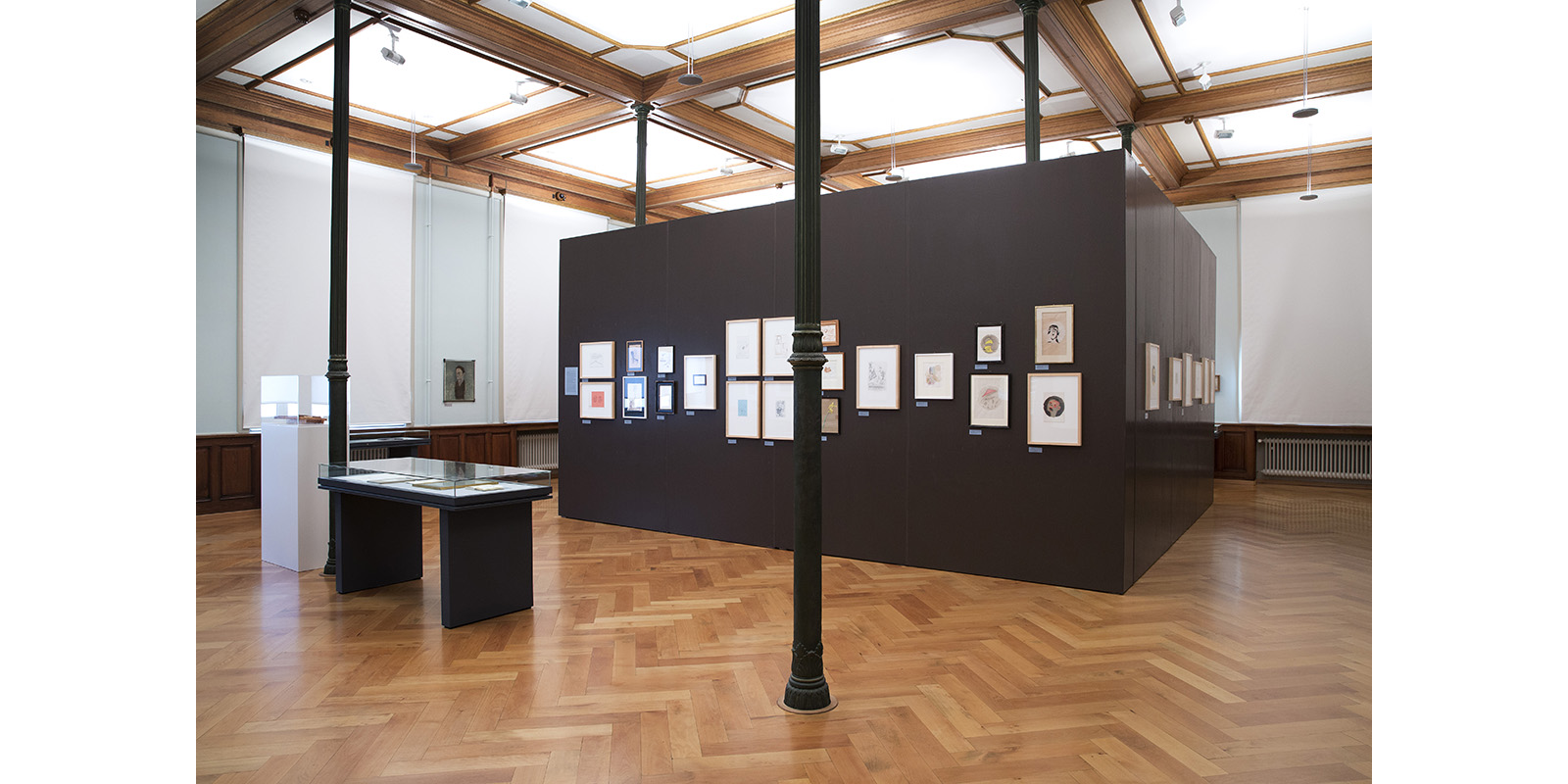
Installation view exhibition “André Thomkins. The Zurich Years”,
© Graphische Sammlung ETH Zürich, photo: Livio Baumgartner
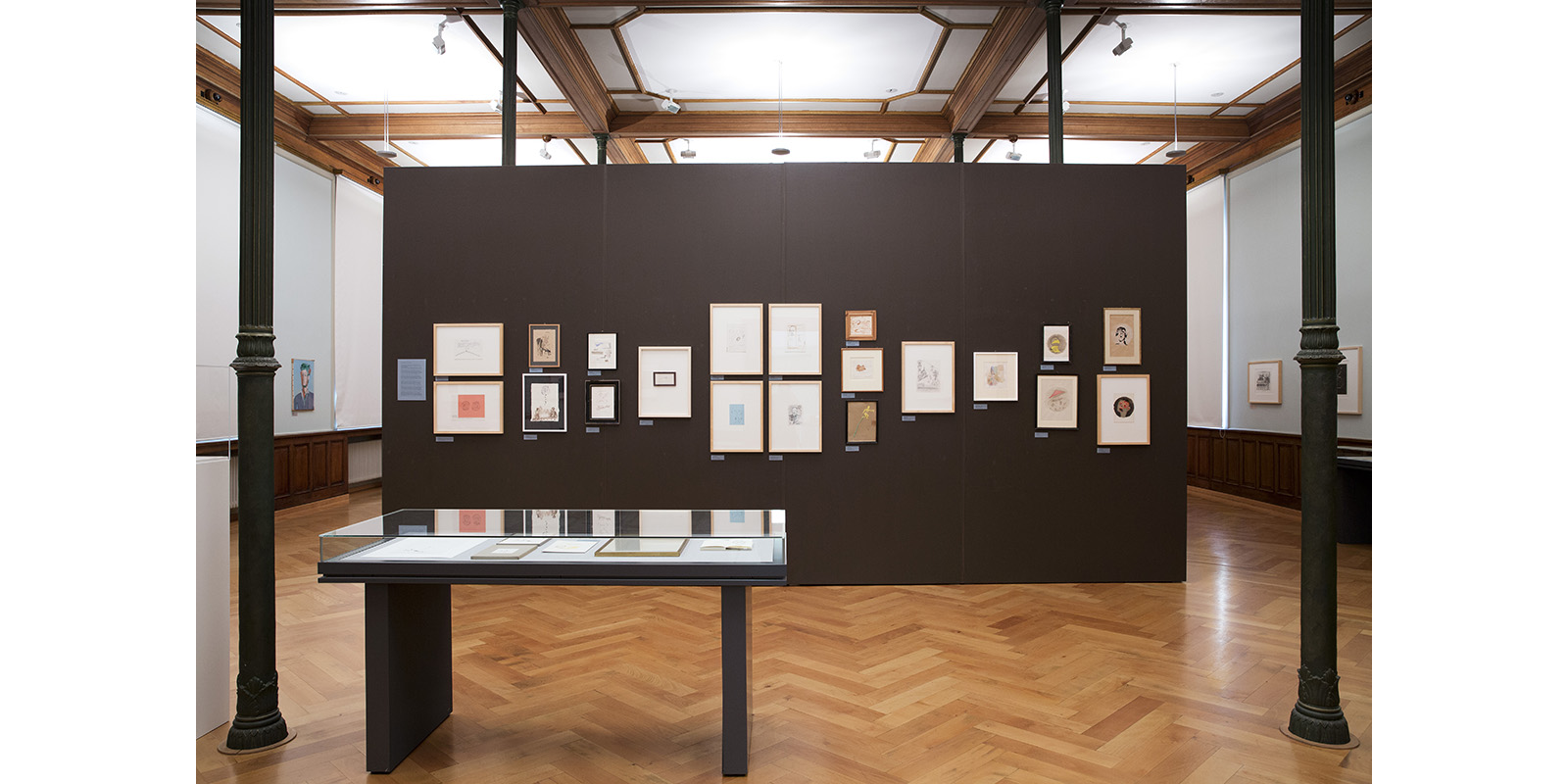
Installation view exhibition “André Thomkins. The Zurich Years”,
© Graphische Sammlung ETH Zürich, photo: Livio Baumgartner
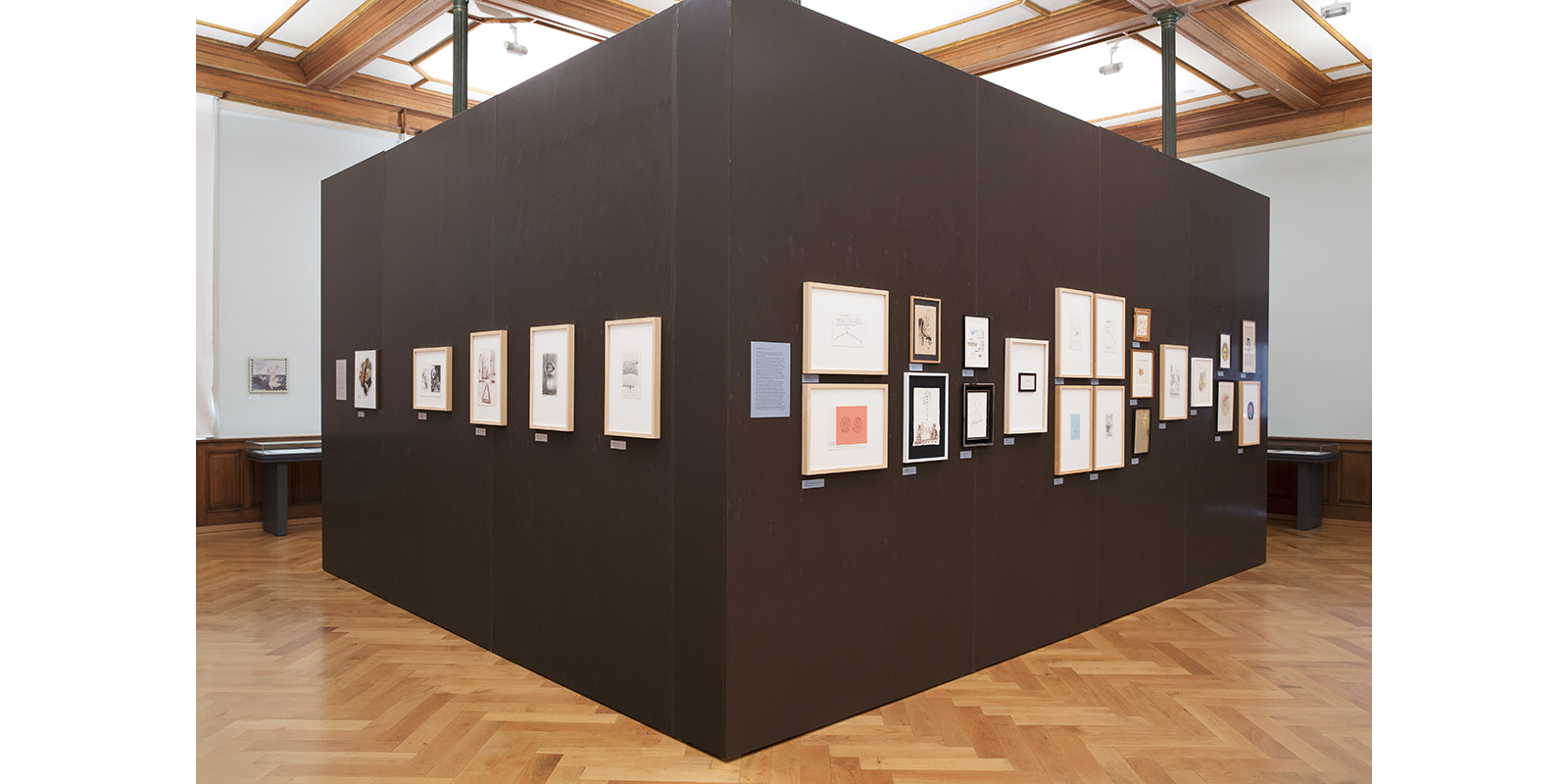
Installation view exhibition “André Thomkins. The Zurich Years”,
© Graphische Sammlung ETH Zürich, photo: Livio Baumgartner
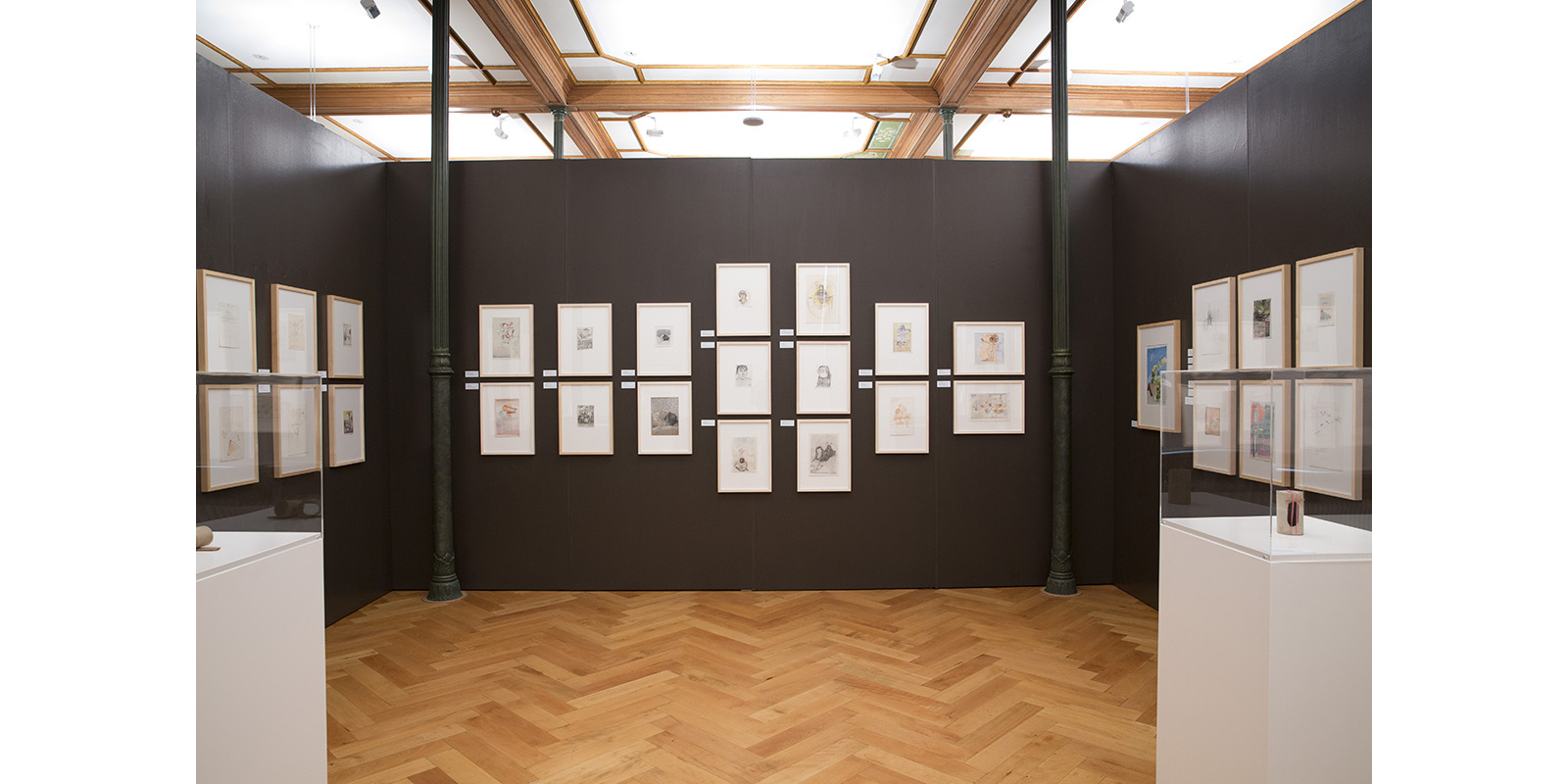
Installation view exhibition “André Thomkins. The Zurich Years”,
© Graphische Sammlung ETH Zürich, photo: Livio Baumgartner
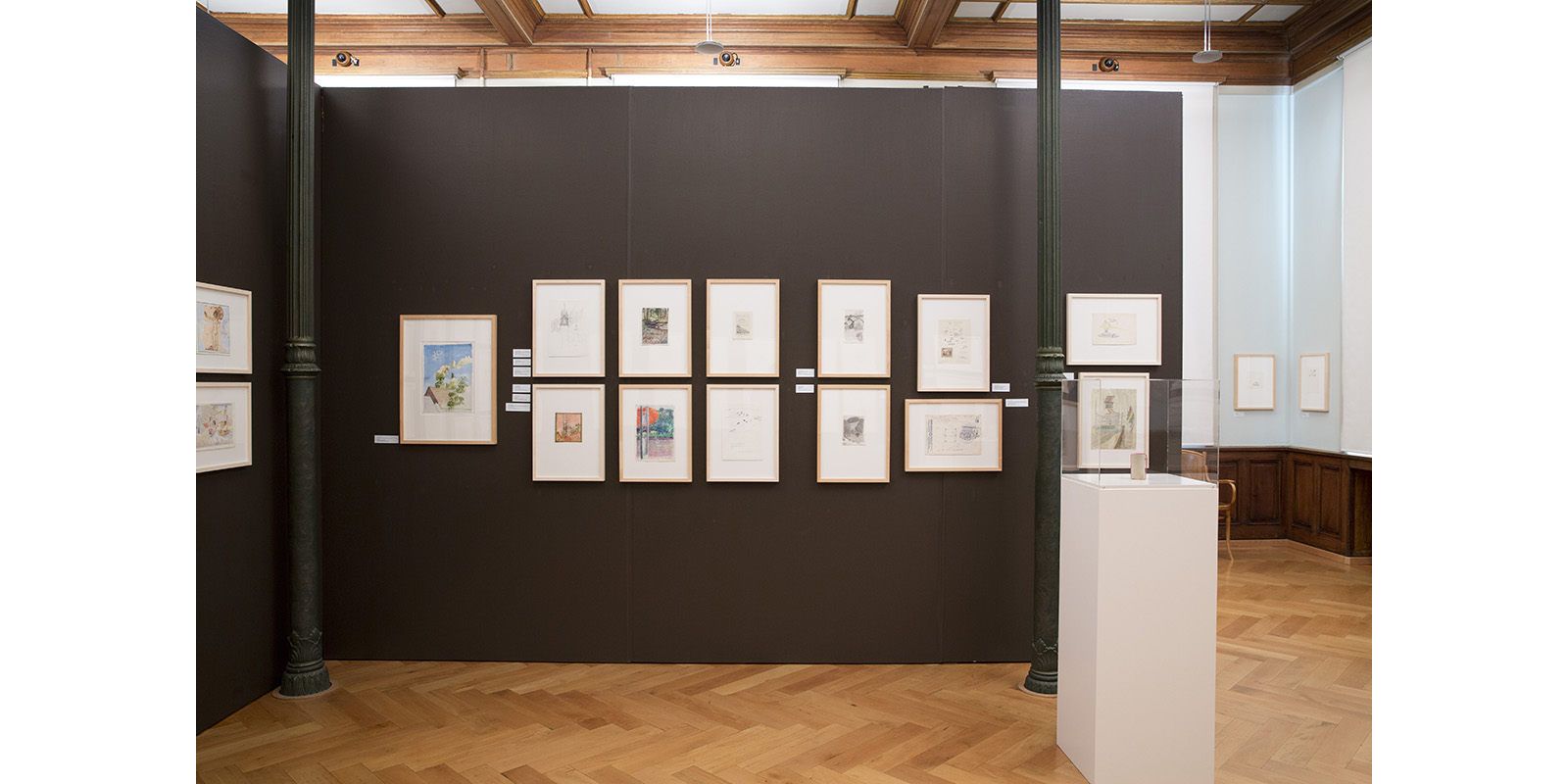
Installation view exhibition “André Thomkins. The Zurich Years”,
© Graphische Sammlung ETH Zürich, photo: Livio Baumgartner
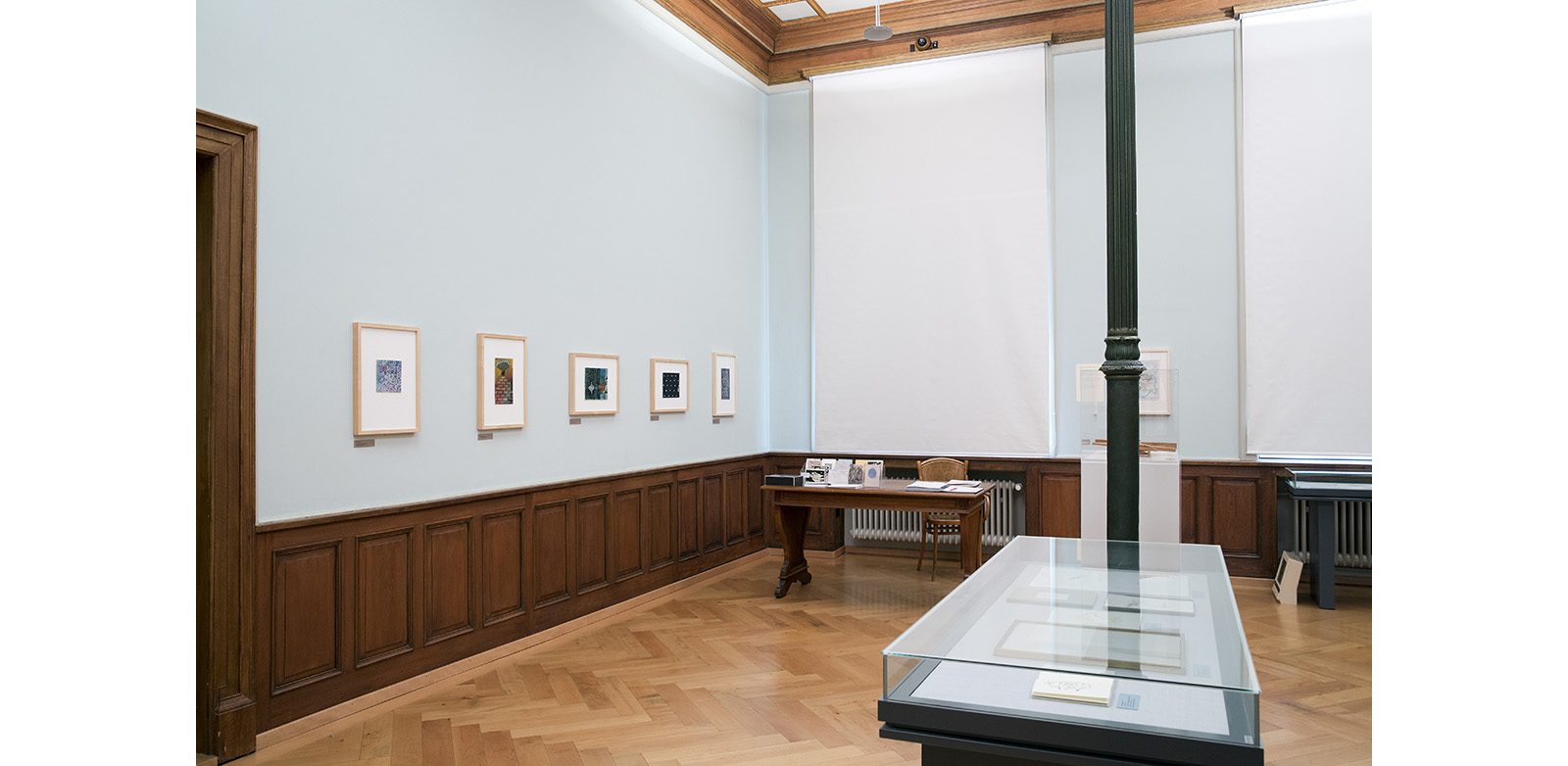
Installation view exhibition “André Thomkins. The Zurich Years”,
© Graphische Sammlung ETH Zürich, photo: Livio Baumgartner

Installation view exhibition “André Thomkins. The Zurich Years”,
© Graphische Sammlung ETH Zürich, photo: Livio Baumgartner

Installation view exhibition “André Thomkins. The Zurich Years”,
© Graphische Sammlung ETH Zürich, photo: Livio Baumgartner
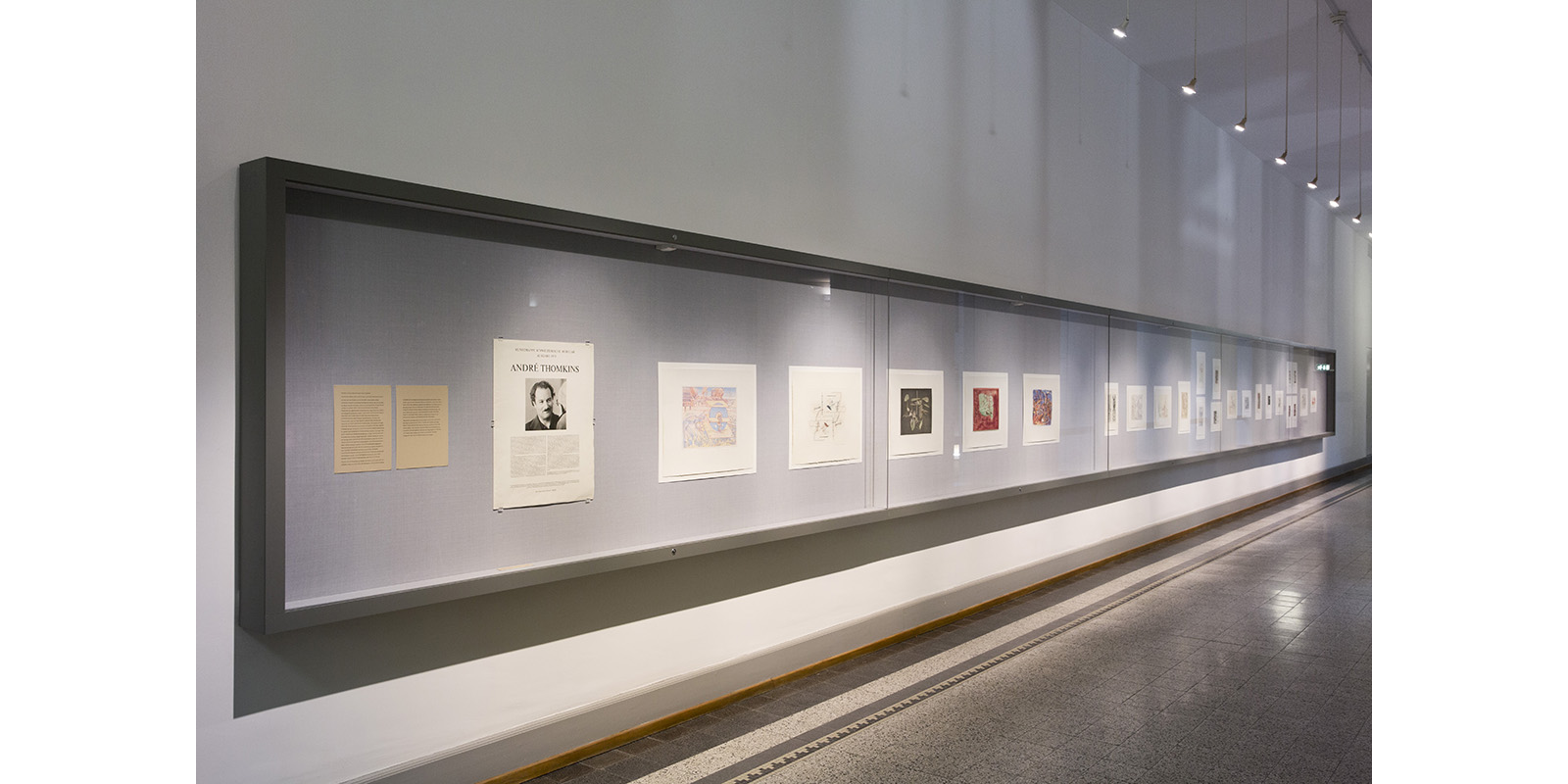
Installation view exhibition “André Thomkins. The Zurich Years”,
© Graphische Sammlung ETH Zürich, photo: Livio Baumgartner
The image of eighteenth-century Venetian prints is overwhelming shaped by vedutas of the city on the lagoon and enigmatic cycles of engravings imbued with artistic imagination. Yet in the midst of the many illustrious names such as Giambattista and Domenico Tiepolo, Marco Ricci and Canaletto, one important and energetic figure remains almost unknown: Anton Maria Zanetti the Elder (1680-1767), art collector, connoisseur, publisher and wood-engraver.
Zanetti trained as an artist in his youth and frequented the most famous studios of the day. Coming from a privileged background, he played an eminent role in the cultural life of Venice and cultivated a wide range of longstanding friendships throughout Europe. Contemporary sources described him as an art lover who devoted his entire life to art, especially to drawing and printmaking. His enthusiasm was so ardent that he actively encouraged many artists in his circle, most notably including Marco Ricci and Giambattista and Domenico Tiepolo, to adopt engraving and work on new cycles of prints. He himself focused his attention on the older, sixteenth-century technique of coloured woodcuts, with which he reproduced his substantial collection of drawings by Parmigianino, introducing them to connoisseurs throughout Europe.
The exhibition presents the famous views of Venice and the equally fascinating Scherzi, Capricci and Grotteschi by Giambattista Tiepolo and Giovanni Battista Piranesi. In doing so, it seeks to highlight, for the first time, the significant role played by Zanetti within the context of eighteenth century Venetian printmaking.
The exhibition has been made possible thanks to the generous donation of Venetian prints from the collection of Karin and Cesare Morini, received in 2014. These works of outstanding quality have filled an important gap in the collection of the Graphische Sammlung ETH.
Opening: Tuesday, 9 February 2016, 6 pm
Contact person:
Dr. Michael Matile, curator
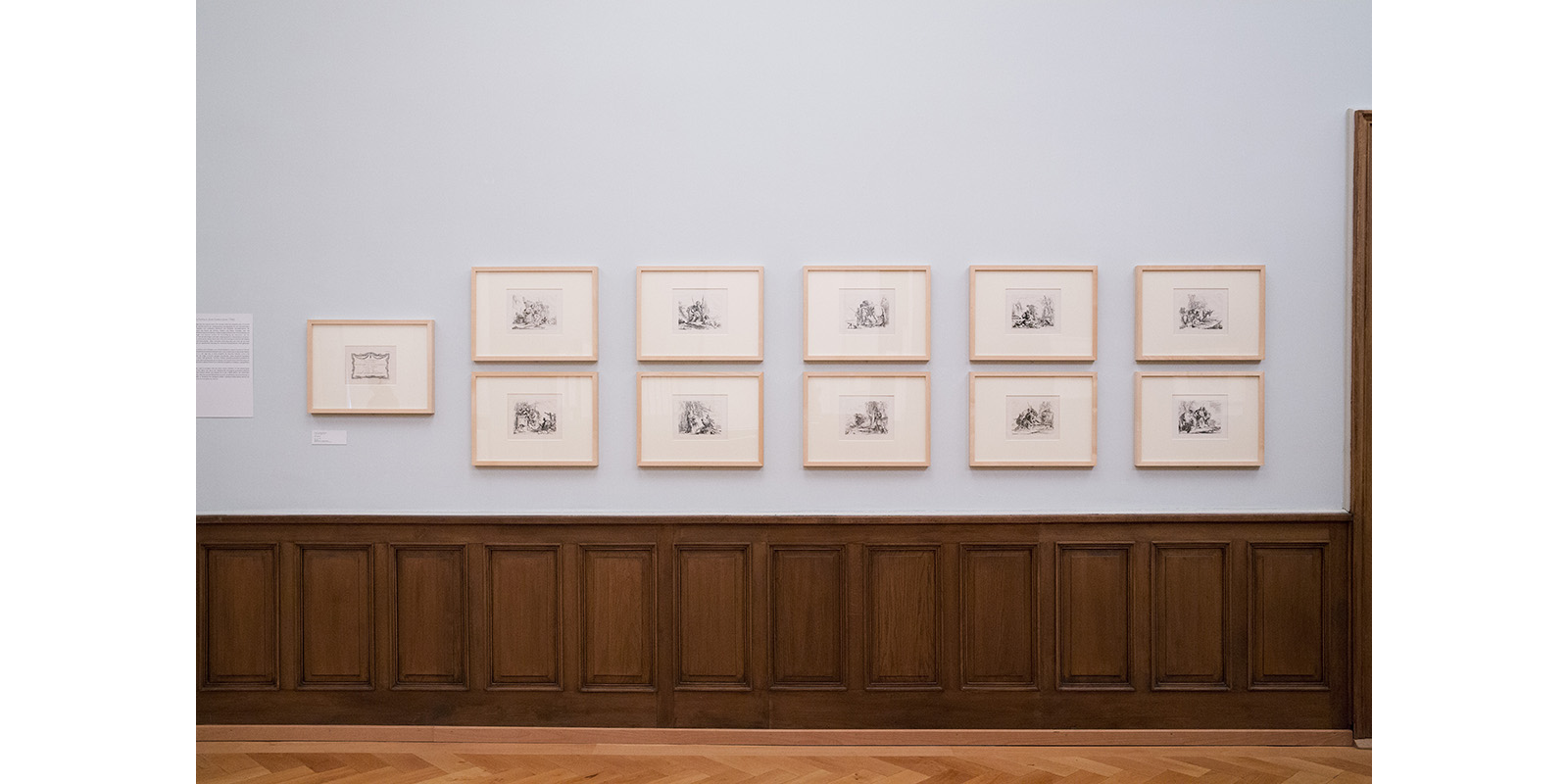
Installation view exhibition “Della Grafica Veneziana. The Age of Anton Maria Zanetti (1680-1767)”,
© Graphische Sammlung ETH Zürich, photo: Livio Baumgartner
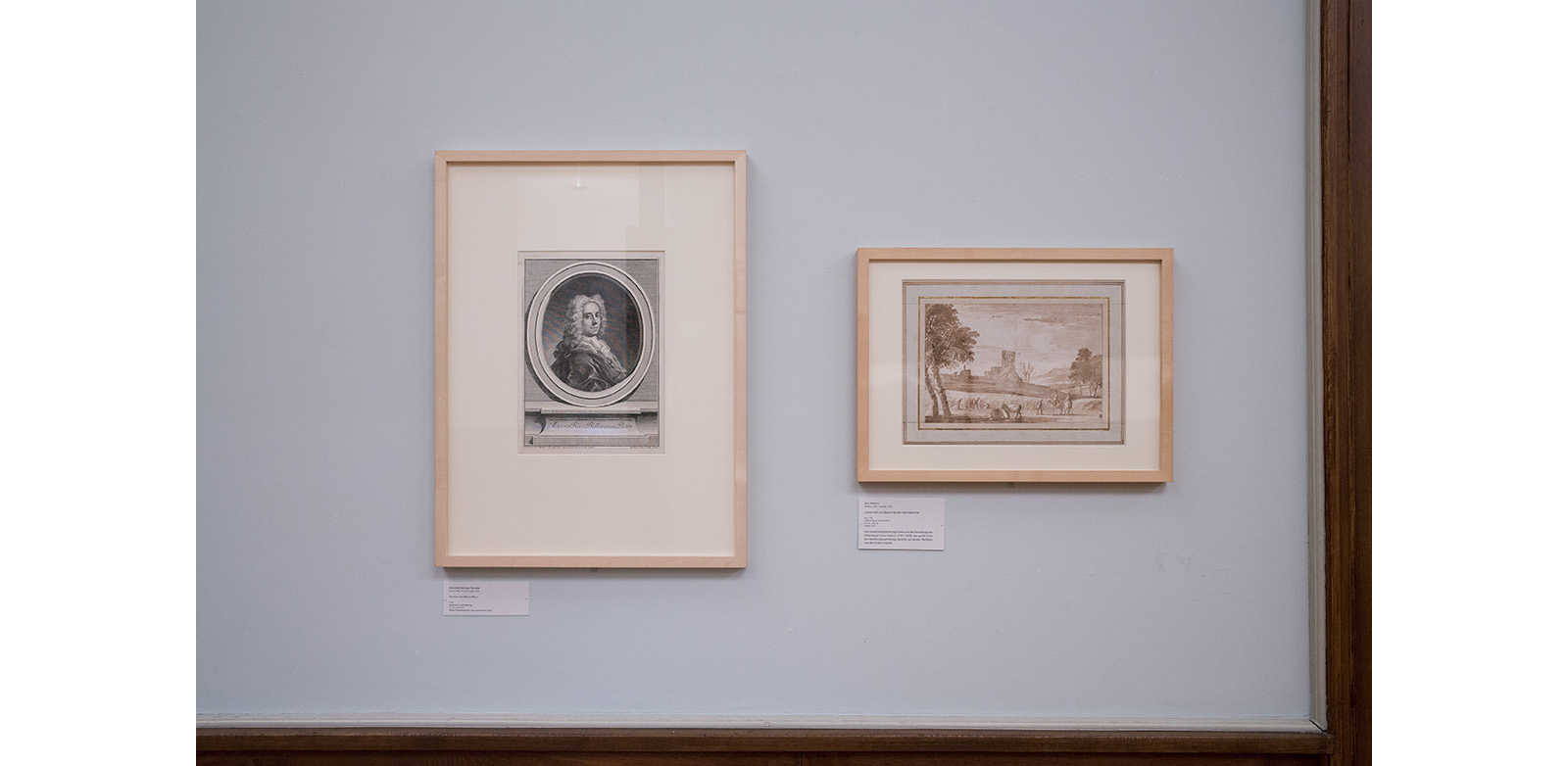
Installation view exhibition “Della Grafica Veneziana. The Age of Anton Maria Zanetti (1680-1767)”,
© Graphische Sammlung ETH Zürich, photo: Livio Baumgartner
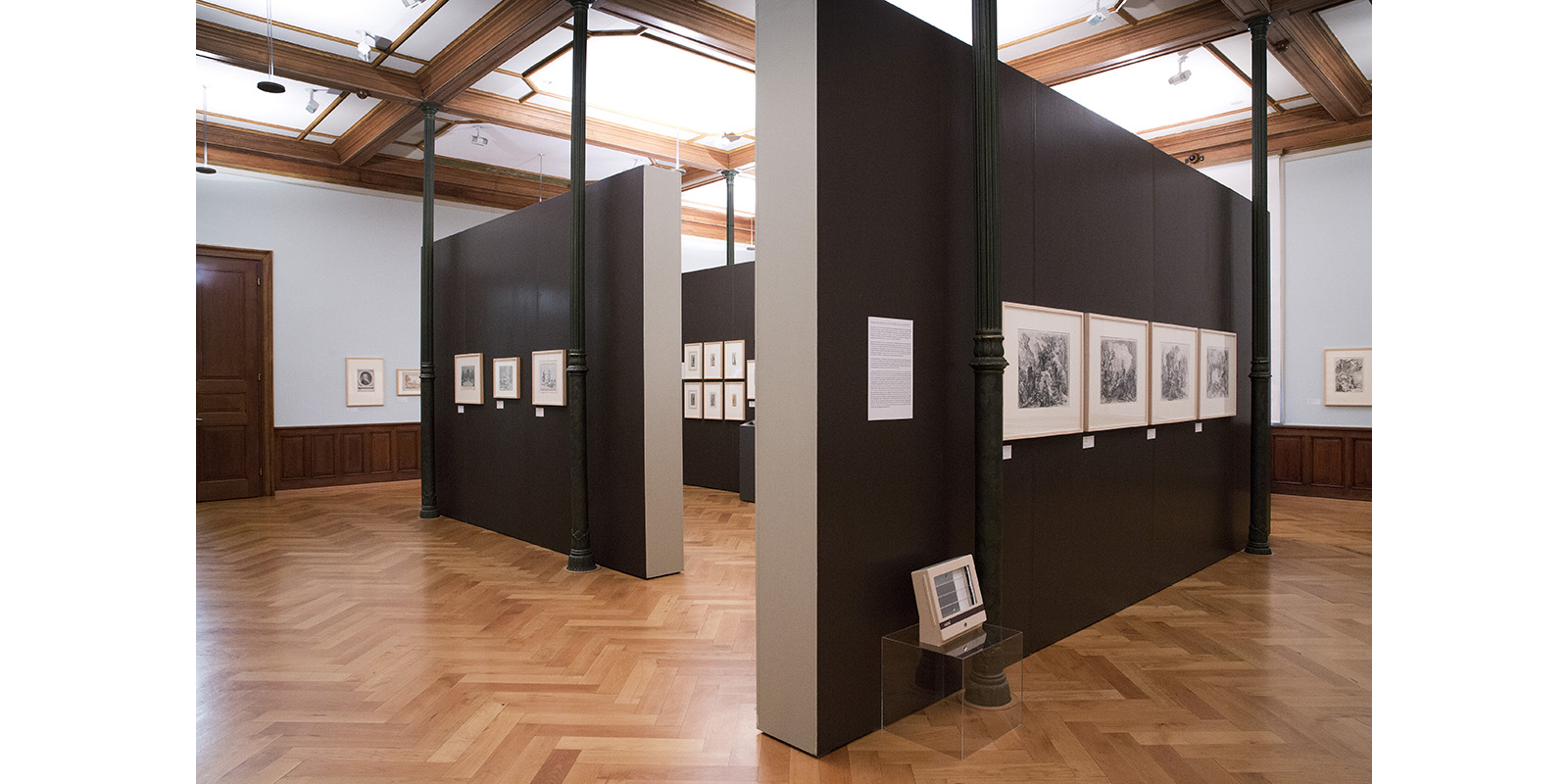
Installation view exhibition “Della Grafica Veneziana. The Age of Anton Maria Zanetti (1680-1767)”,
© Graphische Sammlung ETH Zürich, photo: Livio Baumgartner
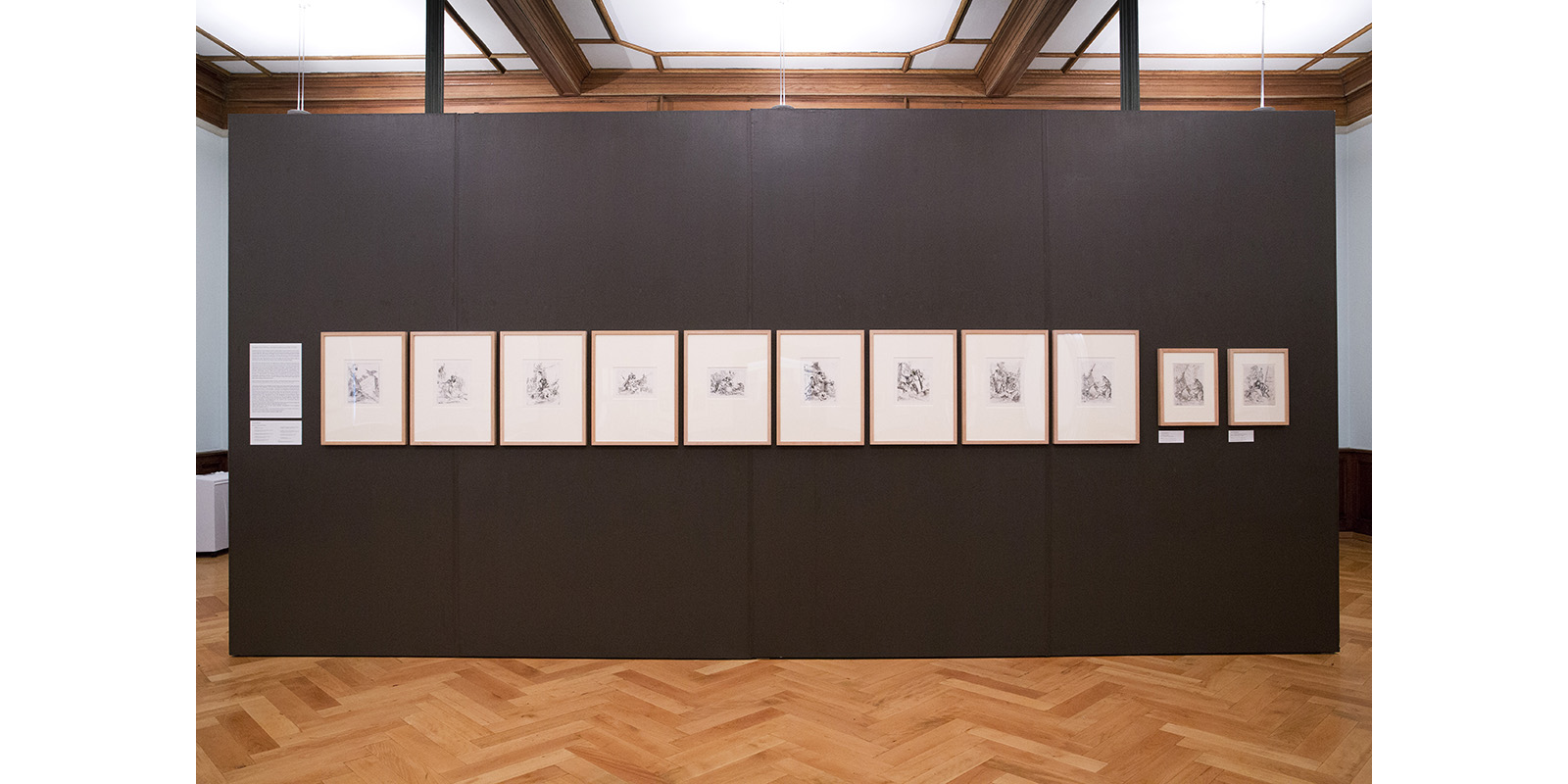
Installation view exhibition “Della Grafica Veneziana. The Age of Anton Maria Zanetti (1680-1767)”,
© Graphische Sammlung ETH Zürich, photo: Livio Baumgartner
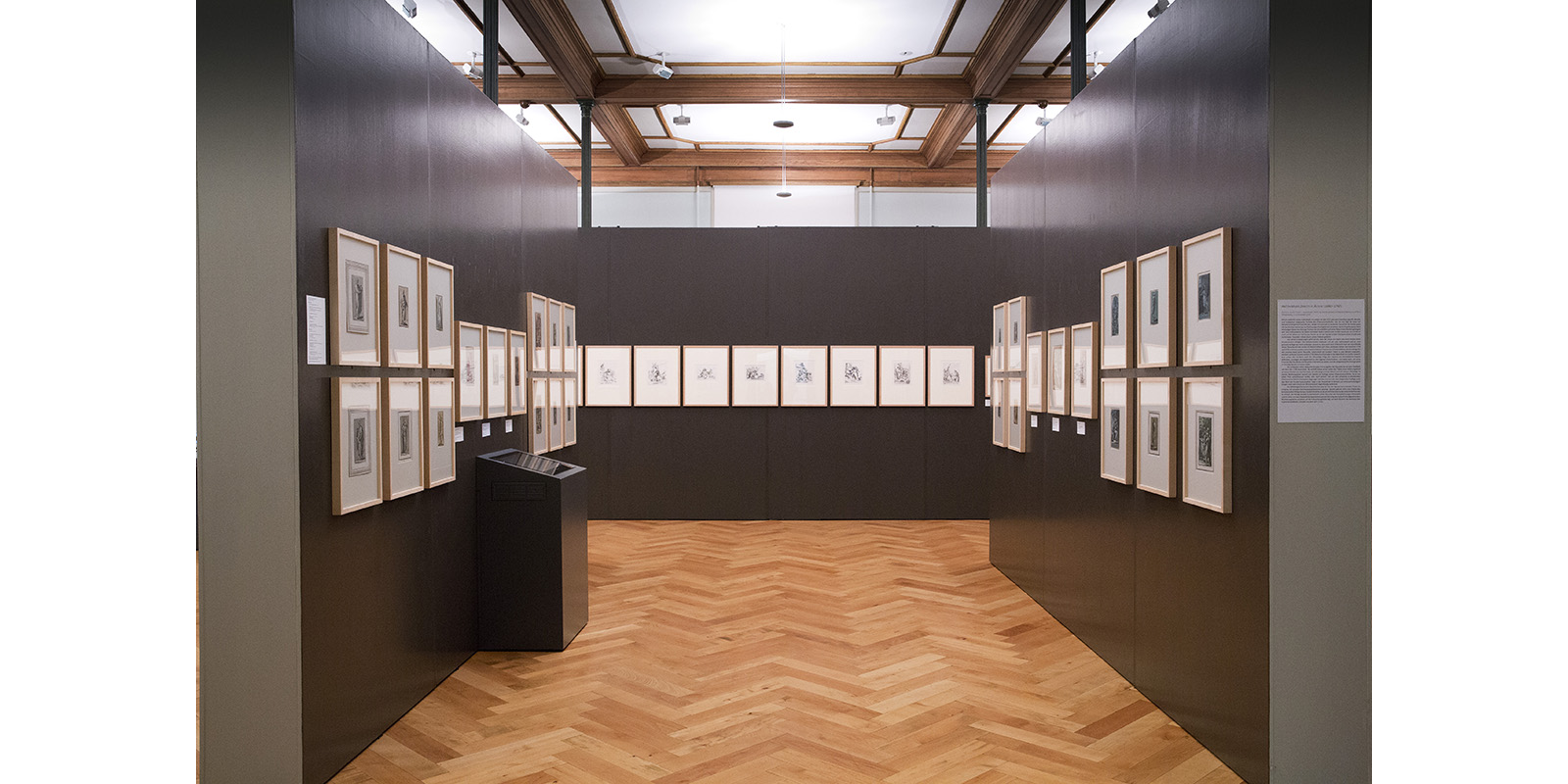
Installation view exhibition “Della Grafica Veneziana. The Age of Anton Maria Zanetti (1680-1767)”,
© Graphische Sammlung ETH Zürich, photo: Livio Baumgartner
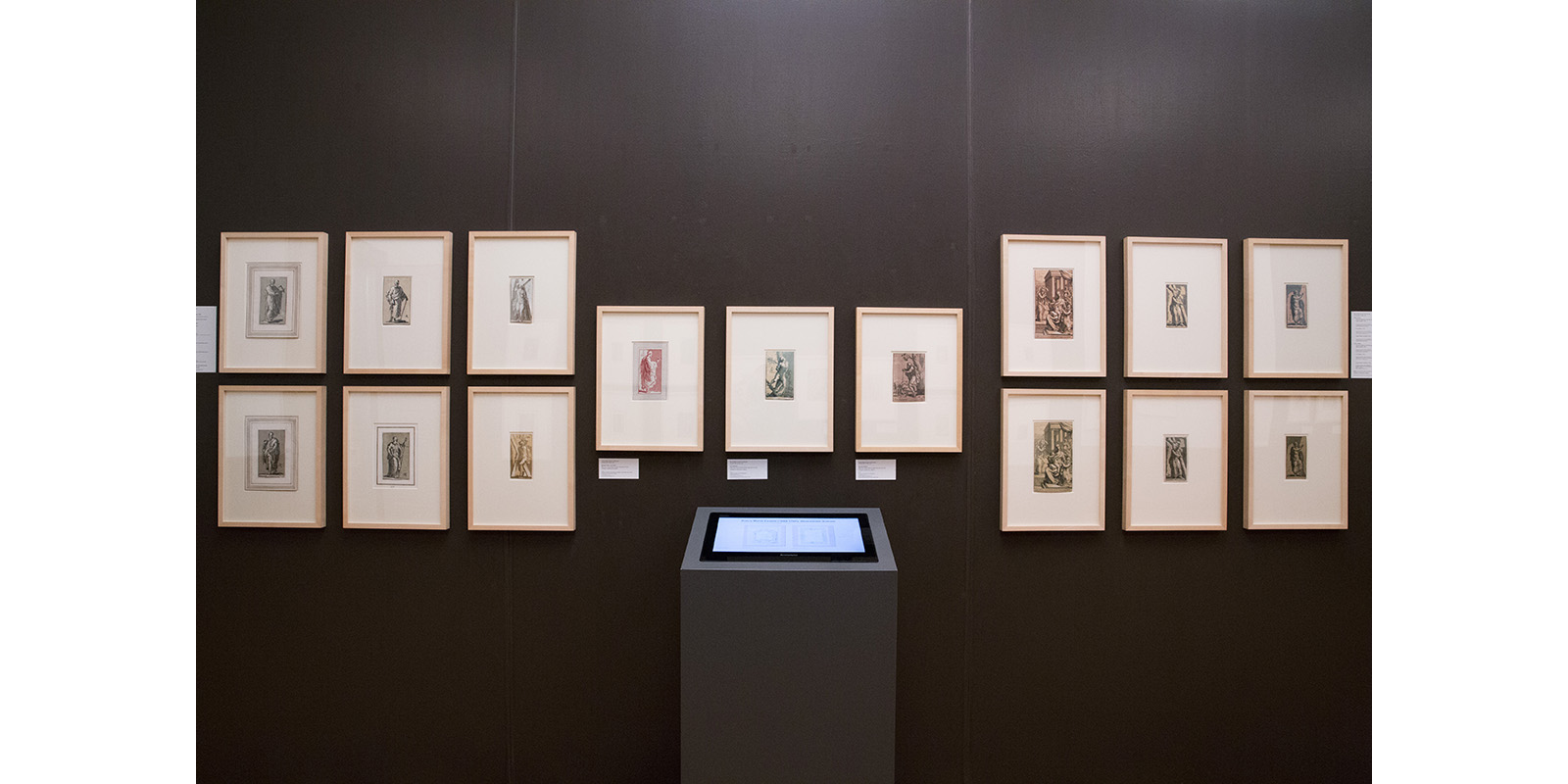
Installation view exhibition “Della Grafica Veneziana. The Age of Anton Maria Zanetti (1680-1767)”,
© Graphische Sammlung ETH Zürich, photo: Livio Baumgartner
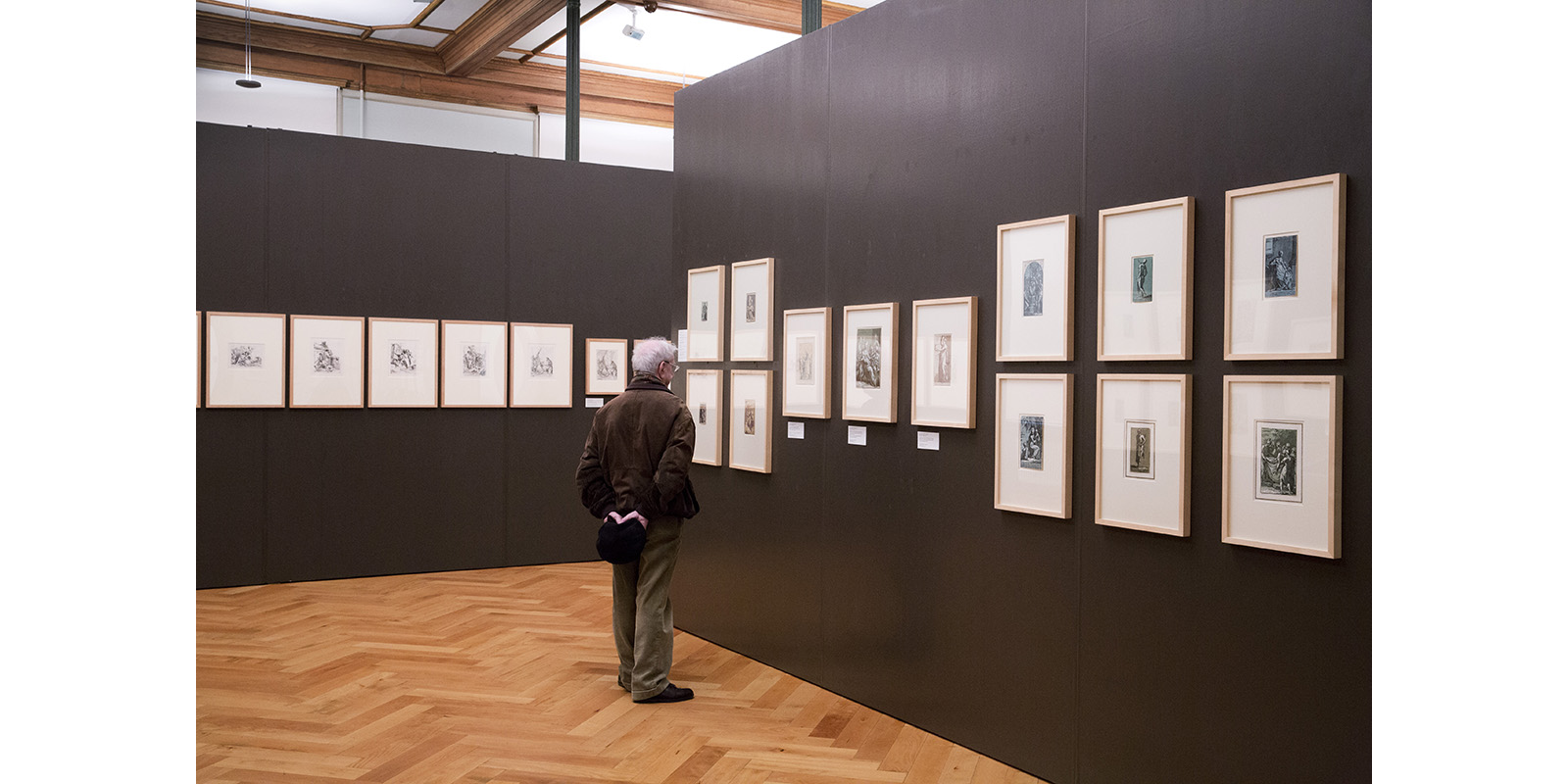
Installation view exhibition “Della Grafica Veneziana. The Age of Anton Maria Zanetti (1680-1767)”,
© Graphische Sammlung ETH Zürich, photo: Livio Baumgartner
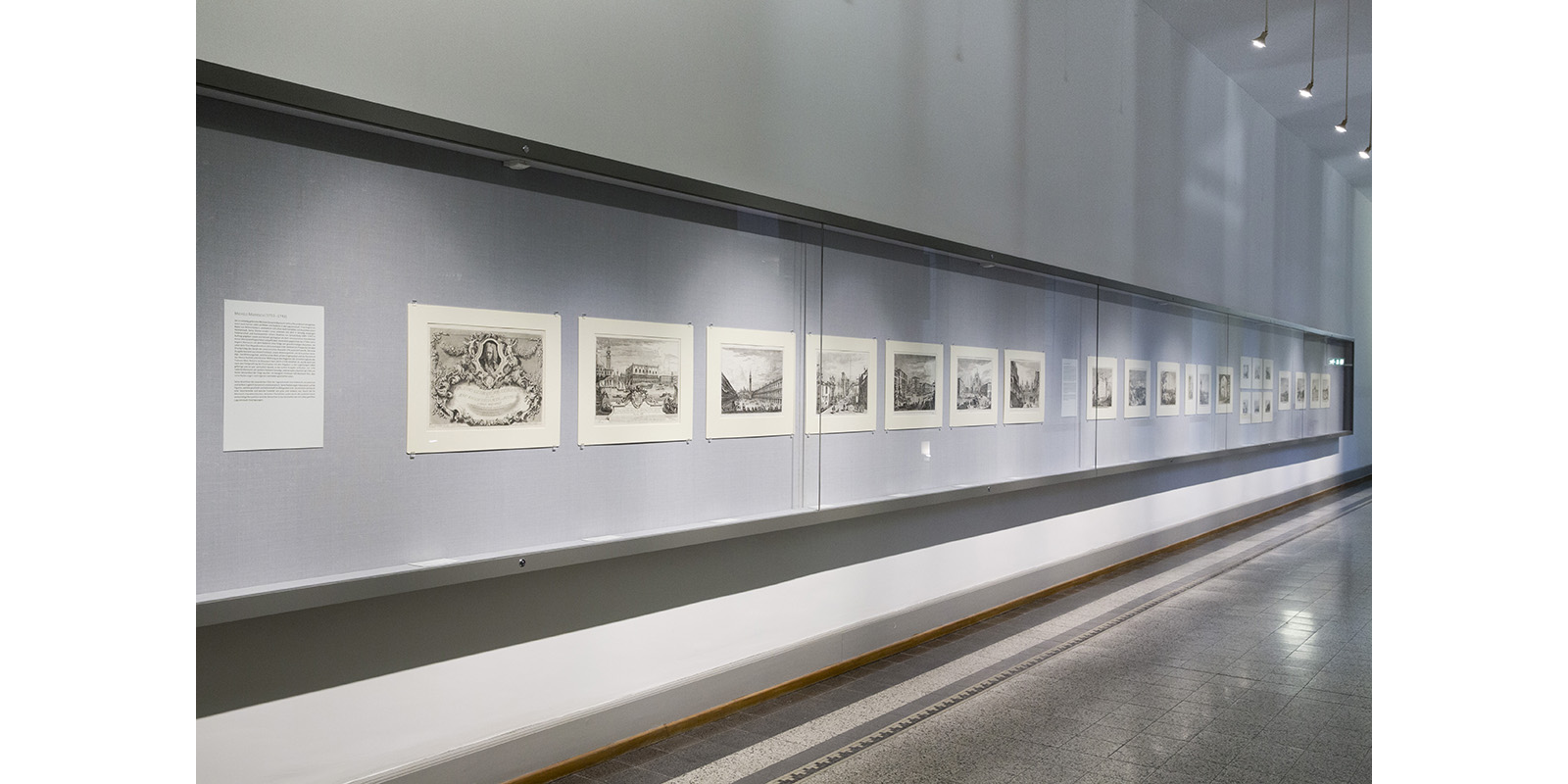
Installation view exhibition “Della Grafica Veneziana. The Age of Anton Maria Zanetti (1680-1767)”,
© Graphische Sammlung ETH Zürich, photo: Livio Baumgartner
In 2011, a sensational find was announced: among the works included in the estate of Andy Warhol (1928–1987), a substantial group of drawings from the 1950s had been discovered. They were from the very earliest period the artist had spent in New York. Ever since, the person who discovered them – Munich art deal Daniel Blau – has been ceaseless in his efforts to research this valuable material and bring it to the attention of the (art) world. What makes this find so remarkable is the fact that the works themselves reveal such unexpected facets of one the late twentieth century’s most iconic artists. In these early drawings, Andy Warhol paves the way for his entire future oeuvre. The contain the seminal subject matter of his later works and mark the early evolution of his own distinctive technical approach – including, for instance, the so-called blotted-line technique.
From a pool of 400 drawings – some of which have previously been shown in public, albeit never on such a grand scale – we have carefully made a selection that places the focus firmly on his targeted use of found material and, in particular, on his use of found photographs. In the meantime, through painstaking research, we have succeeded in tracing and identifying the original sources used by him. This research has revealed that some of his works were actually based on images by such famous photographers as Edward Steichen. Much of the material could be traced back to specifically identifiable images that Warhol had found in the printed media – many of them originally published in the American magazine LIFE. During the 1950s, the market saw a veritable explosion in the launch of chic and appealing magazines evoking the seductive qualities of modern life. It was from this rich trove of visual material that the impassioned voyeur drew not only his earliest inspiration but also his enduring artistic syntax – by reducing and transforming the found material into a hard-hitting and intense version of his very own visual language.
In the scheduled exhibition, we aim to present outstanding examples of Warhol’s blotted-line designs, including – for the very first time – a substantial group of drawings from his early period, alongside the primary sources on which they are based, in the form of original magazine issues and photographs. This exquisite exhibition will be accompanied by a catalogue with authoritative and scholarly articles on the singular approach taken by Andy Warhol in developing his highly distinctive method of transference between the two media of photography and drawing.
Opening: Tuesday, 3 November 2015, 6 pm
Contact person:
Alexandra Barcal, curator

Installation view exhibition “ANDY WARHOL. THE LIFE YEARS 1949–1959”,
© Graphische Sammlung ETH Zürich, photo: Livio Baumgartner
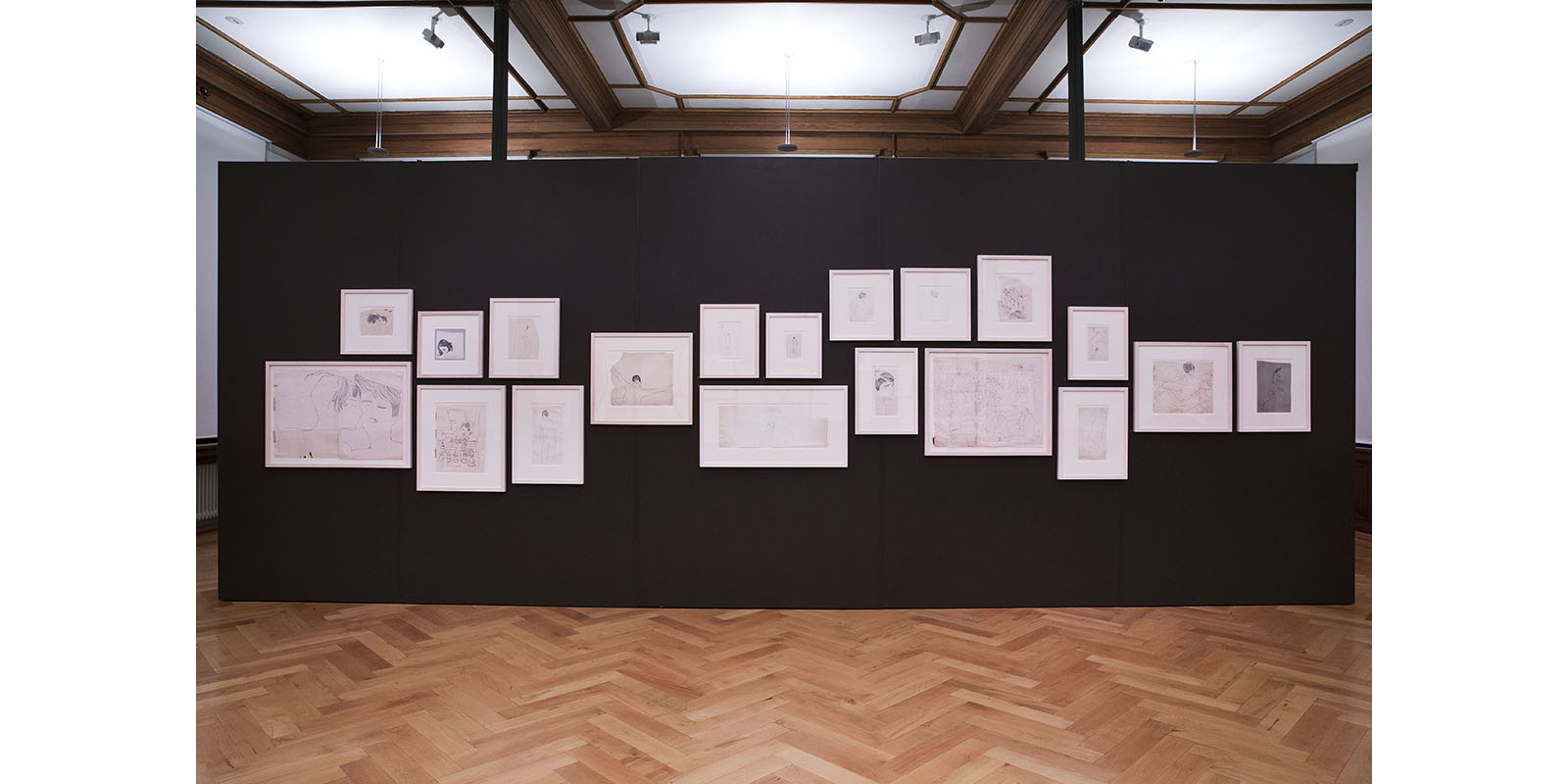
Installation view exhibition “ANDY WARHOL. THE LIFE YEARS 1949–1959”,
© Graphische Sammlung ETH Zürich, photo: Livio Baumgartner
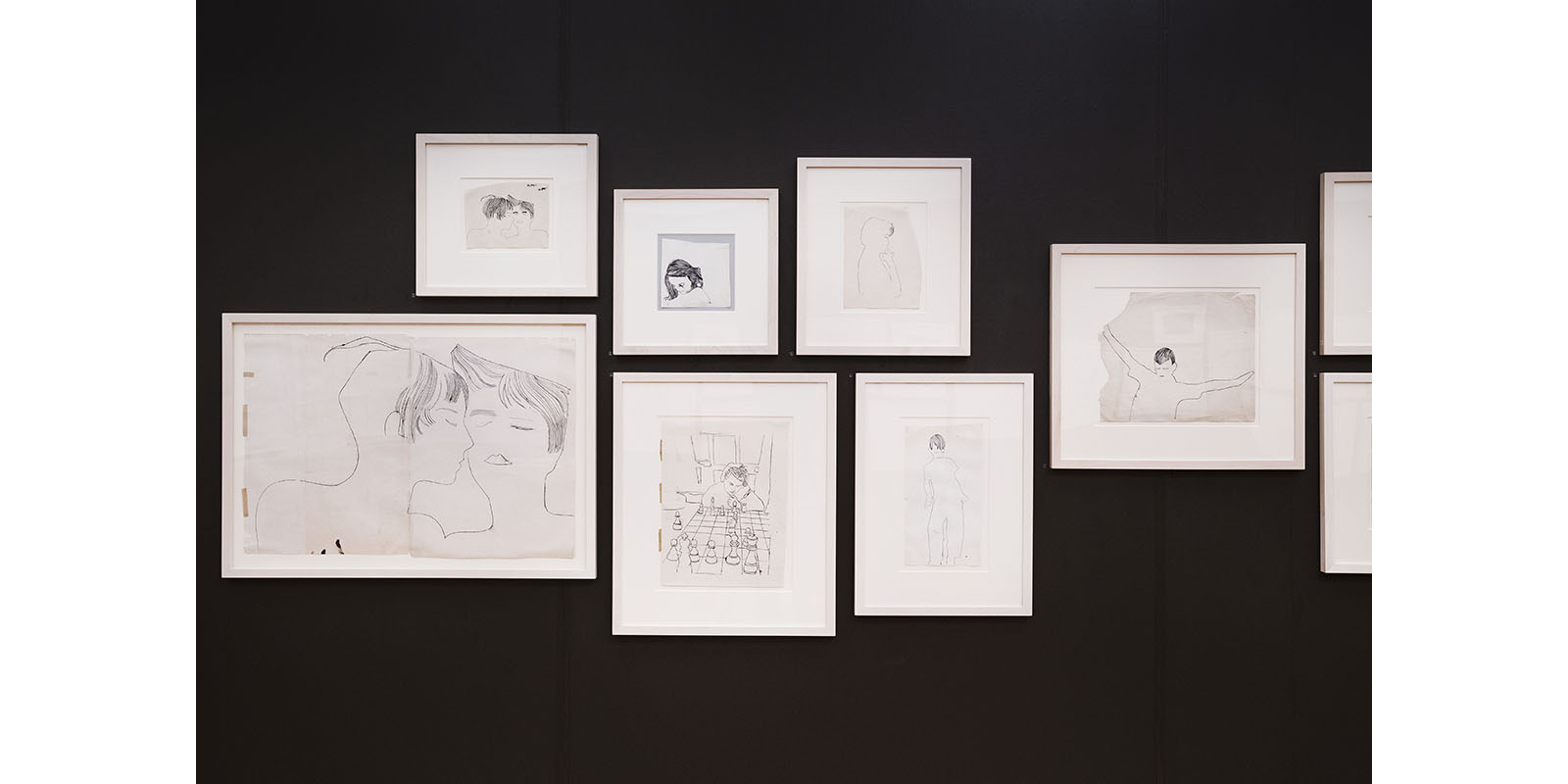
Installation view exhibition “ANDY WARHOL. THE LIFE YEARS 1949–1959”,
© Graphische Sammlung ETH Zürich, photo: Livio Baumgartner
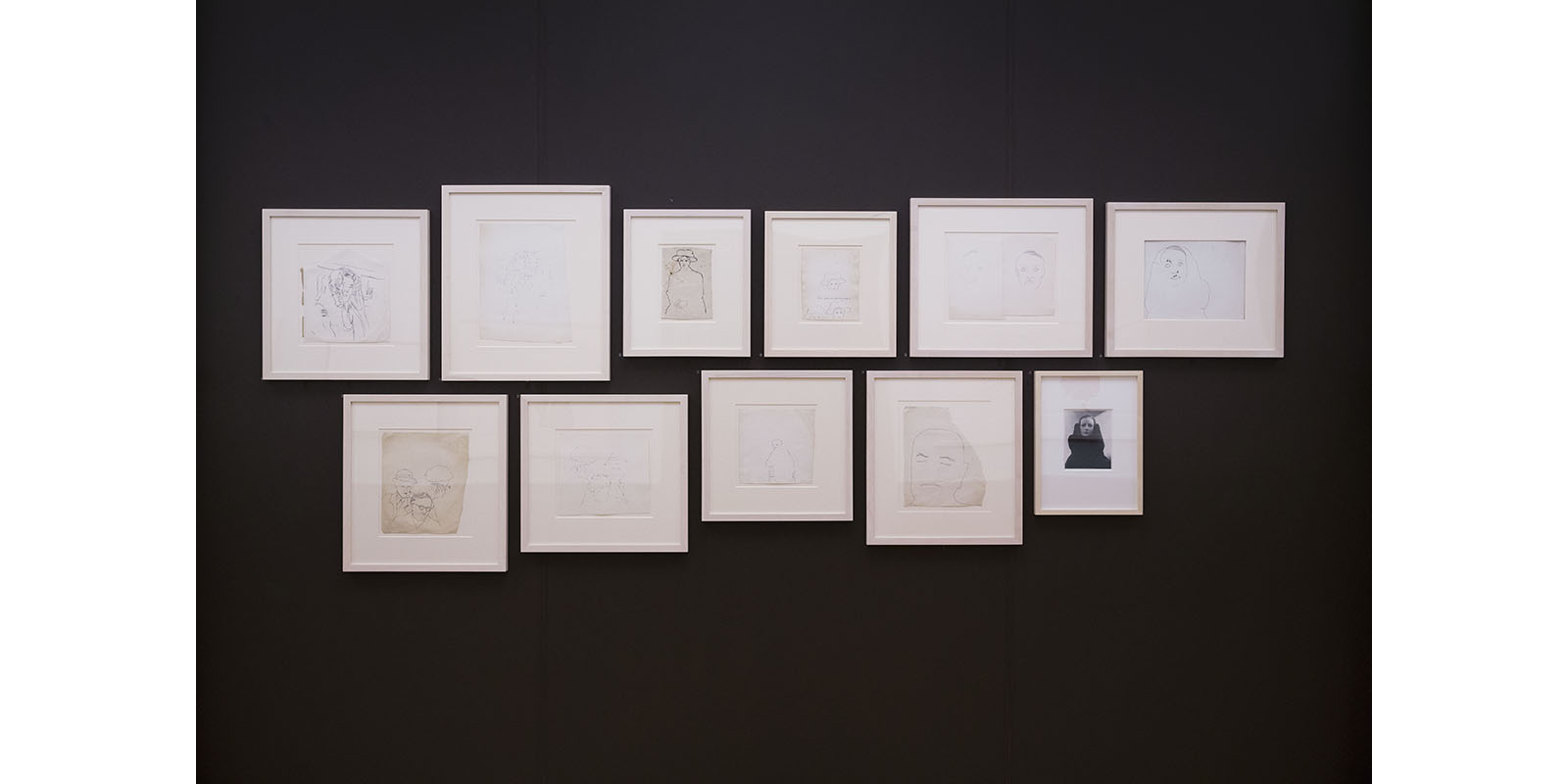
Installation view exhibition “ANDY WARHOL. THE LIFE YEARS 1949–1959”,
© Graphische Sammlung ETH Zürich, photo: Livio Baumgartner
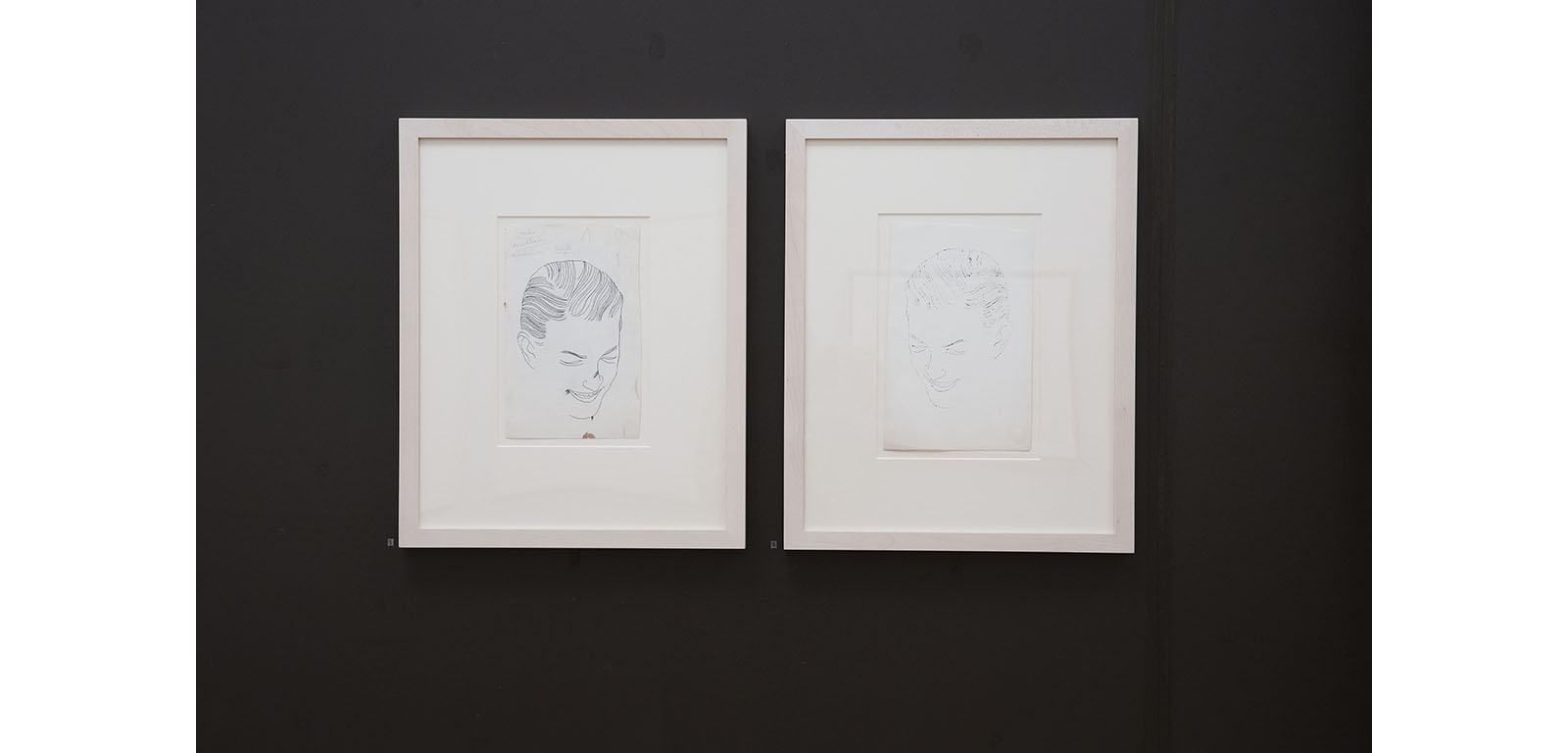
Installation view exhibition “ANDY WARHOL. THE LIFE YEARS 1949–1959”,
© Graphische Sammlung ETH Zürich, photo: Livio Baumgartner
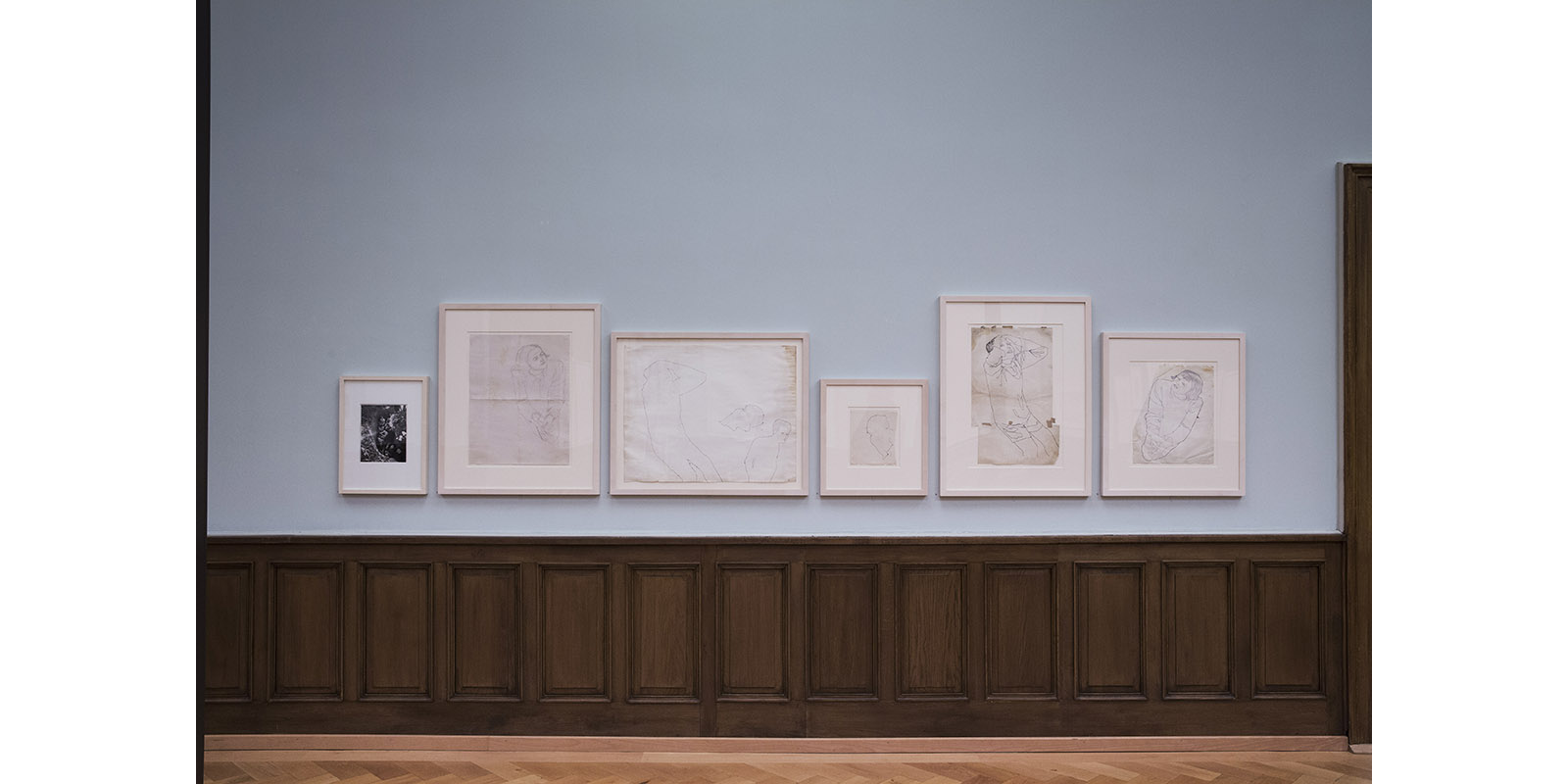
Installation view exhibition “ANDY WARHOL. THE LIFE YEARS 1949–1959”,
© Graphische Sammlung ETH Zürich, photo: Livio Baumgartner
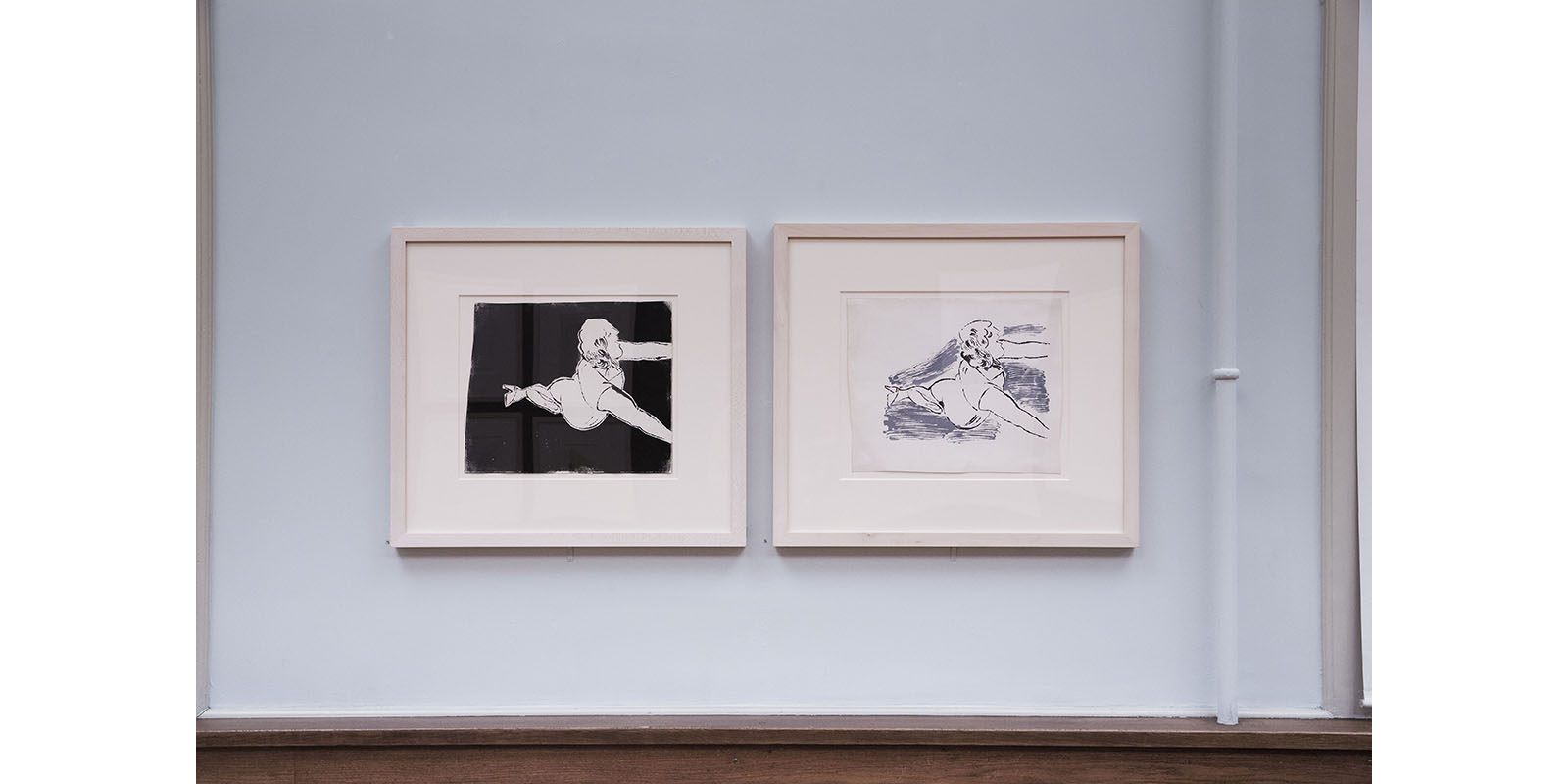
Installation view exhibition “ANDY WARHOL. THE LIFE YEARS 1949–1959”,
© Graphische Sammlung ETH Zürich, photo: Livio Baumgartner

Installation view exhibition “ANDY WARHOL. THE LIFE YEARS 1949–1959”,
© Graphische Sammlung ETH Zürich, photo: Livio Baumgartner
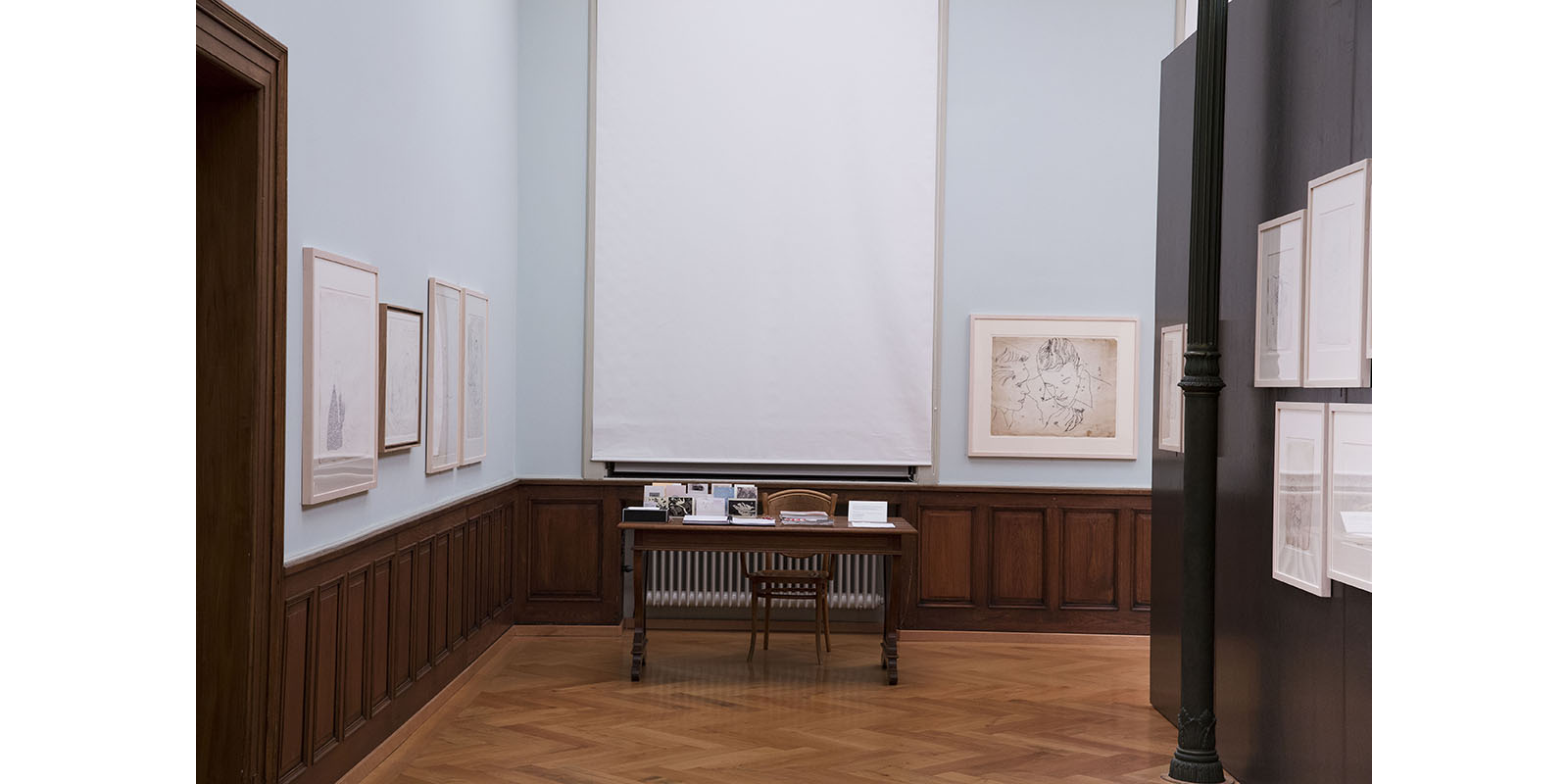
Installation view exhibition “ANDY WARHOL. THE LIFE YEARS 1949–1959”,
© Graphische Sammlung ETH Zürich, photo: Livio Baumgartner
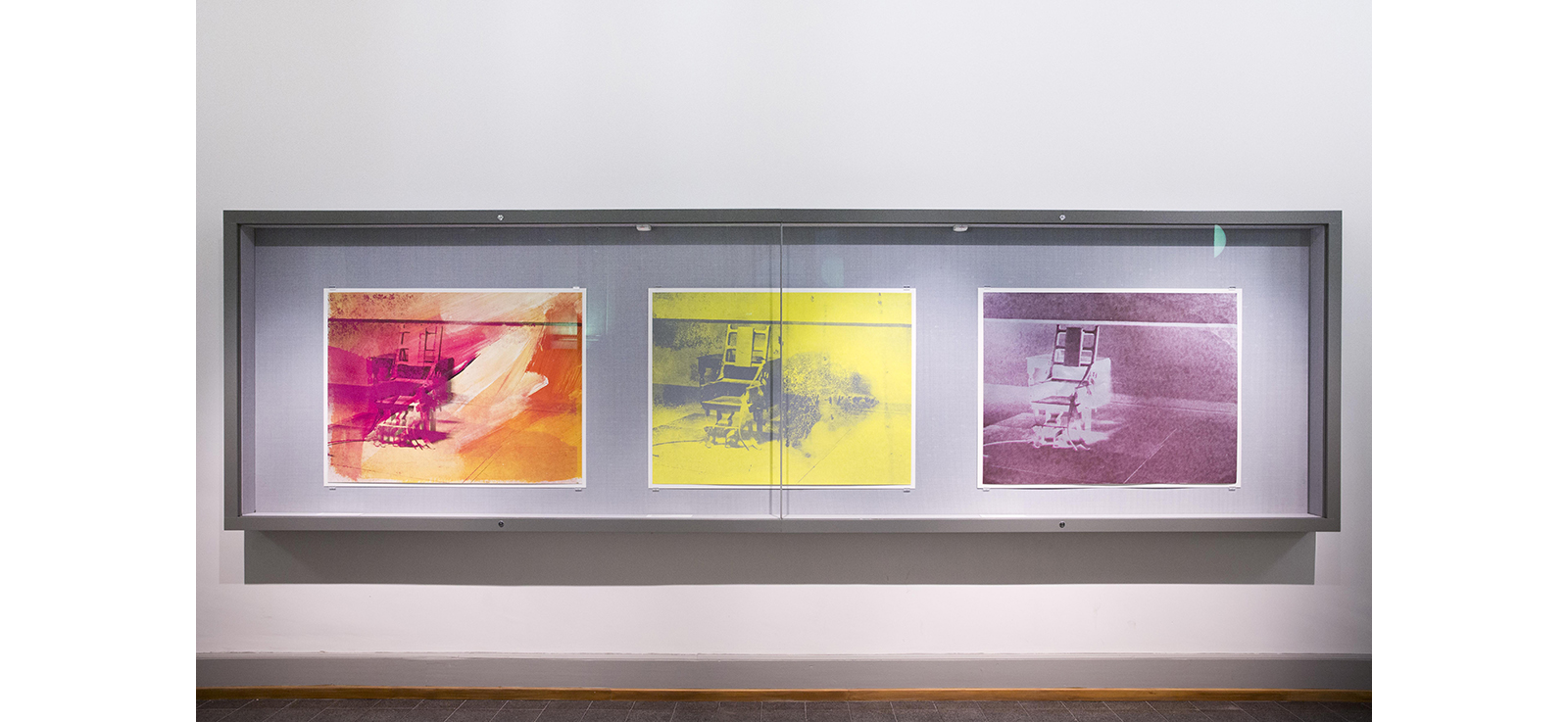
Installation view exhibition “ANDY WARHOL. THE LIFE YEARS 1949–1959”,
© Graphische Sammlung ETH Zürich, photo: Livio Baumgartner
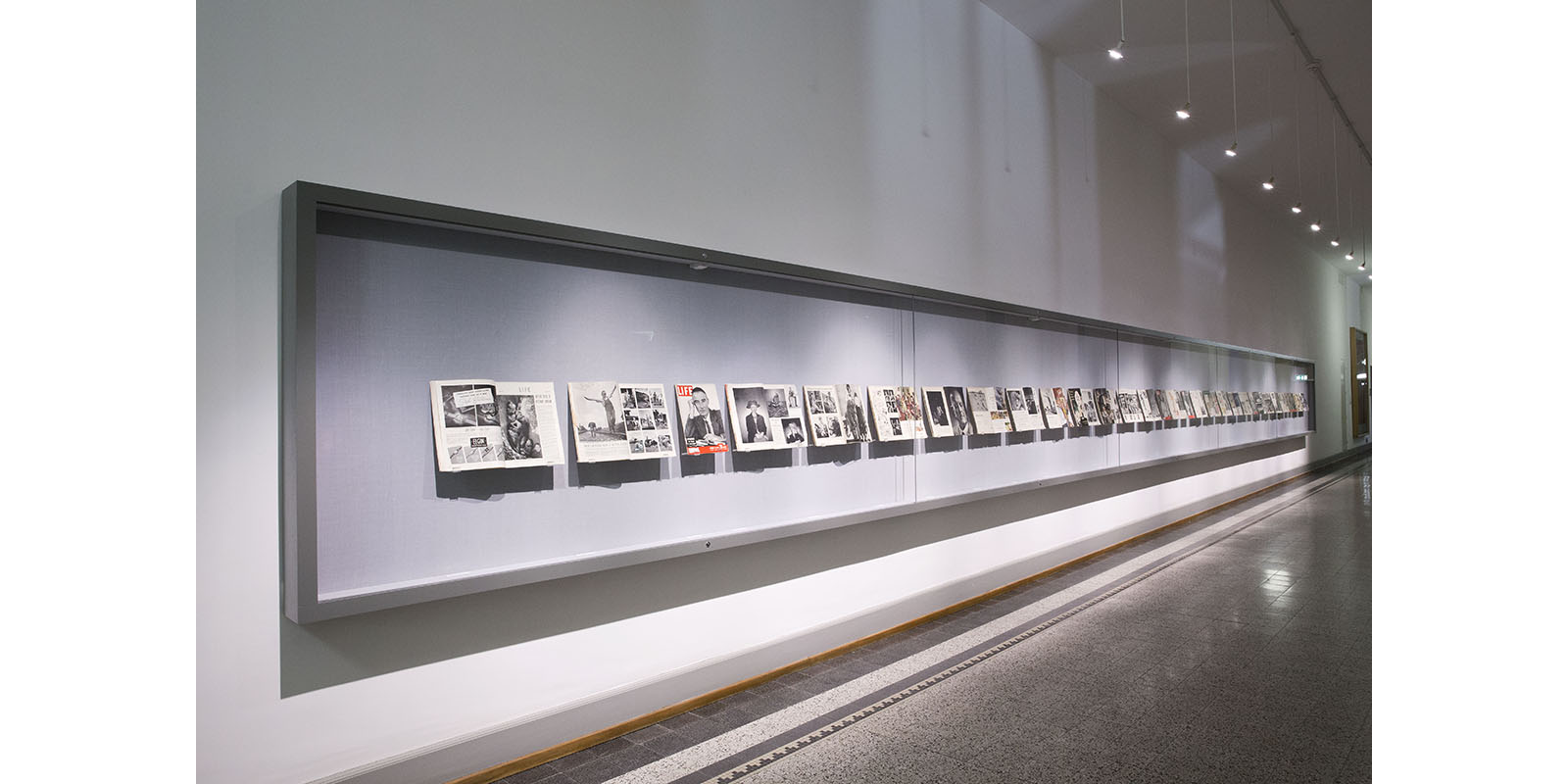
Installation view exhibition “ANDY WARHOL. THE LIFE YEARS 1949–1959”,
© Graphische Sammlung ETH Zürich, photo: Livio Baumgartner
Bern-based artist Daniel Breu (*1963) has devoted himself to drawing since 1989. His experimental quest for aesthetic formulations of the figurative has produced a broad spectrum of portrayals that explore the rich potential of representation, as well as its limitations. The actual process of drawing, for Breu, is far from the spontaneous sketch or swiftly expressed idea. Instead, for him, pencil drawing involves a process of meticulous planning and execution, usually resulting in entire cycles of works. His approach is a highly distinctive one that in many respects contrasts sharply with, and even undermines, the conventional notion of drawing as a fleeting exercise in spontaneity. His personal authorship always remains in the background, and is secondary to the representation of the subject matter itself.
Daniel Breu chooses his motifs in a variety of ways. In addition to situations and objects captured in photographs, visual impressions of other artworks often form the basis for his close examination of a theme. For instance, his extensive series of works portraying wire fences was inspired by Fabrice Gygi’s large-format 2002 linocut Treillis, while another series whimsically paraphrased a dans macabre by Hans Holbein the Younger dating from 1524-1525.
More recently, the artist has been exploring ways of rendering prescribed forms – such as broken panes of glass – indirectly, almost casually, by tracing them in pencil. Moraines and rocky landscapes formed by glaciers seem to be mirrored as though coincidentally in his works. In his approach to these forms and formations, Daniel Breu proves himself to be a subtle director who never pushes his authorship to the fore. It is this authorial restraint in applying any personal trace that is the hallmark of his work.
This exhibition is the first to provide a comprehensive insight into the oeuvre of Daniel Breu, whose diverse and compelling work has, until now, had little exposure to a wider audience.
Opening: Tuesday, August 18, 2015, 6 pm
Contact person:
Dr. Michael Matile, curator
Flyer
Press release
Figures and captions
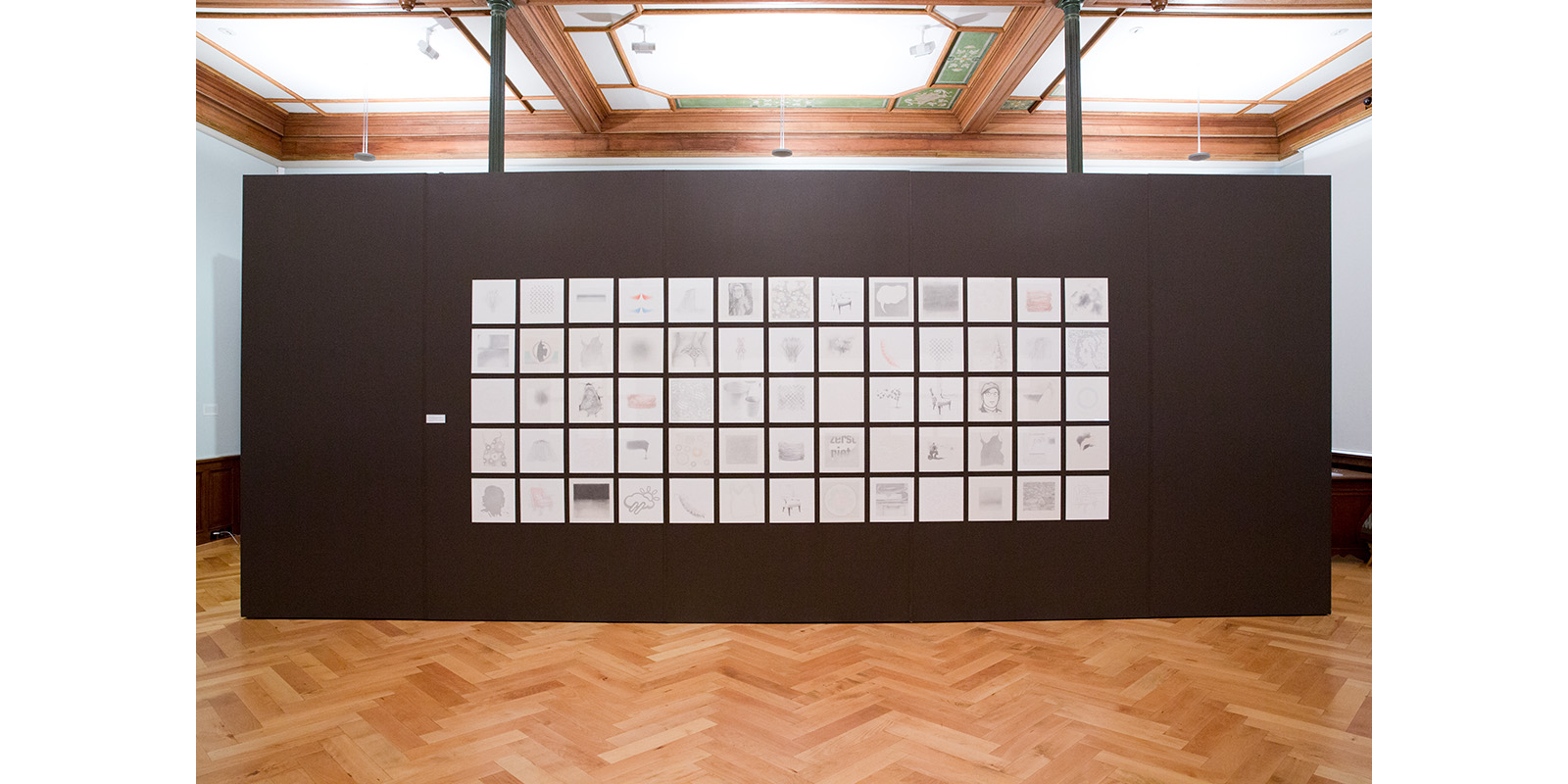
Installation view exhibition “Daniel Breu. Graphite on Paper”,
© Graphische Sammlung ETH Zürich, photo: Livio Baumgartner
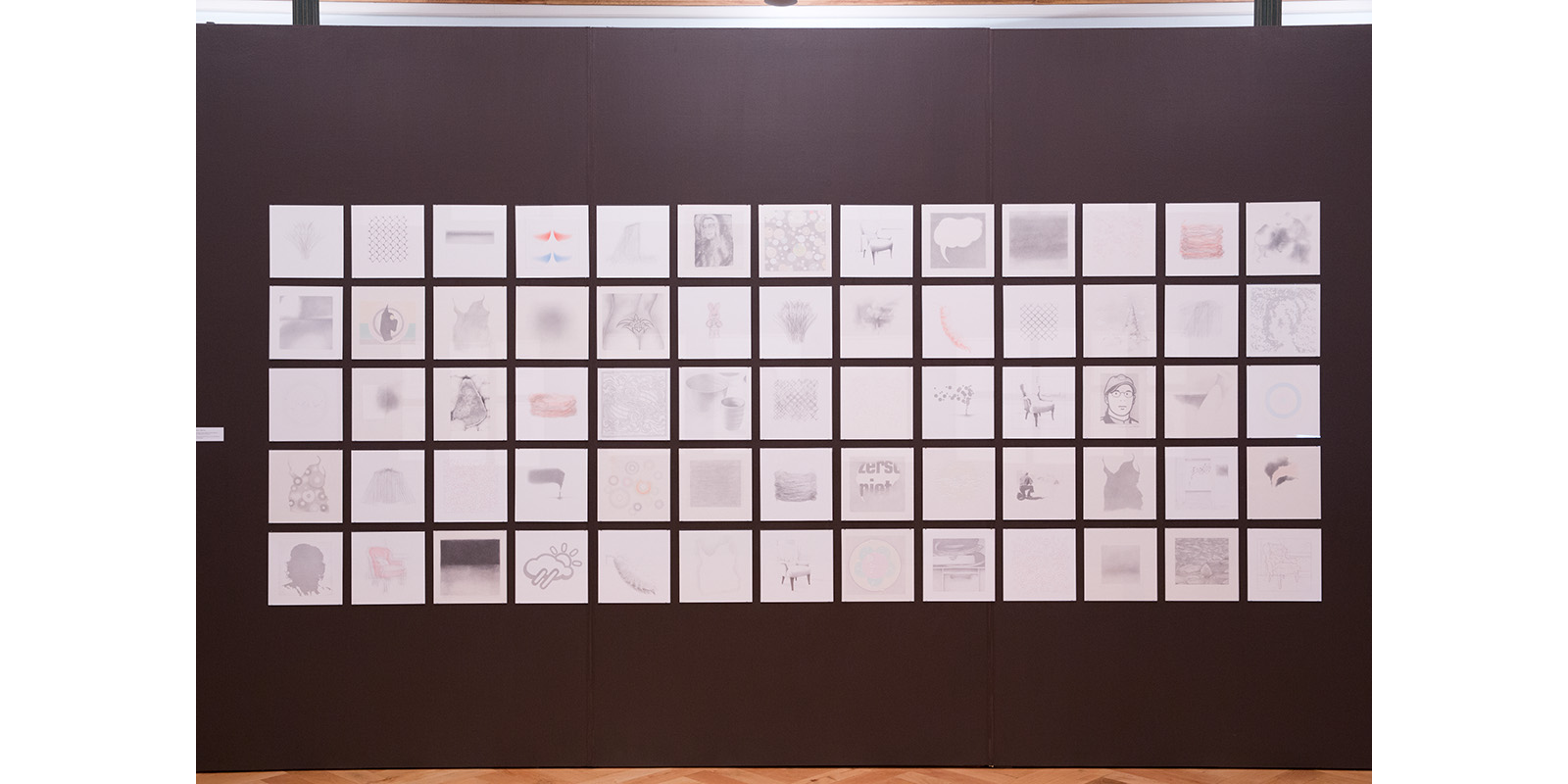
Installation view exhibition “Daniel Breu. Graphite on Paper”,
© Graphische Sammlung ETH Zürich, photo: Livio Baumgartner
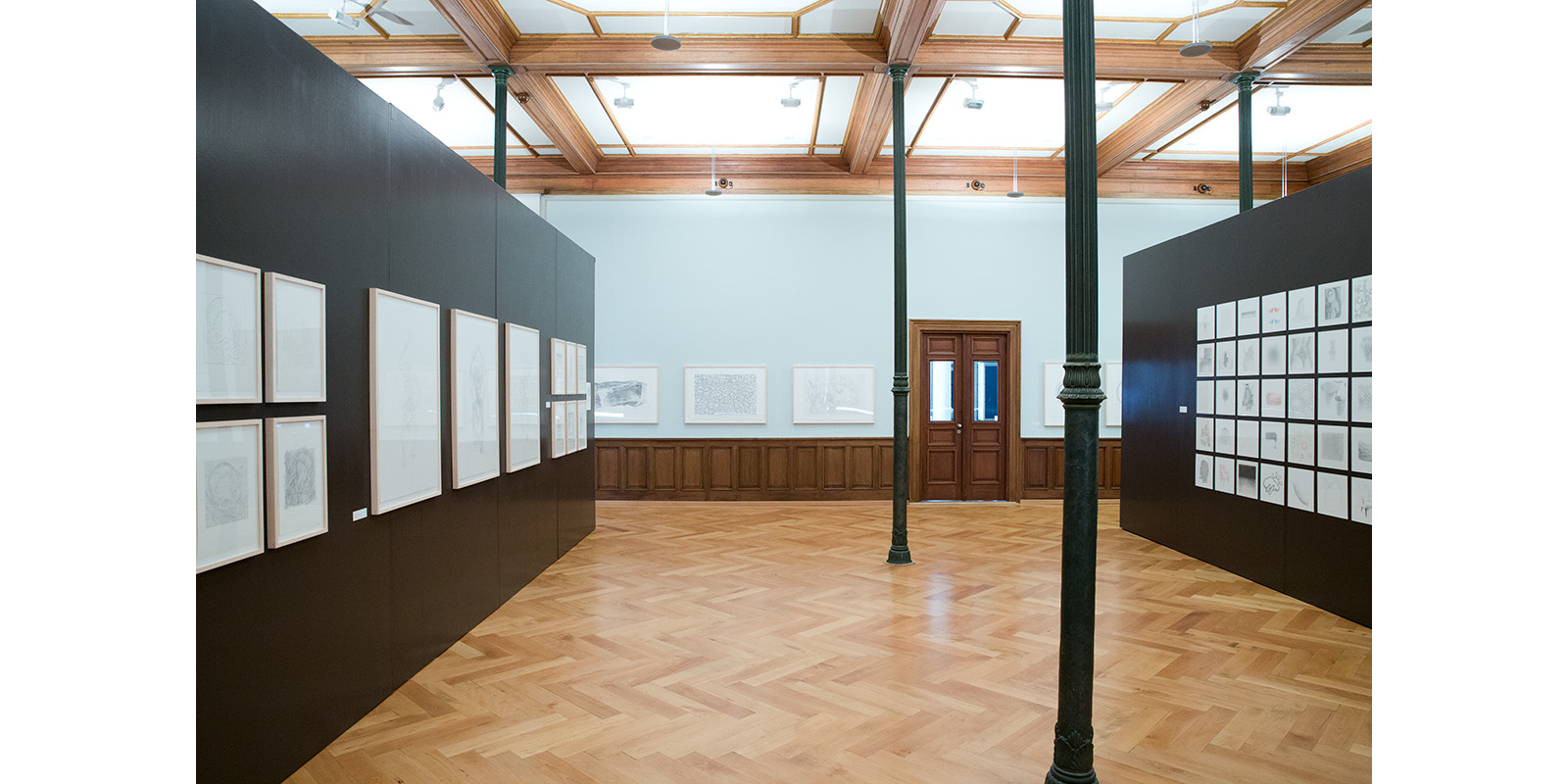
Installation view exhibition “Daniel Breu. Graphite on Paper”,
© Graphische Sammlung ETH Zürich, photo: Livio Baumgartner
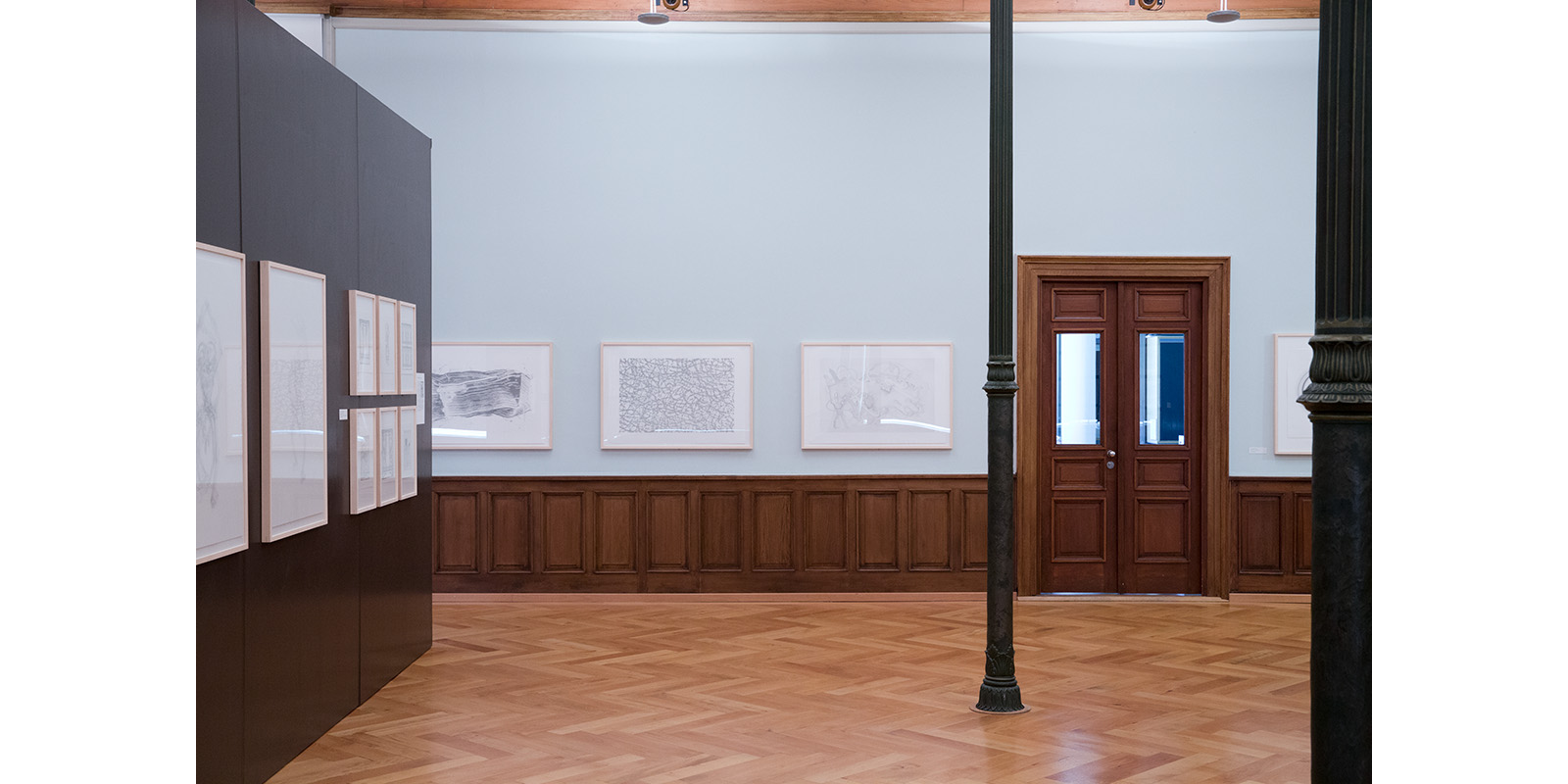
Installation view exhibition “Daniel Breu. Graphite on Paper”,
© Graphische Sammlung ETH Zürich, photo: Livio Baumgartner
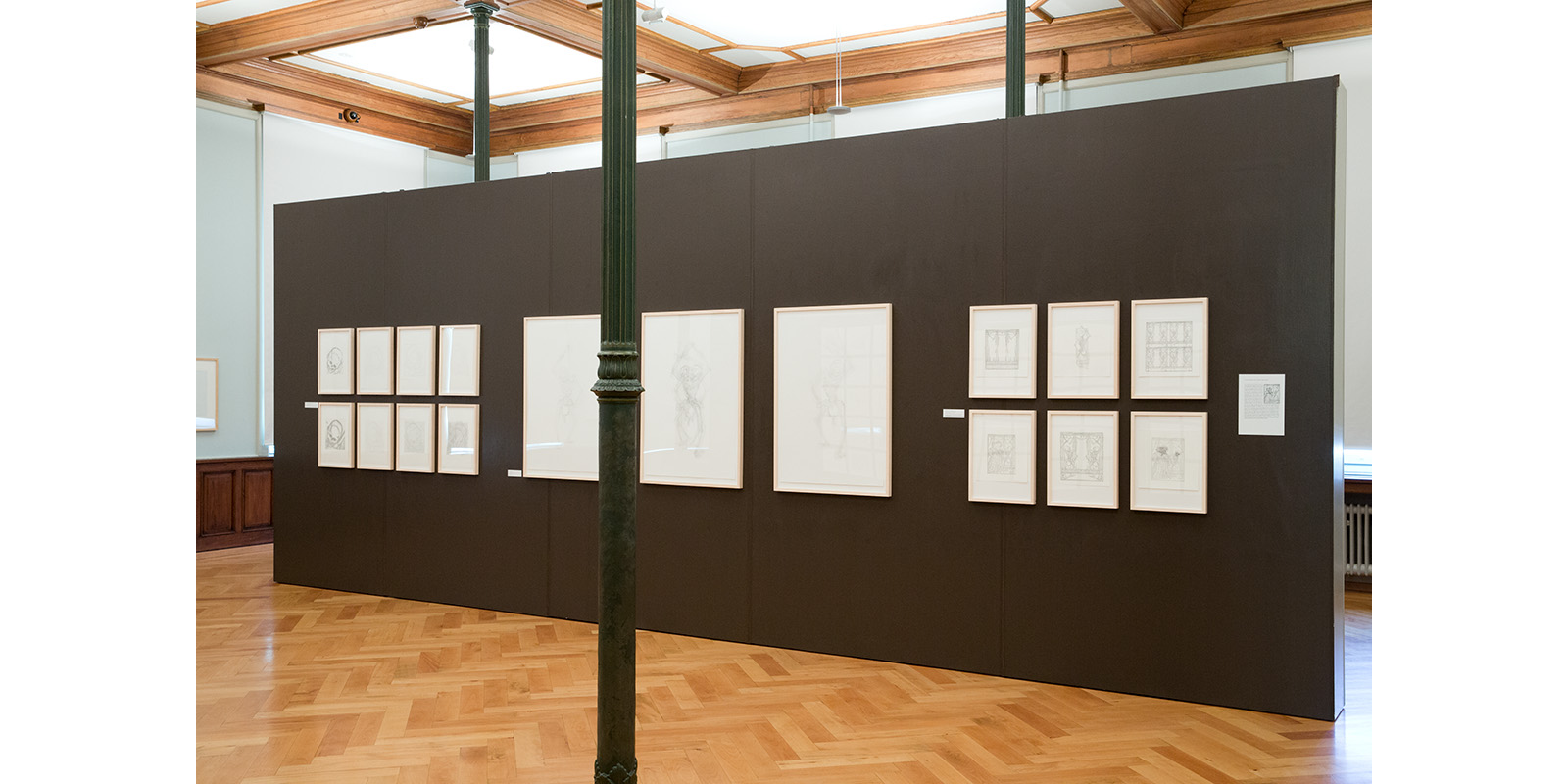
Installation view exhibition “Daniel Breu. Graphite on Paper”,
© Graphische Sammlung ETH Zürich, photo: Livio Baumgartner
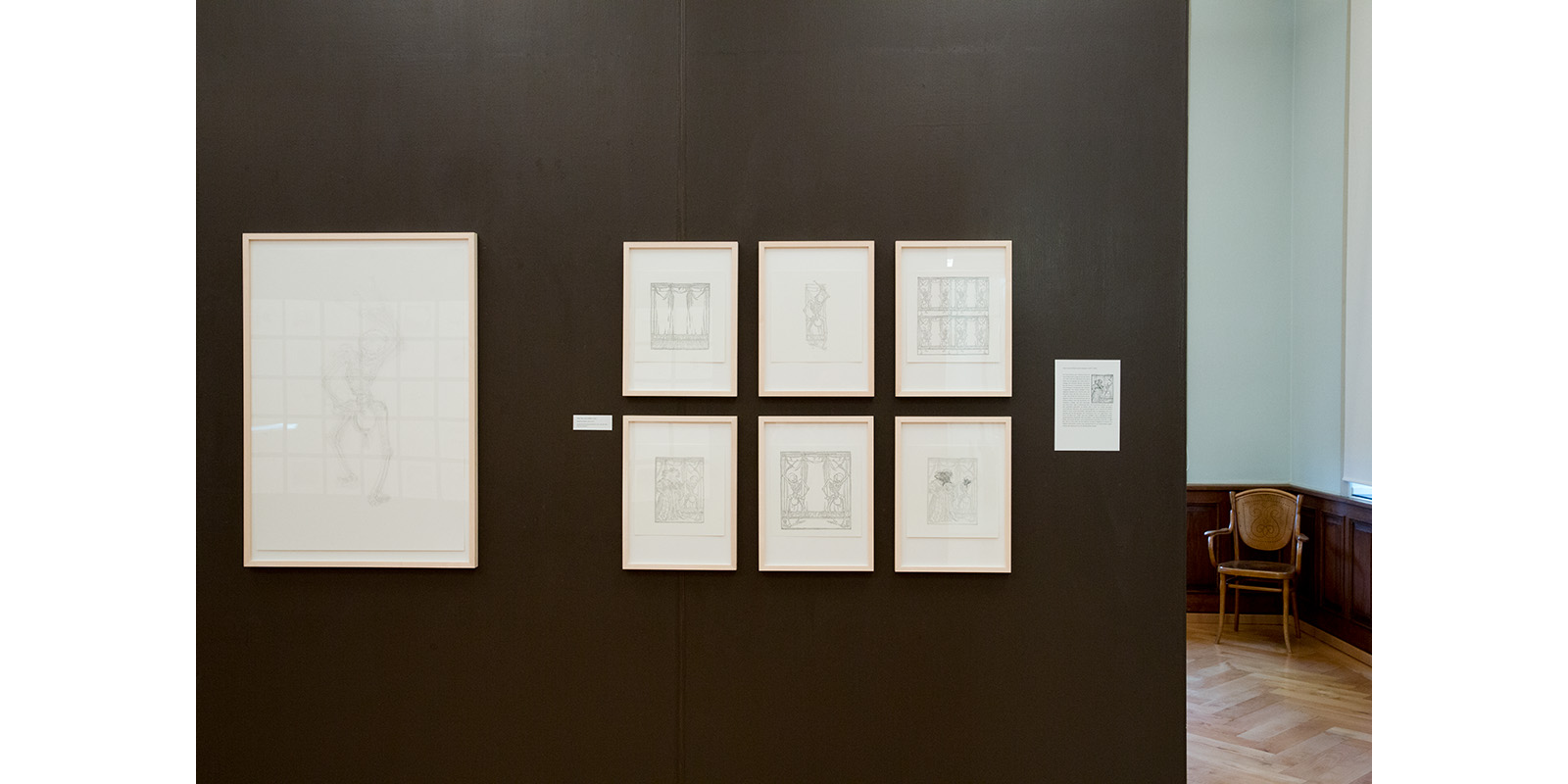
Installation view exhibition “Daniel Breu. Graphite on Paper”,
© Graphische Sammlung ETH Zürich, photo: Livio Baumgartner
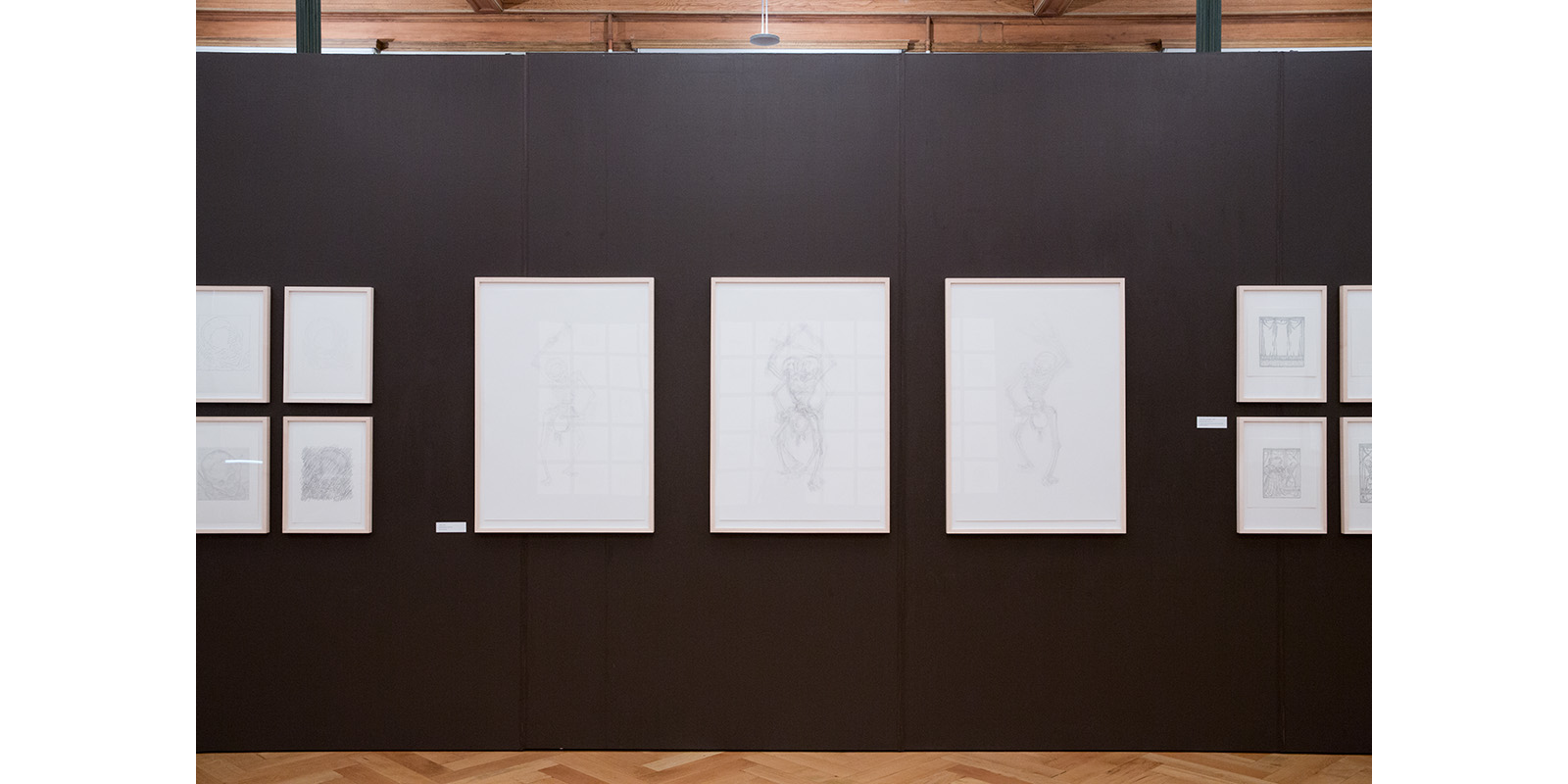
Installation view exhibition “Daniel Breu. Graphite on Paper”,
© Graphische Sammlung ETH Zürich, photo: Livio Baumgartner
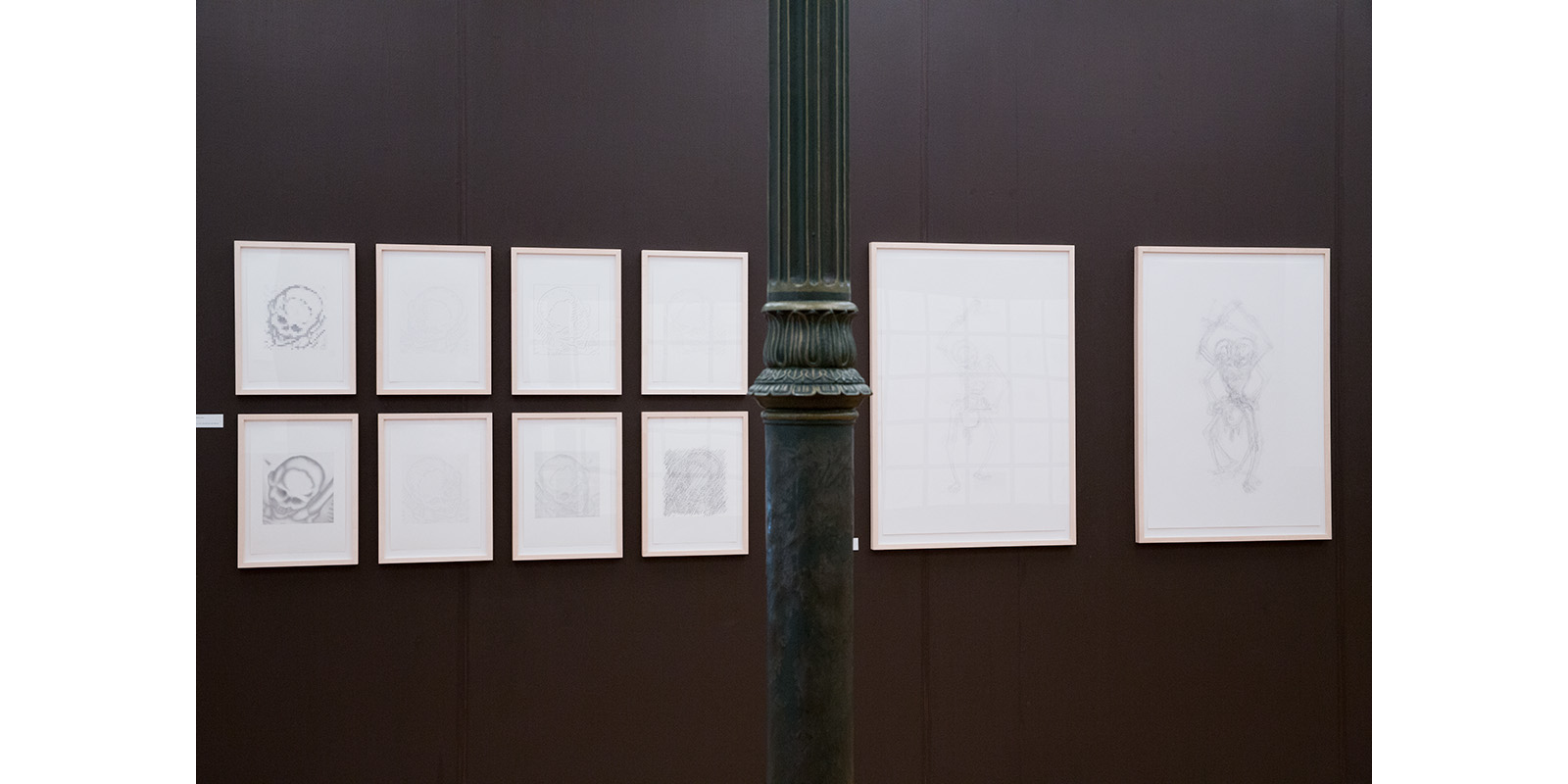
Installation view exhibition “Daniel Breu. Graphite on Paper”,
© Graphische Sammlung ETH Zürich, photo: Livio Baumgartner
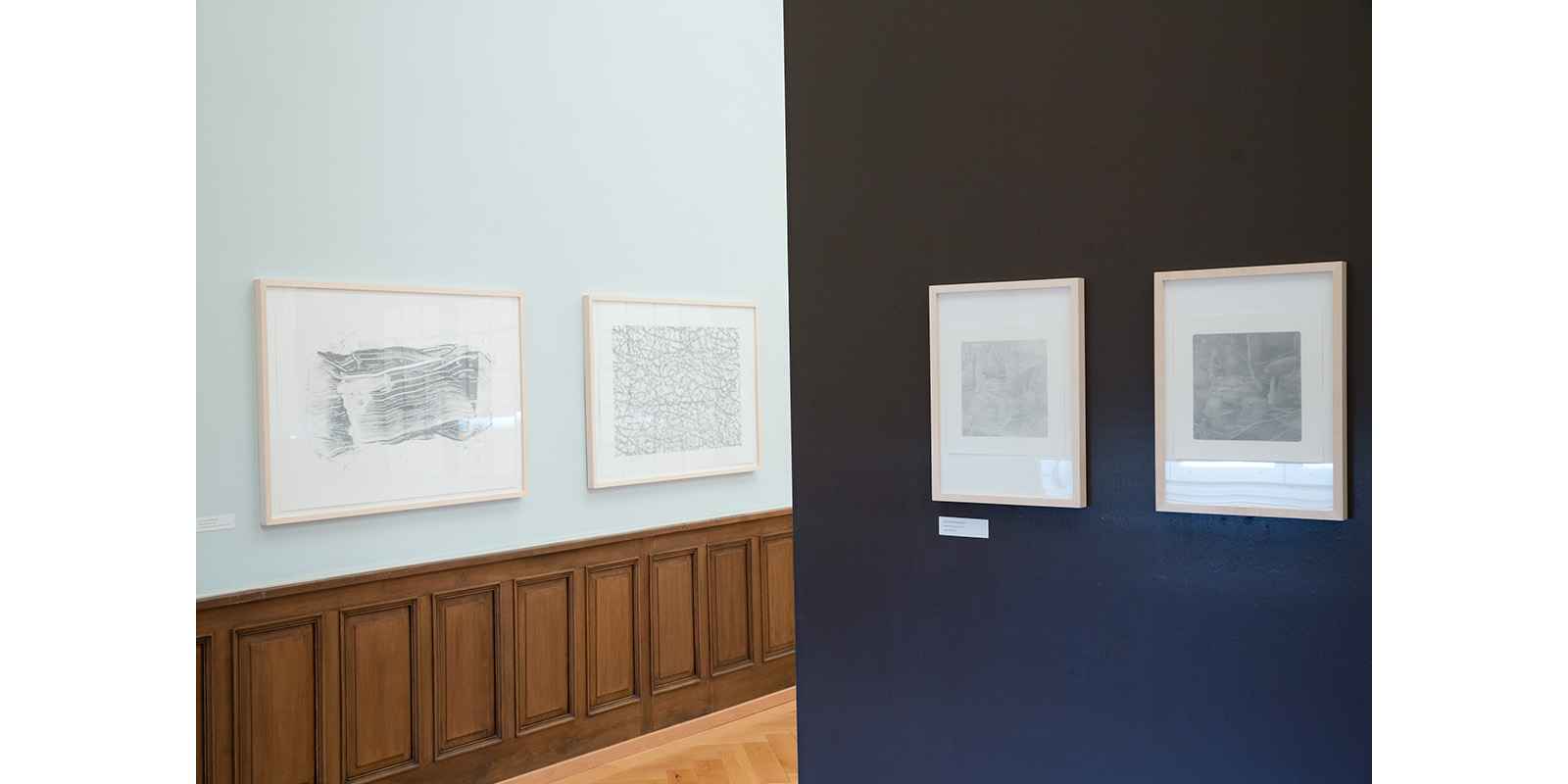
Installation view exhibition “Daniel Breu. Graphite on Paper”,
© Graphische Sammlung ETH Zürich, photo: Livio Baumgartner
In spite of its astonishingly realistic rendering, the art of Érik Desmazières (born 1948) actually breaks with reality – either in its handling of space or in the way it conveys a sense of time. His oeuvre reveals visual worlds, often unpopulated, of breathtaking precision and extraordinary timelessness. The sharp gaze of the artist penetrates the opulently teeming interiors of past ages – such as studios and libraries – and sweeps across the empty streets of the present day.
This French artist, living in Paris, is one of the finest printmakers of his generation. With consummate skill, he pushes the technical boundaries of etching and aquatint to their very limits. At the same time, he nuances the tonalities with remarkable mastery, conjuring atmospheric effects of light and shadow. He often stays with a single motif at great length, exploring it and varying it in ways that create a multiplicity of situations.
Some of his prints seem to take on a dynamic of their own that has an almost dizzying effect on the viewer, thanks to the spatial lines that appear to continue beyond the edges of the image. Others are so detailed and contemplative that they appear to be an exact portrayal of reality. Desmazières opulent visual language is inspired by an older, bygone tradition that makes it look anachronistic. The loss of all sense of time is manifested most notably in his realistic urban scenes which show neither progress nor modernity. The deserted interiors frequently recall places that no longer exist in reality. Yet at the same time, they are intimate characterizations of the people absent from the picture. Realistic as Desmazières’ spaces may appear, they are windows on different worlds subject to some strange construct of space and time. What they show is his own interpretation of reality.
Swiss artist Marc-Antoine Fehr (born 1953) and Érik Desmazières have been friends for many years. Their work occasionally reveals glimpses of their close bond. For this reason, works by Fehr, who lives in Burgundy, are on display in the showcases in the corridor.
Opening: Tuesday, April 21, 2015, 6 pm
Contact person:
Patrizia Solombrino, curator
Flyer
Press release
Figures and captions
The Department of Prints and Drawings at the Swiss Federal Institute of Technology (ETH) has been collecting works by American artist Matt Mullican (born 1951 in Santa Monica, California; lives and works in in Berlin and New York) for more than twenty years. Now, for the first time, all of his works from our collection are to be presented together. A particular highlight of the exhibition is undoubtedly the wooden box with 16 cassettes containing 554 oilstick rubbings. Acquired in 1993, this edition issued by Brooke Alexander, New York, in 1991 is based on illustrations from the Edinburgh Encyclopædia (published between 1808 and 1830). Mullican uses the genre of the encyclopædia to demonstrate the system of order that he has developed.
He has described his five categories of order as follows: Physical Elements, the lowest category in the hierarchy, comprises everything that we find in the world but do not actually design or craft; World Unframed stands for the world that we fashion for ourselves; Framed represents the arts and creative activities in all their forms; Language stands for our verbal, visual and written signs of communication; Subjective Meaning, the highest category in his ordering system, denotes human intellectual activity such as philosophy. Mullican allocates each excerpt from the the encyclopædia to one or more of his hierarchical categories: a certain botanical representation, a plant, can be either found (Physical Elements) or cultivated and used for a certain purpose (World Unframed).
A small group of drawings and individual prints in the exhibition contribute towards a broader understanding of his system.
For the Edition Cestio – an exclusive publisher issuing only one print edition each year – Mullican has recently created his 2014 Untitled (Cosmology, Subject, Model), which is a linoprint with oilstick frottage. This has been taken as an opportunity to mount a display in the corridor showcasing the prints issued by Edition Cestio over the last years.
Opening: Tuesday, 3 February 2015, 6 p.m.
Curator: Patrizia Solombrino
“Eating and drinking nourish man’s life” writes Goethe in his play Goetz von Berlichingen. Antonius Anthus, on the other hand, in his Lectures on The Art of Eating (1838), states that “Man does not eat to live any more than he lives to eat; he eats because he is hungry, or has an appetite, or because the clock strikes twelve.” Either way: eating and drinking are integral to our lives. And the fundamental importance of this everyday activity is summed up by the fact that even the old-fashioned word “victuals” is so closely related to “vital”.
The portrayal of eating and drinking is as elementary as the act of eating and drinking itself. But it isn’t always entirely straightforward, as many a cookbook illustration shows. The current enthusiasm for the cult of star chefs and sommeliers, television bake-offs, cookery competitions, restaurant guides, food magazines and food porn in general has spawned some fairly bizarre representations of what eating is all about.
A feast for the eyes demands a certain aesthetic slant, involving not only the art of cuisine, but the visual arts as well. And that is what this exhibition addresses – though it is of course first and foremost about ways of seeing. We take a look at various aspects of food and drink and all things related: production and products, decor, preparation, presentation and – albeit less frequently portrayed – the act of consumption itself. Here is something that is truly universal, shared by all, and yet with so many variations and situations that it is never commonplace.
The exhibition presents prints, drawings and multiples on eating and drinking – for our consumption, for us to ingest and imbibe, if only metaphorically. However, the tenet still holds that the eye can feast. On the menu is an appetising selection of stylistically and artistically diverse works spanning several centuries: high and low, old and new – a veritable hotpot of culinary themes. Whether or not the viewer savours the tidbits we have served up here from Collection of Prints and Drawings ETH Zürich is, needless to say, entirely a matter of taste.
Opening: Tuesday, November 4, 2014, 6 pm
Curator of the exhibition: Eva Korazija
Light, colour and a touch of magic are the ingredients of Swiss artist Annelies Štrba’s fairytale images of the Madonna. Enchanted, even as a young child, by images of the Mother of God, Štrba has never lost her fascination for this theme. For Štrba, the Virgin Mary is the ur-image of every woman and mother, and the ultimate symbol of femininity. She is an icon in the truest sense of the word.
In the two series presented here – one on canvas, the other printed on paper – we see a reflection of Štrba‘s intense exploration of one of the oldest Christian topoi in its most concentrated form. For years, the artist has been photographing Marian images in churches and chapels, only to subject them to her own creative transformation. She courageously breaks with established ways of seeing and, like a magician, plays with the observer’s own perceptions. Instead of reaching for paint and brush, Štrba uses the computer as the indispensable magic tool by which she creates her so-called light paintings. Štrba‘s works are the product of an exuberant experimentation with alienation, adaptation, distortion and an incursion into unfamiliar and uncharted worlds of colour.
Madonnas by Old Masters from the collection of Prints and Drawings ETH Zurich, striking in their stylistic and iconographic diversity, enhance this exhibition: Martin Schongauer‘s Virgin and Child in a Courtyard (c.1470-1482) portrays the Infant Jesus gently cradled in his Mother’s lap, with halos clearly identifying the element of the divine. Lucas van Leyden‘s Virgin and Child Beneath a Tree (1514), by contrast, eschews all such attributes of divinity. Israel van Meckenem presents the Virgin on the Crescent Moon (1502), as described in the Apocalypse of St John, emerging victorious over the forces of evil. Clad in sumptuous robes, she is crowned Queen of Heavens by angels.
The exhibition combines the historical diversity of Marian portrayals with Annelies Štrba‘s contemporary take on an almost two thousand year old Christian iconographic tradition. The artist uses modern technical media to bring the image of the Madonna into the present day. Though removed from their original religious context, Štrba‘s Marian images lose nothing of their transcendental aura. On the contrary: the transformation, far from diminishing their transcendence, actually highlights it in a new and unexpected way.
Opening: Tuesday, August 19, 2014, 6 pm
Konstanze Forst-Battaglia, curator
Delicate tendrils and mysterious shadowy plants, cell-like structures and velvety ferns, growing and flourishing as far as the eye can see. The works of Basel based artist Mireille Gros (born 1954) are undoubtedly a hymn to nature, as the famous French curator Marie-Laure Bernadac, as one of her most ardent patrons, once stated in an interview. It was a visit to the rainforest of the Ivory Coast in 1993 that first prompted Mireille Gros to explore issues of primary developmental forms. Further travels in Mali and in China followed – always with a lively interest in the local culture and natural surroundings, which included collecting native plants and flora. The artist channels her fascination for universal, (primordial) forms and the inherent processes of nature into a distinctly processual oeuvre in which she thoroughly absorbs things and waits for the work to emerge, grow and develop.
Indeed, in her works on paper, Mireille Gros takes an extremely spontaneous approach. Her incredibly scintillatingly colourful cycles of works and technically complex one-off pieces raise questions about experimentation in the process of engraving. Since the mid-1990s, Mireille Gros has regularly made use of the generous and professional services provided by the Atelier de gravure in Moutier. She frequently works here on her wide-ranging cycles of experimental prints. Together with the printer Michèle Dillier she has devised a new form of print involving a combination of organic matter such as plants pressed directly into the soft-ground block and fantastical embellishments by the artist herself. From an unconventional and situatively determined viewpoint, Mireille Gros reflects on possible variations during the ongoing course of the printing process itself, integrating the oxidation traces of the printing plates and deploying variously coloured chine collé layers to create a certain visual depth, while at the same time working with hand-tinted overprinting. She lets herself be inspired by pure chance. Yet at the same time, she is painstaking in her choice of paper and sometimes includes manual colouring of the paper as part of her intuitive decision-making process.
The Department of Prints and Drawings at the ETH includes more than one hundred works by Mireille Gros. This exhibition presents a retrospective overview of the works by this artist from the past twenty years. These include not only prints, but also drawings and artist’s books. In particular, the exhibition showcases and opens the series of books, now encompassing 144 volumes, under the title La vie en gros – an unprecedentedly opulent treasure trove of experimental drawing, verbal notes, dried flowers and cutting-edge ideas. In Book 29, the artist notes, “Every day, a plant or flower disappears. Every day I invent a new plant. “ The public will find much to mull upon in the implementation of this artist‘s many-facetted credo.
Opening: Tuesday, May 6, 2014, 6 pm
Contact person:
Alexandra Barcal, curator
Erik Steinbrecher (born 1963 in Basel; lives in Berlin) is an artist and architect (graduate of ETH Zürich). He teaches Fine Arts as part of the Master of Arts programme at the Hochschule der Künste in Zurich. In addition to his works for public space, sculptures and photo installations, he is also known for his videos, prints and artist’s books. He has been building up a picture archive since he was a student, with a strong focus on images of an often fragmentary character, which he combines in distinctive arrangements. For some twenty years now, he has been publishing this visual material in numerous notebooks, brochures and books, as well as in the form of posters and placards. His foremost interest is not so much the formal composition of the printed materials, as it is in the case of Berlin-based Austrian artist Gerwald Rockenschaub. Nor does he seek to develop a personal signature. Instead, he undermines attitudes and styles in much the same way as Martin Kippenberger, ten years his senior, did when he paved the way for the younger generation such as Steinbrecher. The posters, invitation cards and other printed materials by Martin Kippenberger, though copious, might be regarded as peripheral to his oeuvre, whereas printed works are very much at the centre of Erik Steinbrecher’s artistic output, in which a strong emphasis is placed on the sculptural quality of the objects portrayed. For instance, the product catalogue of a building supplier is transformed by Steinbrecher’s visual approach and rearrangement into a fascinating collection of strange structures – a sum of many parts that can be integrated into architecture.
The full scope of Erik Steinbrecher’s Books & Prints can now be seen in Switzerland for the first time, following their presentation in Berlin, and will be published in a book collated by artist and graphic designer Lex Trüb.
Opening: Tuesday, February 18, 2014, 6.00 pm
Paul Tanner, curator
Success in collecting art depends on both the vagaries of the art market and the financial situation of the collector. But an even more important contributing factor in collecting art is the art of collecting, which is a question of talent and taste. One collector capable of combining the favourable opportunities of the market with a keen eye for talent was Robert Landolt (1913-2008), who worked as a paediatrician in Chur and spent much of his scarce free time studying and acquiring drawings. To mark the centenary of his birth, the Graphische Sammlung ETH is holding an exhibition of 80 works from his collection of drawings, now in private hands.
Robert Landolt built up his important collection from 1945 onwards, with a keen eye for quality. Today, these outstanding works provide an insight into the intimate world of the sketches and designs of the Old Masters. The rocky landscape penned by the hand of the Florentine monk Fra Bartolommeo, for example, appears remarkably modern some 500 years after it was created by this contemporary of Raphael.
From Bolognese artists such as Domenichino and Agostino Carracci to Lombard artists such as Morazzone and Tanzio da Varallo – each and every one of these works shows the crucial role of hand drawing in the process of artistic composition.
Robert Landolt‘s interests as a collector were wide-ranging, both geographically and across the epochs. Northern European schools are also prominently represented – notably by Hendrick Van Cleve‘s Roman ruins, the mythological world of Hendrick Goltzius and the landscapes of Adriaen van Ostade and Jan van Goyen. A technique especially associated with Switzerland, on the other hand, is the Scheibenriss – designs for stained glass windows in public or private buildings – of which the exhibition includes some fine sixteenth century examples. Specialists in the craft of the Scheibenriss included Hans Funk, who was born in Zurich and worked for many years in Berne, and Daniel Lindtmayer of Schaffhausen.
A collection built up with such devotion is truly a feast for the eyes. The exhibition at the Graphische Sammlung ETH offers visitors a chance to look over the Old Masters‘ shoulders, as it were, in the process of composing their works.
Opening: Tuesday, November 5, 2013, 18 pm
Contact person:
Dr. Michael Matile, Curator
People have always been captivated by the obscure. Somewhere between beguiling enchantment on the one hand and a shiver of the uncanny on the other, the world of shadows is a seemingly endless source of artistic inspiration. Whether celebrating the fullness of life in the sheltering lap of lustful night, as in the Baroque, or succumbing to the fascination of metaphysical evil in gloomy Hymns to Night, as in the Romantic era, this multi-faceted theme appeals as much to artists today as it ever did in the past. Peter Bräuninger (born 1948) has devoted himself entirely to the atmospheric celebration of a magical world of shadows in his work: nocturnal streets and harbours alternate with dark and melancholy interiors; the indoor life of his own studio with its crepuscular nooks and crannies is registered and illuminated with the same keen curiosity as the vibrant red light district outside his window. Often, this aesthetic penchant for the abyss of the night melds with the elements of a film noir in evocative visual formulae of impending doom that might have been borrowed from Alfred Kubin, while the harsh contrasts recall the shady urban scenes of Edward Hopper. The individual stands lonely and forlorn, with his few paltry belongings, waiting. The destination of his journey remains unclear – as in the 1989 etching from which the exhibition takes its title.
Peter Bräuninger himself has been journeying incessantly for some forty years, commuting regularly between Zurich, Genoa and Hamburg since the 1970s, with occasional lengthy stays in the USA and Paris. For more than forty years, on his travels, he has been tirelessly producing exquisite aquatint etchings with a hyperrealism redolent of black and white photography. He honed these consummate skills at the Kunstgewerbeschule in Zurich as a student of Bruno Stamm. The focus there during the early 1970s, in keeping with the spirit of the times, was very much on precise observation, spawning a new form of Realism as a counterpoint to the largely relativising aspects of Conceptualism. In Bräuninger’s case, this evolved into a fantastical approach to which he has remained true ever since. This approach was fully vindicated by his early success. The resoundingly positive response to his work culminated in a solo exhibition at the Kunstmuseum Winterthur in 1980, followed by countless critically acclaimed presentations in galleries at home and abroad right up to the present day. What had begun as the reflection of an openly admitted apocalyptic mood, or weltuntergangsstimmung, critical of the existing system, gradually gave way to an exuberant love of storytelling. Today, for the most part, his works depict scenes of carefully orchestrated complexity that betray an engagingly mischievous view of reality. A smattering of finely calibrated disruptive aspects prompt the viewer to take a closer look in order to glimpse the bold visions they convey: in the 1980s, for example, Bräuninger portrayed heavy-duty offshore cranes against the backdrop of Letten railway station in Zurich. The painstaking process of etching the metal plates, enhancing the line drawing with layer after layer of aquatint, demands an extraordinary degree of spatially abstract, even “theatrical” thinking. And in this respect, he can undoubtedly be described as a master of dramatic chiaroscuro. What is more, he actually prints his own etchings – and while this is most unusual, it does have a reason: Bräuninger models his “night pieces” step by step on the copper plate, in several processes.
The exhibition shows a representative selection of about 80 works from the artist’s copious archives. It not only provides a retrospective view of his oeuvre from the earliest experiments to the latest works, but also gives an insight into his studio by including drawings and sketchbooks in addition to the etchings themselves. Bräuninger tends to capture his motifs in situ either in pencil or gouache before translating them into the form of detailed templates. In this regard, he upholds the tradition of the architectural fantasies created by Giovanni Battista Piranesi in which given objects are subsequently transposed into unexpected contexts and combined anew with a sure aesthetic sense. Or did we already have an inkling that there were mysterious dungeons hidden deep below Zurich’s main train station?
Opening: Tuesday, August 20, 2013, 6 pm
Contact person:
Alexandra Barcal
Pablo Bronstein is no stranger in Zurich. In the summer of 2011, he presented his Teatro Alessandro Scarlatti on the estate of the Blum family as part of the outdoor sculpture project launched by the Migros Museum für Gegenwartskunst. For this, he created a tiny opera house in a field – painted white on the outside and turquoise on the inside, and with room for just a handful of visitors. The orchestra pit was just big enough for two musicians, and the stage could accommodate only one singer. No performance of any aria from a Scarlatti opera could possibly have been more exclusive. A consummate master of scenography, Bronstein already made his mark in England by staging dance performances in a baroque setting. He is a virtuoso in the media of drawing, video and performance art.
Fascinated as he is by historical architecture, Bronstein nevertheless calls it into question with considerable wit and irony in his drawings and prints. One example of this is his series of thirty fantastical designs for keyholes, inspired by historical models he found in the library of the Musée des Arts Décoratifs in Paris. Time and again, Bronstein sets about exploring historical publications in the field of architecture, such as those of French architect Antoine Carron (1521 – 1599) or the famous etchings by Giambattista Piranesi (1720 – 1778).
The Collection of Prints and Drawings at the ETH has been gradually acquiring a number of his works for some years now, and is pleased to be able to present them for the first time in this small exhibition. Pablo Bronstein (born in Buenos Aires in 1977, lives and works in London) already had solo exhibitions at the Lenbachhaus in Munich in 2007 and at the Metropolitan Museum in New York in 2009. The Centre d’Art Contemporain in Geneva is currently hosting an exhibition Pablo Bronstein – A is Building, B is Architecture until 24 November 2013. Bronstein has also participated in major group exhibitions at Tate Britain in London (2006) at the K20 gallery of the Kunstsammlung Nordrhein-Westfalen in Düsseldorf (2010), at the Manifesta 8 in Murcia (2010) and at Tate Modern in London (2012).
Opening: Tuesday, November 5, 2013, 18 pm
Paul Tanner, curator
The Netherlandish artist Anthony van Dyck (1599-1641) has secured a place in the history of art not only for his magnificent and sometimes larger than life portraits, but also for his series of prints known as the Iconographia, incorporating more than a hundred portraits of the most illustrious figures of his day. The exhibition Faces of Distinction. Anthony van Dyck and his portraits of an illustrious circle, mounted by the Department of Prints and Drawings of the ETH Zürich in collaboration with guest curator Carme Rodríguez-Pàmias, presents these masterpieces of portraiture to the Swiss public on a hitherto unprecendented scale.
Thanks to the generous bequest of the Zurich banker Heinrich Schulthess-von Meiss (1813-1898) the Department of Prints and Drawings of the ETH Zürich holds a particularly wide range of works from van Dyck‘s Iconographia. These include several remarkably rare first prints as well as works from the very first edition of the Iconographia published by Marten van den Enden, with whom van Dyck worked closely right up to his death in 1641.
Following his apprenticeship under the guidance of Antwerp painter Henrik van Balen (1575-1632), the highly gifted young van Dyck, having been granted the title of master artist at the tender age of 19, entered the studio of the leading Flemish painter of the day, Peter Paul Rubens (1577-1640). This assured him of a prestigious clientele right from the start. The portraits in the Iconographia bear witness to the illustrious circles in which the young master artist moved. Alongside monarchs, princes, statesmen, scholars and philosophers, there are also portraits of artists particularly admired by van Dyck. Though many of the portraits were etched after drawings or paintings by van Dyck, some of the portraits were etched by him personally. This spontaneous and unprepossessing approach resulted in some remarkably rare avant-la-lettre prints.
The beginnings of the Iconographia and the development of the cycle are shrouded in mystery. We can only begin to surmise what may have prompted him to launch such an ambitious project in the time around 1632. Van Dyck, who was thoroughly familiar with the tradition of artists‘ biographies and portrait books, may well have recognised the opportunities that the printed medium offered as a means of successfully marketing his celebrated talent for portraiture.
Opening: Tuesday, 23 April 2013, 6 pm
Contact person:
Konstanze Forst-Battaglia
The ETH Collection of Prints and Drawings has been continuously acquiring works by Fischli and Weiss for the past twenty years. That in itself is reason enough to show our holdings by this famous duo of artists. In 1992, we were able to acquire the early series Siedlungen, Agglomeration from an exhibition at the Walcheturm gallery in Zurich. Though the series consisted at the time of 45 photographs, it was later expanded: 1993 saw the addition of their Kanalvideo and their How to work better screenprint. In 1995, we purchased the 28-part photographic series Surrli. Then, in 2002, we also acquired 32 colour proofs for Blumendrucke – prototypes for the printed series of the same title. In 2004, a lithograph printed on both sides was created for the Schweizerische Graphische Gesellschaft (SGG). Though its title is Schilf and its underlying theme of “reeds” is evidently a motif of nature, it was not actually taken directly from nature at all, but from photographs of painted funfair signage. This incredibly camp décor undergoes a radical filtering process in the work of Fischli and Weiss: instead of a double exposure, they have used underexposure, resulting in a grey and colourless image. The theme is not one of radiant beauty, but of the optical allure of darkness.
Over the years, we continued to acquire various publications by Fischli and Weiss that possess the quality and character of artists’ books. The prints were almost invariably commissioned works – for a company, for a Kunstverein, for a publisher, or for the SGG. In addition to the dozen or so prints, there are also photographic editions, including prints and copies intended as contributions to their own books and issued as special editions. Together with the books and, in particular, the three photographic series, the collection spans a selection of works that is representative of their oeuvre.
Both Peter Fischli and David Weiss have worked with other artists. The cover of the catalogue for their legendary 1980 Saus und Braus [Revel and Riot] exhibition, for instance, was designed in collaboration with Swiss painter and punk musician Klaudia Schifferle. One of the woodcuts was cut by artist and composer Anton Bruhin. Needless to say, works by Schifferle and Bruhin were also included in the exhibition. Another legendary collaborative effort was between David Weiss and Urs Lüthi. In 1970, the photographic series Sketches was created together with artist-photographer Willy Spiller. The Collection of Prints and Drawings not only contains the photographs on which this was based, but also has the photographs pertaining to a second series, The Desert is across the Street created in 1975 – a “whodunnit” set mainly on Langstrasse in Zurich. Finally, there are four works by David Weiss: the large 1981 gouache Strasse bei Nacht, the 1975 artist’s book up and down town, the 1976 artist’s book Wandlungen and a silkscreen print created in the late 1970s for the Museum Baviera portfolio.
Opening: Tuesday, February 5, 2013, 6 pm
Contact person:
Paul Tanner
Louise Bourgeois (1911-2010) moved between different worlds during her lifetime. “Although I am French, I cannot imagine creating any of my works in France. All are American, from New York.” Born into a bourgeois and artistic family of tapestry dealers, she received an excellent education and knew the Paris Surrealists from a young age, leaving this formative milieu for the USA only after her marriage in 1938. Bourgeois’ lines in her 1947 diary show that the move was a profound crisis for her. The same year she translated her loneliness and isolation in post-WWII New York as an artist and as the mother of three small children into a seminal print project: He Disappeared into Complete Silence – the ‘drama of the self’, an illustrated book with nine etchings and nine parables by the artist. Bourgeois never abandoned its central theme: her works oscillate between deep intimacy and loud extroversion. In this they represent a transition from the language of abstract form to the narrative currents of the 1980s. Her life moving between different worlds is a constant thread in her work: “Has the day invaded the night, or has the night invaded the day?” – she asks rhetorically in her diary on 7 February 1995. Four years later she juxtaposed this question, as an aphorism, onto an plate overlaid with a fernlike structure and used this as one of nine dyptichs in the series What is the Shape of this Problem? (1999).
In the 1990s her activity was almost excessive, in both her sculptures and installations – the famous Cells – and in the area of prints. Her international fame now reached its highest point. Here Bourgeois remained true to the print medium, and over the years put together several outstanding portfolios with leading publishers such as Benjamin Shiff, Peter Blum and Jean Frémon. Just as in her prints Bourgeois deployed a significant range of formal criteria and demonstrated great technical accomplishment, her work –in the surrealist tradition – had a wide-ranging literary component. A notable number of graphic series are accompanied by her own texts, in various constellations: text and image can emerge either simultaneously or independently of one another. Here the plates represent independent formulae for the frequent theme of human fear in the texts, and never simply ‘illustrate’. No series is like another in appearance; each is carefully drafted according to its own principle and forms a unique unit. This is another indication of Bourgeois’ position as an artist at the threshold of the critical-of-tradition modern and the pluralistically-determined postmodern. All her stories play in the background of Bourgeois’ own biography. With her image-narratives, however, she never tries to convey a direct, pure message. On both the textual and the image levels, an enigma is always present.
After purchasing the important artist book The Puritan (1990) in 2010, the Collection of Prints and Drawings planned this exhibition to present the key printed works of Louise Bourgeois. Seven suites from 1947 to 2007 are shown, created using various techniques and mostly combined with the artist’s texts. Among them, thanks to the support of the Louise Bourgeois Studio, are found rarely-shown masterpieces and works from public and private collections in Switzerland and the USA.
Opening: Tuesday, November 6, 2012, 6 pm
Contact person:
Alexandra Barcal
Ian Anüll began to publish his small, self-produced art books in the 1970s. His body of technical reproductions is still manageable, but it has expanded greatly. Its publicist element, perforce associated with prints and multiples, has been and remains very important to him today.
Whenever Anüll had access to a printing studio he seized the opportunity and produced prints and print series. In the mid-1980s he created an important silkscreen series at the Centre genevois de gravure contemporaine, where he printed on various different materials. A year later he produced a woodcut series there which, in a blast of originality, comprised cooperation with 16 different artists. Tamach Taub, Teres Wydler, Paul Viaccoz, Remi Dall’Aglio, Andreas Hofer, Françoise Lienhard, Alex Hanimann, Roman Signer, Daniel Zimmermann, Philipp Deléglise, Michel Ritter, Paul Marie, Daniel Berset, Josef Felix Müller, Jürg Egli and Cécile Wick were each simply required to create something on a woodblock; the format of all woodblocks was identical. Without knowing the resulting woodcuts Anüll then created a second woodblock of exactly the same dimensions for each artist, and took prints from both woodblocks. The overlaps or overprints were surprising, as the dual works’ titles reflect: Pile – Face, corresponding to the English ‘heads or tails’. In Roman Signer’s case the consonance was astonishing, as if Anüll had known that Signer would shoot at the wood plate. Indeed, Anüll cut two forms that resembled military targets.
In addition to prints and print series, Anüll created art books and (from the late 1980s) numerous multiples. Among these is one which may today be described as an icon of its genre: a multiple in black, red and gold (a red and black egg-holder with six golden eggs) inspired by the unification of Germany.
Opening: Tuesday, August 21, 2012, 6 pm
Paul Tanner, curator
Have you ever noticed while reading a text that letters are actually mysterious and meaningful emblems? Written characters are symbolic images with great artistic potential. In a limited context they can be altered and through their design exercise a decisive influence on the content and atmosphere of what is being read.
The monograph exhibition of the works of Imre Reiner (1900-1987) presents this phenomenon in print. It offers us the opportunity to study images of typefaces and investigate their potential outside the context of textual meaning. This Hungarian-Swiss artist and typographer came into contact with font design during his youth in former Austria-Hungary, where he was engaged in carving names onto gravestones. During his training as a graphic artist in Stuttgart after the First World War he developed his first fonts. Driven from Germany by the anti-Semitic climate, he settled in Tessin at the beginning of the 1930s. There he worked tirelessly on his extensive projects until going blind in 1982. His works comprise not only graphic art but painting, book design (typography) and theoretical discourse.
The focus of the exhibition is letters and books in which Imre Reiner embedded illustrations into written characters such that two elements seemingly foreign to each other by nature merge effortlessly and artistically. Reiner’s investigations into the manifold design possibilities of the alphabet are another central aspect of his work. Using countless colour variations he reduced letters to their pictographic, abstract forms, shifting the emphasis away from their meaning. In his skilful wood engravings and experimental etchings he often integrated fragments of written characters as structural elements, such that figurative and/or abstract representations in fine gradations of black and white emerge.
In Imre Reiner’s search for the common ground between image and script the moving line is integral. In relation to the surface it creates a strong tension, simultaneously suggesting both movement and depth. The letters in the image also link Reiner’s works to the conceptual level: when we regard them we sway back and forth between comprehending a text and looking at a picture. The end result is that we marvel at the hidden potential of this rare type of imagery.
Opening: Tuesday, April 24, 2012, 6 pm
Patrizia Solombrino
In seinem Buch Die Intrige. Theorie und Praxis der Hinterlist (2006) schreibt Peter von Matt in einem Kapitel zur Dramaturgie eines verbrecherischen Aktes, der von zweien begangen wird: Exemplarisch sei da die „Apfelaffäre“ im Paradies. „Adam und Eva stellen eine Urgestalt des Paars als Täter dar. Sie dürfen von der Frucht des Baumes nicht essen und tun es doch. Beide beissen zu. … Aber wann und wie beissen sie zu, und wer zuerst, und warum tut es der andere auch? Geht man die Adam-und-Eva-Bilder in der Kunstgeschichte durch, sieht man, dass der Apfel immer da ist auf den Gemälden und Kupferstichen, aber immer wieder anders.“ Und immer wieder anders agiere auch die Täterschaft Mann, Frau und Schlange. Die Tat werde gemeinsam und doch individuell begangen und: „Beides muss im Bild sichtbar werden, aber indem es sichtbar wird, wird es auch schon gedeutet.“ Das sei – abgesehen von der gewaltigen Frage nach der Schuld – erst einmal kurzweilig zum Anschauen. Grund genug, solche Bilder in einer Ausstellung zu versammeln.
Mit wenigen Ausnahmen wird ausschliesslich der Tatbestand des Sündenfalls präsentiert, dieses folgenschweren Moments der Widerhandlung unserer Stammeltern gegen die einzige Einschränkung in ihrem paradiesischen Dasein. Prinzipiell geht es im Ablauf des Geschehens ums Immergleiche: um den engen Zusammenhang von Nehmen, Übergeben, Entgegennehmen, Weitergeben und Annehmen des Apfels. Wie ist das Paar dargestellt? Zeigt es sich in unschuldiger Blösse, bevor das problematische Spiel um das Tabu des nackten Körpers beginnt, das heisst, bevor aus einer gottgegeben-selbstverständlichen Bedingung wollüstiges Potential erwächst? Oder ahnt man beim Anschauen, wie sich diese Veränderung anbahnt? – als Vorschau auf das erwachende Gewissen der beiden, die ihrerseits ahnen, dass sie nicht perfekt sind, sondern nackt. Wie reagieren sie? Zuweilen schämen sie sich, zuweilen kokettieren sie eher damit, zuweilen geht eins ins andere über und wird zum Vexierspiel zwischen konkretem Verbergen und metaphorischem Hinweisen. Zuweilen geht es schon eindeutig zweideutig zu. Meist ist es ja Eva, die den Apfel anbietet und ihre Rolle als Femme fatale ausbildet. Eigentlich galt sie ja als zweites und schwächeres Geschöpf, zu ihrem eigenen Schutz vor des Teufels Einfluss Gottes Erstgeborenem untergeordnet. Als es dann aber um die Probe aufs Exempel geht, zeigt sich der Primus des ‚starken Geschlechts’ sorglos oder als zögerndes, linkisches Opfer. Beteiligt am Sündenfall sind beide. Aber ist nicht einmal sie, einmal er ein bisschen schuldiger? An ihrer Exilierung aus Eden ändert das schliesslich nichts.
Eva Korazija
Eröffnung: Dienstag, 7. Februar 2012, 18 Uhr
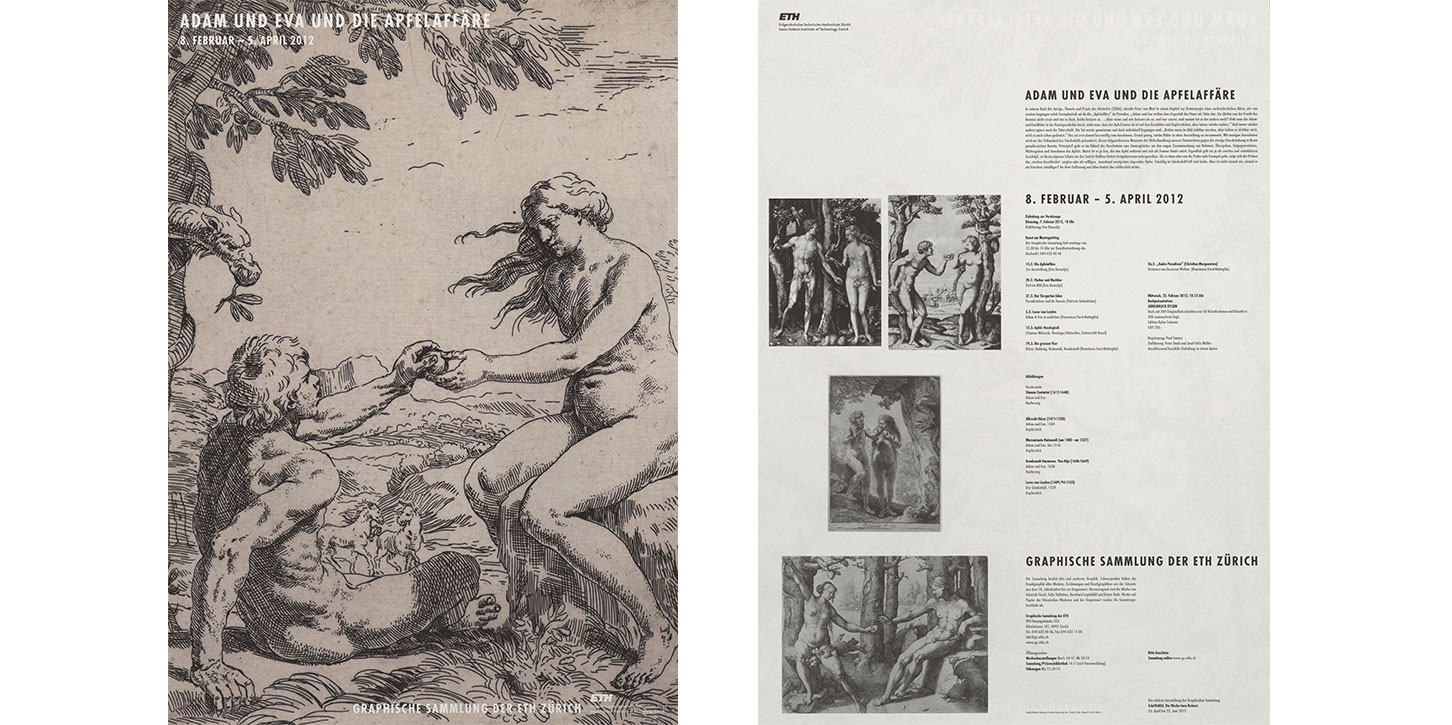
Plakat der Ausstellung «Adam und Eva und die Apfelaffäre»
A monotype is a single, not repeatable print on paper. If a second print is made from a monotype plate a so-called ‘ghost print’ is the result. In monotype an image is painted or drawn on a copper, zinc or glass plate or another surface and a print is made. It is a print – but somehow in between: a print, but not reproducible; individual like a drawing or portrait. Monotype is something between drawing, painting and printing, and links the three.
Painters such as Giovanni Benedetto Castiglione (1609-1665) or Edgar Degas (1834-1917) created masterpieces using this medium. Painters deployed it and made it their own; also artists who moved from an intimate knowledge of printing into the borders between print and drawing; and artists whose conceptual approach led them to monotype.
What can be seen in the exhibition?
The exhibition presents monotypes by seven national and international artists: Per Kirkeby and Rosina Kuhn, who consciously print in painter’s style; Andy Warhol, Georg Baselitz, Francine Mury and Anselm Stalder, whose knowledge of printing lent itself perfectly to the monotype; and Stefan Gritsch, whose conceptual ideas led him to it. The glass cases in the corridor augment the exhibition with one-off prints by Peter Emch, Jean Pfaff and Claude Sandoz and a selection of further monotypes from the holdings of the Graphische Sammlung: works from the early 20th century to the present by artists ranging from Helen Dahm to Jean Crotti.
Which works are the highlights?
The abundance and variety of monotypes alone make them a must-see. Monotype also features a moment of surprise: only when artists pull the printed sheet from the plate do they see the final result. The biggest surprise is the Rorschach test, as in Warhol. Its result cannot be controlled at all.
Opening: Tuesday, 8 November 2011, 6 pm
Introduction by Paul Tanner, followed by a presentation of the new publication Rosina Kuhn. Ein Leben lang Malerin by Guido Magnaguagno
Contact person:
Paul Tanner
Jean Crotti (born 1954 in Lausanne) found his artistic theme in the early 1980s. It was not easy to give it adequate form for the art world. At the time those working figuratively painted like the Junge Wilden – but this expressivity did not correspond to the subtlety sought by Crotti. A classic figurative style was also not appropriate. Crotti thus developed a seemingly stiff, rather naive language of form, accepting the isolation this initially brought him. Being true to himself eventually paid off, however: numerous exhibitions, among them a show in the Musée des Beaux-Arts in Lausanne in 2009, have taken place in the last few years, and in 2010 he won the Stadt Le Locle prize.
If anyone had asked Cotti in the early 1990s whether he planned to take up lithography or etching he would certainly have answered in the negative. These techniques appeared too academic to him at first. In the late 1990s, however, he made his way into prints via the linocut. He cut these for himself in his studio without professional help at first, although years later he was persuaded to take part in a lithography workshop at the Thomy Wolfensberger studio. After realising six lithographies of 3 to 5 colours with Urban Stoob in St. Gallen in 2008/09, Cotti became utterly familiar with the technique and now loves it.
The central theme of Jean Crotti’s work is the staging and ambivalence of youthful beauty. The seeming innocence and endangerment of mostly male youths finds subliminal expression in his portraits. His subjects are still full of dreams and (still) believe that everything is possible in life. One or two may have been criminals, hammered remorselessly by the law, but in Crotti’s portraits they mostly show blind, ‘innocent’ trust in their youthful charisma and powers of seduction.
A publication on the works of Jean Crotti appeared for the Triennale de l’art imprimé contemporain in Le Locle in 2010. With a few exceptions all of the printed works shown in Le Locle are held by the ETH Graphische Sammlung, providing a welcome impetus for the current exhibition.
Publication: Jean Crotti. Impressions et dessins. Musée des beaux-art Le Locle, Benteli Verlag, Bern 2010,
CHF 40.-
Opening: Tuesday 23 August 2011, 6 p.m
Contact person:
Paul Tanner
Lithography is not always the same. This is easy to see in a selection of works from the archive of the lithographer Nik Hausmann. Insights into the extraordinarily varied possibilities of this art form may be gained from the impressive spectrum covered in the over 80 prints shown in this exhibition. Here the water- and oil-repelling-based technique of flat printing assumes a different aspect according to each artist’s intention; and in addition to the conventional technique of chalk or ink lithography many other methods are seen. While some artists draw or paint on the stone as if it were a piece of paper, others skilfully combine different processes: they overprint offset prints and woodcuts with lithography, experiment with various masters, or colour printed sheets by hand. (Almost) no limits are set on artistic fantasy – no small thanks to the attentive and professional support of the printer.
Nik Hausmann’s lithographic studio in Séprais, Canton Jura opened its doors in 1971/72 and is today one of the leading lithography workshops in Europe. More than 200 artists have so far found their way to his studio in this remote hamlet (cf. Synopsis). In addition to those from the region, nationally and internationally known artists work here, among them Martin Disler, Rolf Iseli, Jean Pfaff, Irène Wydler and recently Ernst Caramelle and Rolf Winnewisser. Some had their first experiences with Hausmann; many have returned to Séprais again and again over the years. Individual artists invite the printer into their own studios: for 25 years Hausmann has assisted Franz Gertsch with the printing of his monumental woodcuts. For 25 years Bernard Fassbind, literary scholar and art historian, has also followed the fortunes of Nik Hausmann’s studio and its artists. His observations have produced 12 portraits, which are now issued with a catalogue of the partially interpreted exhibition works. The Graphische Sammlung was able to recruit Rolf Winnewisser for a special edition of the exhibition publication: his four-colour lithography, in the form of a triptych, documents his usual complex imagery and accompanies the book as a leporello.
In this exhibition 45 artists from the Nik Hausmann studio are represented by at least one work each, including both prints and trial and state proofs. The large range of artistic concepts and technical approaches shown offer an overview of contemporary Swiss lithography from the 1970s to today.
Opening: Tuesday 11 May 2011, 6 p.m
Contact person:
Alexandra Barcal
No one can remain indifferent when encountering the work of the Spanish painter and etcher Francisco José de Goya y Lucientes (1746-1828). The graphic cycles which he created around 200 years ago dealing with a wide variety and range of themes concerning folly and the depths of human experience prove even today to be timeless and powerfully austere: these works of high artistic quality have the power to shock us.
The artist lived through a period of upheaval, in a country whose variable political destiny was to be characterized by the aspirations of both a national self-determination movement and a reactionary retaliatory governing class. His cycles of etchings reflect his personal confrontation with themes drawn from the society in which he lived, such as fallibility and folly, death, terror and violence, but also such as the “National Fiesta”, the Spanish ritual of bull-fighting. Goya could not publish all of his works: although he refrained to a great extent from making any political judgement in his Los Desastres de la Guerra (‘Disasters of War’), a series of images showing scenes from the Peninsular War, the explosive nature of the depictions was alone enough to ensure that this cycle could not be published during his lifetime. When seen against the background of our modern age, his artistic work proves, after so many years, to represent a ground-breaking upheaval, whose visionary traits have in no way been diminished by the course of time.
The exhibition shows the early works after Diego Velázquez (1599-1660), a wide selection from all his extensive series of prints and some lithographs from his later period. At the centre of the exhibition are several series: the Caprichos, the Desastres della Guerra (‘Disasters of War’), the Tauromaquia (‘Art of Bullfighting’) and the series of the so-called Disparates (Los Proverbios) (‘Absurdities’ or ‘Follies’). The importance and the quality of trial proofs in Goya’s work will be demonstrated by a number of rarely exhibited examples from the collection of Eberhard W. Kornfeld and of the Galerie Kornfeld, Bern. In the case of the trial proofs for the Desastres della guerra these are the only proof sheets which were printed before the posthumous edition, and therefore the only ones produced during the artist’s lifetime. These pieces, along with a drawing by the artist, contribute to making an exhibition which can be described as a real highlight for all Goya lovers.
At various points in the exhibition works by the brothers Dinos and Jake Chapman (*1962 and *1966) offer insights into contemporary confrontations with Goyas work.
Opening: Tuesday 8 February 2011, 6 p.m
Contact person:
Michael Matile
This exhibition displays visible things – primarily prints, together with some drawings and photographs from the holdings of the ETH Collection of Prints and Drawings. Here, however, is its emphasis: the rich visual treasures displayed represent more the ‘invisible’ than they do the tel quel ‘visible’. Showing the ‘invisible’ here signifies the thematic attempt to show something that no image can actually convey, because the eye cannot normally see it.
It is exactly that which cannot be seen that must be shown: besides its pursuit of the visible, art is always engaged with trying to render the invisible visible. Caspar David Friedrich went so far as to say: ‘The painter shouldn’t just paint what he sees in front of him, but also what he sees in himself; if he sees nothing in himself he should desist from painting what he sees in front of him.’ Imagination means ‘image creation’ like this. It is the asset, the imperative: to capture and hold things which are not there.
Traditionally this involved depictions of the heavenly spheres, with angels and devils. Who can say he has really seen them? The power of the imagination offers us not only the extraterrestrial, the ‘above us’, but is also inspired by the underground, the ‘under us’. For example, even the sober interest of archaeologists in long-destroyed realities and more or less fantastic reconstructions: time cannot be seen. Balzac wrote: ‘ Who has ever touched a movement? … We feel its effects but we don’t see it.’ We live surrounded by tiny, invisible things which only become visible with the right help. Just like the far away – and the near: one only sees one’s self-portrait in the mirror. And internally – how do we look there? and so on.
Besides the visualisation of the invisible, other representations attempt to render the visible invisible. The exhibition also displays this aspect, according to content or from a technical perspective. Hiding, packaging, omission or fadeout are some of the strategies used. At times the art takes us to the limits of the visible and plays with our perceptions, or it refuses us the finished product and gives us only hints. Here we also have the invisible image within the image, the water-mark, the front and reverse sides of the sheet, where pars pro toto, one stands for all: the work is only depicted in extracts while the rest of it remains unseen.
To see or not to see – that is the question in this exhibition. Nothing is not to be seen here.
Eva Korazija
Opening: Tuesday 2 November 2010, 6 p.m
Contact person:
Patrick Blank
Since the Renaissance, research into nature has been dependent on descriptive and very precise representations. Eminent artists have been supplying important illustrative material for centuries to answer this need. The modern natural sciences, however, have over the last few decades availed themselves less and less of hand-drawn artistic renderings.
Artists themselves have not, though, lost their interest in nature. Some observe nature in the manner of scientists, setting up systematic research studies and photographing them. In the early 1990s Hugo Suter investigated the water of the Hallwilersee and its plankton under the microscope and took pictures of what he found for his ‘Sol-Gel’ portfolio. Over many years Luca Galli photographed bubbles rising near the bank of the Langensee, which in winter form fascinating ice sculptures just under the water’s surface. For Jan Jedlicka, Italy’s Maremma has been an inexhaustible source of material, in all seasons. The small island of Lokrum off Dubrovnik is an ever-present motif for the Croatian artist Antun Maracic which continues to fascinate and inspire him. Quarries were long a visual theme for Petra Wunderlich. The lens of Jochen Lempert is always focused on the animal world, be it only on a fly whirring through the room. One night Pietro Mattioli recorded the beauty of a spider’s web near his studio, and dedicated a whole series to it. Willy Spiller climbs up into the mountains in the evening to capture, over and over, the rising or setting moon against her majestic mountain backdrop. And nature, especially the world of plants, plays a central role in the work of Herman de Vries.
Three of the artists shown in this exhibition were originally in professions connected with nature: Herman de Vries trained in horticulture, Jochen Lempert was a biologist before he became an artist, and Pirmin Näf studied environmental sciences at ETH Zurich.
Artists working as scientific illustrators are also represented in the show: Martha Seitz, Cornelia Hesse-Honegger and Pirmin Näf. Nadja Baltensweiler, Janine Heers, Eva Rust and Julia Carabain, graduates of the Lucerne University of Applied Sciences and Arts ‘Illustration Non Fiction’ degree programme, also present their Bachelor’s thesis projects.
Opening: Tuesday 17 August 2010, 6 p.m
Contact person:
Paul Tanner
The internationally known Swiss artist Roman Signer (born 1938) is without a doubt one of the most independent protagonists of the modern art scene. Born in Appenzell, he is a familiar figure to the general public mostly because of his many spectacular activities. Since the 1970s Signer has submitted everyday objects to unusual transformation processes, played around with explosives, or created ephemeral sculptures. Since 1981 he has operated in public: in 1987 he surprised Documenta 8 with a fulminating final performance where, for a few short moments, he erected a gigantic wall out of exploding crushed paper. In 1989 he extended a wick from his birthplace in Appenzell to his home in St Gallen and let it burn slowly for 35 days. For the opening of the new Sihlcity shopping centre in Zurich in 2007 he installed a rail with a moving suitcase, which continually filled itself with water and then emptied — something like the flow of capital, circulating unhindered.
The suitcase is a representation par excellence of the metaphor in Signer’s works. Not without reason did Peter Liechti use this element for the title of his 1996 film portrait of Signer, which made a wide impact not only through Signer’s beloved experimental object but via all of his works. The everyday object, which together with all of the film’s impressions and revelations stands as code for the Reise-Dasein of the artist (which translates roughly as ‘the consciousness of the artist as a traveller’), here mutates into a vehicle, but it can also become a missile. For what often seems just the purely coincidental result of a naughty boy’s mood partially hearkens back to ideas and wishes long nursed by the artist: Signer regularly records spontaneous ideas on the first scrap of paper to hand, which he then places in a box and guards like treasure, the gold therein one day to be retrieved and realised. Frequently the realization of these ideas is planned far in advance and is the expression of a complex visualization process. The ETH Graphische Sammlung exhibition shows this creative process for the first time, enabling the public to share it via the juxtaposition of sketches and models. The show’s core is an omnibus volume of sketched ideas from the holdings of the Graphische Sammlung, material from the early 1970s to the late 1990s. These give initial hints of images, combined with precise details, embellishments to already realized projects including models for new schemes, drafts of entire activities or concepts for planned shows – a body of ideas to which Signer continually referred and further developed. Also shown are roughly a dozen never previously exhibited models lent by the artist, displayed on a large table which he designed especially for this event. These models firstly comprise working instruments, but they are also works of art, customized by Signer’s father-in-law Stanislaw Rogowiec.
The suitcase appears here too: in one case Signer, with his signature simplicity, designs an installation comprising a piece of baggage floating lightly over a strong air current; in another a model simulates a suitcase satellite fixed to a pole and circling the room. From a slowly-creeping kajak to his latest plan of a Christmas tree in a water tank, from his oldest sand projects to the boots in his design for the fountain at the ETH’s Paul Scherrer Institute – each exhibit confronts the viewer with Signer’s subversively funny approach to the object itself, while also embodying the artist’s aesthetic search for a valid form for his situational ideas. Each exhibit also has its own little story. In this connection the artist’s close relationship with ETH, also documented in the show, is of interest: in the late 1960s Signer worked several times for the ETH Laboratory of Hydraulics, Hydrology and Glaciology (VAW), and in 1997 his Sternenhimmel activity accompanied the inauguration of the ETH Collegium Helveticum.
Opening: Wednesday 19 May 2010, 6 p.m
Contact person:
Alexandra Barcal
“Vive l’eau-forte*!” With these words Charles Baudelaire, in L’eau-forte est à la mode (1862), nicely expressed contemporary estimations of the art of etching. When Eugène Delacroix took up etching in 1830 he was choosing a traditional but not up-to-date printing technique. At that time etching was considered an artistically second-rate reproduction process, at best deployed for book illustrations. But that was about to change drastically. In 1850 two artists appeared, Charles Meryon and Félix Bracquemond, who generated etching’s rebirth. Bracquemond in particular helped the art to bloom by encouraging artists such as Edouard Manet and Camille Corot to employ the etching needle and by assisting them with technical problems.
The apogee of the development was the foundation of the Société des Aquafortistes in 1862, which counted the most renowned artists of the time among its members: Delacroix, Corot, Millet, Manet, Jongkind, Pissarro and many others. Together they fostered the art of etching and helped to establish it as an artistic category of its own. That their efforts achieved success was mainly due to the publisher Cadart, who made available to the artists the etching tools, acid tubs and a gravure press on his premises. From 1862 to 1867, at regular intervals, Cadart brought out portfolios of original etchings by various artists under the title “Eaux-fortes Modernes”.
90 works – portraits, cityscapes, landscapes and depictions of everyday life – offer glimpses of an eventful century. Their artistic realisation was just as varied. While many works pay homage to the icons Rembrandt and Goya, others spring from the search for newer forms of expression. An enthusiasm for technical experimentation and the nearly limitless testing of the medium bore particularly expressive fruit in the impressionistic graphic works of Pisarro and Degas.
*Eau-forte (strong water) referred to the acid used to etch the copper plates.
Opening: Tuesday February 23, 2010, 6 p.m
Contact person:
Andrea Arnold
Since 1980 Peter Emch has created an extensive collection of graphic works. In addition to drawings he has applied himself to prints, where his consistently preferred technique is that of the woodcut. Many of his woodcuts were printed in the atelier of the copper printer Peter Kneubühler, who showed him several printing ruses from which his latest series has benefited. This series, which Emch produced between 2006 and 2009 and printed in his own atelier, is presented in this exhibition complete for the first time. It comprises exclusively one-off prints, which allowed the artist to colour the printing blocks differently or in parts, without having to realise a print run where each copy is identical to the next. Four motifs are presented in eight colour variations, making a total of 32 woodcuts. At first glance they remind us of coloured Japanese woodcuts. However, it was actually 18th-century Chinese drawings which Peter Emch used as models for his cover versions, taking over their motifs more or less faithfully. The decisive difference to the delicate drawings is made in Emch’s powerful woodcut lines and in his use of colours.
In the winter of 2002/03 Museum Rietberg in Zurich presented ‘Liebeskunst – Liebeslust und Liebesleid in der Weltkunst’ (translated roughly as ‘The Art of Love – Desire and Suffering in World Art’). This exhibition did not simply sing the old song of romantic love, but extended the discussion over complex sociological themes: love as understood and practised differently by different cultures, and as affected in different ways by different religious and moral systems. This discussion is what attracted Peter Emch and inspired the latest coloured woodcut series.
Opening: Tuesday December 8, 2009, 6 p.m
Contact person:
Paul Tanner
Bruno Murer’s (* 1949) experience of his personal artistic activity can be described as an inner impulse and imperative. He has chosen perception – especially sight – as the subject of his artistic examination. The result is a series of works which, beginning with developments around the question of expressive figuration during the early 1980s, has since then led to new and complex ways of seeing. In a series of constantly evolving « field books », started in 1980 and now numbering more than one hundred, he allows us to follow every step of his unfaltering path. The series covers a wide spectrum, from the sketches in the note-books which Murer always kept in his jacket pocket when travelling, to the books of drawings and paintings which he uses today and whose dimensions and weight have multiplied quite considerably. These are existential experiences, which Murer has sought to articulate with great insistence and in various combinations. They lead the spectator deep into the Gotthard tunnels of the NEAT project, they accompany him into the great outdoors and the mountains and they reveal before his eyes the state of mind in New York in the days after 9/11. His field books have long since become an artistic documentation project in parallel with his paintings and his sculptures. For it is here that his ideas can be seen whilst they are fermenting.
Also to be seen in the exhibition is Murer’s work in the domain of the woodcut, which is a complement to his field books. He transferred to large-scale printing plates his impressions of a flight to Los Angeles and then printed these on brown kraft paper. Two mammoth woodcuts bearing the title “Flight over the Atlantic” were thus created; in the form of concertina sheets, they exceed customary formats.
Opening: Tuesday June 30 2009, 6 p.m.
For further information and illustrative material:
Michael Matile, Curator
The Zurich painter Verena Loewensberg (1912-1986) belongs to the core group of concrete artists in Switzerland, alongside Max Bill, Camille Graeser and Richard Paul Lohse. Since the exhibition on “Zeitprobleme in der Schweizer Malerei und Plastik” held in 1936 at the Kunsthaus Zürich, she took part at all the important public appearances of this group. Even before 1937, she had already been an active member of “Allianz”, the Swiss artists’ association, and it was within these circles that her earliest prints emerged. Next to some lithographs, her woodcuts and linocuts are rated as the most splendid examples of concrete Swiss graphics. At a later stage, she only used the silkscreen technique which had become popular in Europe during the sixties. Like Lohse, Bill and Graeser, by using the silkscreen technique to produce graphics, she could best create evenly thick colour surfaces that are both distinct, yet adjoin each other with exact precision.
Loewensberg varied her visual thinking by using prints and, in so doing, experimented with new artistic solutions that could in turn be used as a starting point for compositions designed as oil paintings. As a result, prints played an important role throughout her career as an artist. From the 1940’s up to her death, she produced a printed oeuvre of almost 100 different pieces (portfolios and single pieces). The ETH Zurich Department of Prints and Drawings (Graphische Sammlung) holds practically all her works. For the very first time, this exhibition will be dedicated solely to Loewensberg’s woodcuts, linocuts, lithographs, etchings and silkscreen prints, all of which provide a broad insight into the artist’s extensive printed oeuvre.
Opening: Tuesday, 21 April 2009, 18.00
Contact person:
Paul Tanner
Puzzles are not the domain of crossword enthusiasts alone, but also belong to art. One should not even attempt to answer definitively all the questions they raise, in case the sheer beauty of these questions is lost: solving problems always means dis-solving them. It can be much more interesting to tackle those which either have no answer or which themselves create new questions. In this sense every visual puzzle presents, in one way or another, a ‘problem case’.
In this exhibition mystery thus generates itself with the viewing. One may then muse upon the ‘image puzzles’ in the selected prints and drawings in the widest sense. First comes the rebus in the literal sense; then metamorphoses of all types, themes of seeking, sleep and dreams, fantasies and alienation, codification, allegories. Finally, one may ponder how the image puzzle inspires experts, over and over, to interpret existing interpretations.
The pleasure of solving the puzzle is not the only thing, however; its ‘happy science’ also offers much to ruminate upon. The idea of dedicating an exhibition to ‘image puzzles’ sprang from a routine consultation of the Graphische Sammlung’s inventory. The latter contains unattributed works, and subjects which are only loosely defined or demand new definition. It contains various ‘states’ of a print (e.g., original and copy) which must be differentiated from one other. Many of its numerous historical and contemporary ‘untitled’ images have been catalogued with the help of spontaneous descriptive titles, and such provisional constructions, via the ‘rule of habit’, have sometimes – confusingly — stuck. And what about when artists give their works titles which are deliberate riddles?
Where knowledge is lacking, one guesses. And guessing at the answer to a puzzle is nothing more than hoping: hopefully it’s right … These and similar questions have determined the concept of this exhibition: somewhere between conjecture and certainty, instruction and pleasure
Opening: Tuesday February 3 2009, 6 p.m.
Curator: Eva Korazija
Contact person:
Patrick Blank
For many years now Stefan Gritsch (born in 1951) has placed at the centre of his artistic work a confrontation with the fundamental properties of the pictorial medium. The picture’s support and his favourite medium – acrylic colour – have become for him an experimental area, and his studio has become the laboratory in which he carries out his research. The MIRROR project is a result of this artistic research into pictures and represents the artist’s current exploration of a step which is of considerable importance in the production of prints – reflection. Since 2006 a number of very different series of works have been created, series which have one common denominator – the use of a transparent film as the first support for paint. While Gritsch paints on the sheets, he is equally painting over his vision through the transparent layer fastened to the easel. The film serves only as a temporary support. He removes the fragile picture skin from its support and finally applies it to a sheet of paper. Thus it is that what started out as – and was throughout the painting process – the verso side of his first brushstrokes, now finally becomes the ‘Prima idea’ and the recto side of his new painting. And so, at the point of transition from painting to printing, monotypes are created- each of them being unique.
Fascinated by the eigenvalue of the media of paint and supports, he puts their independent existence to the test and observes their relationship when undergoing a process of reflection: Picture/Mirror/Picture. Stefan Gritsch’s concept shapes his approach but also the multiplicity of the resulting experimental series. The MIRROR exhibition at the Graphische Sammlung brings together more than 80 works dating from 2006 to 2008, permitting a fascinating view into the artist’s recent work. The exhibited works will, thanks to the generosity of the artist, join the collections of the Graphische Sammlung.
Opening: Tuesday November 4 2008, 6 p.m.
Contact person:
Michael Matile
Shortly before the unexpected early death of the well-known Zurich printer Peter Kneubühler in 1999 a foundation was grounded in his name, according to his wishes. Here every work printed in his copper plate printing atelier since the early 1970s was included and archived. The singular collection includes, in addition to finished works, a fascinating body of working materials: test prints, state proofs, press proofs, final drafts for approval, artist-dedicated copies, sketches and other models for printing commissions.
The ETH Graphische Sammlung has this year taken over the atelier’s entire print holdings, comprising 1,900 single works and 150 portfolios. This acquisition – one of the largest in the last few years – was made possible by the generous support of the Georg and Bertha Schwyzer Foundation in Zurich, without which the comprehensive archive would have gone to the USA (where it would certainly have received a warm welcome). The Graphische Sammlung now officially presents its purchase in an exhibition, showing a selection from the archive.
Over the last eight years the work of the greatest printer of our time has been celebrated many times and in many forms, in portrayals offering a comprehensive overview of Kneubühler’s oeuvre and the unique diversity of etching techniques. The Graphische Sammlung exhibition, however, focuses on the work of three important artists from an impressively long list of well-known names: Eric Fischl (b. 1948), James Turrell (b. 1943) and Luc Tuymans (b. 1958).
In Kneubühler all three artists found an adept printer who was sensitive to the finest nuances. Extraordinary, however, were their printed works’ unusual starting points: none of these artists had had, before this collaboration, much experience with etching. Despite this, these creations of Kneubühler’s workshop represent not only the apogee of his efforts but of 20th-century etching itself. In particular, the commissioned works which appeared for the Peter Blum Edition, New York, are master works. In addition to Fischl’s legendary portfolio Year of the Drowned Dog (1983), works from the stunning series First Light (1989/90) by Turrell may also be seen. Tuymans is represented by his 1996 series The Temple. While in his technically complex etchings the painter Fischl explores naturalistic bodies in emotionally-charged scenes, the American light artist James Turrell in his impressive aquatint works tries to draw light out of paper. The Belgian orchestrator of emptiness Tuymans, on the other hand, uses masterly, directly etched film sequence flashbacks to explore the credibility of images and visual media and to build memory via visual imagery. This broad spectrum of widely varying concepts is visualized by Peter Kneubühler’s rigorous commitment to realizing an artist’s ideas as ideally as possible regardless of technical obstacles.
Contact person:
Alexandra Barcal
When the famous dramatist Eugène Ionesco, author of such well-known pieces as Rhinoceros and The Bald Soprano, gave a speech at the opening of his painter friend Gérard Schneider’s show in the small St. Gallen Erker-Galerie in March 1961, it caused a sensation. “The stool pigeon didn’t want to sing,” was Die Welt‘s headline: Ionesco had delivered a most original talk on the redundancy of such openings and the accompanying speeches.
Franz Larese, one of the two Erker-Galerie directors, was very good at making and developing contacts, and was again and again able to bring artists together with writers for common projects. During his training as a book dealer Franz Larese developed a great interest in literature, and it was important to him and Jürg Janett not simply to publish art books but to combine them with literary texts of high standing. Since 1958 the Erker-Galerie has in over 100 exhibitions shown artists such as the Spaniards Antoni Tàpies and Eduardo Chillida, the French-Russian Serge Poliakoff, the Italian Piero Dorazio, the Germans Hans Hartung and Günther Uecker, and many others.
Bringing the work of these and other artists together with that of various writers, the Erker-Presse has since 1968 published several bibliophile books in addition to its many lithographs. An Erker-Presse specialty has also been to have its authors write their texts by hand on stone, generating a wonderful interplay of graphic and script. Eduardo Chillida and Martin Heidegger, Asger Jorn and Halldór Laxness, Antoni Tàpies and Alexander Mitscherlich, in addition to Ionesco and Fritz Wotruba, created a group of unique bibliophile books in this way. Thanks to the generous gift of the Franz Larese and Jürg Janett Foundation these are now held by the ETH Graphische Sammlung, which is now exhibiting them as comprehensively as possible.
Opening: Tuesday February 12, 2008, 18.00
Contact person:
Paul Tanner
With over sixty Roman baroque drawings from the Sammlung der Kunstakademie in Düsseldorf, the museum kunst palast Düsseldorf is represented for the first time at the Graphische Sammlung.
The focus of the exhibition is the Ticino artist Pier Francesco Mola (1612 – 1666), who was born in Coldrerio near the Italian border. With roughly forty drawings his works form the largest complete group held in Düsseldorf. After sojourns in Northern Italy and Venice this artist spent most of his life in Rome. His most important Roman patrons were the banking family Costaguti, the Nepote Pope Innocent X, Camillo Pamphilj, the Venetian ambassador Niccolò Sagredo and the Siena-born Chigi Pope Alexander VII. The latter sat for Mola and accorded him an important role decorating his gallery in the Palazzo del Quirinale.
Over thirty important works by this baroque artist may be seen in the exhibition: rapid quill sketches, powerful brush drawings and figure studies in chalk. Their sheer variety bears witness to the imagination and spirit of this artist. The group is augmented with drawings by Mola’s pupil Giovanni Battista Pace and a selection of works by contemporaries. In addition to leading artists such as Gianlorenzo Bernini, Guglielmo Cortese and Pietro da Cortona the selection includes works produced in close collaboration with Mola. These are the draft designs for the painted décor of Papst Alexander VII’s gallery in the Palazzo del Quirinale, those for paintings in the churches of S. Maria della Pace and S. Marco and for the Palazzo Pamphilj in Valmontone. They reflect lively creation and a mutual exchange in which each artist managed to retain his own pictorial language and drawing methods.
The Graphische Sammlung exhibition, with these impressive examples of Roman drawing, offers in Zurich an overview of the artistically and historically fascinating period around 1650 for the first time.
Opening: Tuesday November 13, 2007, 18.00
Contact person:
Michael Matile
When in 1953 Erwin Gradmann planned an exhibit in the ETH Graphische Sammlung called ‘You live today’ involving an ETH/University of Zurich student working group, the early prints of Richard Paul Lohse (1902 – 1988), together with those of Camille Graeser and Leo Leuppi, could have been shown. Leuppi was, in fact, together with Lohse the founder and first President of Allianz, an association of modern Swiss artists. In 1941 the Allianz publisher issued the portfolio 5 constructionen + 5 compositionen [5 constructions + 5 compositions], in which Lohse is also represented; in 1942 Rudolf Bernoulli acquired this work for the Graphische Sammlung. The eight Zurich artists, represented in the exhibit mentioned above, each provided a woodcut or linocut for this publication. This may explain why Lohse did not take part: at this point his preferred printing medium was lithography. A decade would pass before single works or series by Lohse found their way into thematic or group shows at the ETH.
Now the ETH Graphische Sammlung has dedicated an entire exhibit to Lohse and his printed work. Its core comprises nine silkscreen prints and the analysis sheet from the 1970 portfolio Vertikalen [Verticals] published by Galerie Renée Ziegler. While Lohse’s early works were lithographs, from 1964 onwards he turned almost completely to silkscreen printing. Every representative of the Zurich ‘Konkreten’, or ‘concrete artists’, from the 1960s onwards preferred this technique because it made it possible to print well-differentiated areas precisely and in as many colours as desired. One characteristic of Lohse’s printed work is also a close formal relationship between painting and printing. The Sammlung’s holdings have been extended by works loaned from the Richard Paul Lohse Foundation archive, the Kunsthaus Zurich and Galerie Renée Ziegler.
Richard Paul Lohse initially and for several decades earned his bread in advertising illustration. In 2000 the Richard Paul Lohse Foundation published a compendium of his applied printing work with a detailed index. On the occasion of the Graphische Sammlung’s exhibit the Foundation has also announced a forthcoming publication dedicated to Lohse’s artistic prints.
Zdenek Sykora: Prints
Parallel to the Richard Paul Lohse exhibit, the printed works of the Czech painter Zdenek Sykora (born 1920) are shown in the Sammlung’s corridor exhibition space. In 1972, 35 years ago, the Erker-Galerie in St. Gallen presented a show entitled Konstruktive Kunst aus der Tschechoslowakei [Constructive art from Czechoslovakia], which included works by Zdenek Sykora. Since 1980 the young Neuchâtel printer and publisher Marc Hostettler has continually published silkscreen work by Sykora, and in this way the latter’s concrete art attracted interest in Switzerland early on. The structures in his images are based on number series, which he generated by computer as early as the 1970s. The Graphische Sammlung has recently purchased several works edited by Hostettler and now shows them together with further works acquired from the artist.
Opening: Tuesday September 4, 2007, 18.00
Contact person:
Paul Tanner
The printed works of the Basle artist Lenz Klotz (*1925) exhibit a broad range of the forms of abstract expressionism. Inspired by his role models Paul Klee and Wassily Kandinsky, Klotz even in his earliest works developed a unique language of form, the linear base elements of which are circles, curlicues, blots and crosses. From this vocabulary Klotz repeatedly drew new motifs, which he varied, altered and occasionally picked up years later to reinterpret according to his own system. Whether in the early etchings of the 1950s and 1960s, the many Sehkarten [seeing cards] of the 1970s, or the colourful lithographs of the 1980s and 1990s, the lines set the tone. At times they become written characters or even musical scores, and seem to lose their abstract intention.
Single key images and motifs are the sources of various phases which prompted Klotz to enormous output. Here individual style phases comprising varying numbers of works are also represented. Klotz often alternated his techniques, which furthered the development of his thinking: each respective medium, whether drawing, etching or lithography, brought forth a certain uniqueness of line, and in this way changing his expressive means helped the artist to hone his idea.
Well over half of Lenz Klotz’s printed works are etchings; next come a large number of lithographs. Both techniques approach the immediacy of expression of drawing, and were therefore preferred by the artist. Inventive titles play with the possible meanings of an image, frequently depicting a motif in strong terms of barb or irony: “Not only for illiterates” [Nicht nur für Analphabeten] (1961), “One-sided concept” [Einsichtiges Konzept] (1989) or “That’s enough” [Fertig Lustig] (2001).
A generous endowment has enabled the Graphische Sammlung to give this in-depth attention to the work of Lenz Klotz. For the first time his nearly 50-year creative debate using the most diverse printing and drawing techniques is brought together in a single exhibit.
Parallel to the Lenz Klotz exhibit, the drawings and etchings of Wilfrid Moser may be seen in the collection’s corridor showcases. In the summer of 1999, two years after the artist’s death, the Graphische Sammlung presented an overview of Moser’s complete printed work. The current exhibit displays two sets of work from the artist’s final creative years: the Pont Alexandre etchings and the never previously shown large-format drawings.
Opening: Tuesday July 3, 2007, 18.00
Contact person:
Kathrin Siebert
The printed works of the Basle artist Lenz Klotz (*1925) exhibit a broad range of the forms of abstract expressionism. Inspired by his role models Paul Klee and Wassily Kandinsky, Klotz even in his earliest works developed a unique language of form, the linear base elements of which are circles, curlicues, blots and crosses. From this vocabulary Klotz repeatedly drew new motifs, which he varied, altered and occasionally picked up years later to reinterpret according to his own system. Whether in the early etchings of the 1950s and 1960s, the many Sehkarten [seeing cards] of the 1970s, or the colourful lithographs of the 1980s and 1990s, the lines set the tone. At times they become written characters or even musical scores, and seem to lose their abstract intention.
Single key images and motifs are the sources of various phases which prompted Klotz to enormous output. Here individual style phases comprising varying numbers of works are also represented. Klotz often alternated his techniques, which furthered the development of his thinking: each respective medium, whether drawing, etching or lithography, brought forth a certain uniqueness of line, and in this way changing his expressive means helped the artist to hone his idea.
Well over half of Lenz Klotz’s printed works are etchings; next come a large number of lithographs. Both techniques approach the immediacy of expression of drawing, and were therefore preferred by the artist. Inventive titles play with the possible meanings of an image, frequently depicting a motif in strong terms of barb or irony: “Not only for illiterates” [Nicht nur für Analphabeten] (1961), “One-sided concept” [Einsichtiges Konzept] (1989) or “That’s enough” [Fertig Lustig] (2001).
A generous endowment has enabled the Graphische Sammlung to give this in-depth attention to the work of Lenz Klotz. For the first time his nearly 50-year creative debate using the most diverse printing and drawing techniques is brought together in a single exhibit.
Parallel to the Lenz Klotz exhibit, the drawings and etchings of Wilfrid Moser may be seen in the collection’s corridor showcases. In the summer of 1999, two years after the artist’s death, the Graphische Sammlung presented an overview of Moser’s complete printed work. The current exhibit displays two sets of work from the artist’s final creative years: the Pont Alexandre etchings and the never previously shown large-format drawings.
Opening: Tuesday July 3, 2007, 18.00
Contact person:
Kathrin Siebert
The Graphische Sammlung (Collection of Prints and Drawings ETH Zurich) has been purchasing works by American artists since the early 1960s, and its collection now constitutes a representative overview of printed work from the USA. These American works frequently have some direct connection with Switzerland, having for instance been printed here or edited by a Swiss publisher. The Berne art dealer Eberhard W. Kornfeld, for example, supported publication of the 1 ¢ Life portfolio, an anthology of abstract expressionism and pop art, and published works by Sam Francis. One of the latter’s lithographs, dated 1960 and printed by Emil Matthieu in Zurich, was the first work by an American to be integrated into the Graphische Sammlung (1968). The Erker Gallery in St. Gallen printed and published works by Robert Motherwell and Mark Tobey, exemplars of an abstract vocabulary which have made their way into the Sammlung over the last five years via various bequests. Other transatlantic collaborations between artists, printers and publishers were initiated in New York by the Swiss publisher Peter Blum, who put John Baldessari, Eric Fischl and James Turrell in touch with Zurich printer Peter Kneubühler; this connection spawned Turrell’s series First Light (1989/1990) and Still Light (1990/1991), several of which prints are also held by the Graphische Sammlung.
The collection’s acquisition of American prints accelerated from the early 1980s. In 1983, for example, the then-Director purchased, in addition to the above-mentioned 1 ¢ Life, Andy Warhol’s 1971 Electric Chair and the 1982 portfolio Black Dice by John Baldessari. It was only in 1989, however, that the Graphische Sammlung showed American prints in its own space, with an exhibition from March to April dedicated to Richard Serra. For the occasion it acquired a large-format silkscreen print, this first monographic exhibition initiating a new collection focus. Since 1992 the Sammlung has purchased works by American artists whose oeuvres contain an independent and solid print component, and it now holds nearly all the printed works of Robert Gober, Raymond Pettibon and Christopher Wool. In 1993 it bought a 449-print work of rubbings by Matt Mullican, taken from relief plates commissioned by the artist from the 1890 edition of the Edinburgh Encyclopaedia. The Graphische Sammlung now exhibits these works, together with those of the artists mentioned above, presenting for the first time an overview of its nearly 40-year collecting activity in this area.
Opening: Tuesday April 17, 2007, 18.00
Contact person:
Dr. Bernadette Walter
Gestures are behavioural formulae. A gesture: a conscious or unconscious movement of the body which accompanies or replaces words – and which means something. One also talks of a gesture in the oblique sense, as when conventional behaviour – or the lack of it – signals something more than the behaviour itself. When Wilhelm Tell refused to salute the hat on the pole it was precisely his non-action that was understood as a gesture of independence (if not rebellion) by ruler and people – with well-known consequences. However, the same demeanour, gesture, smile or non-smile can signify different or sometimes opposite things in different situations.
Such situations are well-documented in works held by the Graphische Sammlung. The resulting collection of formulae brings together the high and the low, the solemn and the prosaic. This is the advantage presented by this comprehensive collection of 150,000 prints and drawings in the elaboration of such a rich theme. The history of art history is, after all, itself a history of ‘gesture and gesturing’!
The exhibition concentrates on two viewing principles. The first of these is an alphabet: images associated with not-always-serious key words from A to Z, an external criterion. The second presents a central arrangement of gestures: a combination of bodily conditions and the potential of their more – or less – communicative variations of meaning, ranging from ’empty-handed’ behaviour to changing tableaux of objects and attributes involving one individual or many people.
A first taste is provided in certain special works exhibited in the glass cases in the corridor; the first of these are the physiognomies of Lavater and his rival Georg Christoph Lichtenberg. Another area concerns ‘gesture as style’, i.e. gesture as an artistic principle. The concept ‘gesture of disturbance’ is also applied in a few works which demonstratively destabilize the balance between unquestioning perceptions of art and artistic activities using subtle or ironic logic.
Guest curator: Eva Korazija
Opening: Tuesday January 23, 2007, 18.00
Candida Höfer is an artist not unknown in Zurich. As early as 1993 Eva Presenhuber showed images from her zoological garden series in the Galerie Walcheturm. The ETH Graphische Sammlung purchased four of these. In the same year Eva Presenhuber also published a portfolio of five photographs; in 2004/05 the Graphische Sammlung commissioned a second, on the occasion of the ETH’s 150th anniversary in 2005.
Candida Höfer’s photographic images depict both historic and modern, technological ETH spaces. As in her pictures of museum galleries and libraries, these spaces are empty of people, but full of their presence. Candida Höfer is known for her keen sense of the cultural and social elements reflected in the architectural surroundings and the furnishing of spaces that humans inhabit.
The photographic commission at the ETH bore more fruit than the seven photographs published in the resulting portfolio. The current exhibition has profited from this ‘surplus’, which is also accompanied by a catalogue. Its author is Michael Hagner, since 2003 Professor of Science Studies at the ETH Zurich. The relationship of art and science has long been a focus of his research; in this sense he was predestined to write about Candida Höfer and the ETH, about art and university spaces.
Opening: Tuesday 24 October 2006, 18.00
Contact person:
Paul Tanner
The artists Ernst Ludwig Kirchner, Erich Heckel, Max Pechstein, Franz Marc, Wassily Kandinsky and many others sought a new relationship between art and life. Expressionism – the name by which their art became known – spanned the period from the founding of the Brücke [‘bridge’] group in 1904/05 to post-World War I currency stabilization in 1923. The artists who joined the associations Brücke and the Blauer Reiter [‘blue rider’] regarded themselves as representatives of an avant garde, pioneers of a new art form. Their central points of contact were, besides modern movements in France, Germany and Russia, medieval art and African and Asian sculpture, which hit an artistic nerve with their originality and power. The dynamism of their colours was what differentiated them from traditional painting. In intensity of expression printing was not far behind, however: the hard contrasts of laminar black and white in woodcuts, the brittleness of the cuts in etchings and drypoint and the nuance-rich characteristics of lithography which revealed the artist’s hand developed into a vivid language of movement.
The collecting of expressionistic art in the 20th century possessed a tradition which did not only originate in the post-war period and the social rehabilitation of artists labeled ‘decadent’ by the Nazi regime. Publications and illustrated books, by featuring original prints, fostered the passion of open-minded collectors early on in the movement. These and other rarities inspired the enthusiasm of the Swiss collector Fritz Schaufelberger, and over the course of some decades he brought together a remarkable collection of expressionistic printing. This collection (one day to enrich the holdings of the Graphische Sammlung as a gift) reaches a broader audience for the first time in this exhibition.
Opening: Tuesday, August 22, 2006, 18.00
Contact person:
Michael Matile
The applied graphics of Pablo Picasso (1881-1973) contributed significantly to the exceptional popularity of this artist, who is today known as a painter of epoch-making pictures, virtuouso graphic artist and etcher. With his press drawings, posters and book illustrations, his designs for calendars, cards and notebooks Picasso even appealed to those with no relationship with modern art. If his applied graphic works helped the young artist to earn money, they later served as favors to his friends among literati, composers, publishers and gallery-owners. Numerous examples document Picasso’s support for Republican Spain and the Spanish Resistance as well as his engagement in the French Communist Party and the world peace movement. They attest to his enthusiasm for typographic experimentation, innovative approach to traditional products of culture and headstrong relationship with mass media, clients and artisans. Reflected in his applied graphics Picasso appears as a team player, generous coeval and active citizen who understood how to use the media of posters, books and magazines cleverly to disseminate his intellectual, political and especially artistic ideas.
The St. Gallen typesetter and publicist Bruno Margadant is dedicated to this ‘other’ Picasso, and has since 1949 acquired over 380 of the applied graphic works created by the artist between 1902 and 1972. With its presentation of significant portions of this private collection the ETH Collection of Prints and Drawings furthers the discovery of this little-known aspect of Picasso’s oeuvre.
Opening: Tuesday, April 25, 2006, 18.00
Contact person:
Katja Herlach
Between 1994 and 1995 the American artist Christopher Wool took a series of black-and-white photographs in downtown New York, which he called East Broadway Breakdown after a street in the Lower East Side, the area where he lived and worked. These pictures, taken at night with a small format camera, depict streets typical of the neighbourhood, shabby shop fronts, stairs in need of renovation which lead to anonymous rooms, barred entrances and dimly-lit house fronts. Frequently the images, extreme in their contrasts, are hard to decipher: instead of clear connections they show accidental forms emerging from skewed camera angles. As in Wool’s paintings, these photographs hover between abstraction and concrete representation, and force the observer to re-examine his presuppositions of visual coherence. Once again Wool presents us with an alternative idea of what an image can be.
In the winter of 2001/02 Wool took up these photos, created an image data bank using a scanner, and issued an edition in three copies on photographic paper. The Collection of Prints and Drawings obtained one of these in 2004.
Opening: Tuesday, January 31, 18.00
Contact person:
Paul Tanner
Since the 1980s printmakers have experimented with large formats and, in prints as in painting, surfaces have become bigger and bigger. Martin Disler and Josef Felix Müller extended their series to five-meter works arranged as comprehensive room installations; the studio floor, altered with an axe, can even serve as a matrix (Josef Felix Müller). Printing is described by these artists as a physically experienced process (Martin Disler). Miriam Cahn, for example, in her drypoint series soldaten, frauen + tiere (1995) used gloves, to the palms and fingertips of which she attached rough sandpaper. This allowed her to work on the printing plate directly with her hands.
Closely connected with this sensory experience of working the printing plate are the themes depicted there, where the focus is the human as a physical and mental being (Martin Disler, Josef Felix Müller, Klaudia Schifferle). Something different, however, is seen in the works of John Armleder, Helmut Federle, Jean-Luc Manz and Olivier Mosset, whose abstract-concrete orientation produced geometric representations of the artists’ everyday surroundings or subjective experience. These artists altered their repertoire of form at will, or allowed it to be determined haphazardly. They rejected, however, art designed entirely according to mathematical rules, such as that of Max Bill or Richard Paul Lohse.
Artists at the close of the 1980s and in the 1990s depicted in their works what at first glance appear to be generally understood images from the world of consumer goods, mass media and trivial culture (Ian Anüll, Nic Hess, Fabrice Gygi). What seem simple renderings of existing conventional trappings, however, reveal themselves on closer inspection to be subversive acts: established iconographic or linguistic meanings are questioned as trusted symbols and figures are removed from their accustomed frameworks and set in new contexts.
Since the early 1980s artists have increasingly returned to old, out-of-use reproduction techniques such as mezzotint engraving (Jan Jedlička), aquatint (Marc-Antoine Fehr), drypoint (Mireille Gros), heliogravure (Balthasar Burkhard, Cécile Wick) or woodcut (Franz Gertsch). Photographs often provide the basis for graphic works. But despite this hearkening back to older methods originally deployed because of the advantages their high black-and-white contrast reproduction presented for duplication, it is now individual artistic flow which is the focus, not the precise, technically perfect copy.
To sample the most diverse media has now become the rule for young artists. They work with computer and printer and convert and rework the resulting images using traditional printing techniques (Stefan Altenburger, Dominique Lämmli, Kerim Seiler, Christian Vetter). In this context hybrid forms are emerging, which move between printing, photography and the computer image.
Opening: Thursday, November 17, 2005, 18.00, Helmhaus Zurich
Contact person:
Bernadette Walter
Not only in Switzerland are there people who live neither in the city nor in the country but somewhere in between: in suburbs or in communities once established in greenery but at some time absorbed into a city.
The American photographer Bill Owens (born 1938), began, in 1967, when he took up a post with the small-town California paper the Livermore Independent, to take pictures of local people in front of and inside their freshly-built suburban houses. He often photographed them on holidays such as Christmas and the Fourth of July, or at birthday parties. These pictures were published in 1972 in the book Suburbia, which later became well-known and went into three editions. Owens obviously managed to hit a particular nerve concerning the American way of life, and in the meantime his pictures have become classic images of the American dream of life in one’s own house in the suburbs.
Some Swiss artists have also followed the trail of the suburbs or of the largely anonymous region between town and country.
In the early 1970s Urs Lüthi (born 1947) combined photographs of houses and apartment buildings with self-portraits which depict him as a fabulously decked-out transvestite. For even stars are somewhere at home in nowhere. To Lüthi, as for Owens, the interactive element, a person’s relationship to his or her own house, was important. Fischli and Weiss, on the other hand, like Schnyder and Rebetez, kept these houses and regions empty of people.
The famous artist pair Peter Fischli (born 1952) and David Weiss (born 1946) set out with car and camera and researched the suburbs of Swiss cities. In 1992 they published the photo series Siedlungen, Agglomeration, which took this or that apartment house, a shopping center or two and various other things and dealt with them gently, precisely and with humor.
The painter Jean-Frédéric Schnyder (born 1945), famous through his half naïve, half conceptual series (succeeding images of Swiss freeways, train station waiting rooms, etc.), returned to his original medium, photography, when in 1999/2000 he took pictures of every building on the road between the smallish Swiss towns Zug and Baar, and with the help of a computer strung them together into a seamless, nearly 14-meter strip of images. An important impulse for this work was the 1966 Every Building on the Sunset Strip by the American Ed Ruscha.
The youngest Swiss artist exhibited here is Boris Rebetez (born 1970), now resident in Brussels. In 1992 he created a small series of plates: not plates with the well-known subjects of their milieu, which make them popular as souvenirs, but depicting the anonymous buildings found in every suburb.
Contact person:
Paul Tanner
To conclude its activities for the ETH Zurich’s 150th anniversary, the Collection of Prints and Drawings is presenting part of its holdings of old master drawings from the 15th to the 18th centuries. Although best known for its collection of prints, the Collection possesses, thanks to several large donations and targeted purchases, a rich and valuable portfolio of drawings. Only a few of these have ever been studied in depth, and even fewer have been put on public view.
The exhibition provides an insight into drawing genres of all types: represented are sketches and drafts as well as elaborated drawings and large-format scale models which served in workshops as pre-drafts for paintings. One emphasis is the model drawings used in the 16th and 17th centuries as templates for Swiss glass paintings. Landscapes, architectural scenarios, models for stage scenery and ceiling paintings, allegories, biblical and other visual themes represent the great variety of possibilities in the medium of drawing.
Besides its Swiss component, the collection presented here includes German, Dutch, French and Italian works. Several important new discoveries are shown, among them a representation of a bird hunt on parchment by Etienne Delaune (c. 1519-83), who was active in the Fontainebleau school, and a volume of chalk drawings on blue paper by François Verdier (1651-1730), a pupil of Le Brun. Also represented are, among many others, Urs Graf, Tobias Stimmer, Hans von Aachen, Domenico Campagnola, Guercino, Alessandro Algardi and Anton Raphael Mengs.
Opening: Tuesday, November 8, 18.00
Contact person:
Michael Matile
Research and exhibitions in the context of 19th-century prints normally focus on either the earlier or the later phases of the period: the classical and romantic at the century’s outset, the beginnings of the modern at its end. However, several interesting works also appeared around 1855, the year of the ETH’s founding. On the occasion of this institution’s 150th anniversary it is therefore our pleasure to present European prints from the mid-19th century.
These reflect various developments of the period. Revolution, overthrow and new beginnings characterized the year 1848; countless political caricatures appeared in Europe in the immediately preceding years. A result of the tumult was, in 1848, the emergence of the Swiss state, which only seven years later opened a university in Zurich. A rapid phase of technological and commercial development set in; in response not a few artists turned their backs on the hectic of the modern and began to depict the simple country life, work in field and meadow. One exponent of this artistic movement was Jean François Millet (1814 – 1875). Charles Meryon (1821 – 1868) in his turn made etchings of old Paris, which had recently been forced to make way for the new great boulevards.
The medium of photography, invented in these years, represented a new and great challenge to artists: visual perceptions changed, and this also influenced the older pictorial media of painting, drawing and print. Some artists, such as the French painter Camille Corot (1796 – 1875), were able to utilize the light sensitivity of photographic paper in remarkable ways. A glass plate was rendered opaque by inserting a layer, or partially reopened by drawing with a needle. A plate worked in this way, a ‘cliché verre’, could then be used like a negative for exposures of one or several photographic sheets.
Opening: Tuesday, August 23, 2005, 6.00 pm
Contact person:
Paul Tanner
From the mid-18th century landscape representation, influenced by the awakening of interest in the Alps, began to acquire a new significance. Works of literature such as Albrecht von Haller’s poem Alpen (1729) or Jean-Jacques Rousseau’s Julie ou La Nouvelle Héloïse (1761) laid the seeds for an enlightened, scientific and artistic appropriation of nature. Here the rugged world of mountain and glacier and the softer hills, rivers and lakes of the lowlands offered an endless variety of natural impressions and a rich basis for research and artistic rendering.
Drawing from nature preceded work in the atelier and was the most immediate expression of the artist’s training. Detailed studies of trees, rock formations or entire landscape scenes and panorama views appeared side by side. A growing market for art matched these efforts. The concurrent appearance of tourism ensured not only the earnings of local inns but also the livelihood of artists, whose astonishing productivity kept pace with travellers’ demands for painted, drawn or printed views. The intention in these numerous topographical renderings was the reproduction of certain famous sights in a handy format, to be held ready for purchase by artistically-minded travellers. Artists such as the so-called “Kleinmeister” Johann Ludwig Aberli, Heinrich Rieter and Johann Jakob Biedermann in Bern were specialists in this trade and much in demand, moving as entrepreneurs between workshop, art trade and drawing school, a fruitful combination. Their highly-valued works arrived in art collections all over Europe via the traveller’s suitcase.
The development of Swiss landscape depiction on the one hand reflected this European context, and many of the artists later active in Zürich, Bern, Geneva and elsewhere received their training in the Netherlands, Germany or Paris. On the other, the sheer extent from 1750 of Swiss production of topographical scenes soon set the country apart.
On the occasion of the ETH’s 150-year anniversary The Collection of Prints and Drawings presents, from its own rarely-shown collection, a selection of the most important works from this epoch.
Opening: Tuesday, April 26, 2004, 6.00 pm
Contact person:
Michael Matile
The Department of Prints & Drawings of the ETH Zurich owns a rich collection of Old Master Prints. This, the first in a series of exhibitions celebrating the 150th anniversary of the ETH, consists of a selection of its most beautiful works.
The Department of Prints & Drawings was established in 1867 in the then brand-new building of the ETH designed by the architect Gottfried Semper and completed in 1855. Students were supposed to educate themselves with the help of prints by the great masters. In addition to reproductive prints, emphasis was placed on the acquisition of original works.
Despite their essential function as reproductive tools, prints have always, since their origin in the 15th century, retained their autonomous status, displaying great artistic diversity. The representative selection exhibited here intends to show this with works which are exemplary in their specific technical virtuosity, be it a woodcut, copper engraving, etching or drypoint, and with those which are either of unmatched artistic or technical quality or of great rarity. It is only by viewing examples from early printruns or, even better, trial proofs, that one can grasp the artist’s intentions close to the skin, so to speak. The experience is the more powerful the smaller and more concentrated the selection of prints. Nevertheless, the exhibition consists of works from three centuries, from the middle of the 15th to the middle of the 18th century. Included are only European prints. America did not play any meaningful artistic role at that time, in contrast to China and Japan. However, Chinese and Japanese prints were rarely collected at the ETH. The exhibition opens with coloured single-leaf woodcuts and closes with the fantastic perspectives of Giovanni Battista Piranesi. Woodcuts by Dürer and etchings by Rembrandt are also present.
The exhibitions of the jubilee year will be accompanied by music of the time, performed by members of the Hochschule für Musik und Theater, Zurich (School of Music and Dramatic Arts). On Wednesday, 2 March, 18:00, in the exhibition room, the guitarists Admir Doci and Ervin Huonder will perform music of the 17th century.
Opening: Tuesday, January 18, 2004, 6.00 pm
Contact person:
Paul Tanner
The exhibition Gusto e passione is extraordinary in several ways: it is, if not extraordinary, at least rare that the Department of Prints and Drawings of the ETH shows works exclusively from a private collection; it is extraordinary that a young collector of today concentrates on Old Master drawings; and finally it is extraordinary that this collector applies the method of acquiring only one drawing by each artist.
The collection on display over the next weeks consists of Italian drawings from the 16th to the 18th century. By exchanging the quiet walls of the home with those of a museum, the collection is being offered for public inspection for the first time. As fragile, light-sensitive and precious each leaf is, as unusual are the circumstances of its acquisition. Each private collection reflects the sum of many personal decisions, guided by taste, passion, but also luck. These provide the impetus for the never-ending search for the missing piece, for completeness. At the same time, the collecting of drawings is a testimony to a superficially unspectacular activity, the richness and beauty of which reveal themselves only to those who are receptive to the discrete charm of and dialogue with apparently inconspicuous objects of line and colour.
Beside illustrious names such as Giulio Romano, Luca Cambiaso, Annibale Carracci, Giambattista Tiepolo and Francesco Guardi, the collection also contains numerous works by less famous artists which however are no less impressive. Several among them should be regarded as new discoveries. Some attract the viewer by their spontaneity and freshness, revealing the artist’s first idea; others present themselves as artistically mature solutions worthy of preliminary designs for finished paintings. Both offer the rare opportunity to follow the creative process, to look over the artist’s shoulder, so to speak.
Opening: Tuesday, 9 November 2004, 6.00 pm
Contact person:
Michael Matile
Raymond Pettibon, born 1957 in Tucson, Arizona, today lives in Hermosa Beach, California. He began his career as an artist after attending the University of California at Los Angeles. His earliest works consist of exercise books photocopied and distributed by himself. He made his breakthrough internationally in the late eighties with drawings of social criticism in which he pitilessly confronted contemporary culture, an issue which still concerns him today. One of his first subjects consisted of the subculture of the sixties and its ultimate failure in its rebellion against the authority of its forefathers. His images and the way in which he approaches them have not lost their topicality, as demonstrated by his collage dedicated to September 11, 2001, which occupied an entire room at documenta 2002. With this quiet and modest work, Pettibon succeeded in breaking through the simple friend-enemy barrier, and in exposing the American myth of inviolability as psychological selfprotection.
Pettibon’s drawings and prints are fundamentally different from the conceptual art of the seventies. His combinations of image and text do not carry intellectual or philosophical meanings but rather are created as poetic or darkly lyrical analogies. The way he introduces texts into his images may be compared to that of Jenny Holzer or Barbara Kruger. They too use text like fragments of narration which often ends abruptly, without proper conclusion.
Comparable to comics and cartoons, Pettibon’s drawing style distinguishes itself by great visual and communicative power. Certain individual figures appear repeatedly: the baseball player, the surfer, and various well-known characters from American comics. They inhabit a world full of dark satire and metaphysical dreams about art and life.
For some years now the Department of Prints and Drawings of the ETH Zurich has collected the extensive printed oeuvre of Raymond Pettibon which, in contrast to his drawings, is relatively unknown. The exhibition offers the first survey of the artist’s lithographs, etchings and silkscreen prints.
Opening: Tuesday, August 31, 2004, 6.00 pm
Contact person:
Paul Tanner
Franz Gertsch (born 1930) is one of the most important contemporary Swiss artists. His photo-realistic works: paintings of the seventies and wood-cuts of the eighties and nineties, recently received great recognition in exhibitions in Munich, Hannover and New York.
The Collection of Prints & Drawings of the ETH Zurich shows a hitherto unknown side of the artist’s productivity, a “Gertsch avant Gertsch,” so to speak. In the late fifties and early sixties abstract expressionism spread like wildfire across central Europe and North America. The artist Franz Gertsch was seeking a way which would allow him not to swim against the stream of the prevailing art form and at the same time retain his profile as realistic painter. He succeeded in his pursuit on three trips to Scotland between 1961 and 1965 where he found pictorial motifs and conditions of light which inspired him to produce watercolours in an expressive manner. These early watercolours which led the way to Gertsch’s later, including realistic landscapes, are for the first time exhibited and published in their entirety.
After its showing in Zurich, the exhibition is scheduled to travel to three or four other locations.
Opening: Tuesday, May 11, 2004, 6.00 pm
Contact person:
Paul Tanner
Under the title Flugstunde the current exhibition continues the survey of Swiss graphic art since 1900 which began a year ago with the show Journey into the Twentieth Century.
The title of the exhibition is taken from a print by Markus Raetz of 1970. The composition plays upon flying objects and their shadows – it is about the process of pictorial representation of time and motion. These issues in fact, the visualisation of processes on the picture plane, generally are a common concern of graphic art of the time. A second one is the strong influence of posterlike prints. The stylistic spectrum of artistic production extends from experiments in more or less figurative, object-oriented or expressive forms to abstract structures and textures.
In its formal and thematic expansion, artists’ prints of the 60s and 70s constitute the most innovative works in the genre. Since then the graphic arts have become an independent mode of expression. The size of individual sheets surpasses standard formats; colour becomes a main component. In dealing with printing techniques, ever new possibilities are being tried or combined: conventional techniques are imaginatively applied and expanded to include new technology, often irrespective of more traditional modes, frequently with technically and aesthetically unusual and surprising results. It is to these sometimes risky experiments to which the title Flugstunde is dedicated.
Opening: Tuesday, 2 March 2004, 18:00
Contact person:
Eva Korazija
The woodcut in the Renaissance initiated a media revolution which can be compared only to the changes brought forth by today’s digital imaging. It created the means by which text and image could be reproduced cheaply and distributed widely. Tasks and goals of the printed image have more or less remained the same today; ways and means to reach those goals however have changed since the 16th century. This can be seen in the exhibition and accompanying scholarly catalogue of Italian woodcuts from 1500-1800.
In Italy in the early 16th century centres of book and print production developed rapidly. Looking at the history of the Italian woodcut, it becomes clear that the prints after Titian’s designs and the coloured, or chiaroscuro woodcuts after Raphael and Parmigianino constitute the most important and innovative achievements in regard to developing strategies for the marketing of pictorial ideas, as well as to aiming for the highest artistic and technical efforts on the part of the woodcutters. The exhibition shows many little known rarities next to famous but seldom seen masterworks. The holdings comprise, a.o., works by following artists and woodcutters: Andrea Andreani, Niccolò Boldrini, Giovanni Britto, Luca Cambiasco, Ugo da Carpi, Bartolomeo Coriolano, Andrea Schiavone, Giuseppe Scolari, Niccolò Vicentino, Antonio da Trento, and Antonio Maria Zanetti. No other branch of Italian printmaking held as great an appeal in later centuries than the woodcut. Titian’s landscape woodcuts were as formative for the concept of landscape design in 17th-century Bologna as they inspired Rubens to occupy himself with the technique and to work with his own woodcutters. Chiaroscuro prints were no less influential. As late as the 18th century the Venetian Anton Maria Zanetti experimented with this attractive technique which, using more sophisticated methods, he raised to renewed heights.
The exhibition shows for the first time an overview of the extensive collection of Italian woodcuts from 1500-1800 housed in the Department of Prints & Drawings of the ETH, Zurich. The accompanying catalogue continues the publications begun with early Italian prints, 1460-1530, and the prints of Lucas van Leyden and his contemporaries. The assessment of the collection follows rigorous scholarly criteria; careful descriptions of impressions and paper analysis offer the basis for a new valuation of this chapter in the history of printmaking.
Opening: Tuesday, December 2, 6:00 pm
Contact person:
Michael Matile
From September to November 2003, the Department of Prints & Drawings of the ETH Zurich will show books created by artists: Pierre Bonnard, Antoni Tápies, Dieter Roth. A Century of Artists’ Books Using the holdings of the department, augmented by loans from private collections and from the Department of Prints & Drawings of the Museum for Applied Arts, Zurich, artists’ books of the past century will offer a survey of the medium in the 20th century: books for bibliophiles, painted books, book objects will be on display.
In the context of the Long Night of the Zurich Museums, focus is directed towards the exchange between literature and the visual arts. Many books contain texts of extraordinary literary interest, or are written by the artists themselves. Well-known and not so well-known personalities will read from artists’ books: Gisela Neukomm, city council woman from Zollikerberg, reads Ein Sommer by Franz Gertsch; Josef Estermann, for many years city president of Zurich, recites from Sinnieren über Schmutz (Musing about Dirt), by Alexander Mitscherlich, with lithographs by Tápies; a German literature student from the University of Zurich presents Gedanken by Ernst Jünger, with lithographs by Hans Hartung. Patrick Frey, Zurich publisher, actor and moderator, recites poems from Gesammelte Scheisse (Collected Shit), by Dieter Roth.
In the exhibition room will lie a large, empty book which is supposed to be filled with drawings in the course of the night. The first page is reserved for Hanny Fries. She will start the “Artists’ Album of the Long Night” at 8:00pm. Afterwards the public is invited to contribute drawings to the album; visitors may also bring drawings. Those of special merit will be selected and published in digital form at www.graphischesammlung.ch. The album itself will become part of the holdings of the Department of Prints & Drawings.
The “Long Night” in the Department of Prints & Drawings is a place to linger, with Dieter Roth’s reading corner and the cozy wine- and bookbar.
Contact persons:
Program Paul Tanner
Public Relations Ruth Jäger
The Department of Prints & Drawings of the ETH Zurich owns a rich collection of artists’ books. The illustrated books from the collection Imhof-Blumer, mostly acquired in Paris around 1900, and the extensive holdings of books by Dieter Roth, consisting of several hundred units, from the second half of the 20th century, are two of the high points of the collection. Within those parameters are many artists’ books and book projects by artists such as Bonnard, Tàpies, Gober and others.
The production of artists’ books has flourished uninterruptedly since the 1960ies, when artists began to create books as well as print and publish them. The Bibliothèque Nationale de France acquired no less than 229 artists’ books in 2002. The Department of Prints & Drawings of the ETH acquires artists’ books each year. Over the last ten years this part of the collection has grown significantly, even without placing special emphasis on the medium. Acquisitions are made according to artists: if the work of an artist is being considered for the department, the acquisition is not limited to a particular medium or genre. The Zurich artist Ian Anüll produced and published over the last decades not only drawings and prints but also a whole series of small artists’ books. Thus his books were acquired for the collection along with other works. With the support of the “ETH-Rat”, the Department of Prints & Drawings purchased so-called photocopy books by Dieter Roth: books copied by the artist himself in front of the photocopy machine, with very low print runs. This was augmented by the fortunate purchase of the holdings of a private collector who over thirty years systematically had acquired Roth’s artists’ books. Today, only the Fondation Roth in Hamburg has a more complete collection than the ETH. Whenever possible, the holdings were and still are augmented by new purchases. The exhibition is rounded off with loans from Zurich private collections and from the Department of Prints & Drawings of the Museum for Applied Arts.
In the context of the Long Night of the Zurich Museums (September 6/7), focus is directed towards the exchange between literature and the visual arts. Well-known and not so well-known personalities will read from artists’ books: Josef Estermann, for many years city president of Zurich; Patrick Frey, Zurich publisher, actor and moderator, and others. The complete program can be found on the website of the Department of Prints & Drawings.
Opening: Tuesday, September 2, 6:00pm
Contact person:
Paul Tanner
In the year 2000, Marc-Antoine Fehr decided to execute a special project: every day he would make at least one drawing. This series, known as the Journal de Pressy, reflects Fehr’s artistic production: portraits, interiors, landscapes. It also documents his work on the phantastic-surrealistic picture Le grand moulin.
Marc-Antoine Fehr, born in Zurich 1953, has been living in Burgundy since thirty years in Pressy-sous-Dondin; in the country. The artist became co-owner of an estate with a castle. Over the years, step by step, he raised the dilapidated estate to a level of muted elegance. The visitor repeatedly is astonished at the skill Fehr and his wife have shown in furnishing the house, and at the manner in which they live in it: as if they were familiar with the life of landed gentry for generations. From the beginning, the rooms of the large house and the park inspired Fehr to paint. Not that this made him into a figurative painter.
In 1983-86 Fehr painted La Tentation de Saint-Antoine, his enormous 3 x 9 meter canvas which won him a grant from the Swiss Federation. When, at the beginning of the eighties, the “Neue Wilden” experimented with new expressive figural compositions, it almost seemed as if Fehr belonged to the same movement. But at all times Fehr avoided participating in current artistic trends. Phantastic-surreal images stem from the beginning of his career. In Pressy he realized and continues to realize his numerous studies in his mysterious picture Le grand moulin. Yet the visible world keeps challenging the artist. He knew early on how to subtly transform this world into his paintings. This is also true of his diary-style drawings which form the subject of the exhibition.
Opening: Tuesday, May 6, 6.00 pm
Contact person:
Paul Tanner
Journey into the Twentieth Century is the title of Albert Weltis’s etching of 1899, the so-called ‘Jahrhundertblatt’. It is the statement of a contemporary artist who, on the eve of the new century, imagined how that century would unfold: like a train journey through time. This was the time when, along with much else, new methods of graphic production were being discovered; when manual printing techniques from a pre-photographic age, such a woodcut, engraving, etching and lithograph, lost their use as methods of reproduction. Their value shifted to that of pure artistic expression. In the course of the twentieth century, a medium of mostly imitative nature turned into one of artistic value. This change, which occurred on a relatively moderate scale up to the fifties, is presented in it’s Swiss form on the first of the stations – others will follow.
The exhibition travels along the tracks of chronology – to stay with the metaphor of a train journey – but not without stops along the way: Cuno Amiet, Alice Bailly, Helen Dahm, Ignaz Epper, Giovanni Giacometti, Paul Klee, Fritz Pauli, Gregor Rabinovitch, Ernst Georg Rüegg or Edouard Vallet. Younger artists, such as Albert Müller and Hermann Scherer learned from Ernst Ludwig Kirchner. René Auberjonois, Aimé and Maurice Barraud, Karl Geiser as well as Alberto Giacometti formulated further variations on the figuration. In the ‘allianz’, a group of artists who, between 1937 and 1954, brought together those of all non-naturalistic movements, representatives of surrealistic and abstract-poetic persuasion were joined by those of geometric conviction, such as Serge Brignoni, Leo Leuppi, Meret Oppenheim, Kurt Seligmann or Otto Tschumi with Bill, Lohse or Verena Loewensberg. On offer is no more than a selection – but what a selection!
Vernissage: February 11, 2003, 6:00 pm, Department of Prints and Drawings, ETH
Contact person:
Eva Korazija
From the first hour of taking over the “Galerie im Erker” in St. Gall in 1958, Franz Larese and Jürg Janett have exhibited great activity in art, literature and music. In 1962 they moved to new and larger premises at the Gallusplatz, in the shadow of the famous Baroque abbey, now under the name “Erker Galerie”. In far over a hundred exhibitions, artists such as the Spaniards Tàpies and Chillida, the Russian-born Frenchman Poliakoff, the Italian Dorazio, and the Germans Hartung and Uecker and many others were presented with paintings, sculptures, drawings as well as printed works on paper. From its beginning, the gallery’s exhibitions and events received enormous press coverage in and outside of Switzerland. The number of collectors increased steadily. During the first decade, the two owners succeeded in attracting for their gallery first-rate, internationally known artists with many of whom they established life-long contacts.
In a separate rooms, Larese and Janett established the “Erker-Presse”, a workshop for lithography, a place of quiet and concentration, where artists could produce masterly prints. Over the past years, under the supervision of experts, over one-thousand prints have been executed, above all lithographs, but also woodcuts and relief prints. For more than forty years, St. Gall has become synonymous with quality printmaking. The print workshop now is independently run by Urban Stoob. Larese and Janett did not only sell their prints worldwide, but also deposited two or five copies of each print in an archive which could now be used as a continuous creative source.
The two gallery owners also became successful publishers. Year after year, the Erker-Verlag published and continues to publish carefully edited and produced monographs, oeuvre catalogues and artists’ books. It was a specialty of the Erker-Galerie to engage for the texts of its catalogues, or for speeches at its openings, renowned writers, philosophers or critics, among them Friedrich Dürrenmatt, Martin Heidegger and Werner Haftmann. They, in turn, published some of their writings in the Erker-Verlag. The famous French-Romanian writer Eugène Ionesco first made his appearance as provocative speaker in St. Gall, and later developed for him self a taste for making lithographs.
The focus of the exhibition is supplied by lithographs of the 1960s and 1970s. This means prints of an abstract-expressive character. After the exhibition, most of the prints will remian in the Department of Prints and Drawings to which they have been generously donated.
Vernissage on Tuesday, November 5, 2002, 6:00 pm
Contact person:
Paul Tanner
The Long Night of Museums is an event organized by the joined museums of Zurich which took place for the first time in September 2000. Due to it’s great success it was repeated in 2001 and will see it’s third edition this year. The main goal is to show the variety of Zurich’s museums and to attract new potential visitors. The Department of Prints & Drawings of the ETH has successfully participated in the Long Night from it’s beginning. This year’s program presents itself even richer than the former ones:
At the center of our activities are boxes created by the American artist Tom Wasmuth, as well as a concert given by him. Taking this as the starting point, boxes of all kinds continue the theme of the night. Our versatile program is designed to involve all senses, and to actively engage the visitor.
The Department of Prints & Drawings of the ETH is a museum in boxes. Its treasures, if not exhibited, are stored in graphic cases or folders, protected from dust and light, invisible to the visitor except for those who need access for scholarly or scientific purposes or simply for contemplation. Taking drawings or other graphic works out of these containers produces a similar feeling of excitement as the opening of a treasure chest.
In the exhibition Tom Wasmuth – Worlds in a Box, the box takes center stage alongside its content. Theses painted wooden boxes were designed by the artist to hold original drawings and photographs. He created the drawings and photographs for the subscribers of 36 deluxe editions of a ten volume book edition entitled Selected Works, published by the Zurich gallery owner Marlene Frei. Wasmuth’s work mixes and superimposes the figurative and the abstract, things encountered and things remembered, reality and dream. His images, created from everyday motifs and materials are shot through with fragments of stories, challenging the viewer to be discovered, connected and developed. Guided tours under the title Box Stories help the viewer in this endeavour.
As singer, guitar player and story teller Tom Wasmuth – alias Tom Bodean – turns the exhibition space into a stage for one night. Guests may enjoy a foretaste of the concert At the Corner of Jazz Avenue and Blues Street by visiting the graphic bar Bluesbox where they have the opportunity to listen to Wasmuth’s favorite songs. After the concert they may meet the artist and musician there.
The restoration department demonstrates how one can create a treasure box from used materials with little effort. Together with Brigit Naef they offer a workshop for boxes where guests can make small boxes from old posters for their souvenirs collected during the Long Night or their postcard collection. Under the title Boxed and Wrapped Brigit Naef speaks about her work as expert in the storage and transportation of works of art. A colourful special exhibition entitled Miracle of Boxes is devoted to her precious artbox collection.
Contact persons:
Program Katja Herlach
Public Relations Ruth Jäger
Endowed with an intuitive grasp for recognizing natural elements, the original and versatile draughtsman Tom Wasmuth observes and processes motifs and materials encountered in daily life. The superposition of things remembered and actually encountered, of the personal and the public, of dream and reality reminds us of surrealistic concepts. Formative encounters with artists such as Robert Filliou, Dieter Roth, Jan Voss and Emmett Williams offer points of reference for Wasmuth’s own visual language. Created from traces of everyday life, Wasmuth’s designs give the impression of organic forms shot through with fragments of texts. Through associations stimulated by these designs, the viewer suddenly discovers whole figures or scenes. Repeatedly stories of life in the city, of night or of transitory existence are suggested but never fully told. The lively and not infrequently tongue-in-cheek representation of fairy-tale worlds invites the viewer to weave his/her own narrative strands.
The small-sized original drawings and photographs in the exhibition, which reveal Wasmuth’s universe, originate from 36 wooden boxes partly executed by the artist himself. These consist of supplementary materials and packaging of 36 deluxe editions of a ten-volume book edition. Entitled Selected Works, it offers a broad survey of Wasmuth’s oeuvre, arranged according to thematic or technical aspects. On the occasion of the publication of the last volume, the Collection of Prints and Drawings of the ETH, which owns one of the deluxe editions, has taken the opportunity to assemble the works on paper created for the edition as well as a selection of the painted boxes, offering viewers the opportunity to meet with an important, primarily figurative contemporary draughtsman.
It is no coincidence that the project Selected Works originated in Zurich with which Tom Wasmuth, born in 1941 in Dayton, Ohio, has a special relationship. Before he settled in Albuquerque, New Mexico, Wasmuth moved back and forth between the US and Europe for 30 years. Again and again he stayed for extended periods of time wherever his friends and collectors created for him a home away from home: in London, New York, Paris, Vienna, Amsterdam or Zurich. In 1985 began the close collaboration with the gallery owner Marlene Frei which resulted in several exhibitions and editions as well as, in 1995, the project Selected Works.
The exhibition is rounded off by sketchbooks which reveal Wasmuth’s points of references and sources as well as by a selection of larger drawings and paintings. It is significant that the many-talented Wasmuth is known in Switzerland primarily as an artist whereas to his countrymen in Albuquerque he is better known as a blues guitarist and singer. In order to do justice to this side of the artist, the exhibition space will be turned into a concert stage during the Long Night of Museums, August 31 / September 1, 2002.
Contact person:
Katja Herlach
In January 1995, shortly after the completion of his education at the Institute of Art and Design (Schule für Gestaltung) in Basel, Boris Rebetez (born 1970 in Lajoux/Jura; lives and works in Basel and Brussels) had the opportunity to show the installation ‘Fishes’ in the Kunsthalle in St. Gallen. Lying on the floor were dozens of painted ceramic fishes sprouting black funnels, like trumpets of death. The installation was simple, mysterious, moving and spatially successful. Rebetez’s talent for translating an idea into plastic and spatial form was already evident in this, his first work. Since then he has created numerous installations, stage designs and sculptures. These works are almost always preceded or recorded in drawings.
Over the last years Rebetez has turned his attention to a new field: collages. From visual source material found in magazines and journals he creates new, unreal and constructed landscapes. Locations and spaces, seemingly familiar, dissolve before the observer’s eyes or retreat from his view. It is important to the artist that the visual material is familiar and that it is through his intervention, the cutting, pasting and reassembling of images, that something entirely new is created. The authenticity of this colourful picture world is thus examined; the viewer is challenged to think about the veracity of the images. With his collages, Rebetez contributes to the contemporary discourse on the boundaries, or rather lack thereof, between painting and photography.
The Collection of Prints and Drawings of the ETH has been acquiring works on paper by Boris Rebetez since 1995. Beside the collages, never seen before as extensively, are shown single drawings and groups of drawings.
Contact person:
Paul Tanner
After the excavations of the eighteenth century, Pompeii, the ancient Roman city of ruins, became an important stopping place on the Italian journey which by then had become a customary part of the education of the European nobility and bourgeoisie. Visitors to the ancient sites around Mount Vesuvius provided new possibilities of income for local and foreign artists alike. They produced objects for what today would be seen as the beginning of a souvenir market for an upper-class clientele: veduta, memorabilia, and printed, sometimes coloured views. This is the environment in which Jakob Wilhelm Huber (1787-1871) from Zurich – along with other Swiss artists – established himself with some skill as a painter of veduta.
In 1810, as part of his apprenticeship and journeyman ‘Wanderjahre’, Jakob Wilhelm Huber went to Rome and later Naples to pursue his interest in Italian landscape painting. Eventually he developed a special concern for Naples and the nearby ruins of Pompeii. Sensing the preferences of his clientele, he recorded in 1817 in sketches and watercolours the picturesque ancient ruins. After Huber’s politically motivated return to Zurich in 1821, this material formed the basis for his 24 aquatint veduta, published between 1824 and 1832 by Heinrich Füssli as ‘Vues pittoresques de Pompéi’. Accompanied by a commentary by the Zurich philologist Jacob Horner, the aquatints entered the market in two editions: a more modest uncoloured one, and a coloured de luxe edition. The Department of Prints and Drawings was able to purchase, in addition to the works already in its collection, drawings and watercolour studies executed in situ for this project.
The exhibition presents an overview of the work of Jakob Wilhelm Huber and a view into the production of the Pompeii publication in the context of its considerable artistic merits. Also on view are works by Huber’s contemporaries and friends as well as a collection of the more important contemporary objects about Pompeii, from scholarly publications to souvenirs.
Contact persons:
Dr. Michael Matile
Katja Herlach
When Jean-Frédéric Schnyder represented Switzerland at the Biennale di Venezia in 1993, he drew an original and ingenious image of his native country. On each of 119 relatively small oil paintings (30 cm high, 42 cm wide) he reproduced a piece of the Swiss Autobahn, as seen from the bridges spanning above it. These images were taken by day and night, in rain and sunshine, in winter and summer.
In 1999 Schnyder tackled in a similar vein a different piece of road: the road leading from Zug to Baar. Using his camera with the precision of a surveyor, he recorded its buildings, house by house. The photographs were taken by overcast sky in order to produce consistent lighting and avoid shadows on the buildings as far as possible. With the help of a computer, in a detailed work process over many months, these images were then combined into a continuous, seamless print, a C-print measuring 14.5 meter in length. This extraordinary print, which records Switzerland in unprecedented density, provides the focal point of the exhibition. Everything representing Swiss surburban architecture is there: administrative buil-dings, garages, apartment houses, restaurants, industrial buildings from the late 19th century – and, yes, even the single farm.
In conjunction with the exhibition, Edition Patrick Frey, Zurich, published an artist book, which gives a good impression of the print exhibited.
Contact: Paul Tanner
Like many artists, Adrian Schiess compiled a picture archive for himself from newspaper clippings and photographs. This material, which often includes topical images of interesting or moving content, provided the artist with individual motifs for his new series of prints.
Together with the Viennese printmaker Kurt Zain, Adrian Schiess revived the old graphic technique of the gumoil transfer (Bromölumdruck). A matrix of paper covered with gelatine is made light sensitive with chromates salts and then exposed under a negative. The exposure causes a partial hardening of the gelatine. The matrixes are then placed into warm water baths of varying degrees which causes the gelatine to swell. Dependent on the water content, the gelatine layer either attracts or repels oil colour. Schiess applies the printers colour in an individual manner, i.e. with the brush, roller or sweeper, so that each print is unique. The new gumoil transfers are shown to the public for the first time in their entirety.
Adrian Schiess became internationally known in the early 1990ies with his wooden pannels displayed on the floor, which he had sprayed eavenly with automotive lacquer. In 1990 he represented Switzerland at the Bienniale di Venezia; in 1992 he was chosen by Jan Hoet for Documenta IX in Kassel. Adrian Schiess is primarily concerned with painting. This was made clear with his latest works, which were exhibited at the Neues Museum für Kunst und Design in Nuremberg, in the spring of 2001: small-scale oil paintings of classical landscape motifs, such as sunsets, which, at the same time, can also be perceived as pastose and abstract paintings. In some of the present prints the paint layer is so dominant that the motif underneath is almost unrecognisable.
Contact person: Paul Tanner
The Collection of Prints and Drawings of the ETH (Swiss Federal Institute of Technology, Zurich) dedicates its forthcoming exhibition to early forms of the facsimile. At the beginning of the 18th century a growing number of collectors requested prints reproducing master drawings to which they did not have direct access. By reproducing drawings in an authentic way these collectors experienced the “hand” of the artist although they could not see the originals. From 1730 onwards more and more of such prints appeared, as printing techniques improved considerably. The so called “manière de crayon” for example was developed to imitate red chalk drawings which were especially sought after.
The whole process can best be exemplified with one artist: Parmigianino. On the one hand, his drawings were among the most widely reproduced in the 18th century; on the other, there already existed a tradition of printing his drawings which started in the 16th century and was partly initiated by himself. Thus the example of Parmigianino illustrates the various possibilities of reproducing drawings and at the same time emphasizes the innovations in the era of classicism.
Some of the connoisseurs who were interested in the process of reproduction participated actively in the making of prints of satisfactory quality. Among them were the French Count Anne-Claude-Philippe de Caylus, the Italian Count Anton Maria Zanetti and the wealthy Dutchman Jacob Cornelis Ploos van Amstel. Whereas the early results of facsimiles were very expensive (even Goethe complained about the high prices of some of them), towards the end of the 18th century economic interest was increasing due to the importance of design in industrial production. A huge number of manuals for artists that reproduced model drawings was edited. At the same time some engravers, such as the Swiss Johann Ludwig Aberli, reversed the procedure by hand-colouring drawings which had been mechanically reproduced and thus granting them an aura of uniqueness.
The early forms of facsimiles were accompanied by theoretical reflections. In the opinion of connoisseurs of the time, prints were – for the first time – no longer just reproducing artistic inventions. They were now able to convey a sense of the genius of artistic creation as found in the drawings. Thus the prestige of prints was considerably increased.
Contact person: Dr Michael Matile
With the publication in 2000 of the results of the research project ‘Die Druckgraphik Lucas van Leydens und seiner Zeitgenossen’, the Collection of Prints and Drawings ETH Zurich continued its efforts to produce scholarly catalogues of the most important parts of its holdings. With approximately 280 engravings, etchings and woodcuts the department offers the most comprehensive and qualitatively most important assemblage of the prints of Lucas van Leyden (1489/1494? – 1533) in Swiss public collections. The publication resulting from the research project received wide acclaim far beyond the circle of specialists.
Lucas van Leyden has been enthusiastically praised as a prodigy since the sixteenth century. A supreme master of narrative form as well as the use of the burin, he had no equal in either. His technical brilliance confirms the age-old tradition that he was the first Netherlandish artist who used the contrast of light and dark in the depiction of aerial perspective. For the masters of the Golden Age, especially Rembrandt, Lucas van Leyden was the ancestor of Dutch genre painting.
Alongside the prints of Lucas van Leyden, those of his contemporaries were also examined, among them Jan Wellens de Cock, Jan Swart van Groningen, Jacob Cornelisz. van oostsanen, Jan Gossaert, Frans Crabbe, Dirk Vellert and a number of print makers known only by their monograms. As a group, these artists offer an extensive survey of printmaking in the Netherlands in the sixteenth century.
Following an introductory text, the catalogue presents the works of Lucas van Leyden in five chronological sections, with extensive commentary. The prints of his Netherlandish contemporaries make up the second part of the volume, together with biographies, comments on the respective oeuvre and current state of research. Of the approximately 200 prints the most beautiful example by each artist is reproduced. A catalogue of watermarks, a concordance and an extensive bibliography complete the volume. The publication of the catalogue was accompanied by an exhibition (November 15 – December 22, 2000; January 3 – February 2, 2001). Designed by the Zurich graphic artist Hanna Koller, Die Druckgraphik Lucas van Leydens und seiner Zeitgenossen received special mention from the federal ministry for culture in the competition honouring the most beautifully designed Swiss books of 2000.
Contact person: Dr Michael Matile